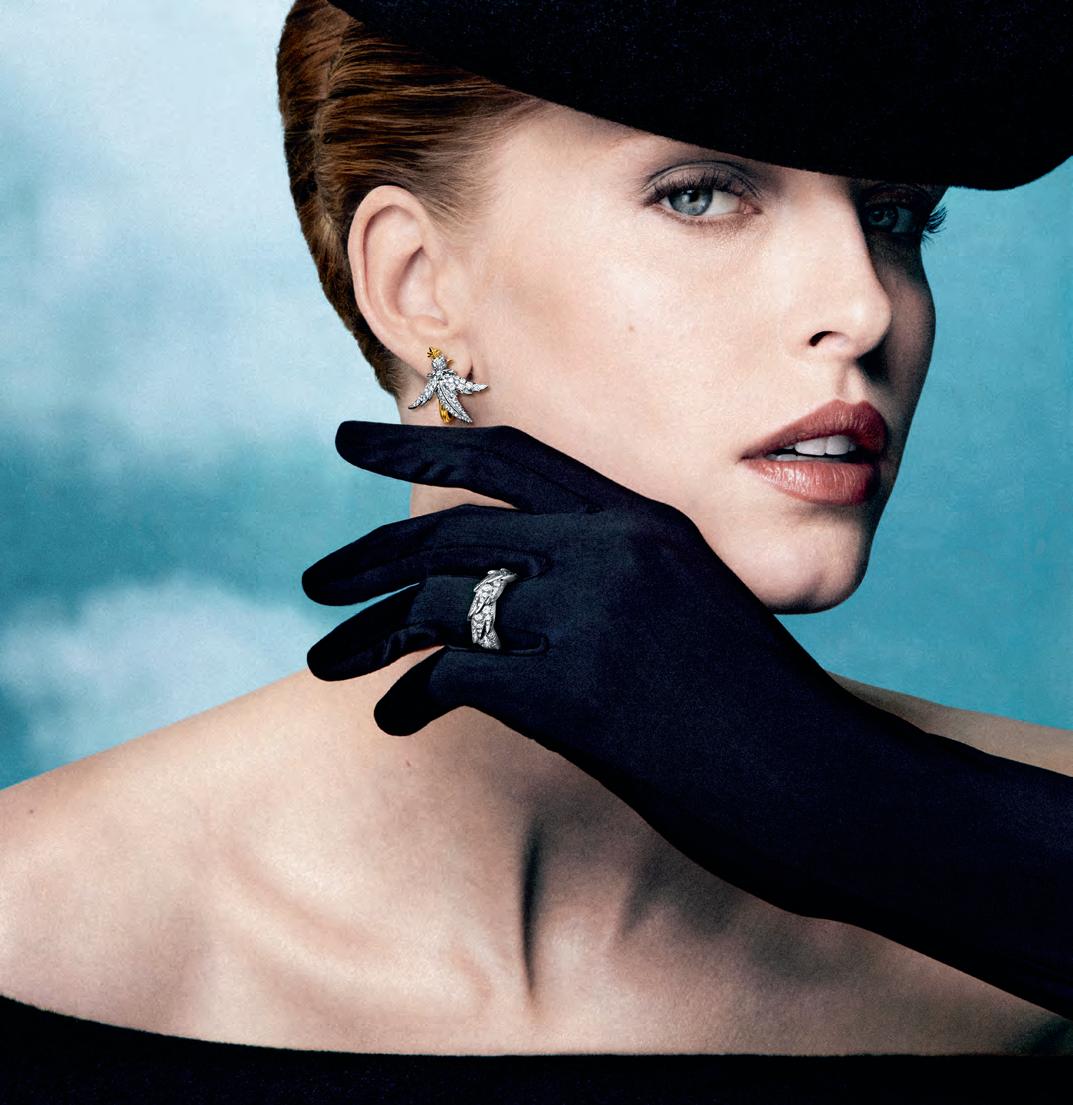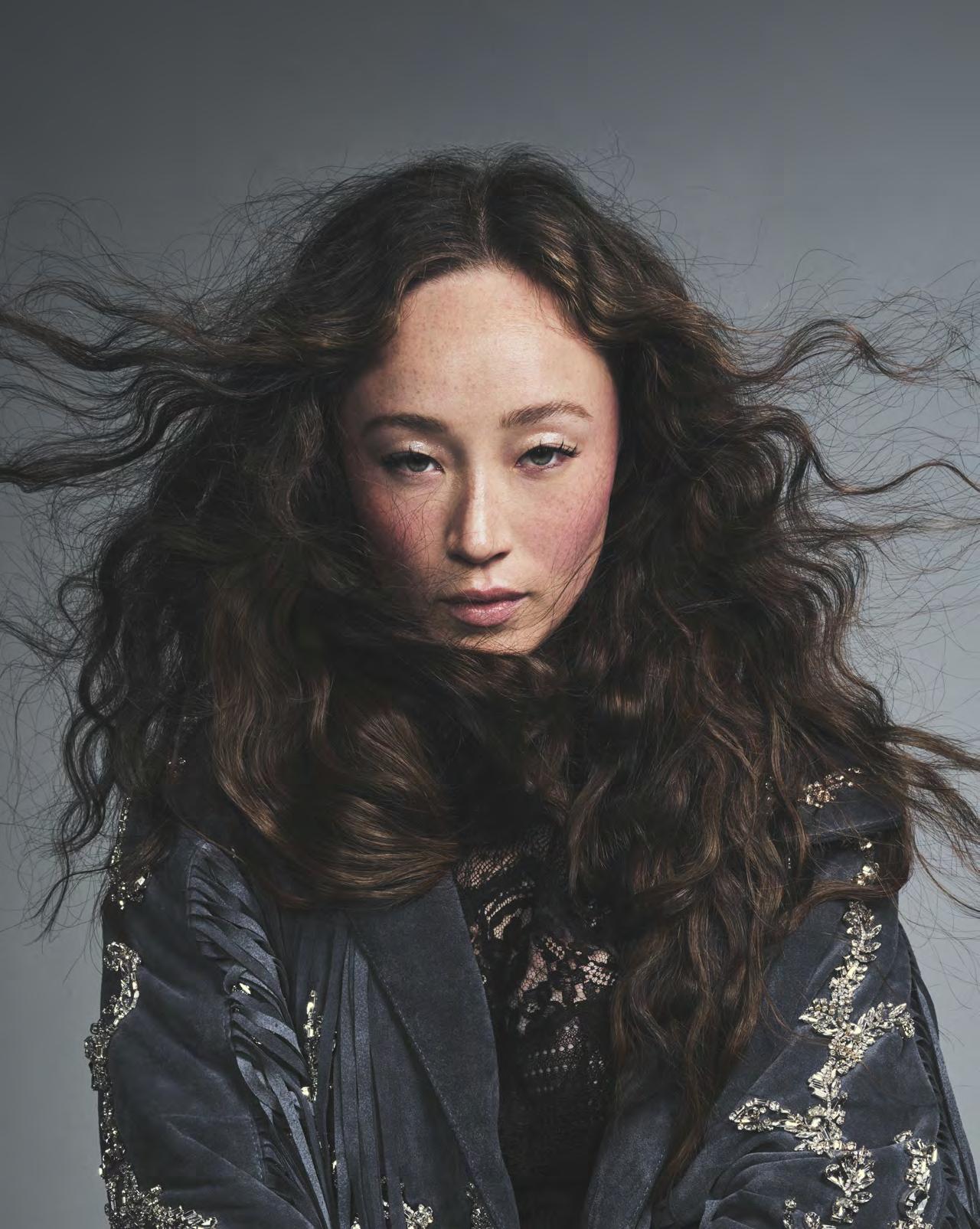
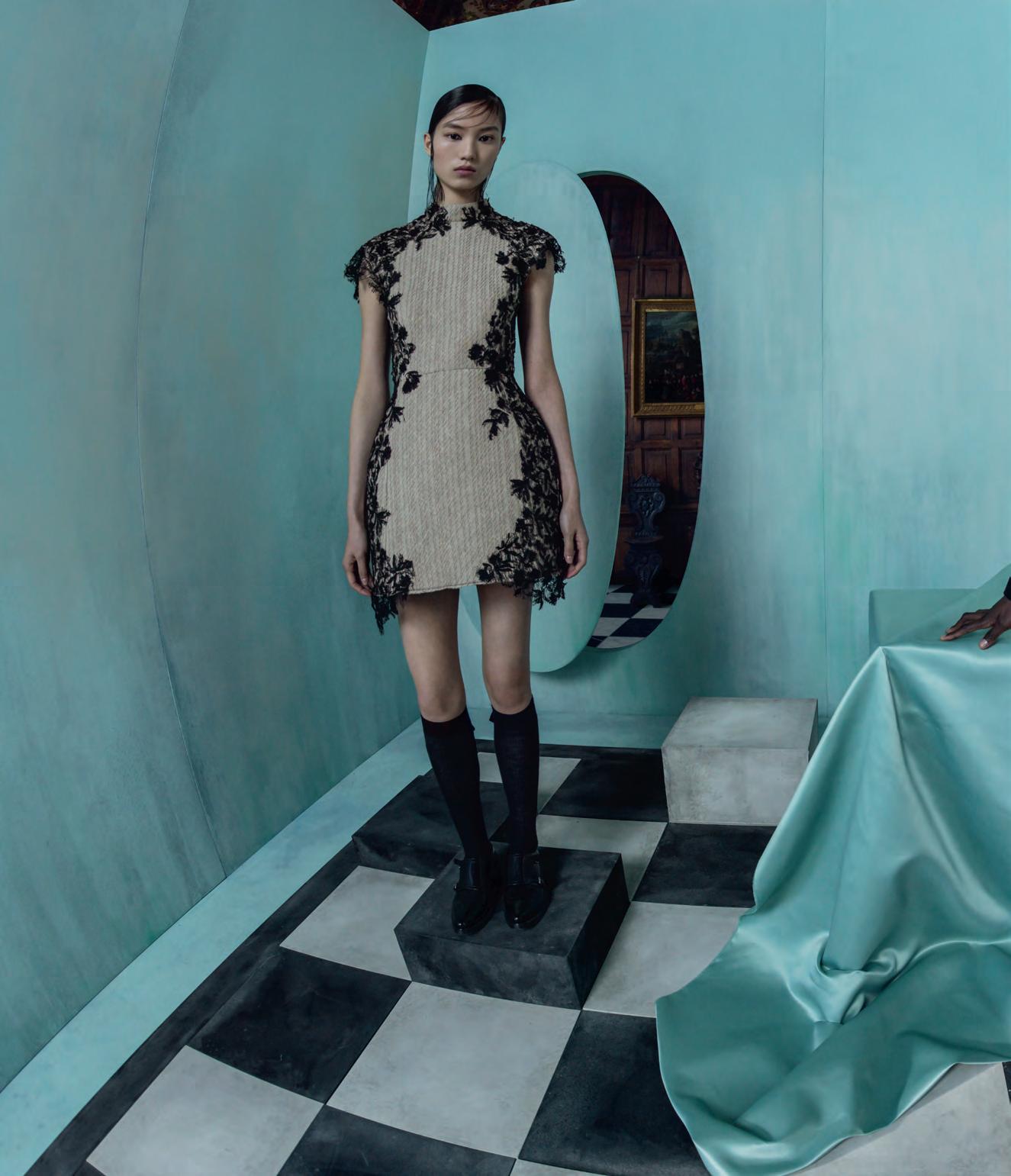



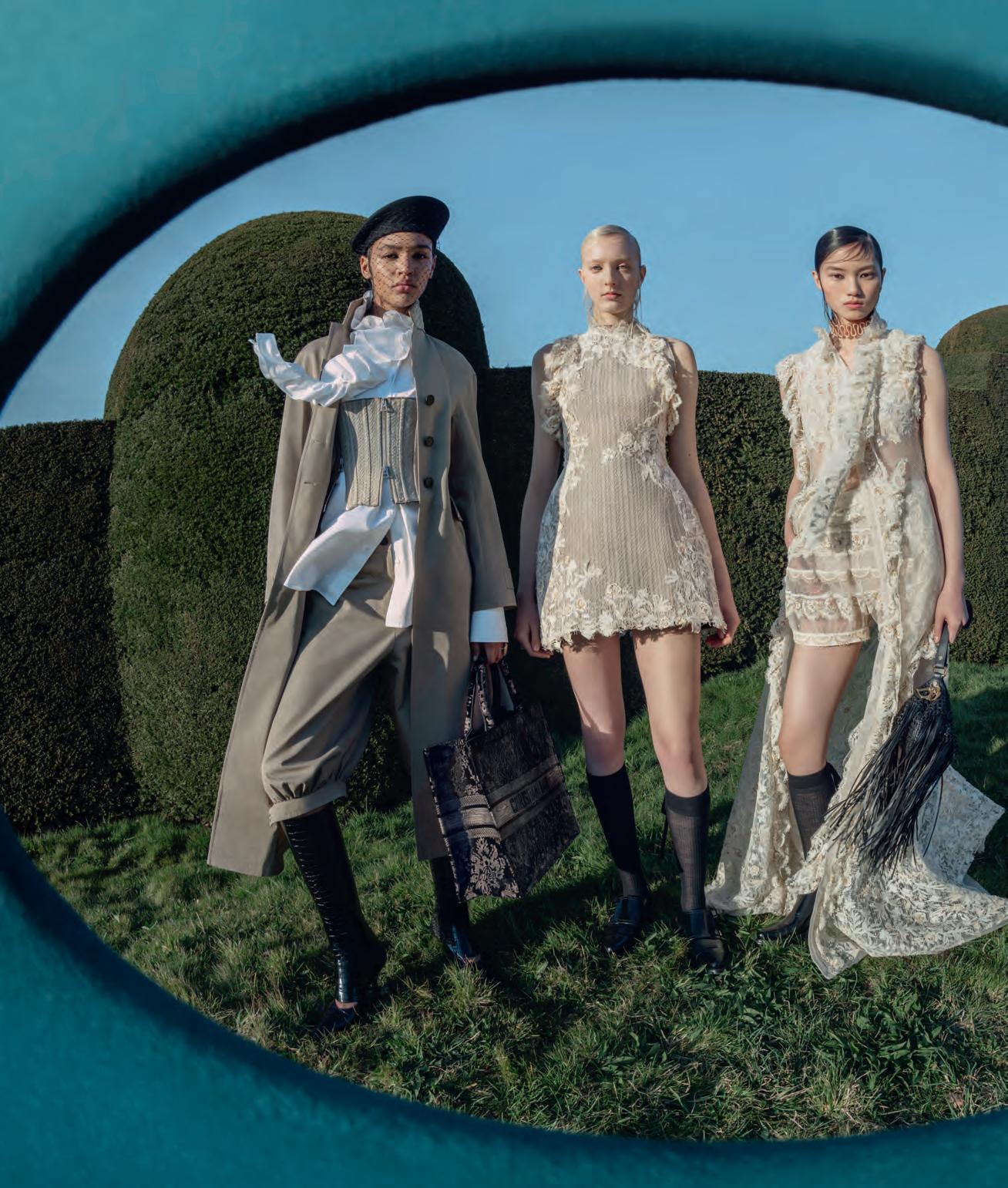
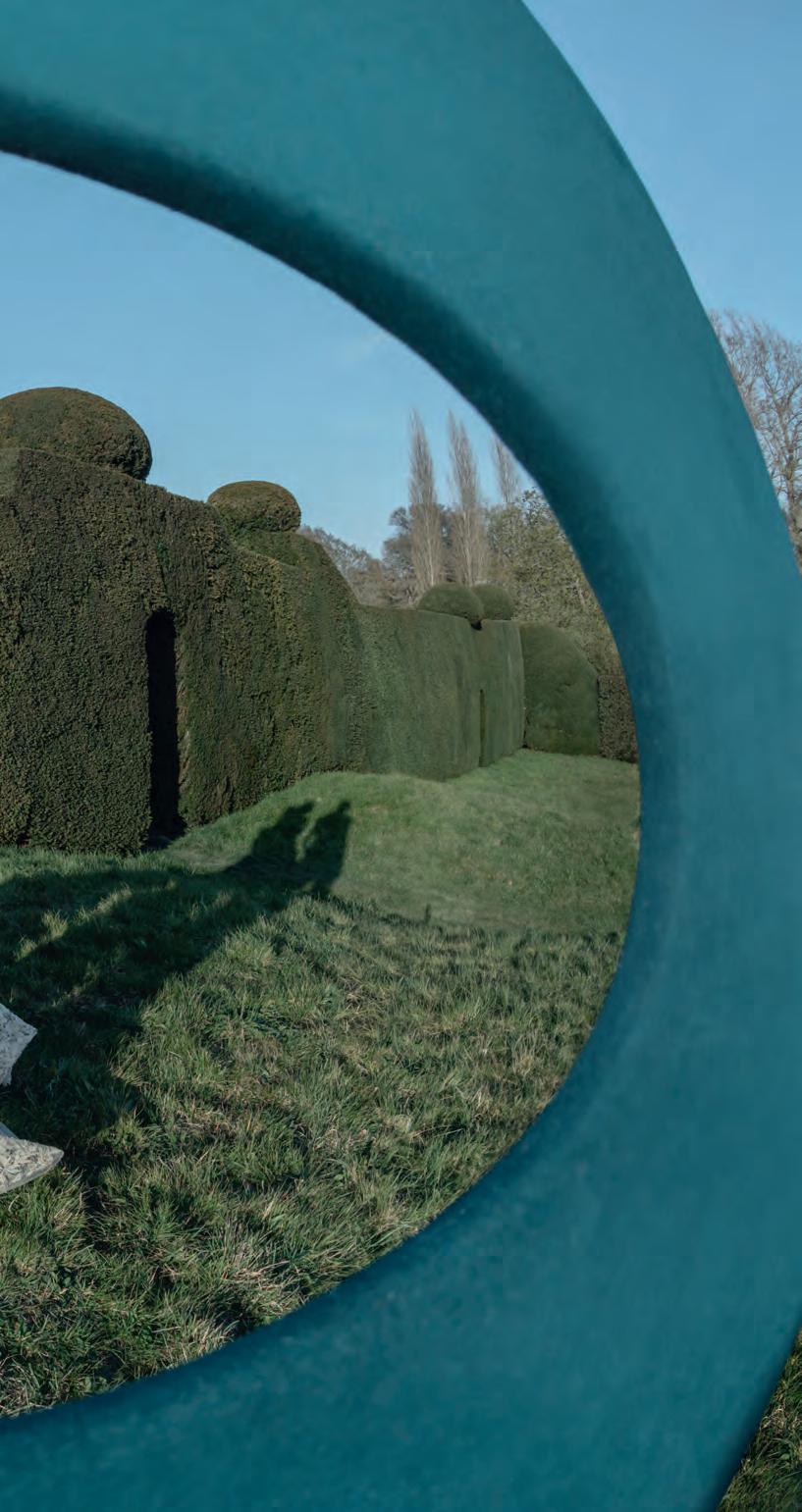


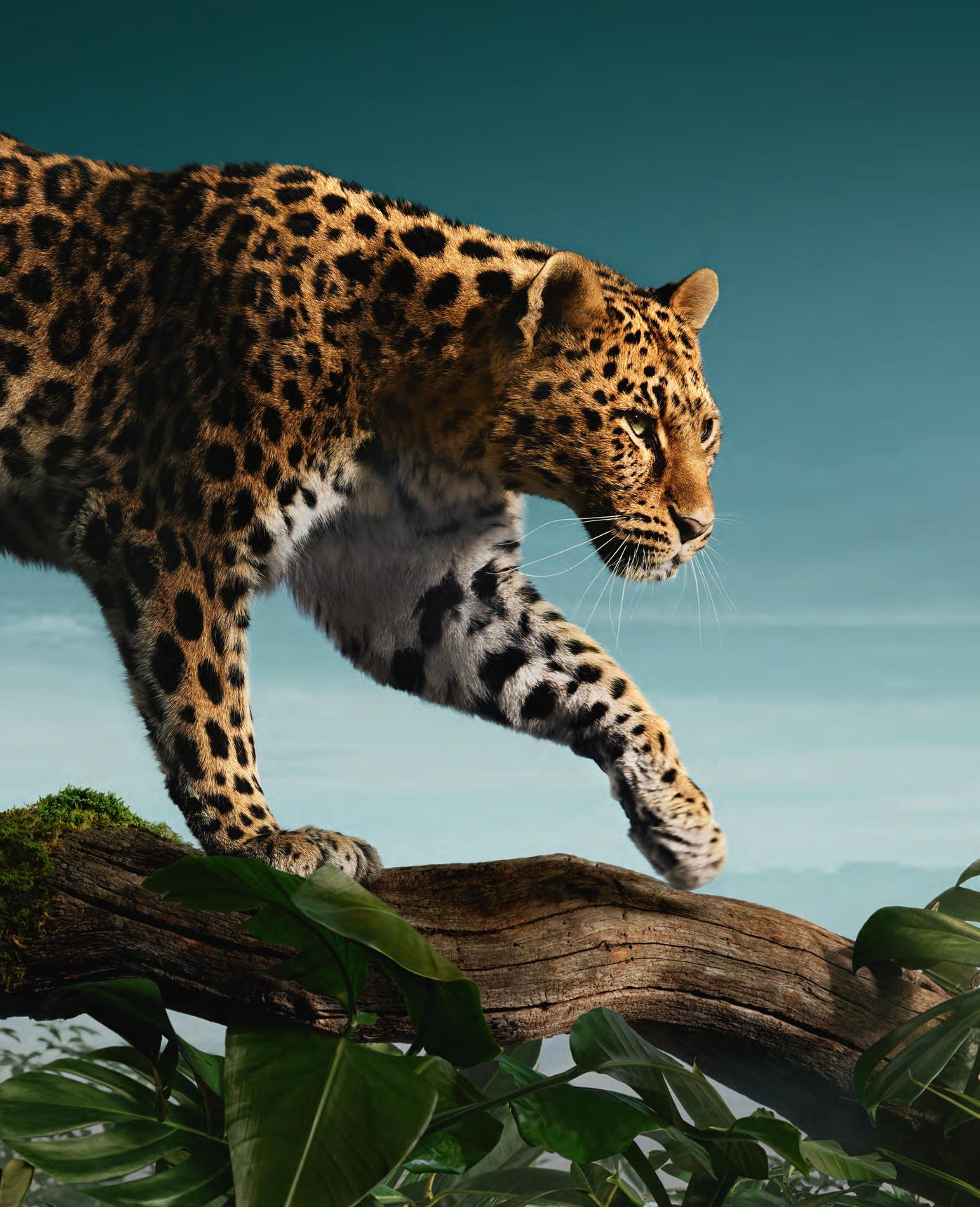

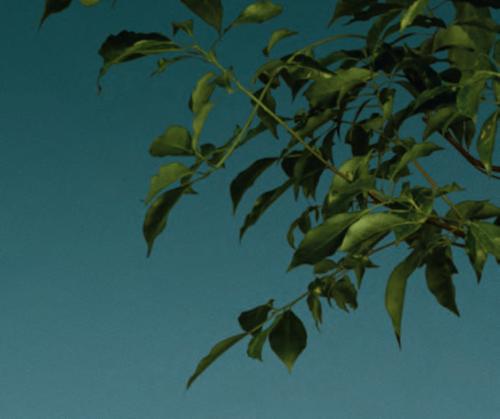
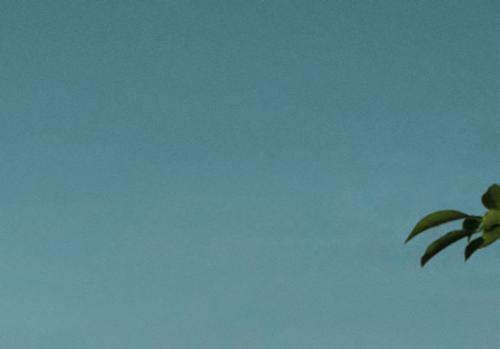




















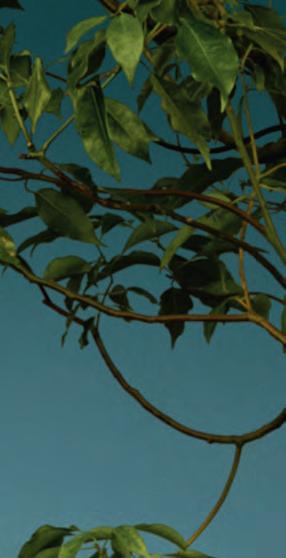










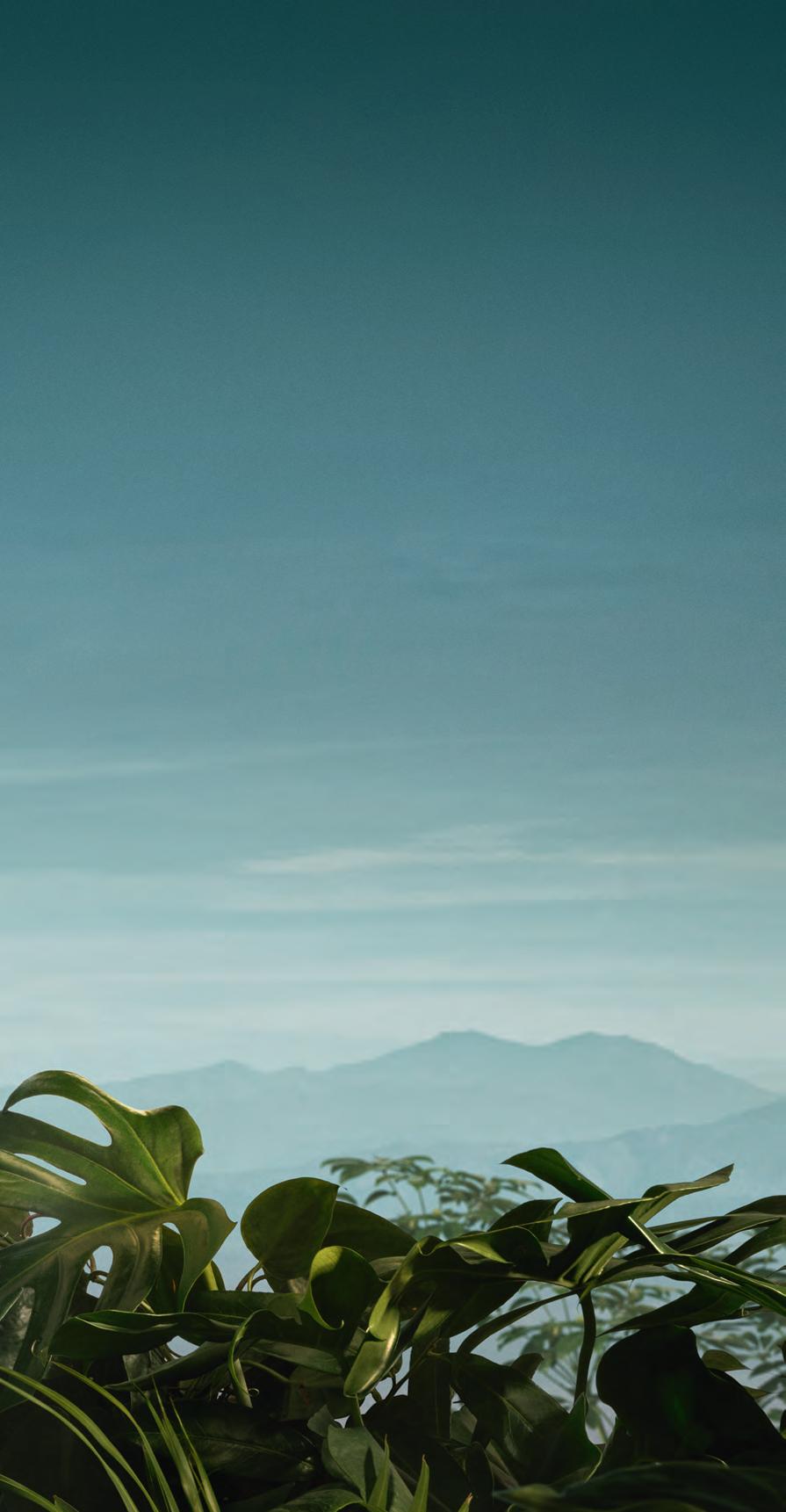




























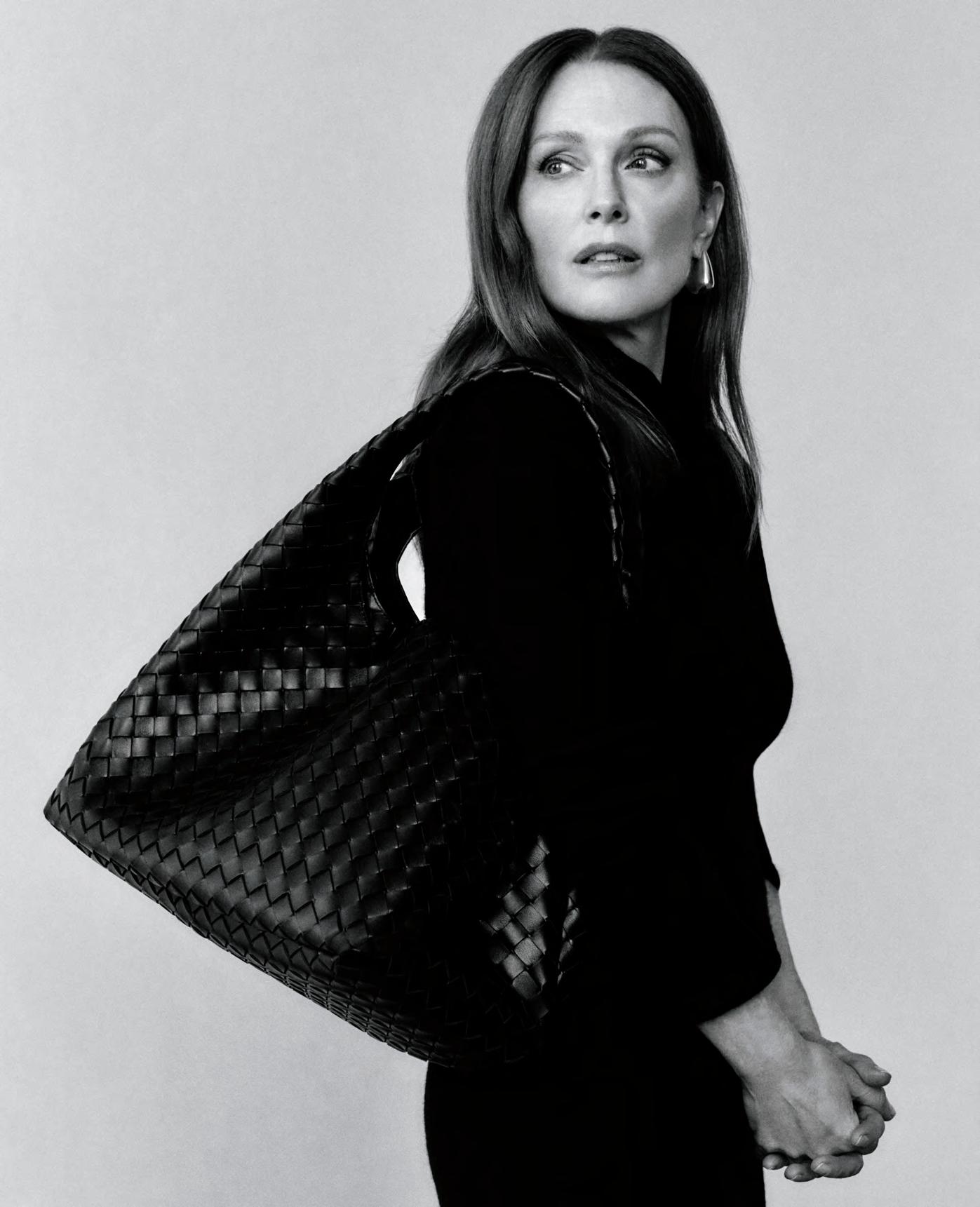


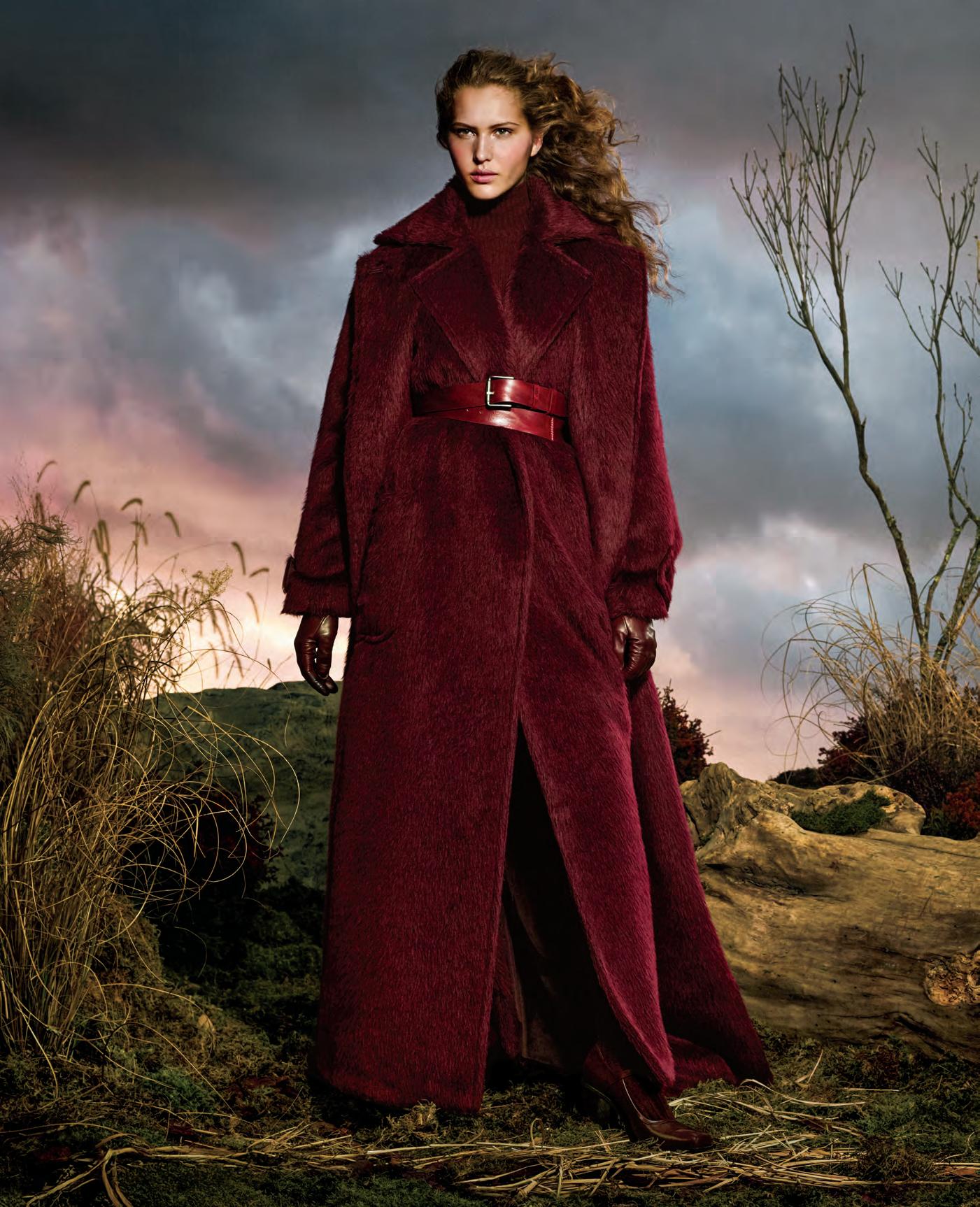
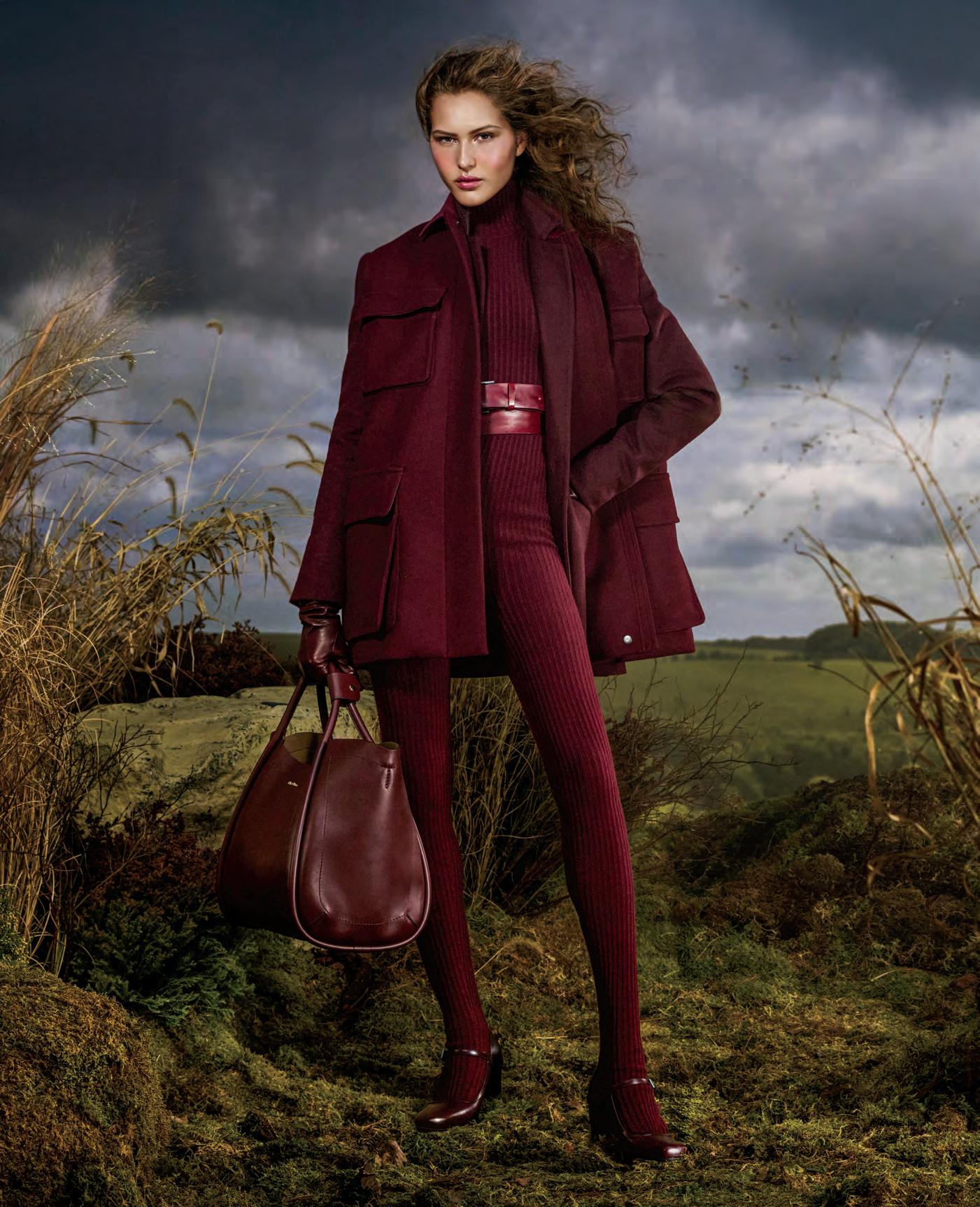
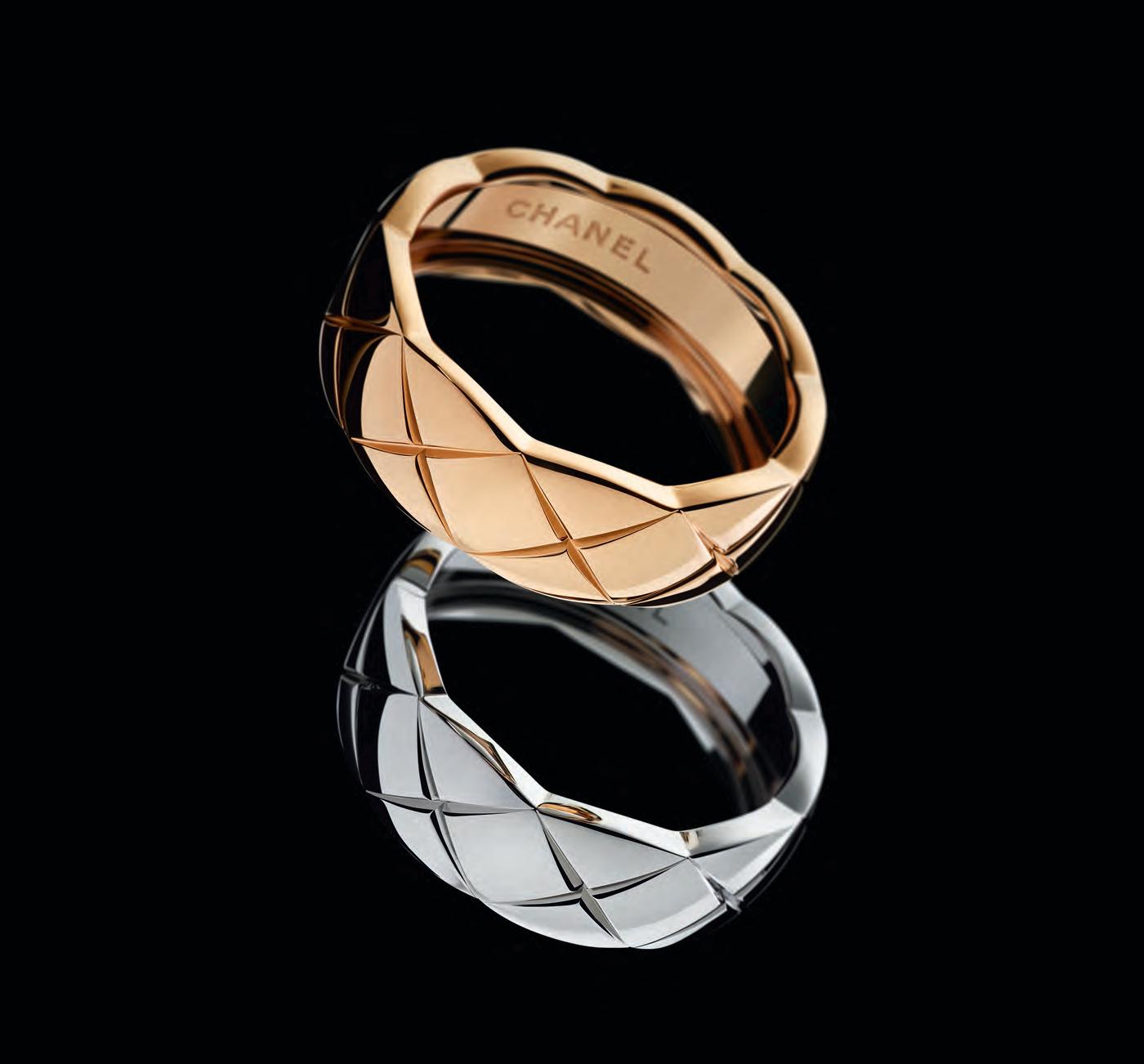
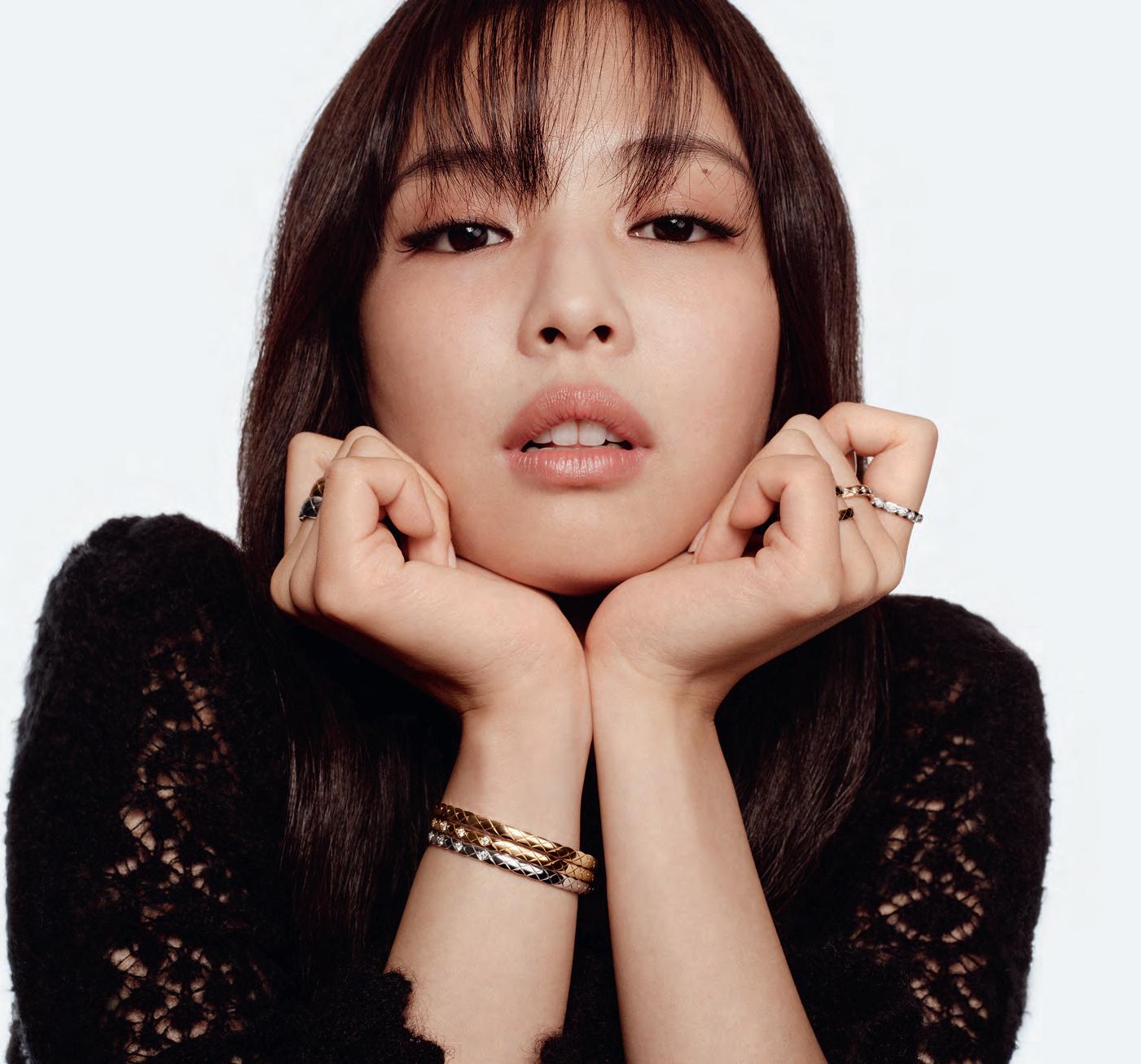
SOME ENCOUNTERS YOU WEAR FOREVER RINGS AND BRACELETS IN 18K BEIGE GOLD, 18K WHITE GOLD* AND DIAMONDS.
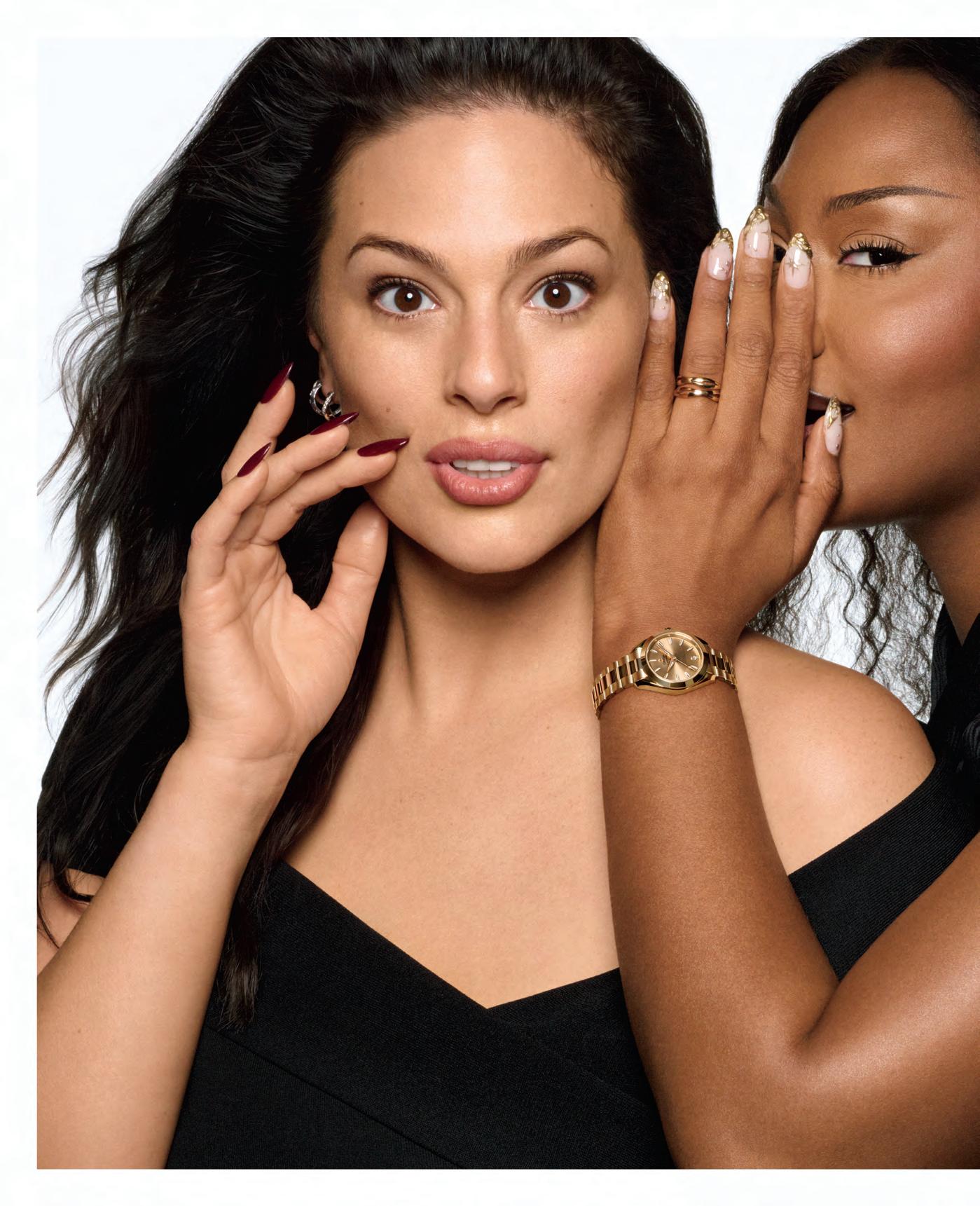
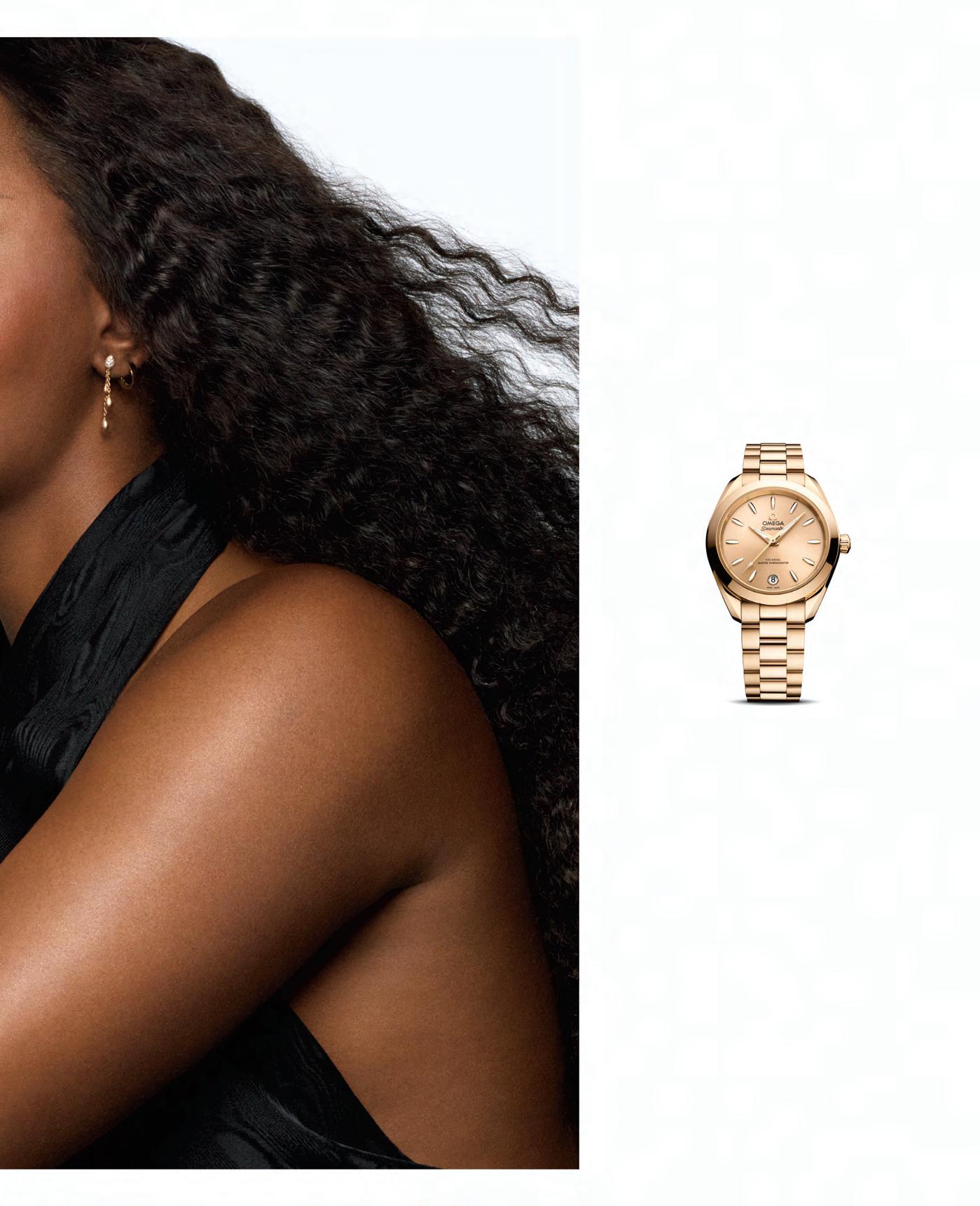

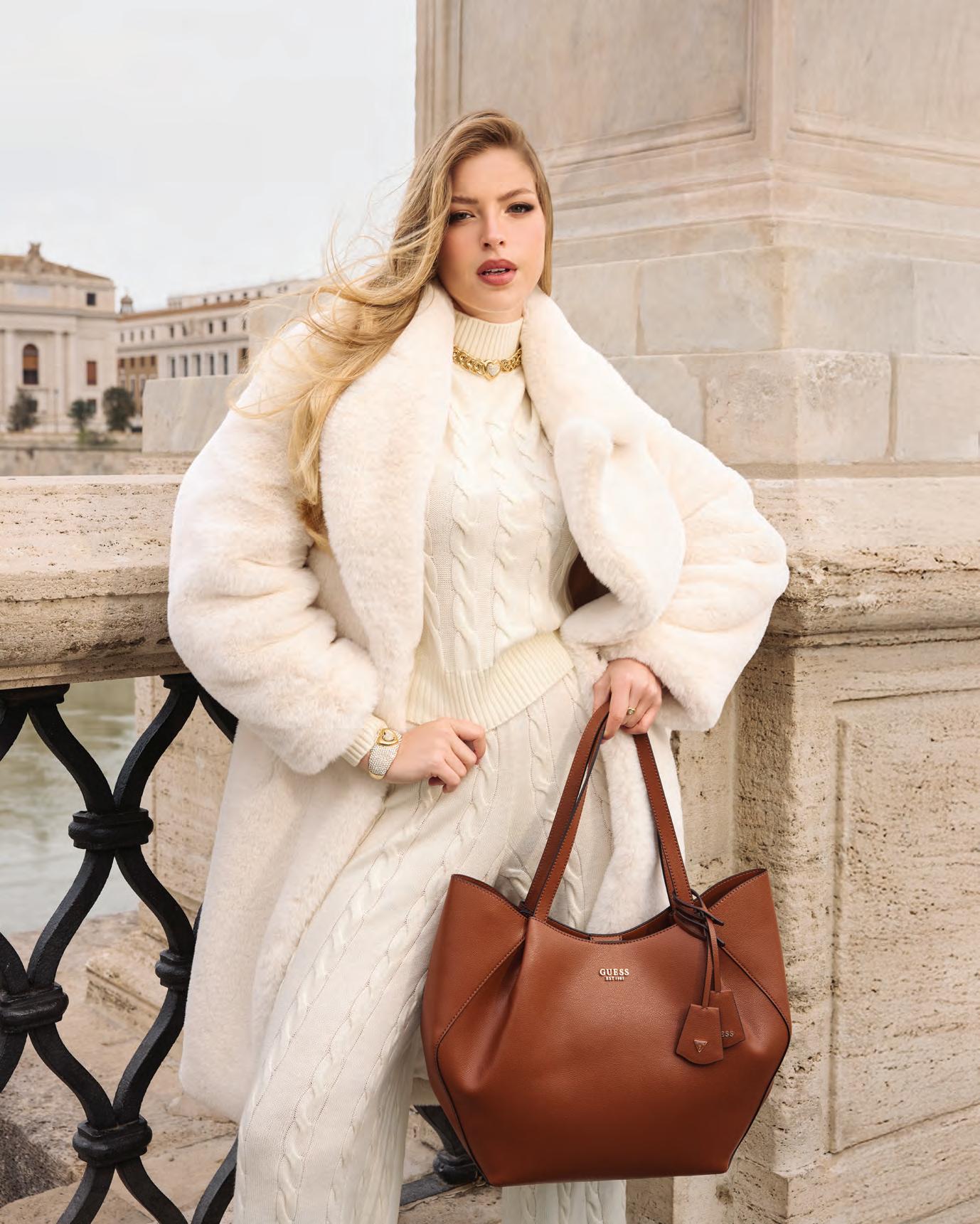

















































































SOME ENCOUNTERS YOU WEAR FOREVER RINGS AND BRACELETS IN 18K BEIGE GOLD, 18K WHITE GOLD* AND DIAMONDS.




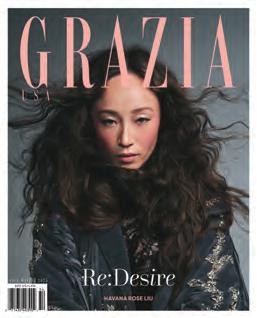
Freed From Desire
This season, the arts are an exploration of eccentricity, agency, and freedom.
It’s In The Bag
A purse that can actually hold all your belongings? How novel. Practicality never looked so desirable.
Hot List
This season’s most adored
Breakfast At Seaside
Tiffany & Co.’s Blue Book Collection takes us on a surreal journey where the sparkle rivals the surf.
Time For A New Look
Omega’s latest release reimagines a legend with a new size, fresh movements, and a lineup that’s as vibrant and versatile as the women who wear it.
Made In Mahattan
Loro Piana honors its New York heritage.
Vive la Difference
Amidst the wave of tech-driven beauty advancements and the mainstreaming of our desire for them, have our collective aesthetic goals shifted to an “I’ll have what she’s having” approach?
Little Luxuries
The hottest new bag charm is a $485 logo case for your makeup.
The Greats
Gwen Flamberg strongly suggests a few statementmaking power players for the season.
On the cover: Dolce & Gabbana coat, top, dolcegabbana.com. Opposite page: Louis Vuitton dress, 866 VUITTON; Pierre Mantoux tights, pierremantoux. com. Fawn Rogers, The World Is Your Oyster, Video Still #14, 2021 (Courtesy Courtesy of the artist and Wilding Cran Gallery.)
Joan Juliet Buck
The wild desire for fashion gifts.
Bottoms Up!
You may not know her yet, but Havana Rose Liu is about to be the name on everyone’s lips.
Chanel High Jewelry
Reach for the stars, and if you fall short, you may land on the clouds.
Where For Art Thou Libido?
Once upon a time I wanted to have sex constantly; nowadays, not so much.
Shine On
Nothing signals a siren’s call quite like a high-beam sheen.
Shaping Desire
Centuries before the algorithm, Marie Antoinette proved fashion’s greatest power is making us crave the unexpected.
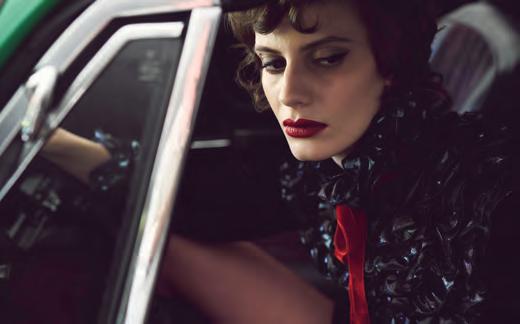
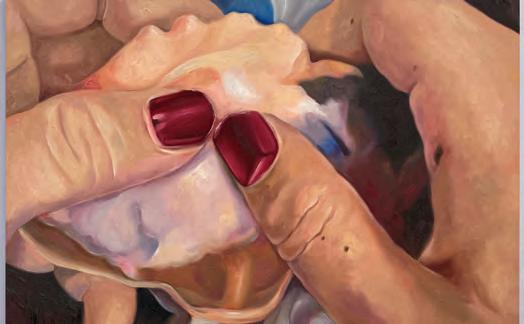
The Discreet Charm Of The Bourgeoisie
A study in contrasts: 1960s rigor softened by whispers of intimacy.
The Last Romantic
Retrace the scenes where the affair ended in the clothes that would make them never forget you.
It’s All Fun And Games
Fashion doesn’t always need to be so serious. Lighten and brighten up for fall.
Gothic Romance
A jolt of hard-edged glamour is
Villa Ardore: A Tuscan Passion Project
Inside a 500-year-old farmhouse estate in Chianti, where history, design, and heartfelt hospitality converge.
Carlo Cracco, Unfiltered
Italy’s no-nonsense chef talks seduction, risotto–and why ribs taste better with your hands.
Story Of “O”
The sexiest food of all may also be the most comforting. Fiorella Valdesolo considers the oyster.
Kitchen Porn
Forget Pornhub, Gen Z women are lusting after the perfect pink cookware.
Homebody
Kelly Wearstler has designed hip hotels and the houses of A-listers. But how does she approach her own space? A Presto!
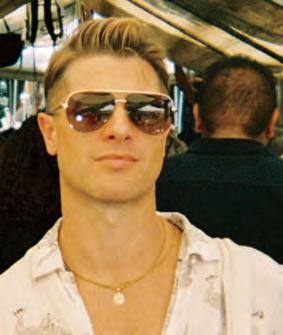
Photographer and director Cully Wright captures everything from campaigns to fashion editorials on 35mm film for clients like Dolce & Gabbana and Adidas Originals. He also: rides horses, reads tragically romantic novels, and makes cool shit with cool people. Exhibited by Dazed Media, he’s repped by Anderson Hopkins in NYC and lives in Los Angeles with his dog, Ben.

New York-based hairstylist Lacy Redway studied at The Aveda Institute in Manhattan before her career took off. Redway’s proficiency with all hair textures and her magnetic personality has earned her an esteemed roster of clients, from Tessa Thompson to Hunter Schafer, Sarah Paulson to Alicia Keys, Coco Gauff to Priyanka Chopra.
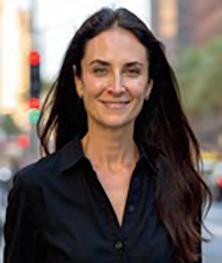
Casey Brennan has dished on food, travel, and lifestyle for GRAZIA USA since 2021. A New Yorker turned Miami local, she soaks up the sunshine with her family and mini dachshund, Chino—and is always on the lookout for her next great destination.
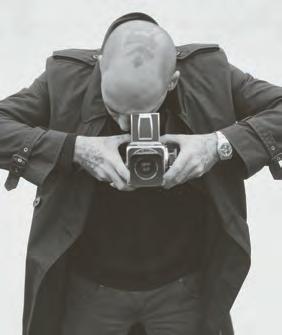
Simone Falcetta studied architecture in Milan and Madrid. Photography turned into a profession after meeting photographer Alberto García-Alix. He built his career living in cities including Paris, New York, and London, collaborating with leading international brands and magazines. Beyond the camera, or what he calls “spying through a keyhole,” Falcetta is a tattooist, using the same eye that defines his photography.
Joan Juliet Buck Cultural Critic
Shelby Comroe Fashion Editor
Marshall Heyman Cover Editor
Aaron Rasmussen Features Editor
Daniela Sola Managing Director
Marly Graubard Chief Revenue Officer
Advertising
Sara Di Nunzio International Advertising Manager, Reworld Media Italia
Joseph Errico Editor & Chief Creative Officer
Christoph Radl Art Director
Giacomo Pasqualini International Art Director
Contributors
Casey Brennan Features Editor
Gwen Flamberg Beauty Director
Cynthia Martens Editor At Large
Roxanne Robinson Special Projects Editor
Andrea Volbrecht Producer
Digital
Karli Poliziani Digital Director
Carla Vanni Editorial Advisor
David Evan Ruff Social Media Manager
Stéphane Haitaian Director & Publisher
Tanya Amini Publisher At Large
Cherryl Llewellyn Sales Director, Watches & Jewellery
International
Digital
Reina Fontenoy Operations Director Reworld Media
Katia Ciancaglini Head Of Digital Reworld Media Italia

EMAIL CONTACT@GRAZIAUSA.COM
Alison S. Cohn Style Features Editor
Alyssa Haak Copy Editor
Amanda Peters Editorial Consultant
Fiorella Valdesolo Culture Editor
Yulia Petrossian Boyle Strategic Planning & Advisory
Priya Nat Sales Director, Home & Luxury
Marketing
Francesca Brambilla
Marketing Director Reworld Media Italia
Printing by Quad; Distributed by CMG Grazia USA (www.graziamagazine.com; UPC 0-74820-40390-7) is published biannually by Reworld Media US Inc. 122 East 42nd Street, 18th Floor, NY, 10168 USA. Reworld Media US is a branch of the Reworld Media Group
Grazia is a trademark registered and owned by Reworld Media Italia Srl. For further details, please write to graziainternational@reworldmedia.com © [ 2025 ] Reworld Media Italia Srl. All rights reserved. Published by “Reworld Media US” with the permission of Reworld Media Italia Srl. Reproduction in any manner in any language in whole or in part without prior written permission is prohibited.
This past spring, longtime contributor Aaron Rasmussen pitched me a story that landed with such force, it reshaped how I plan to edit this magazine from here on out.
The premise seemed charmingly familiar: a Los Angeles couple, dreaming of their next chapter, buys and lovingly restores a 16th-century Tuscan farmhouse. I mean—we’ve all seen that movie... Diane Lane, sun-drenched terraces filled with plenty of pasta and wistful sighs. But Aaron’s version was different. Deeper. This wasn’t about escapism—it was about desire. The desire to reconnect with their Italian heritage. The desire to create something lasting – to pour love, time, and intention into every beam and brick. The desire to make not just a beautiful place, but a home that invites others to imagine their own next chapter.
explore what it means to be one of Hollywood’s most desired new talents (pg 74). With seven major projects on the horizon, Liu is seemingly “the girl with the most cake.” But don’t be fooled: She’s no algorithm-engineered starlet. Her intelligence and authenticity shine through every frame—and that’s not something you can fake, no matter how good the lighting is.
Which brings me back to Aaron’s story—and to something that’s been on my mind a lot lately: authenticity. In a world leaning harder into filters, AI, #fakenews, and data-driven everything, we’re being served a constant feed of what the algorithm thinks we want. And we’re double-tapping it all the way to homogeny. The Kardashian-ification of beauty is just the beginning. I reject this.
This really struck something in me. So, I called every one of our contributors and said, “We’re doing a Desire issue.” I wanted to know: What moves you? What consumes your thoughts? What do you crave so deeply it borders on obsession?
What came back wildly exceeded my expectations. Writer Fiorella Valdesolo returned with so many delicious notions of desire I could barely narrow them down—but her ode to her long-lost libido? Unmissable (pg 98). Naturally, we couldn’t talk desire without talking aphrodisiacs, so Fiorella penned a piece pondering the sensual power of the oyster (pg 186). Cultural critic Joan Juliet Buck tackled the desire for designer fashion in a way only she can, with her signature wit and wisdom (pg 70).
Can we talk about our radiant cover star? Marshall Heyman sat down with Havana Rose Liu to
And I’m rethinking how we make this magazine—with you, our reader, at the heart of it. Like the couple in Tuscany, I’m reaching back to our roots. Grazia was born in Italy in 1938, the only fashion magazine created there that still exists today. Now in 23 countries, it’s time for our U.S. edition to fully embrace what makes us us
Think: Craftsmanship. Culture. Family. Food. And that unmistakable, inimitable feeling you get from a well-poured spritz and a perfectly thin slice of prosciutto.
Over the next few months, you’ll notice a few subtle changes to Grazia. We’re not becoming something new—we’re becoming more of who we already are. We’ll continue to bring you stories that delight, that inspire you to dream, and that stir something deeper.
Call it longing. Call it passion. Call it desire We’re just getting started.

Joseph Errico Editor & Chief Creative Officer
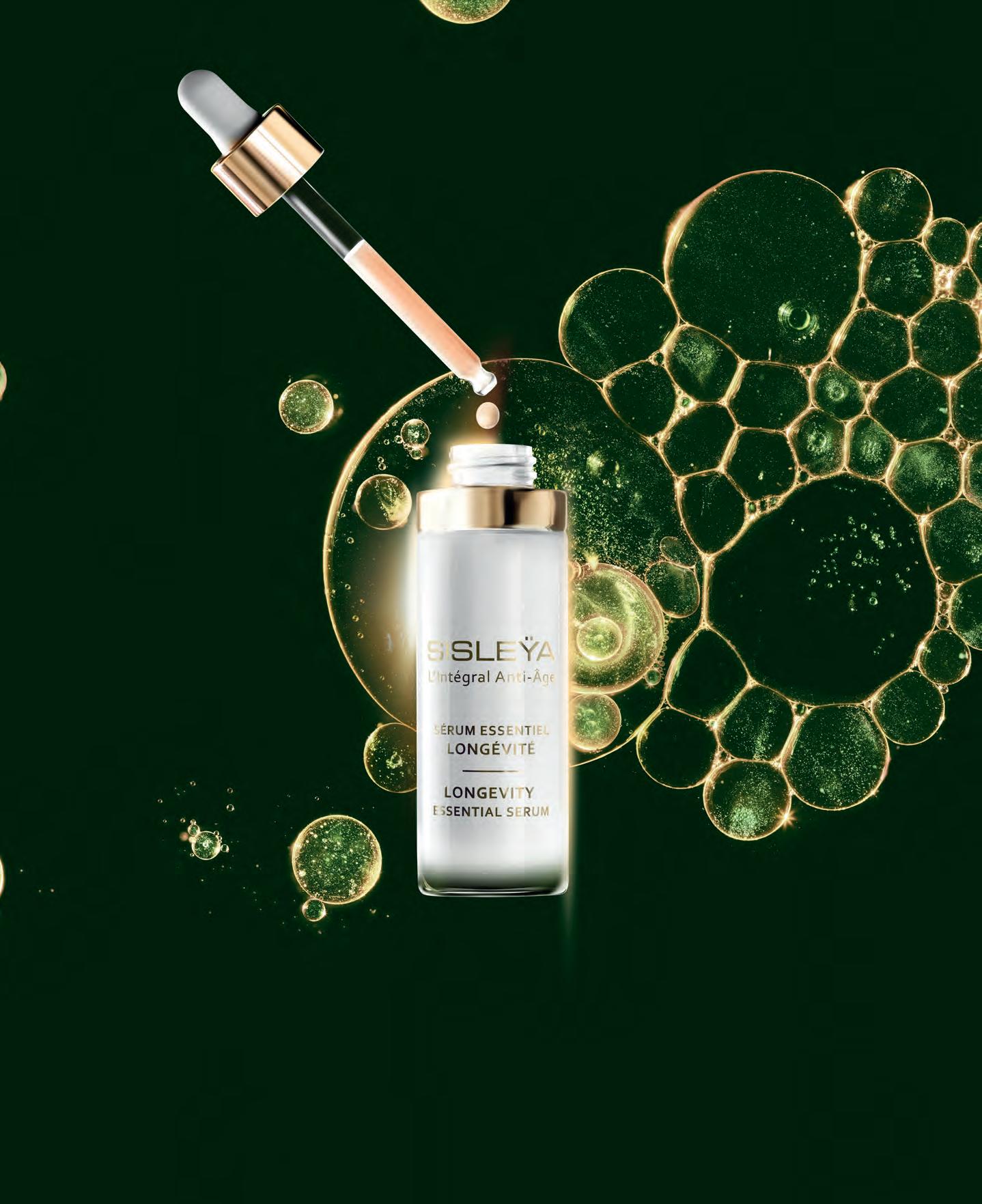
Helps correct established visible signs of aging: wrinkles, loss of firmness and dull complexion. Targets new signs of advanced skin aging: dryness, thinning and uneven skin tone.
A new revolutionary anti-aging solution to target signs of advanced skin aging. Bringing new vibrance to skin.
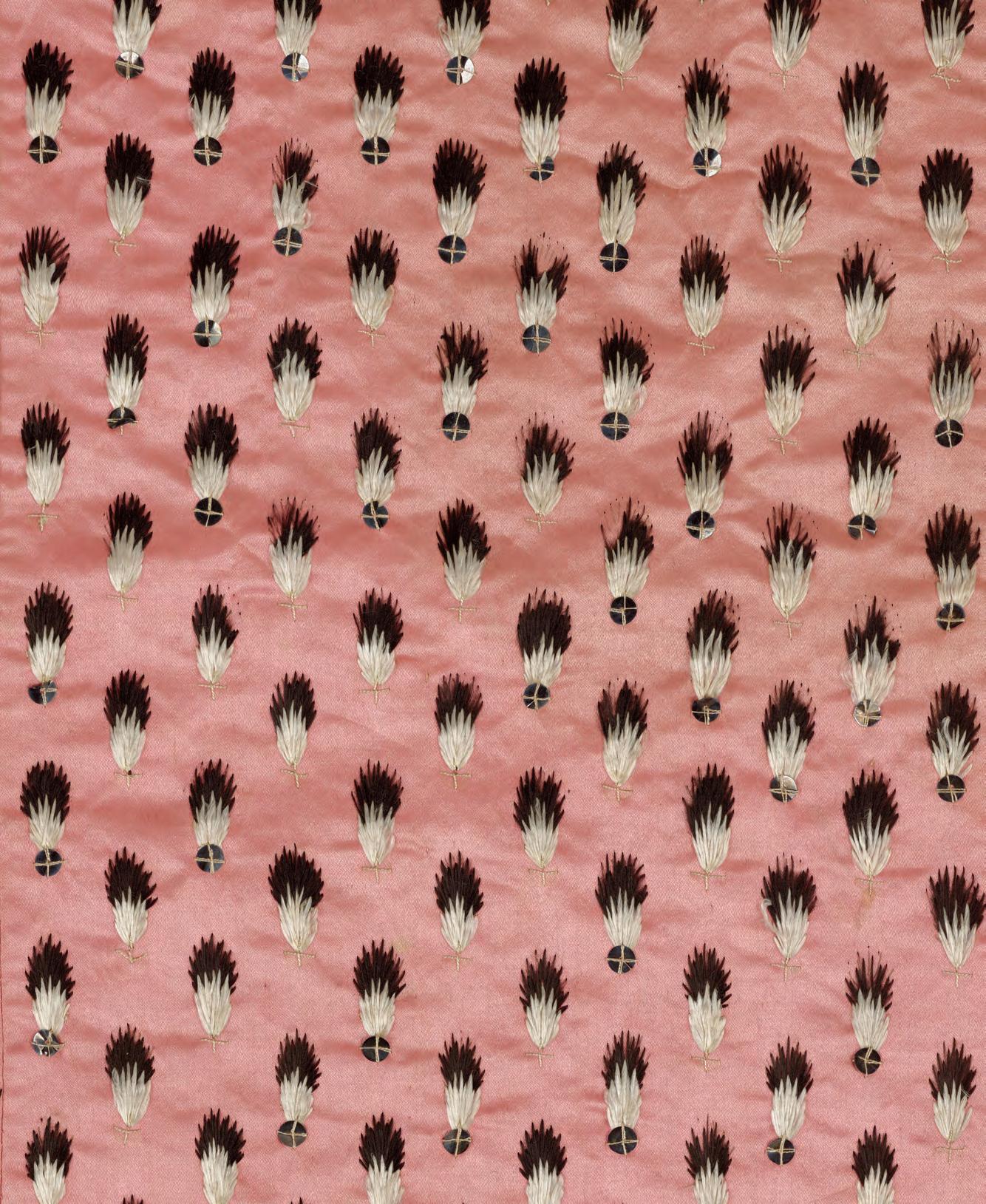
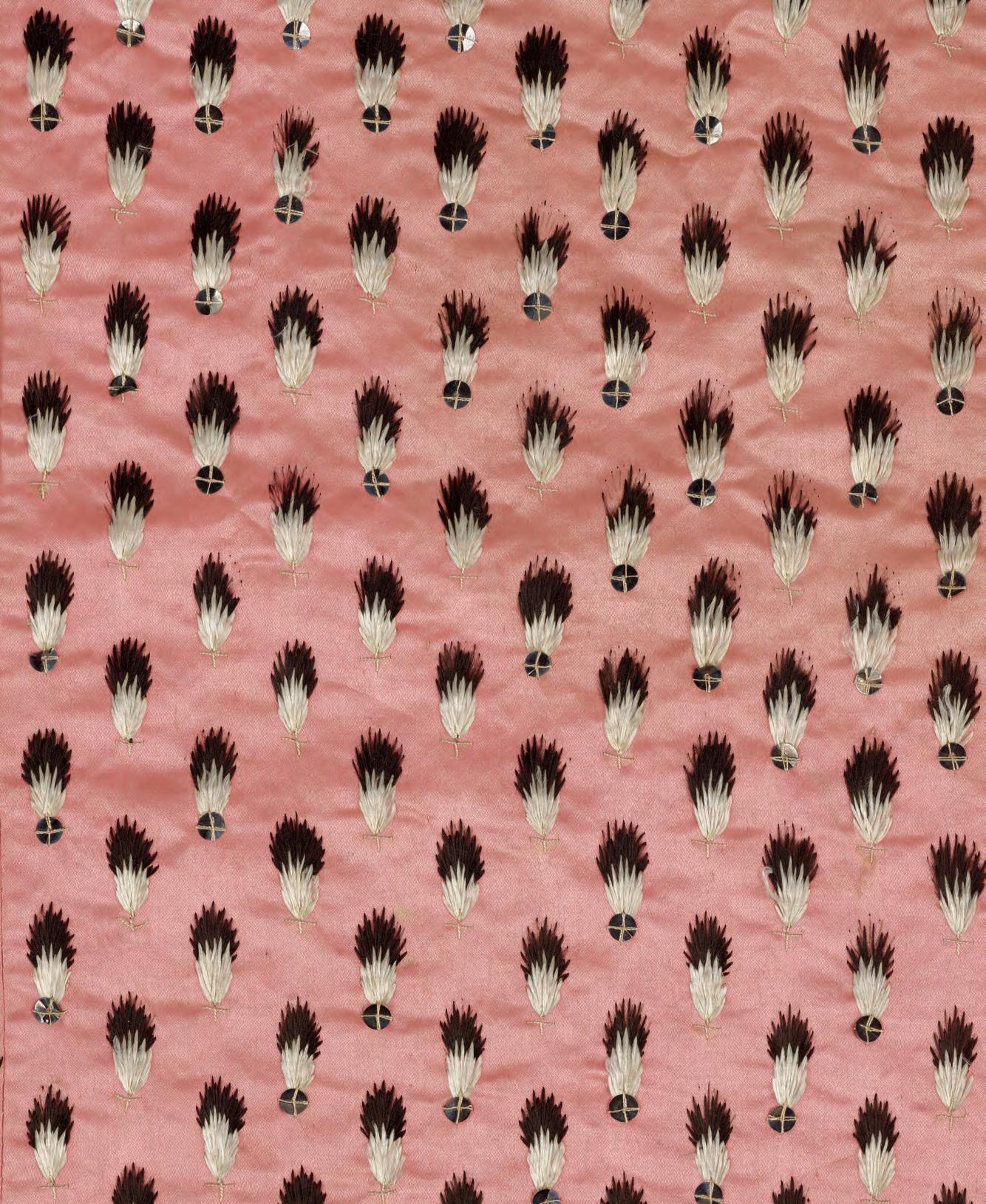
Benvenuti nel mondo di Grazia! — seen through the lens of art, fashion, beauty, and everything that sparkles. All the names, moments, and must-have items currently shaping the zeitgeist. If you know, you know — and after this, you will.
Mind and
senses purif ied? We’ve got you
covered. This season, the
arts are an explorat ion of eccentricity, agency, and freedom.
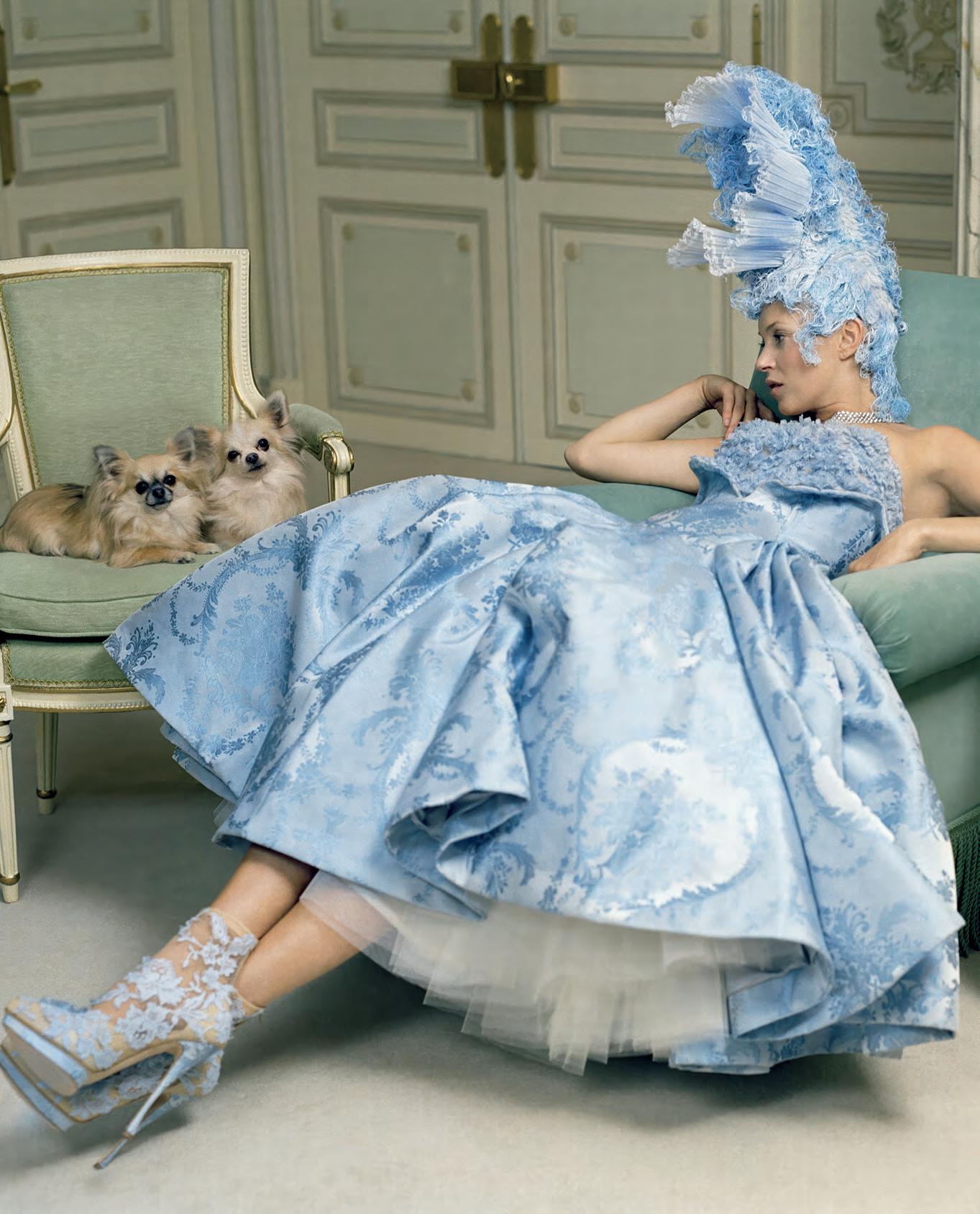
FREED FROM DESIRE
Words Cynthia Martens
In 1791, French playwright and activist Olympe de Gouges published the Déclaration des droits de la femme et de la citoyenne, or Declaration of the Rights of Woman and the Female Citizen, affirming that “Woman is born free and remains equal to man in rights.” De Gouges, who also argued for the abolition of slavery, dedicated her treatise to queen Marie Antoinette, noti ng that “This revolution will only take effect when all women become fully aware of their deplorable condition, and of the rights they have lost in society.”
Widely portrayed as frivolous— and long associated with a du bious zinger about the poor eating cake—Marie Antoi nette may not immediately inspire sympathy; yet the ill-fated queen once lobbied for the right to own property in her own name (the Château de Saint-Cloud, natch).
In a bizarre twist, both Marie Antoinette and de Gouges were guillotined within less than a month of one another at Place de la Rév olution, now Place de la Concor de, in Paris. Women’s rights, and, indeed, human rights generally, have come a long way since revolutionary France, but the world remains deeply unequal and frequently hostile to individuals who don’t conform to social norms. This fall and winter season, we’re diving into books, films, and exhibits that are an ode to personal quirkiness and freedom.
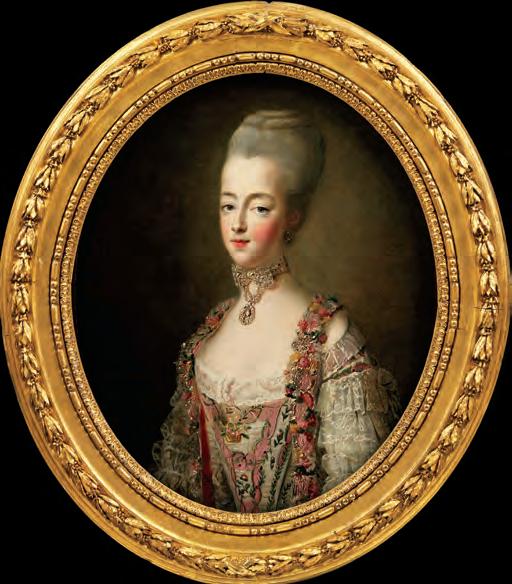
On the lavish side, from September 20, 2025, through March 22, 2026, the V&A South Kensington is presenting Marie Antoinette Style, an exhibition sponsored by Manolo Blahnik and featuring assorted objects used by the notorious queen, some of which are exceptional loans from the Château de Versailles. Visitors can see silk slippers and jewels, as well as a dinner service from the Petit Trianon and the embellished fragments of a court dress. The show will also include haute couture pieces from leading design houses and costumes from Sofia Coppola’s 2006 historical drama starring Kirsten Dunst, as evidence of the queen’s lasting impact on fashion.
“This is the design legacy of an early modern celebrity and the story of a woman whose power to fascinate has never ebbed,” noted curator Sarah Grant in a press statement, summing up Marie Antoinette’s persona as a “rare combination of glamour, spectacle and tragedy.”
V&A, South Kensington, London. September 20, 2025 — March 22, 2026
Jane Austen, a contemporary of de Gouges and Marie Antoinette, was more quietly revolutionary: a prolific writer, she explored the follies of human relations
Above: Portrait of Marie Antoinette, Queen of France, in a court dress. Oil painting by François Hubert Drouais, 1773
© Victoria and Albert Museum, London
Left: Kate Moss, Fashion: Sarah Burton for Alexander McQueen, Van Cleef & Arpels, and Julian d’Ys, The Ritz, Paris 2012. [photographs of Kate Moss at the Paris Ritz for Vogue US April 2012 issue] © Tim Walker
with a blend of empathy and humor, capturing the myriad ways in which sex and social class constrain personal autonomy. Though her works were published anonymously during her lifetime, James Stanier-Clarke, the Prince Regent’s librarian, knew Austen’s identity, and once “tried to tell her what she should write about next,” shared Lizzie Dunford, director of Jane Austen’s House museum in Chawton, the East Hampshire village where the author spent her final eight years.
Austen’s reply? “No – I must keep to my own style & go on in my own Way; And though I may never
succeed in that, I am convinced I should totally fail in any other.”
“Her faith in her own work, her confidence in herself as a writer is deeply inspiring,” Dunford mused. December 16 of this year marks the 250th anniversary of Austen’s birth, and the house museum has been in full swing all year. In December, Jane Austen’s Birthday Celebration Week will feature talks, tours, workshops, and other activities, including a virtual birthday party on the big day.
Fans of Mr. Darcy should take special note that this year is also the 30th anniversary of the BBC production of Pride and Prejudice starring Colin Firth and Jennifer Ehle, as well as three other iconic film and television adaptations of Austen works: namely, Sense and Sensibility starring Emma Thompson, the BBC’s Persuasion starring Amanda Root and Ciarán Hinds, and, of course, Clueless, the bubbly tribute to Emma set somewhere in southern California, with teenaged protagonist Cher Horowitz asking existential questions such as “Did my hair get flat? Did I stumble into some bad lighting? What’s wrong with me?” The Jane Austen House is celebrating each of these Austen interpretations in Austenmania!, an exhibition that runs through January 4, 2026.
As emphasized in Clueless, fashion is a language, a powerful expression of culture, social status, gender stereotypes and personal identity. In her newly released book Claire McCardell: The Designer Who Set Women Free, journalist Elizabeth Evitts Dickinson tells the story of American creative Claire McCardell, who, in her life as in her designs, upended conventions about how women should live.
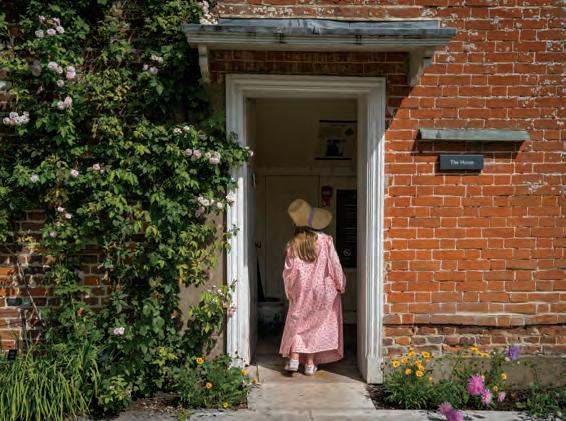
“I remember seeing Claire McCardell’s clothes for the first time and just being stunned that they were made in the 1930s and ‘40s, and I didn’t understand how it was that I didn’t know her name – even though I now understood that much of what I had in my closet began on her drafting table, that so much of what Claire McCardell either invented or pioneered laid the groundwork for American fashion as we know it today,”
Dickinson shared in an interview.
So grab a stack of Austen books and travel back to Regency England. For anyone new to the author, Dunford recommends starting with Pride and Prejudice. “It is bright, sparkling and has a cast of absolutely unforgettable characters that have gone on to have cultural lives of their own, far away from the pages of the novel. After that, Persuasion,” she suggested.
McCardell, who was born in 1905, fought for pockets, denim, and ballet flats. She embraced freedom of movement and clothing that did not contort the female form, but instead allowed women to participate more fully in life, taking pleasure in individual style without slavishly following trends. McCardell chafed against the long woolen stockings of early 20th century swimwear and the post-World War II corsets popularized by Christian Dior’s New Look (though the French designer ultimately was a great fan of McCardell’s sportswear). Trendsetters such as Lauren Bacall and Joan Crawford were partial to McCardell’s innovative designs, while artist Georgia O’Keeffe wore them rafting through Glen Canyon in Arizona. Once asked by a radio show host whether she believed the old trope about suffering being a pre-
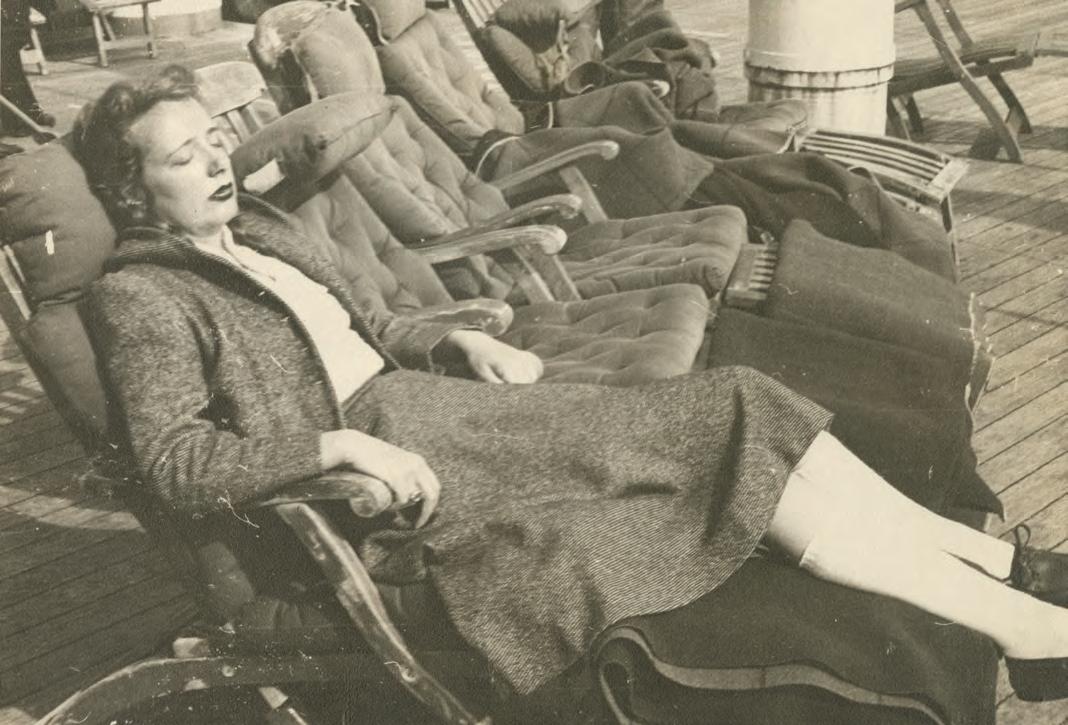
requisite to beauty, McCardell responded: “I certainly don’t. When you’re uncomfortable you are likely to show it. That’s why I make even my most formal dresses as comfortable as a playsuit. Clothes should stay put, too, so there is no temptation to be forever pulling, pinching, and adjusting them which spoils your own fun and makes everyone else fidgety. You never look really well-dressed when you’re over-conscious of what you have on. Comfort should be a keynote of style.”
“I didn’t want this to just be a fashion history. I wanted this to locate Claire McCardell within the lineage of women who were really working to serve women’s autonomy and freedom,” said Dickinson. “She believed that clothes were important to the
“Clothes are not apolitical; clothes are a bellwether of society. Clothes are a signifier of cultural intention.”
way in which a woman could live a life, and she designed to that truth. And so a lot of her rebellion, and a lot of her ingenuity, and the ways in which she revolutionized fashion, were rooted in this goal, which is that women should be able to lead full lives, that they should be able to have jobs and families and be full participants in public life. And she didn’t grow up at a time when that was true.” Dickinson also said McCardell’s experiences are a timely reminder of the misogyny surfacing in the current political climate, which she believes is reflected in the re-emergence of corsets on celebrities such as Sabrina Carpenter and Lauren Sánchez Bezos, whose Dolce & Gabbana wedding dress was quite literally breath-taking. “Clothes are not apolitical;
clothes are a bellwether of society. Clothes are a signifier of cultural intention...” Dickinson said. “The wasp waist has returned. At times of political opposition to women, they’re often quite literally strung back into corsets, and I believe that it is symbolic of a regression against women’s autonomy.” McCardell, who succumbed to colon cancer at just 52, was a highly successful businesswoman who never lived to see the passage of the Equal Pay Act or the Equal Credit Opportunity Act, which granted women in the United States the right to equal pay for equal work and to open their own bank accounts. She would doubtless have appreciated Elphaba, the green-faced heroine of Wicked, who took the world by tornado last fall, proclaiming that “I’m through accepting limits ’cause someone says they’re so.” On November 21, part two of the musical movie, Wicked: For Good, hits theaters, with actress Cynthia Erivo back as the oddly dressed young witch whose intelligence and strength of character underscore the superficial “goodness” of Ariana Grande’s popular, conventionally lovely Galinda.
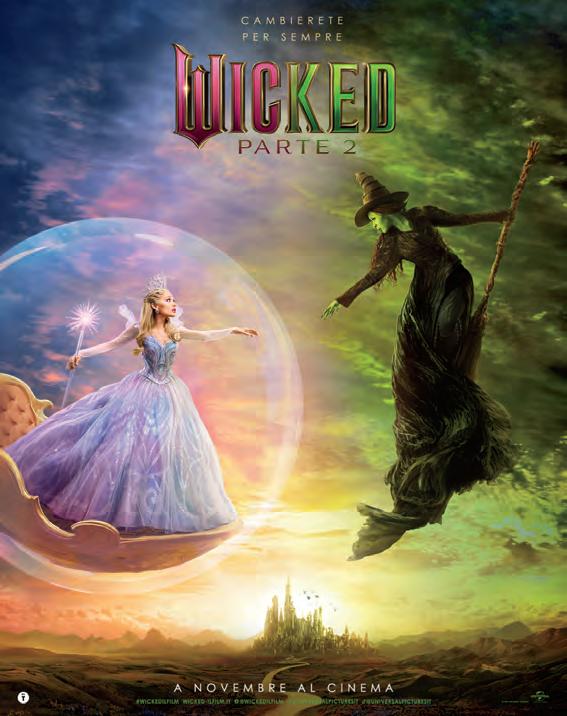
scribed in the iconic L. Frank Baum novel The Wonderful Wizard of Oz, originally published in 1900. That book entered the public domain in 1956 and continues to inspire the entertainment world, with each new Oz work referencing the previous and spawning new pop culture citations. Wicked was itself adapted from both a 2003 stage musical and a 1995 novel titled Wicked: The Life and Times of the Wicked Witch of the West.
We say: Follow the yellow brick road. This fall-winter season, see the movies, read the books and listen to the songs, from “Over the Rainbow”—beyond the Judy Garland version, you can choose from interpretations by Frankie Avalon, Aretha Franklin, Ella Fitzgerald, Olivia Newton-John, Plácido Domingo, Eric Clapton, The Flaming Lips, and the Hawaiian Israel Kamakawiwo’ole, among hundreds – to “Ding Dong! The Witch Is Dead,” recorded by The Fifth Estate in 1967, and “Goodbye Yellow Brick Road,” by Elton John and Bernie Taupin.
The success of the Wicked movie—now a licensing tour de force, complete with an Emerald City Lego set and an Ozdust eyeshadow palette from r.e.m. beauty—rests in part on the enduring appeal of the 1939 movie starring Judy Garland, a pioneering Technicolor production that made Dorothy’s slippers sparkle in red, rather than the silver de-
In that song, John sings with disillusionment about material success: “You can’t plant me in your penthouse/ I’m going back to my plough/ Back to the howlin’ old owl in the woods/ Huntin’ the horny-back toad/ Oh, I’ve finally decided my future lies/ Beyond the yellow brick road…”
Street art demands visibility for the less privileged: The movement arose on public buildings, walls, and trains, without galleries or museums
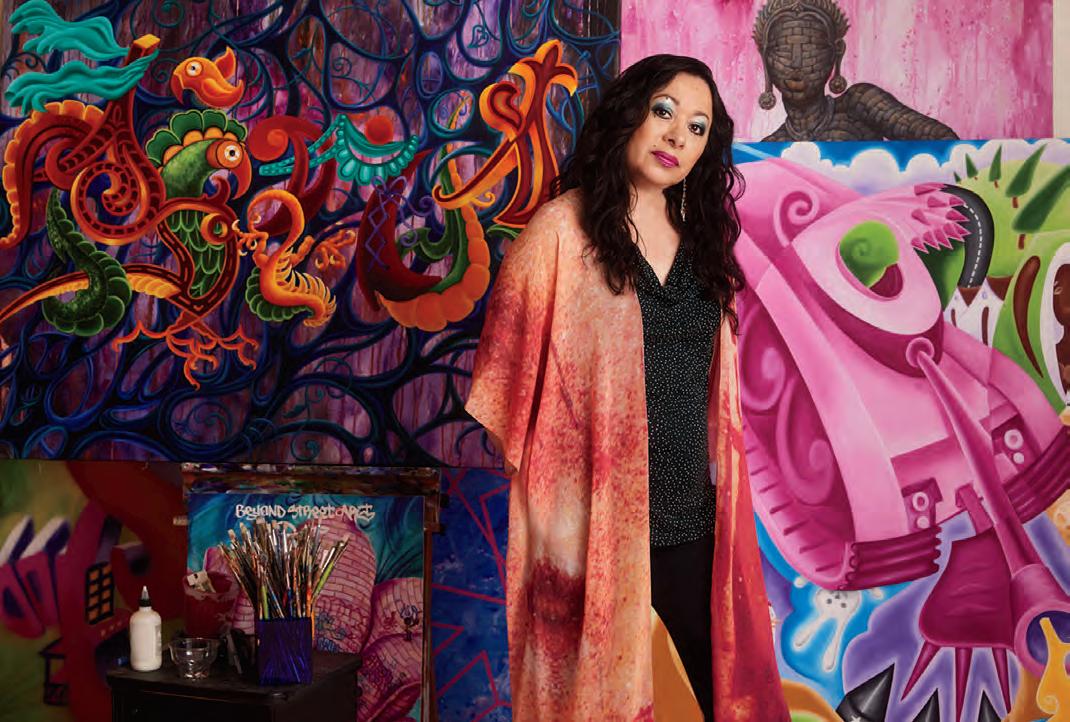
as intermediaries between the artists and their audiences. Whether considered social commentary, vandalism, or beautification of urban blight, street art has a long history in New York City. Take a moment to consider the meaning of artistic freedom. MoMA PS1, the Long Island City arts institution, recently unveiled a mural-commissioning program, inviting artists to create new works for its public plaza.
Ecuadorian-American graffiti artist and painter Lady Pink is the first artist whose mural graces the visitor entrance to the museum, and her proposal melds references to the New York City skyline, subway system and brick buildings, as well as 5Pointz, the warehouse formerly located across from MoMA PS1, which was the subject of a protracted legal battle before its demolition in 2013. Originally an industrial plant, the property later housed artist studios, becoming famous for the
vibrant graffiti murals on its exterior. When the building’s owner decided to tear it down and build a residential high-rise in its place, he whitewashed the murals without notice, prompting “aerosol artists” including Lady Pink to sue him.
The case, Cohen v. G & M Realty L.P., involved the Visual Artists Rights Act, or VARA, a copyright statute that permits artists to sue for infringement of moral rights, such as the right to attribution and the right to protect the integrity of their works, including visual art of “recognized stature” that is incorporated into buildings the artists do not own.
The 5Pointz case resulted in a $6.75 million judgment for the artists and a finding that even temporary street art can qualify for VARA protection, provided it has achieved the requisite recognition. Let the real estate tycoons eat cake: Lady Pink’s homage to 5Pointz is on display at MoMA PS1 through spring 2026.
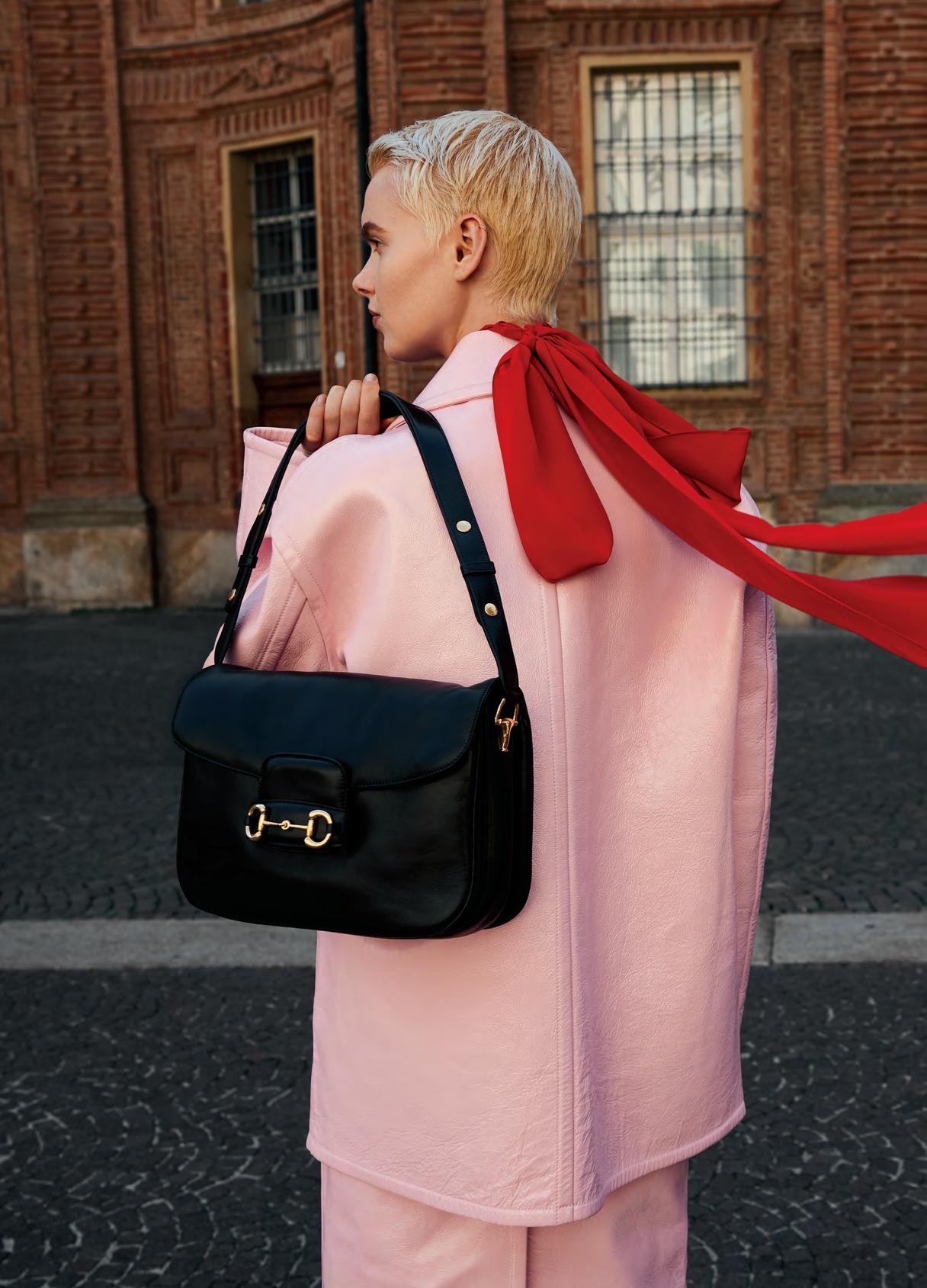
This page: Gucci coat, top, skirt, bag, gucci.com.
Opposite page: CHANEL top, shorts, skirt, earrings, necklace, boots, bag, 800-550-0005.
A purse that can actually hold all your belong ings? How novel. Practicality ne ver looked so desirable.
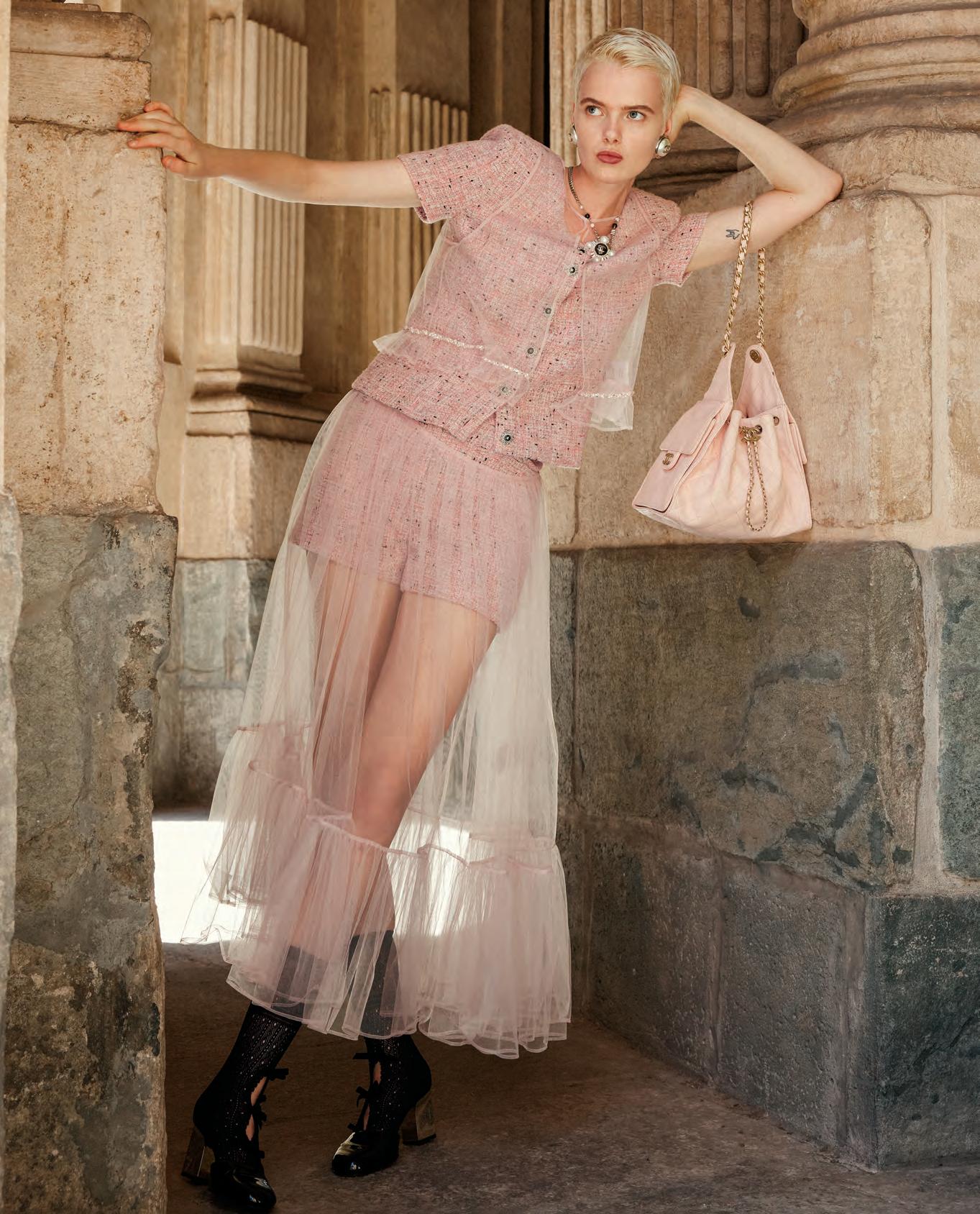
IT’S IN THE BAG
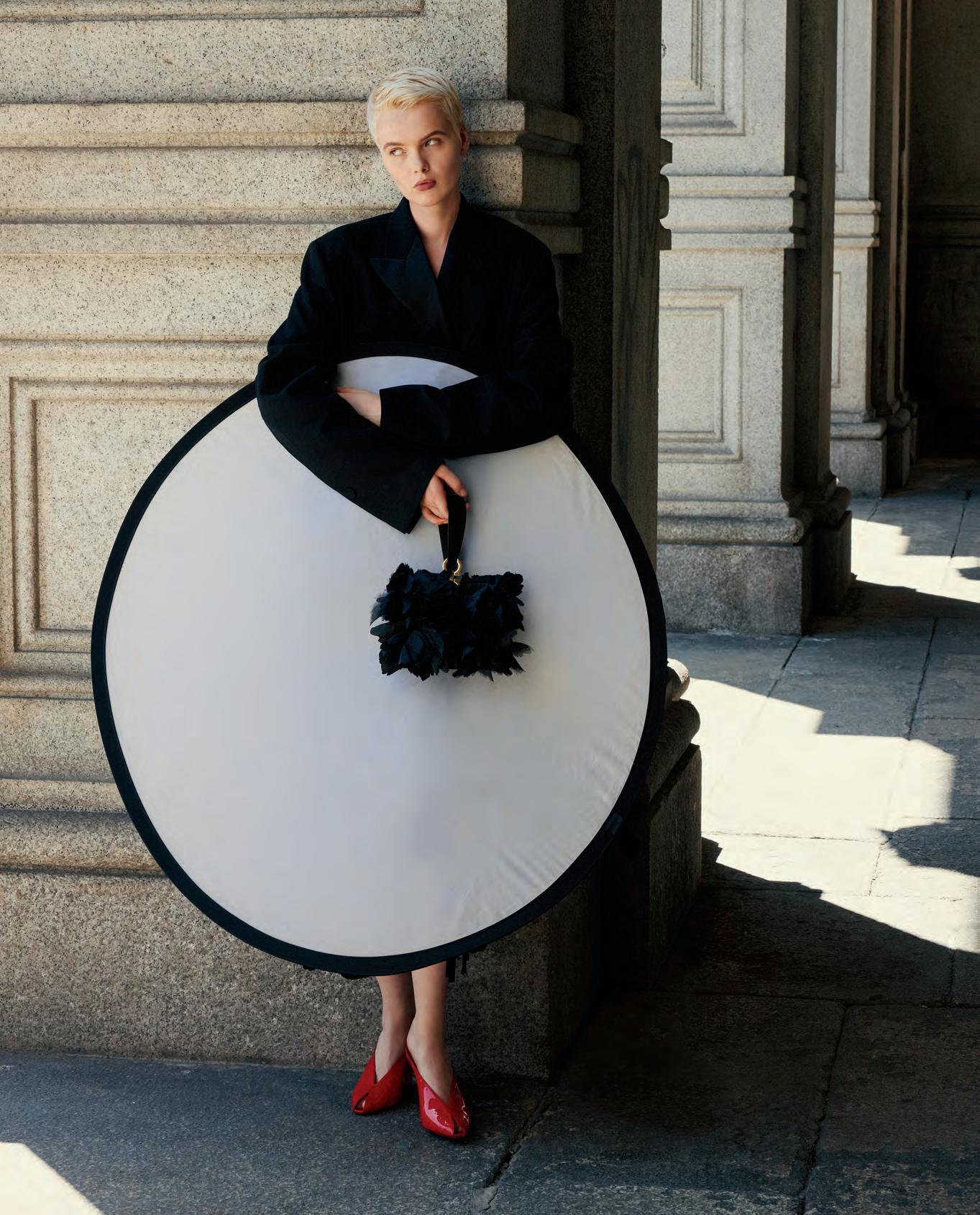
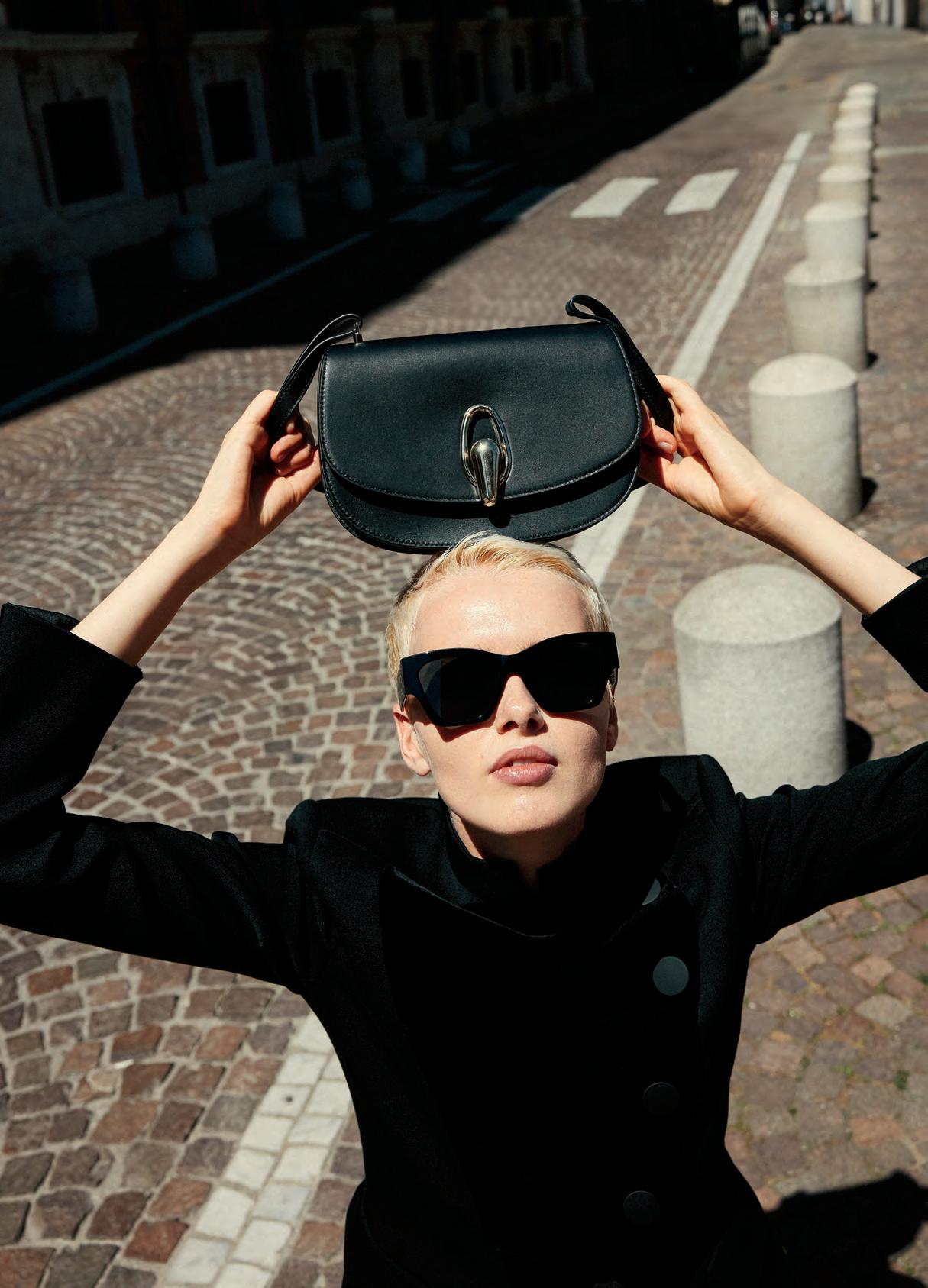
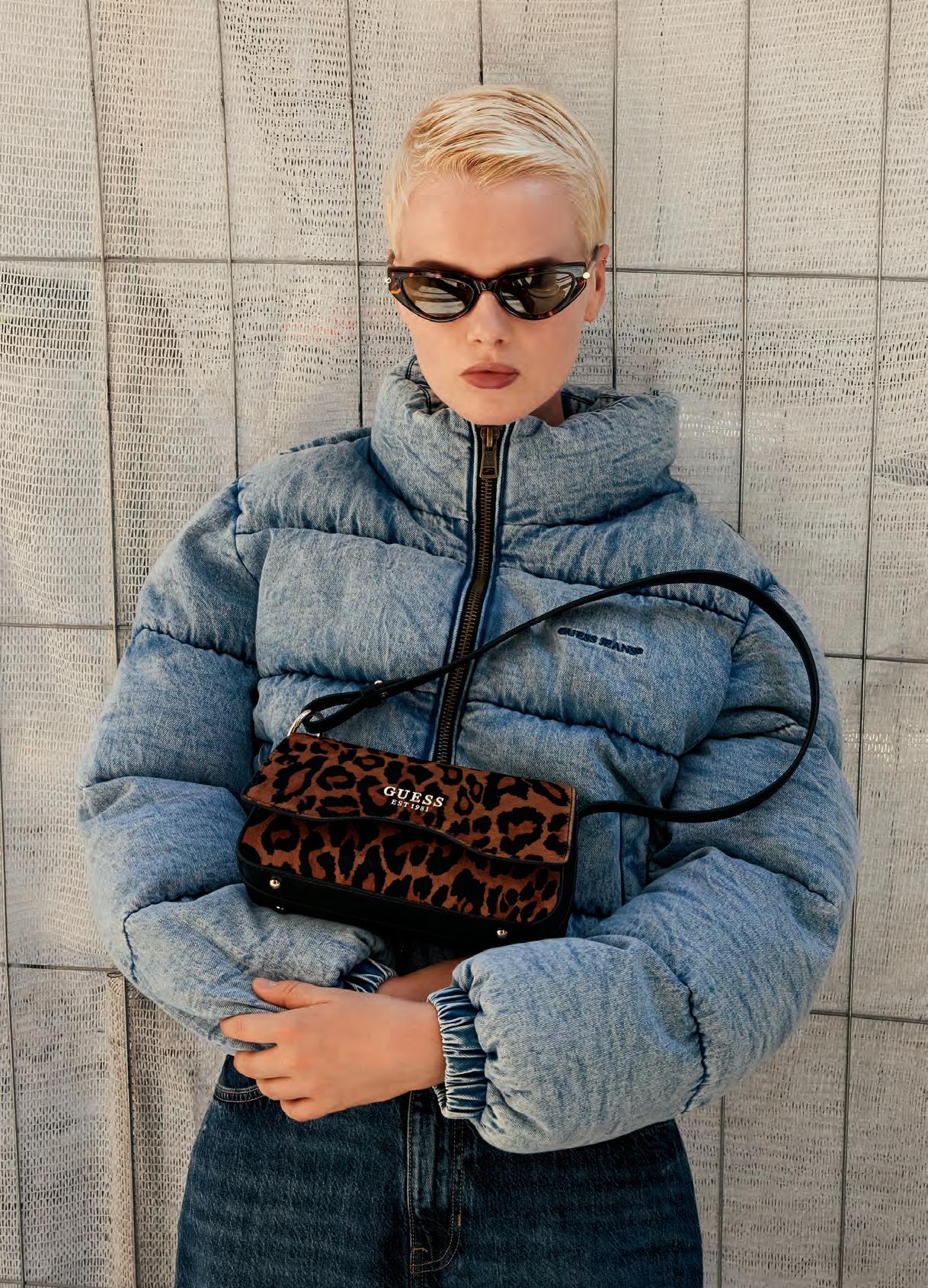
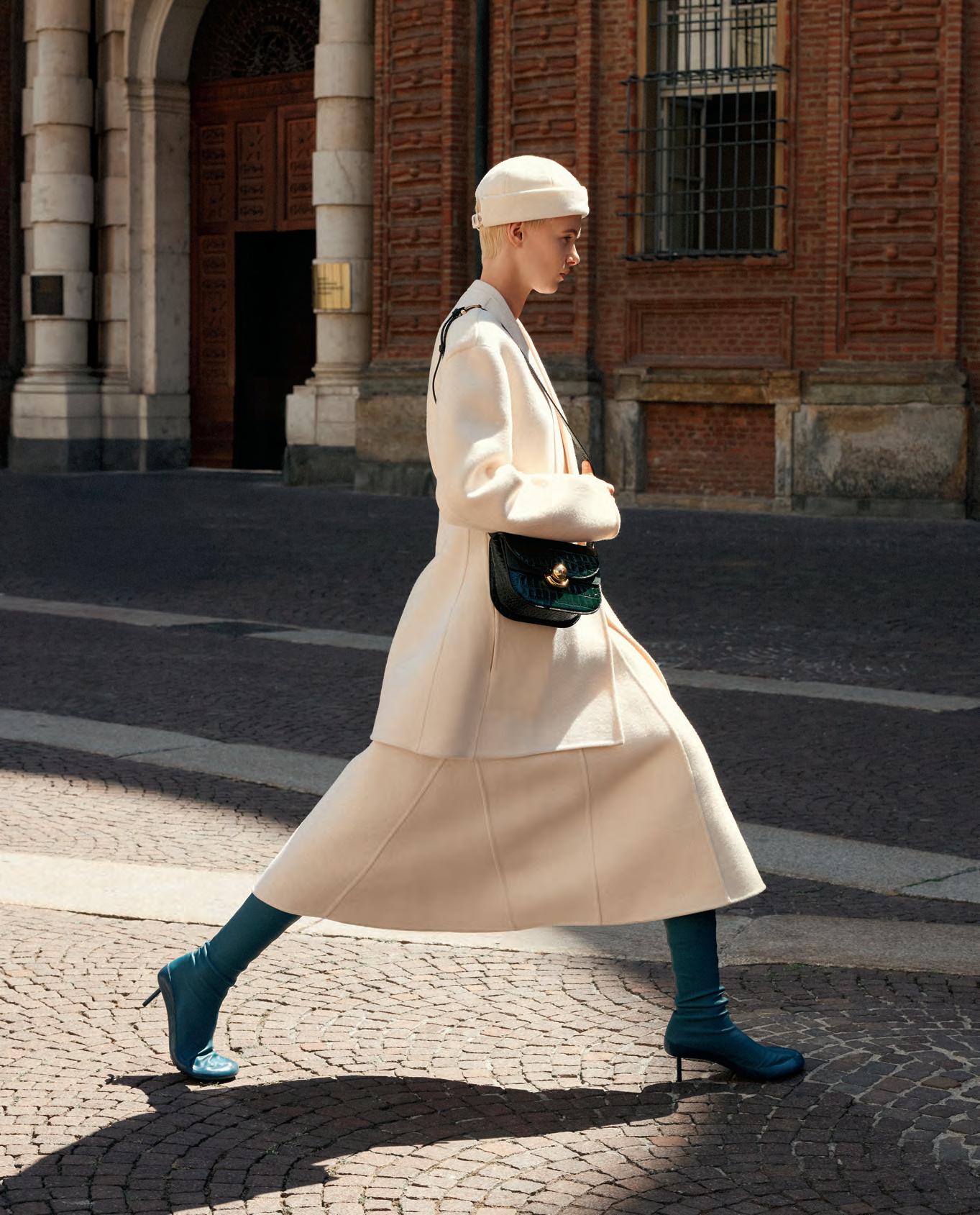
Edited by Shelby Comroe
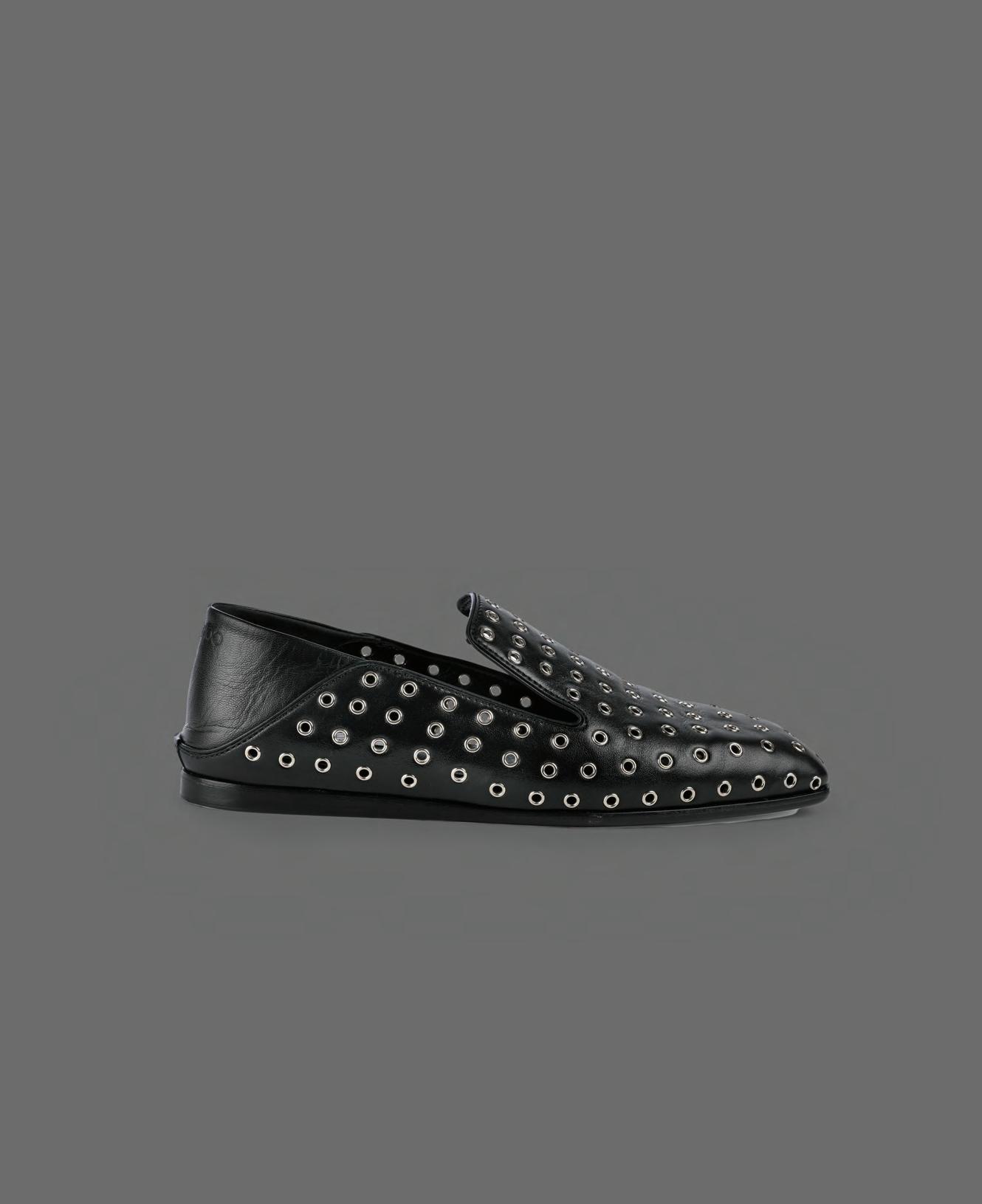
Jimmy Choo’s new Eliot slipper is here to shake up your rotation. Think sleek leather, glossy croc, suede with oversized tassels, and versions punctuated with silver rivets — all crafted in Italy with that signature Jimmy Choo polish. A nod to the house’s past, the Eliot slipper was inspired by the women’s style, “Wheel” in Fall/Winter 2010, and the men’s slipper, “Foxley,” now this new dual gender style bridges both worlds, blurring masculine and feminine codes. Effortless, elegant, and a little rebellious, it’s the kind of shoe you’ll wear on repeat this season. ONE SIZE FITS ALL
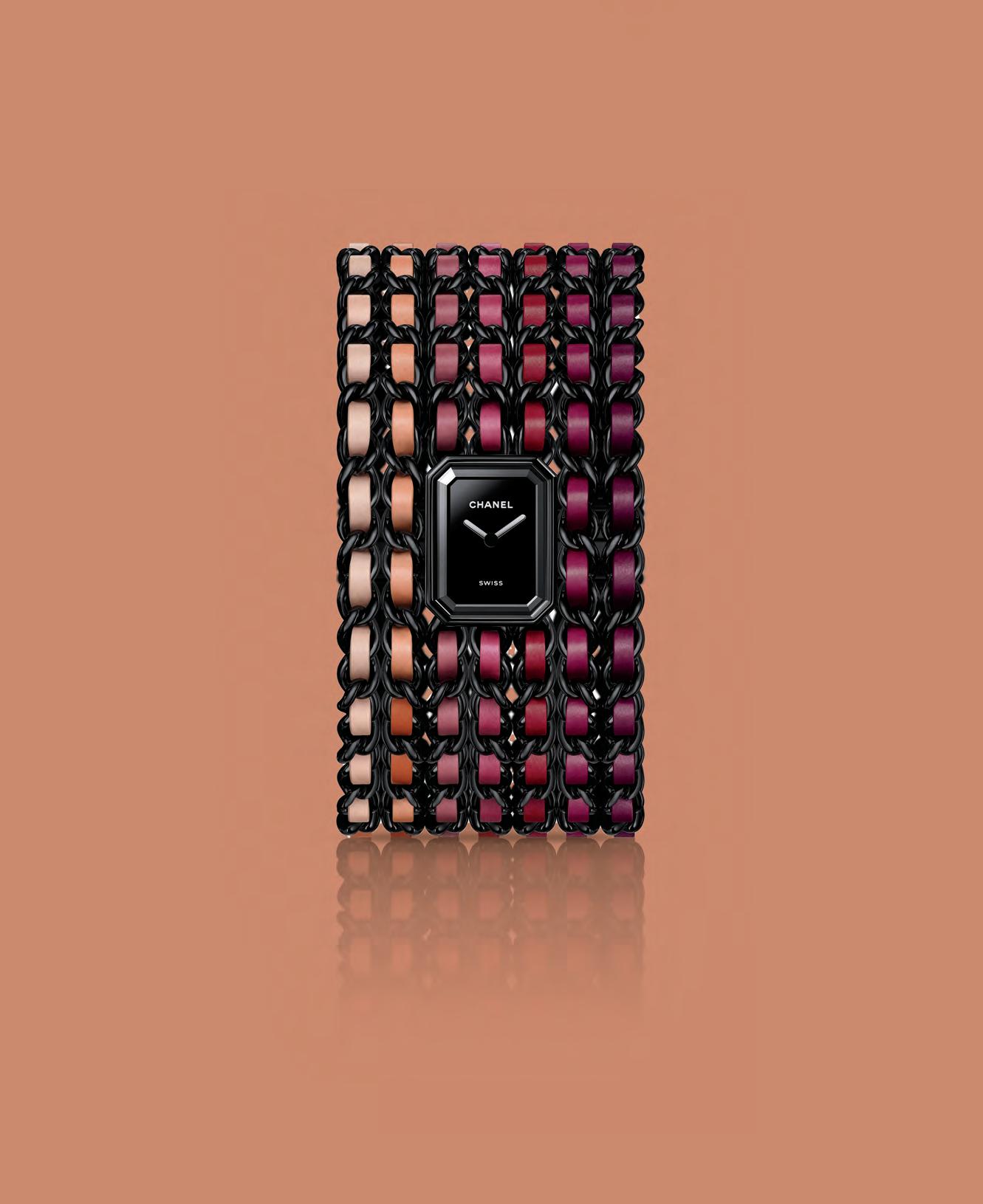
With its latest launch, Chanel’s Watchmaking Creation Studio reimagines one of Gabrielle Chanel’s lasting legacies: beauty itself. The Blush Capsule Watch Collection draws on the house’s makeup codes, transforming palettes of pink and red into striking timepieces. A standout piece, the Première Cuff Blush
steel bracelet threaded with seven rows of leather straps shaded from blush to deep plum. Anchored by the octagonal case and glossy black dial, it feels as much like a jewel as it does a watch—an ode to
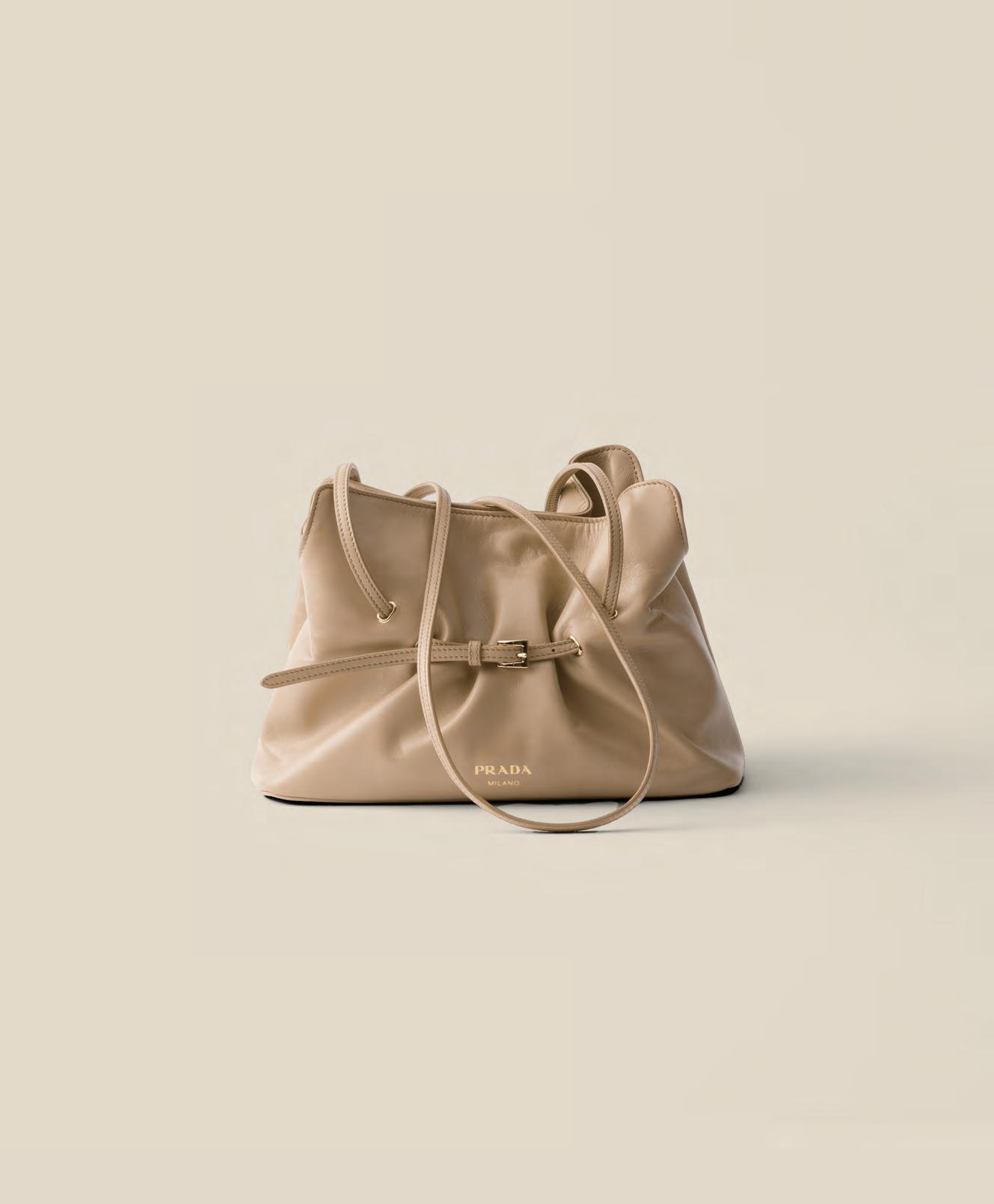
Small Nappa Leather Bag, $3,100
prada.com.
Unveiled during Prada’s Raw Glamour Fall/Winter 2025 show, the Dada bag is all about quiet power. A slim belt — one of Prada’s recurring codes — cinches the nappa leather into soft folds, shaping a silhouette that feels both feminine and modern. The delicate buckle serves as a polished accent, while the weightless construction, crafted with a meticulous hand, keeps it practical for everyday wear. Equal parts tactile and functional, the Dada proves sophistication can still feel effortless.
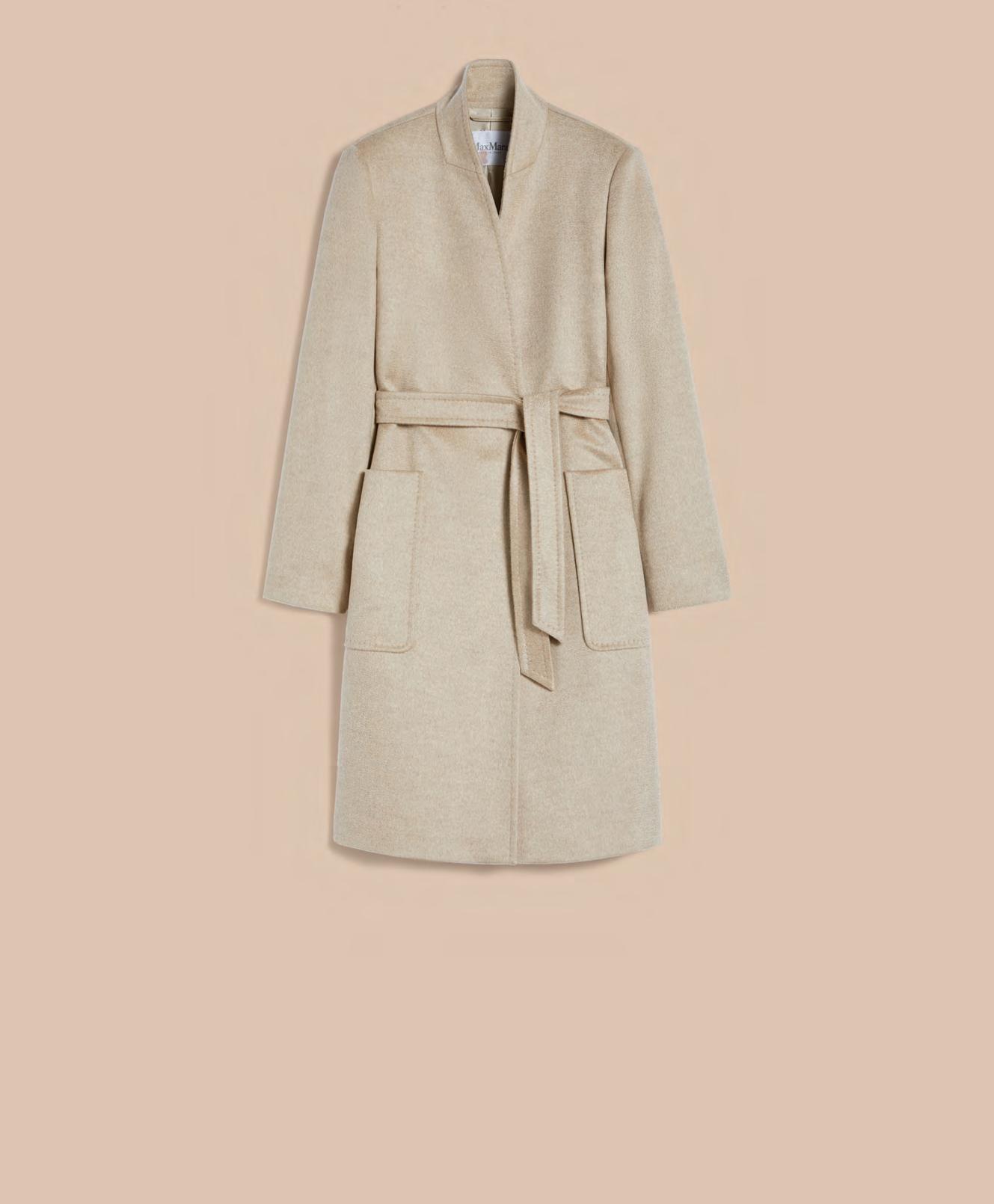
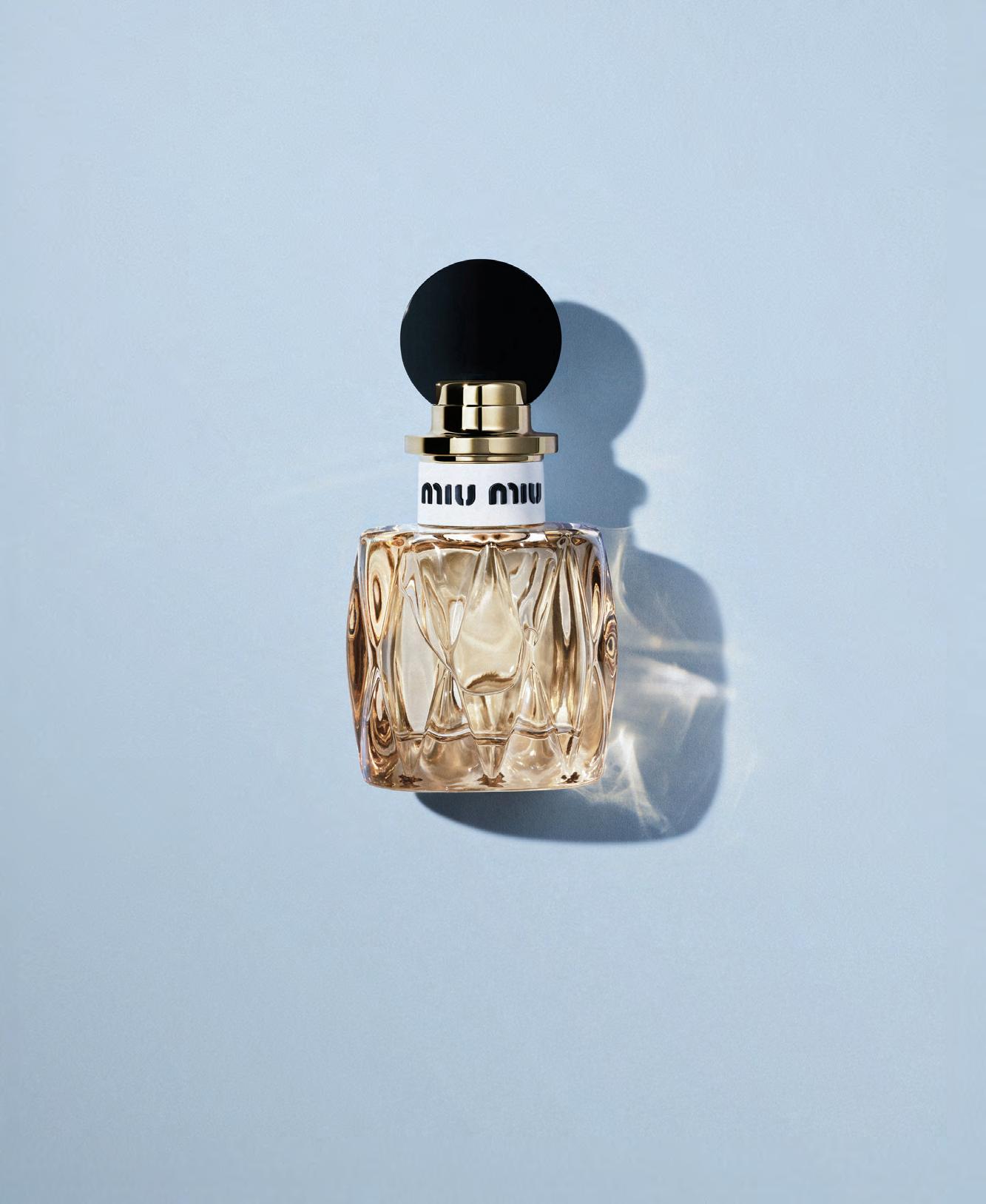
DOUBLE THE SPARKLE
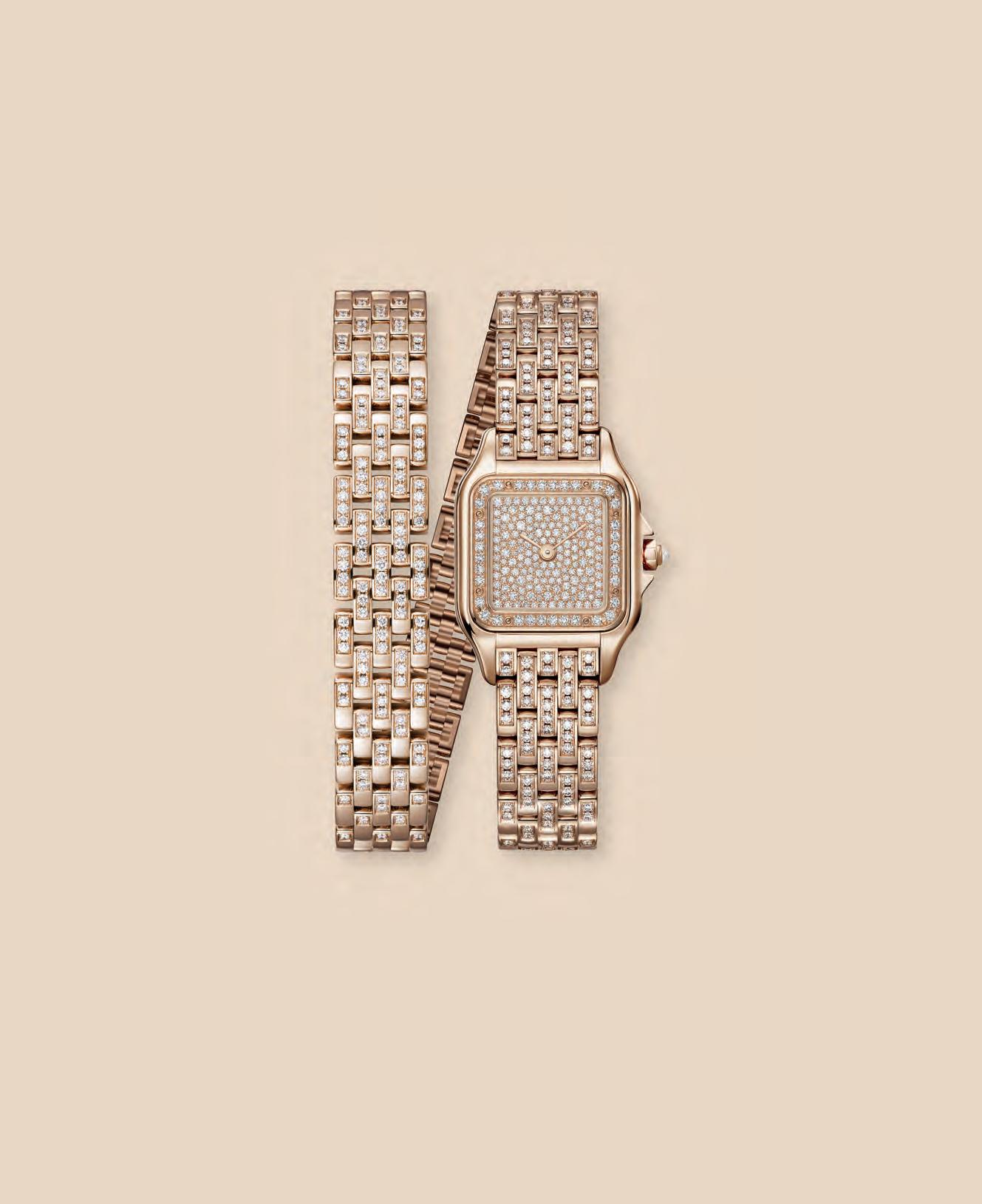
Panthere de Cartier watch, small model, 18k rose gold, diamonds, price upon request
cartier.com.
Cartier brought serious sparkle to Watches & Wonders 2025 with a new take on its Panthère de Cartier watch. The doubleloop small model reimagines the house’s beloved 1980s design, pairing its fluid, bracelet-like construction with a full diamond setting. Crafted in 18K rose gold and powered by a quartz movement, it’s a radiant reminder of why the Panthère remains one of Cartier’s most iconic collections.

This page clockwise from top: Tiffany & Co. Blue Book Collection Wave Diamond Necklace in 18k white and yellow gold with diamonds and diamond accents, tiffany. com. Tiffany & Co. Blue Book Collection Wave Blue Cuprian Elbaite Tourmaline Ring in 18k white and yellow gold with diamonds, tiffany.com. Tiffany & Co. Blue Book Collection Wave Diamond Earrings in 18k white and yellow gold with diamonds and diamond accents, tiffany.com.
Opposite page: Tiffany & Co. Blue Book Collection Wave Diamond Necklace with Green and Blue Cuprian Elbaite Tourmalines, tiffany.com.
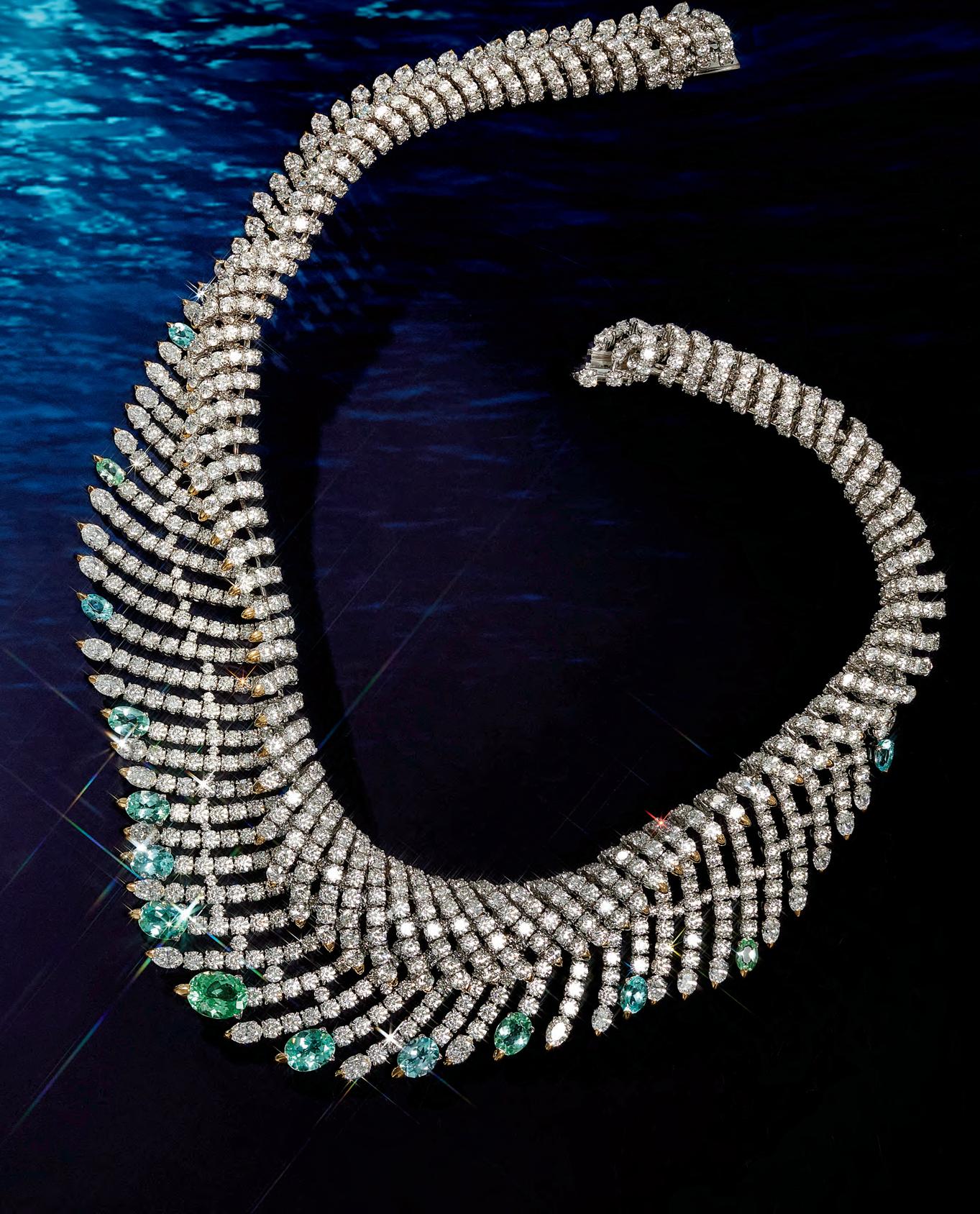
Tiffany & Co.’s Blue
Book Collect ion,
Sea of Wonder, t akes us on a
surreal journe y
where the sparkle r ivals the surf.
BREAKFAST AT SEASIDE
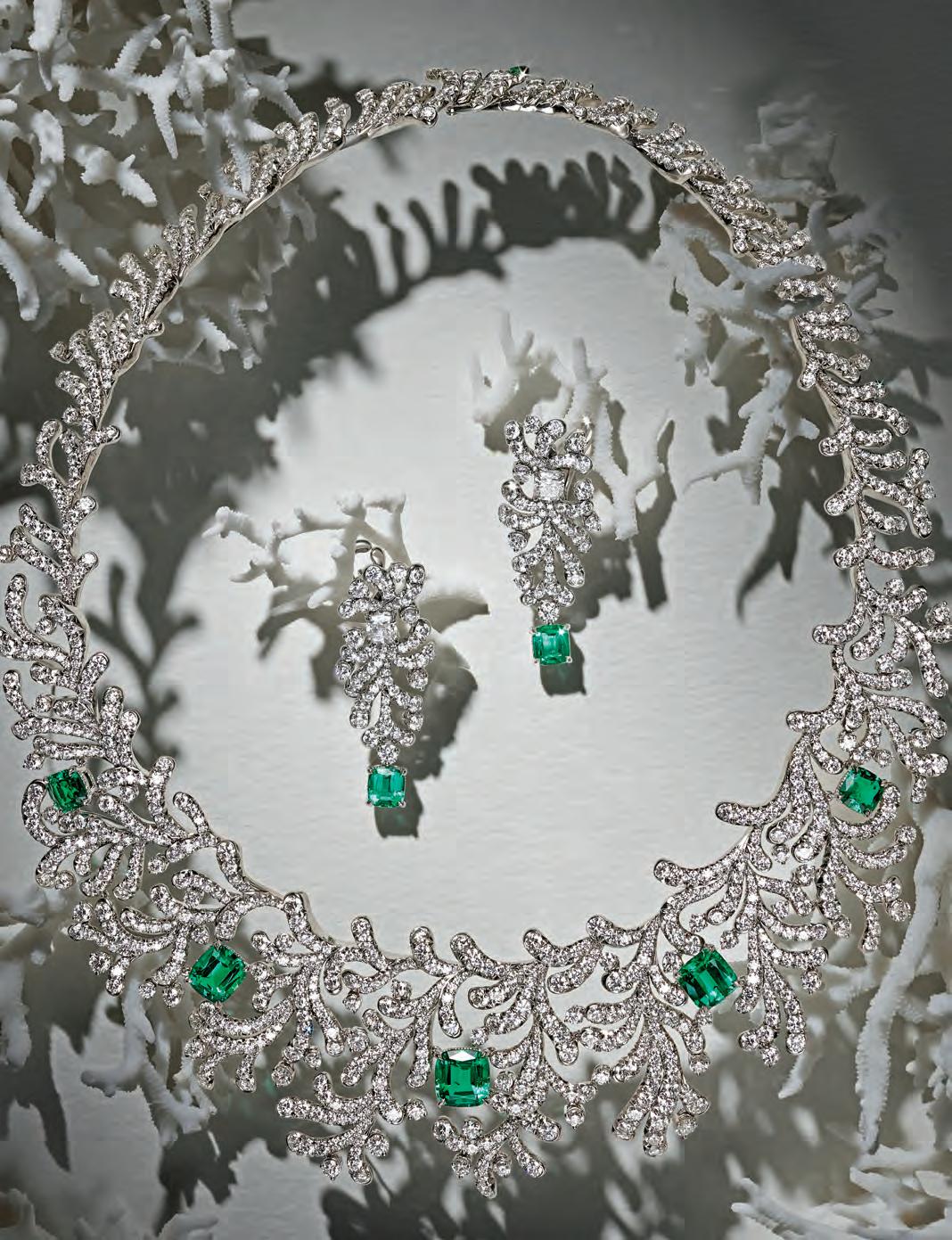
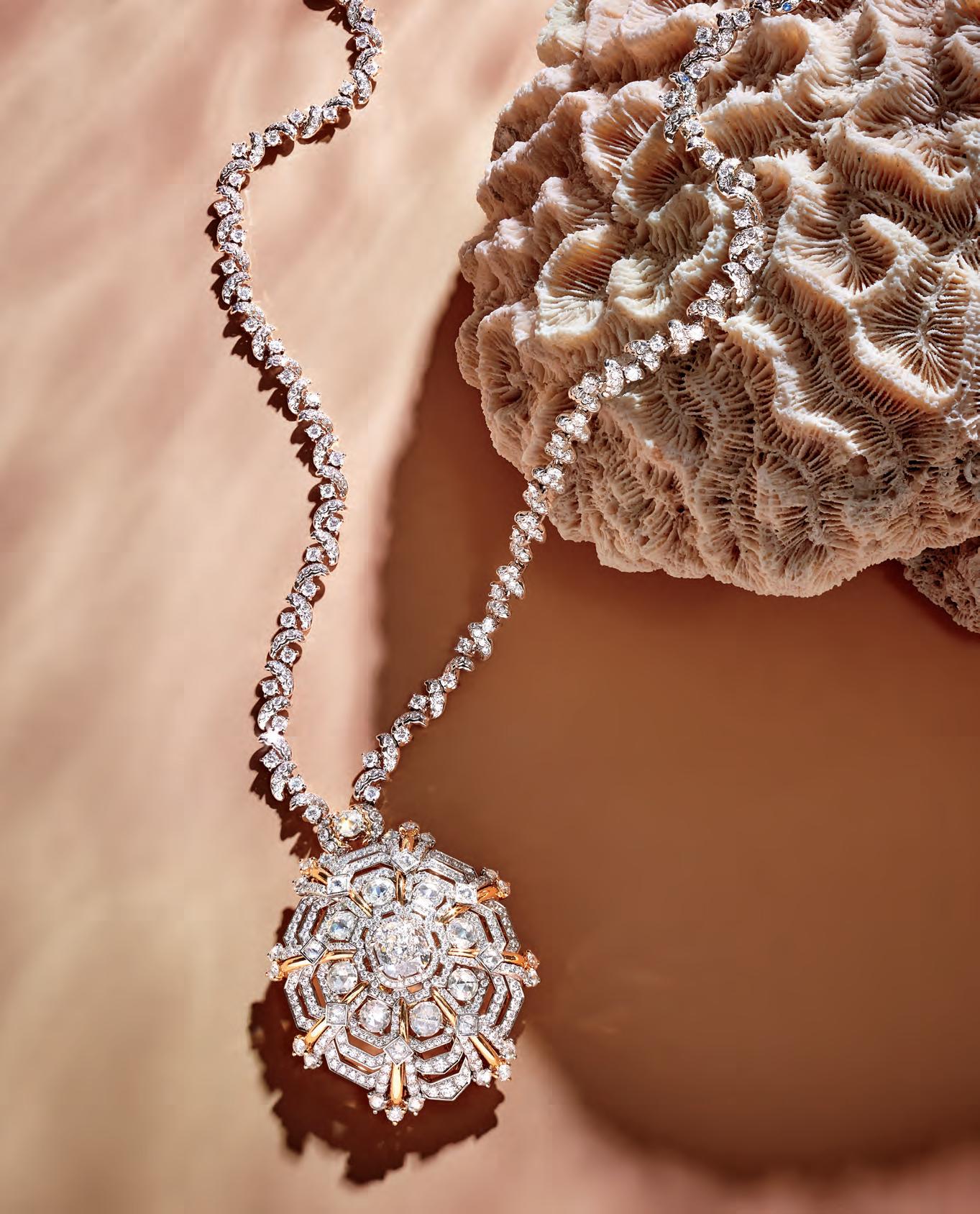
This page: Tiffany & Co.
Blue Book Collection Sea Turtle Diamond Pendant with sapphires and diamond accents, tiffany.com.
Opposite page: Tiffany & Co
Blue Book Collection Ocean Flora Emerald Necklace with unenhanced emeralds and diamonds, tiffany.com. Tiffany & Co. Blue Book Collection
Ocean Flora Emerald Earrings with unenhanced emeralds and diamonds, tiffany.com.
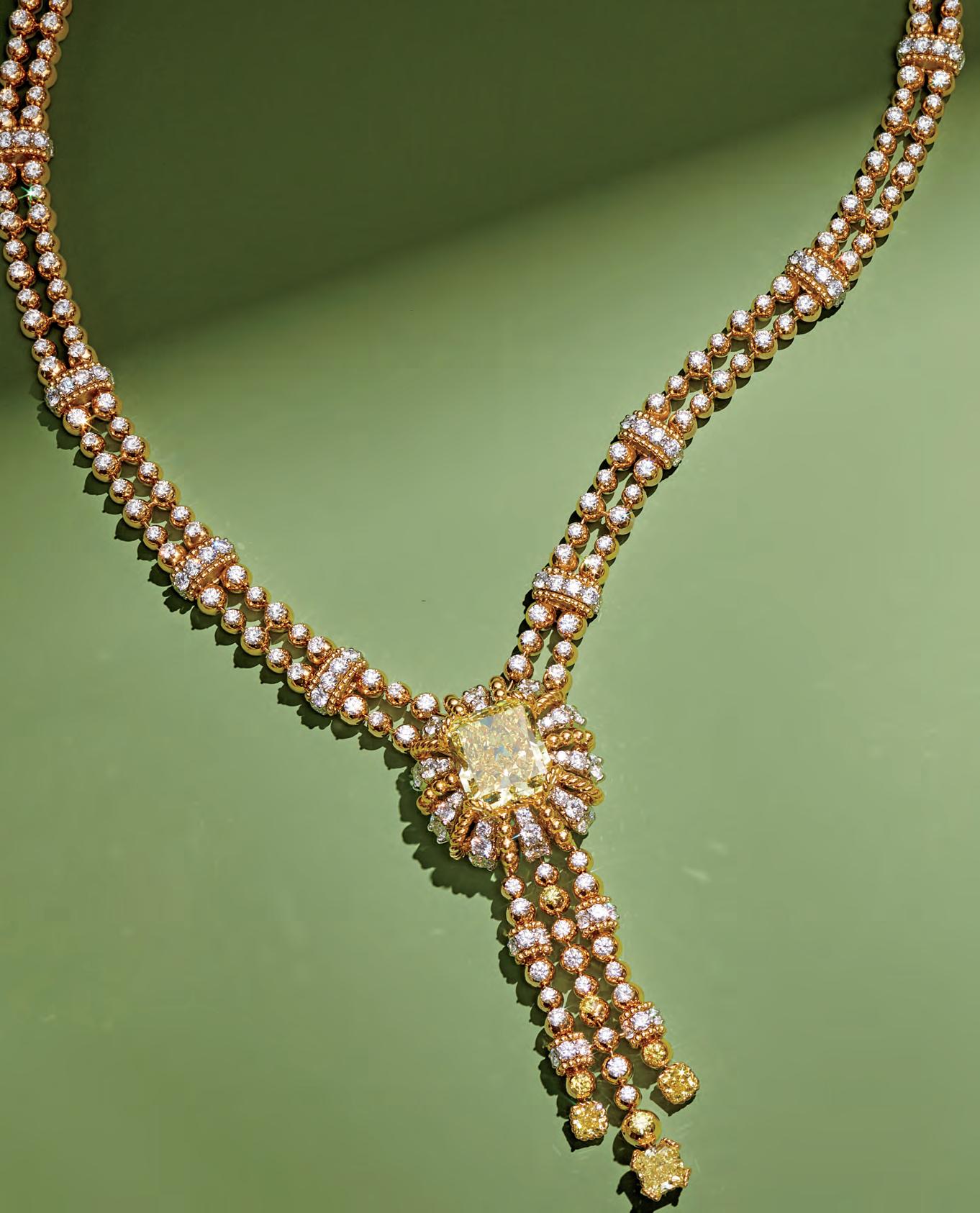
This page: Tiffany & Co. Blue Book Collection Urchin Fancy Intense Yellow Diamond Necklace with white diamond accents, tiffany.com. Opposite page from top: Tiffany & Co. Blue Book Collection Urchin Enamel Bracelet in 18k yellow gold and platinum with rose paillonné enamel and diamonds, tiffany.com. Tiffany & Co. Blue Book Collection Sea Turtle Diamond Brooch in 18k yellow gold and platinum with diamonds and sapphires, tiffany.com. Tiffany & Co. Blue Book Collection Urchin Fancy Intense Yellow Diamond Ring in 18k yellow gold and platinum with white diamond accents, tiffany.com.
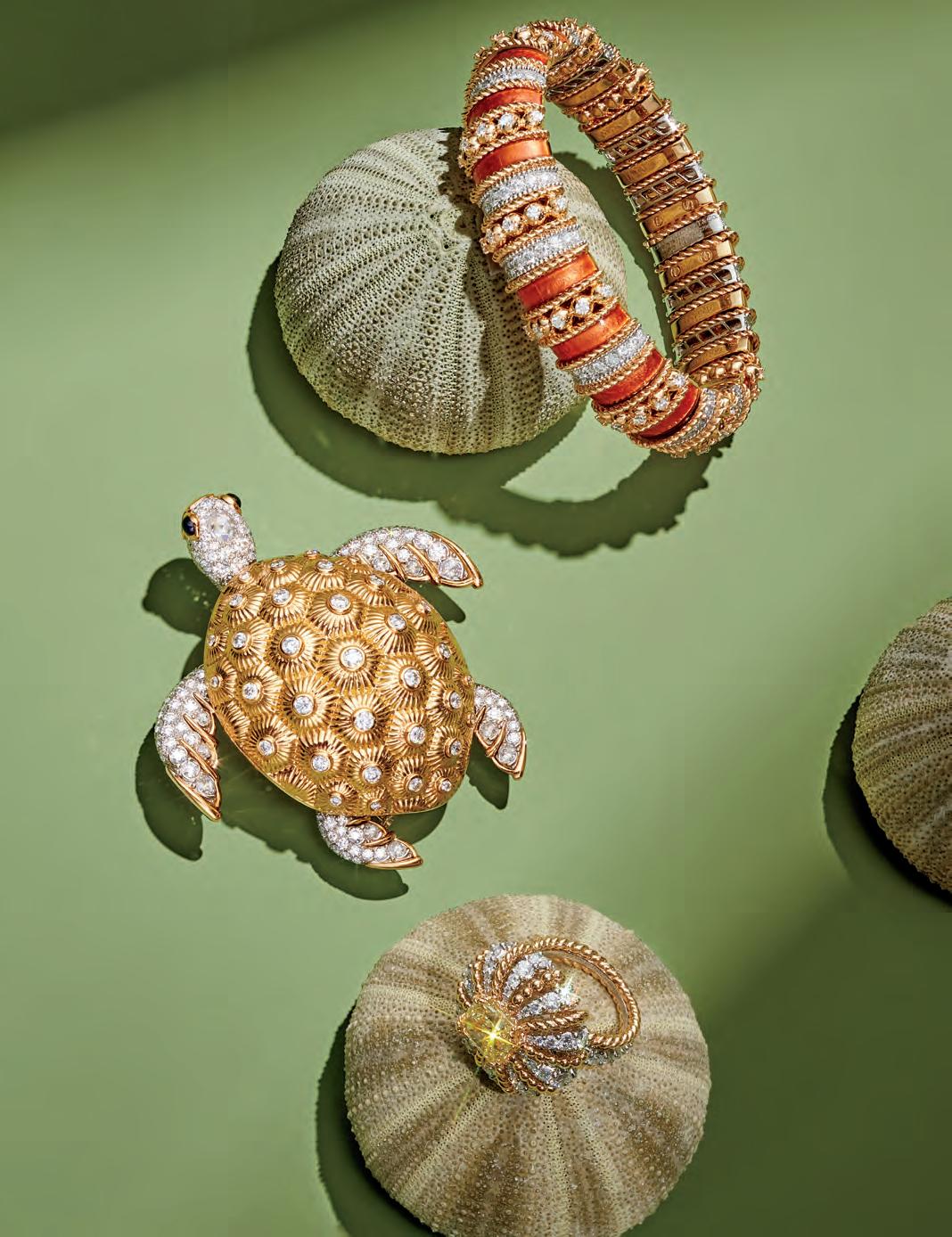
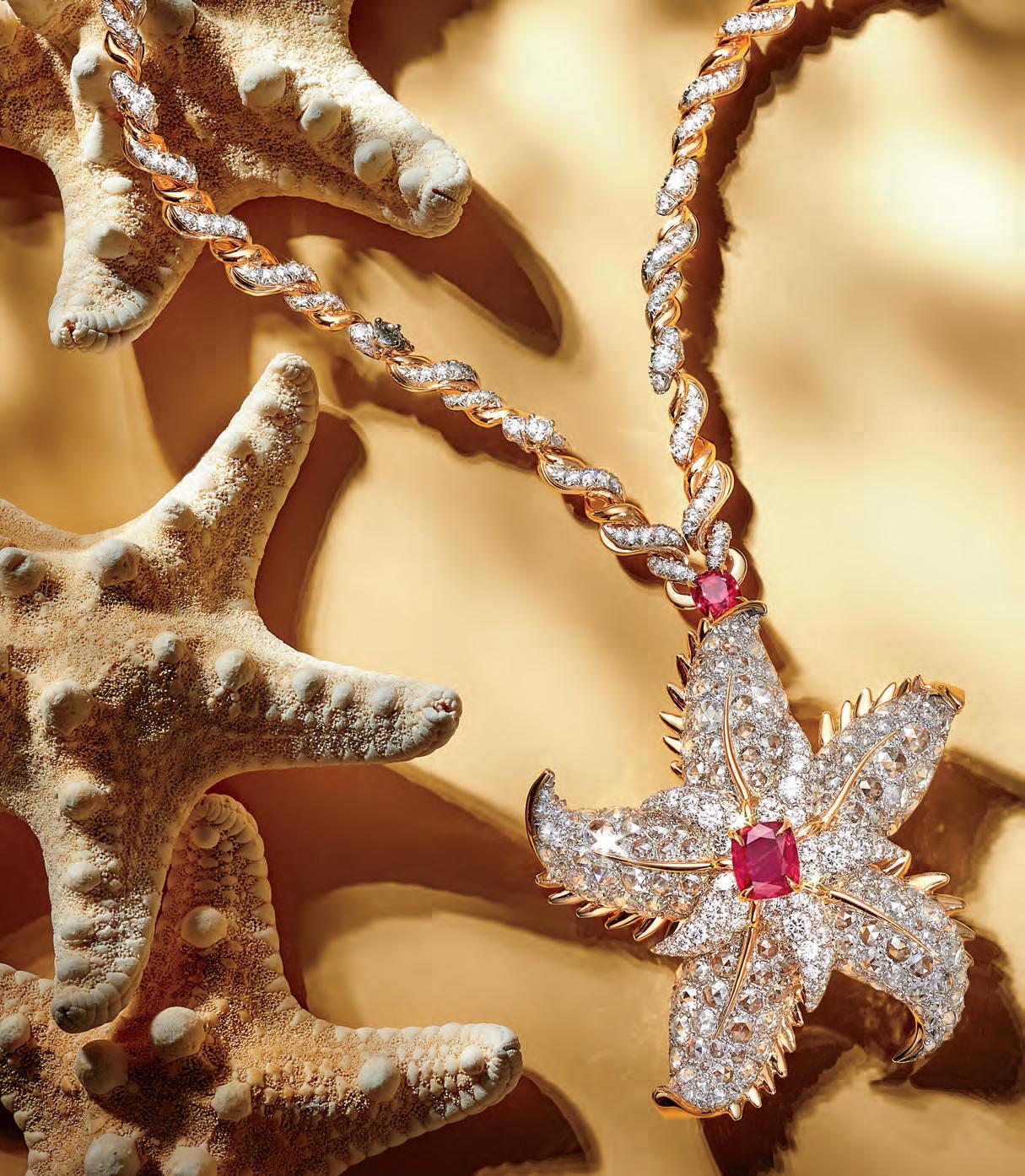
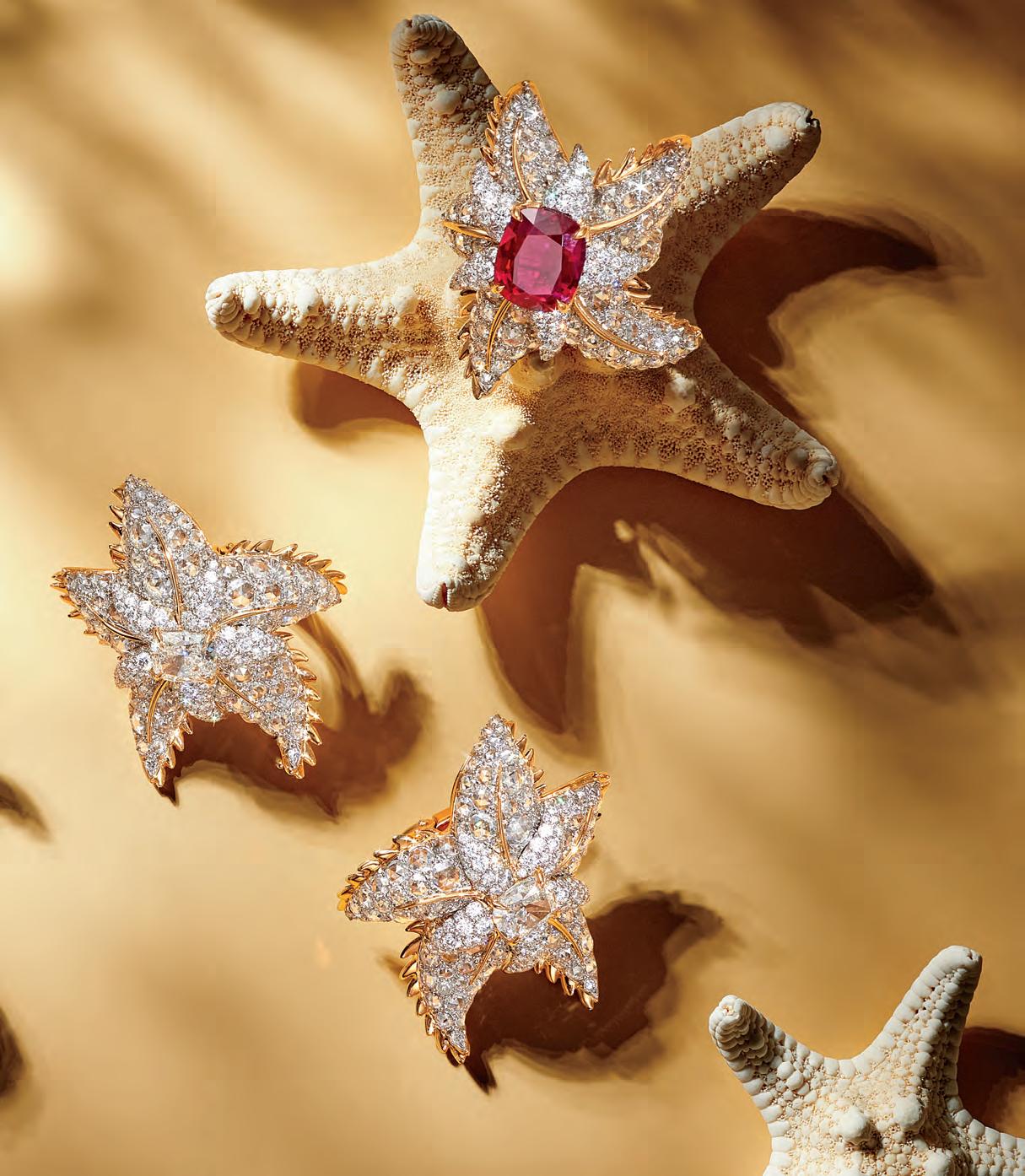
From left: Tiffany & Co. Blue Book Collection Starfish Ruby Pendant in platinum and 18k yellow gold with unenhanced rubies and diamonds, tiffany.com. Tiffany & Co. Blue Book Collection Starfish Diamond Earrings in platinum and 18k yellow gold, tiffany.com. Tiffany & Co. Blue Book Collection Starfish Ruby Ring in platinum and 18k yellow gold with diamonds, tiffany.com.
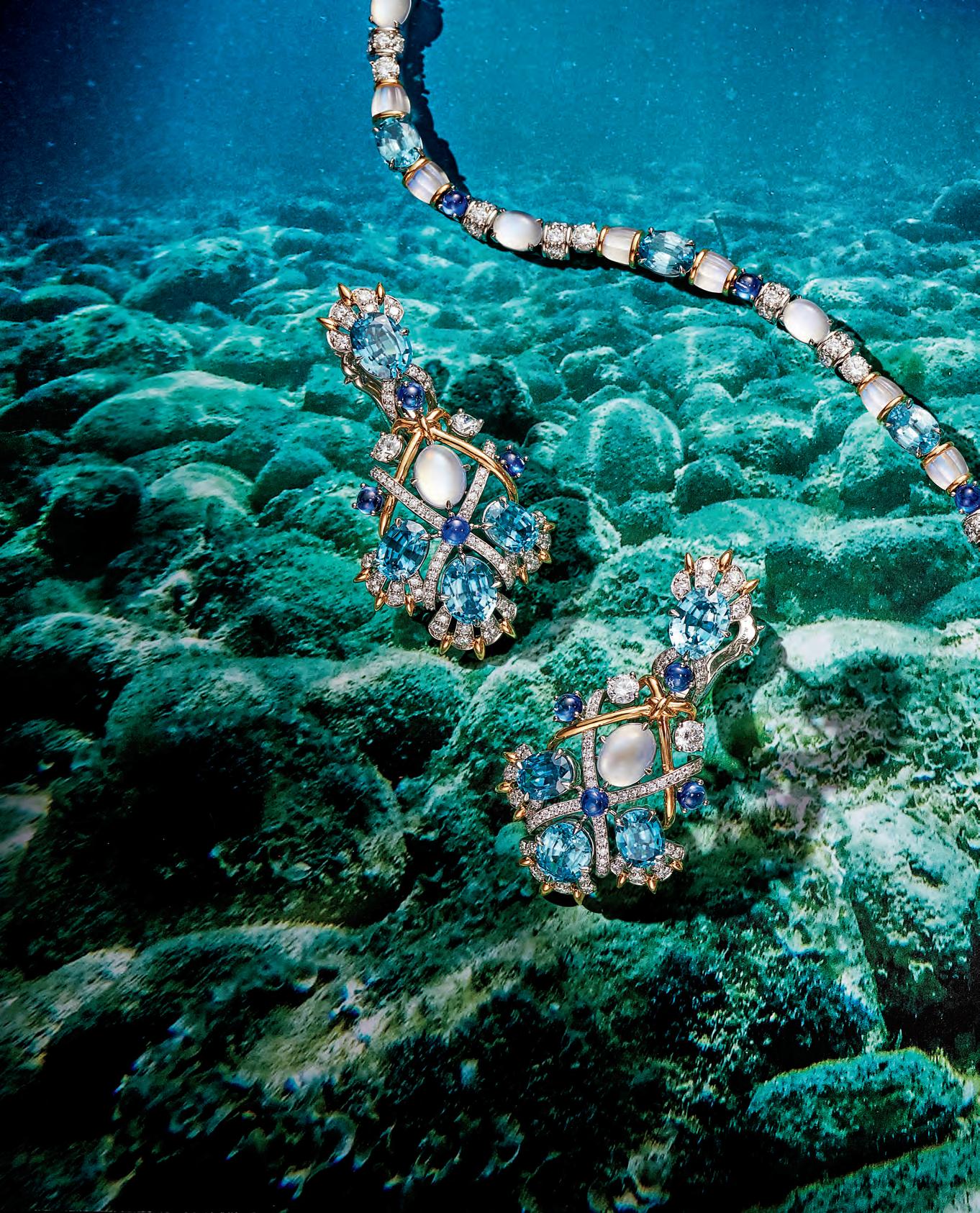
From left: Tiffany & Co. Blue Book Collection Seahorse Blue Zircon Earrings in 18k yellow gold and platinum with sapphires, moonstones and diamonds, tiffany.com. Tiffany & Co. Blue Book Collection Seahorse Blue Zircon Ring in platinum and 18k yellow gold with sapphires and diamonds, tiffany.com. Tiffany & Co. Blue Book Collection Seahorse Blue Zircon Pendant in platinum and 18k yellow gold with sapphires, moonstones and diamonds, tiffany.com.
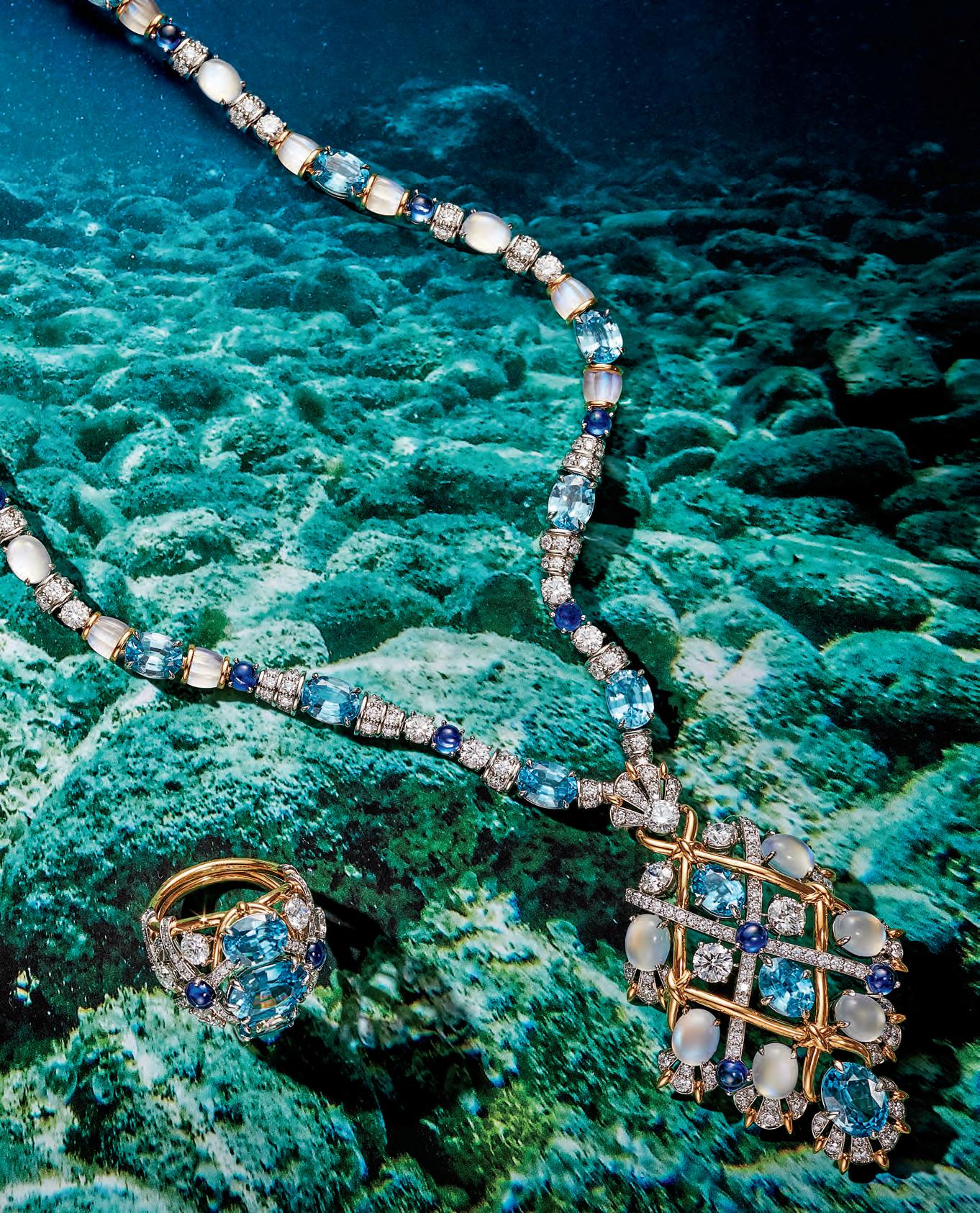
Omega’s lat est release
reimag ines a legend
w ith a ne w size, fresh
movements, and a
lineup that’s as v ibrant and versat ile as the
women who wear it.
Words Joseph Errico
Nearly 25 years after making its initial splash, the Omega Seamaster Aqua Terra is back and reimagined for a new generation of women who know their watches. The brand-new 30mm case size has been introduced to the Aqua Terra lineup, complete with a shiny new movement in 12 exciting new references. Think five sleek stainless-steel models sporting polished and brushed bracelets, a standout in 18K Sedna Gold, and three stunning 18K Moonshine Gold options—each with its own unique flair. Whether you’re all about that classic vibe or prefer mixing it up with one of three two-tone gold and steel combos, there’s something here to catch your eye.
Dial-wise, expect vibrant colors, polished hour markers, and a date window conveniently parked at 6 o’clock. Flip it over, and you’ll get a clear view of the finely tuned calibre through a sapphire crystal case-back—because who doesn’t love a good peek at precision engineering? These beauties run on Omega’s brand-new Master Chronometer movements, specially redesigned and miniaturized to fit the 30mm frame like a glove. Both new calibres pack power, precision, and a dash of style in a tidy 20mm package. In short: The Aqua Terra just got a fresh new groove, perfectly sized and seriously sophisticated. Ready to make waves?

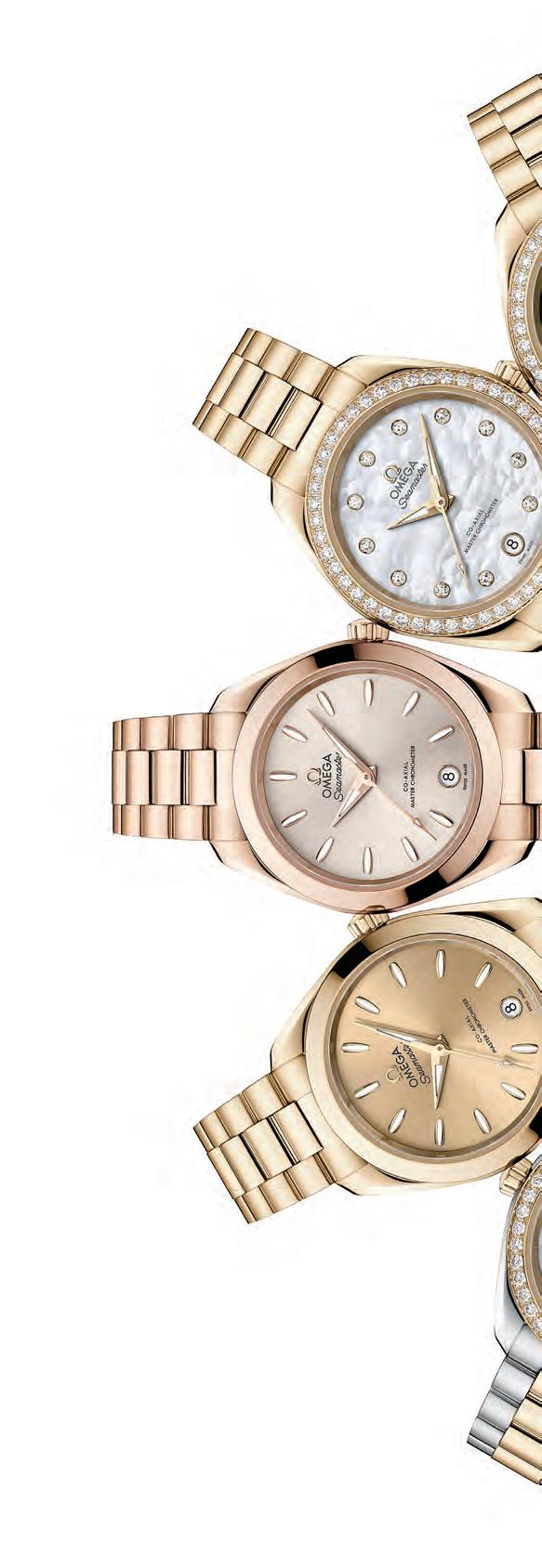

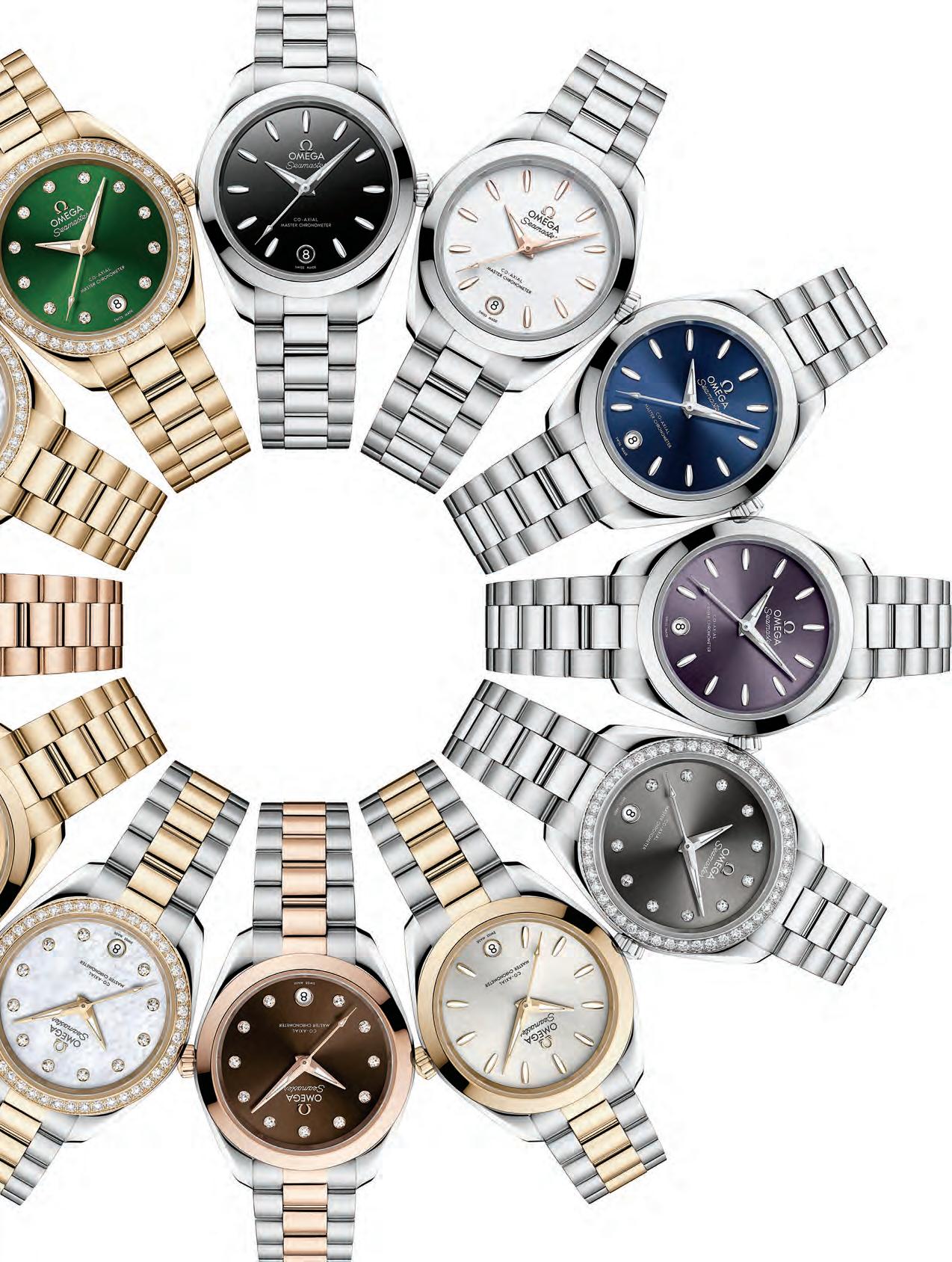
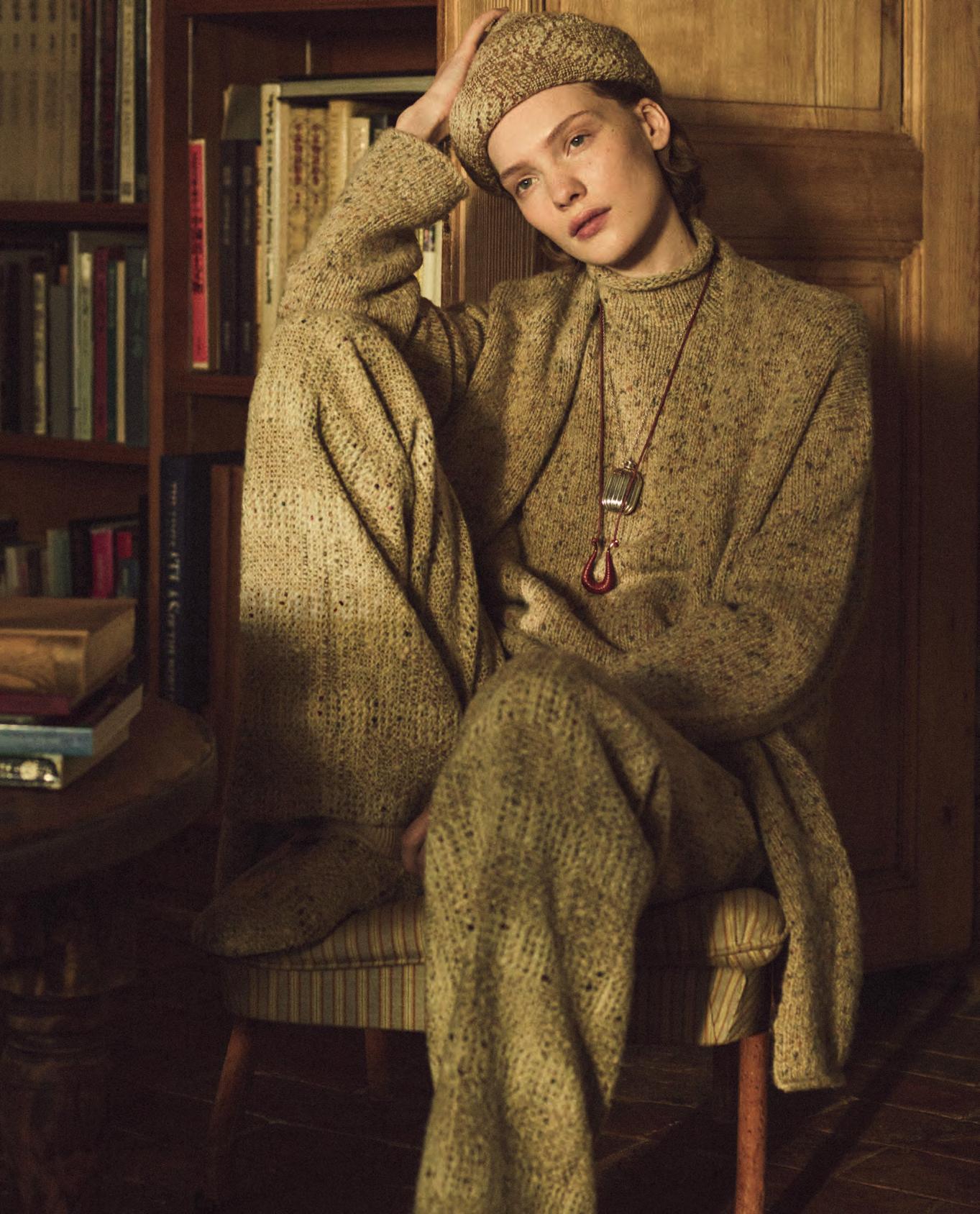
L oro Piana
honors its Ne w York
herit age at
Bergdorf G oodman
MADE IN MAHATTAN
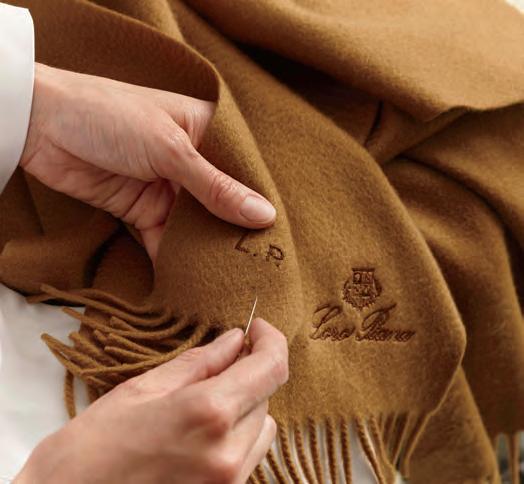
Understated, refined, and effortlessly luxurious, Loro Piana is a byword for Italian elegance. But its rise from a Piedmont textile mill supplying cashmere to top luxury brands into a fashion powerhouse in its own right owes everything to New York. In 1994, Loro Piana opened its first concept store in Manhattan between Park and Madison Avenues, a blueprint for boutiques and shop-in-shops worldwide. There, the maison showcased textiles alongside its first in-house clothing piece, the ineffably chic Grande Unita scarf. Woven from cloud-like cashmere with delicate fringing, it features the signature frisson finish, which uses a comb of vegetable fibers to fluff the material and enhance the color and texture. This fall, Loro Piana marks its New York origin story with a window takeover and exclusive merchandise at Bergdorf Goodman, honoring the city where quiet luxury was born.
From October 17 to November 3, all six windows at Bergdorf Goodman’s women’s store and the three facing windows at its men’s store across Fifth Avenue are devoted to Loro Piana—a rare honor reserved for only a select few brands. The displays transform the maison’s unparalleled fibers and expert craftsmanship into whimsical, immersive vignettes tracing cashmere’s journey from farm to department store. Baby cashmere goats float above golden scales in Inner Mongolia, miniature trucks
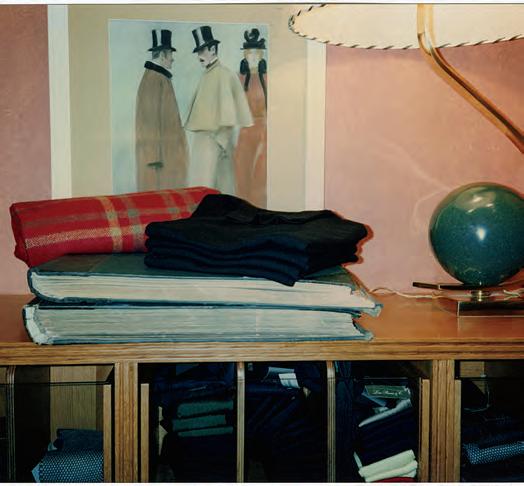
carry precious bales to Italy, and Quarona artisans inspect fabrics under magnifiers, before revealing a finished scarf. Loro Piana’s logoless logos punctuate the scenes as subtle nods to its heritage, from the thistle in its coat of arms, historically used for carding, to the creamy light-brown kummel color. At night, a dynamic light-mapping projection of a dancing thread animates the façade, celebrating the maison’s 101-year legacy.
The celebration continues inside, where Loro Piana unveils a curated selection of exclusive pieces, including a gray cashmere ensemble paired with a tonal-print cloche hat, a shearling micro bale bag, and a silk foulard with a Central Park motif. At the heart of the experience is the personalization corner in the women’s accessories shop, where shoppers can customize the Unito blanket, a supersize Grande Unita designed for cocooning, and the scarf that started it all. They can choose from a spectrum of colors, from earthy neutrals to vibrant reds and blues, and add bespoke embroidery to create a piece that feels uniquely their own. Each item is an invitation to touch, from the supple cashmere to the precise stitching, quietly affirming Loro’s enduring commitment to craftsmanship and elegance.
This page: Grande Unita personalization service at Bergdorf Goodman (left); Loro Piana Concept Store, 1994 (right.) Opposite page: Loro Piana Fall/Winter 2025
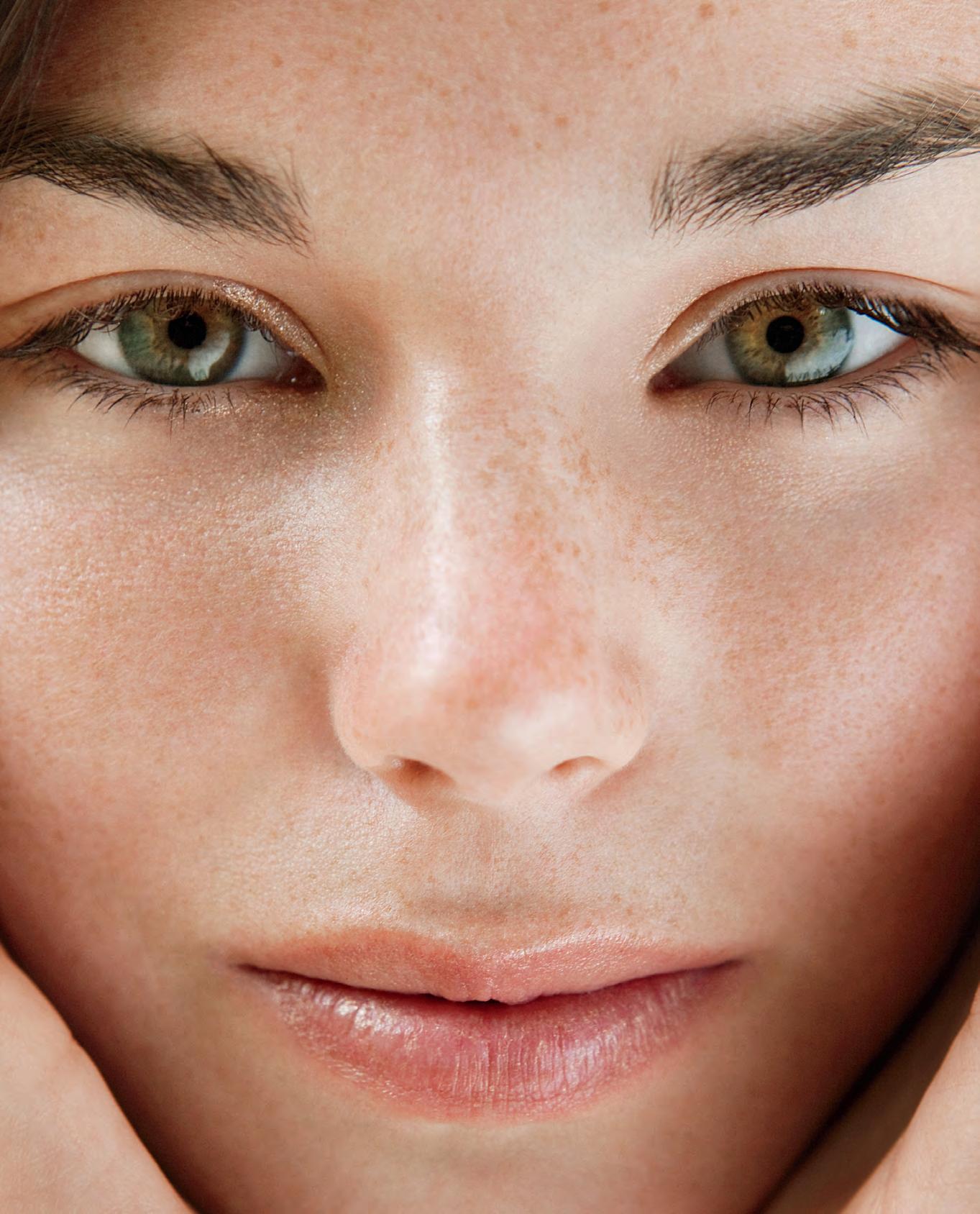
Amidst the wave of t ech-driven beauty advancements and the mainstreaming
of our desire for them, have our collect ive aesthet ic goals shift ed
t o an “I’ll have what she’s hav ing” approach?
VIVE LA DIFFERENCE
My seven-year-old has a book that we read frequently called Different, Just Like Me. It follows a young girl who is navigating a day in the city she calls home, coming across many people who, despite looking different than she does, share something in common with her. The central idea of the book is simple: People come in many colors, shapes, and sizes but when you look past those differences, you see how similar we are. But in the world of aesthetics (at least how that world is being disseminated for public consumption via social media) difference is something you are seeing less of lately. Save the rare Aimee Lou Wood, whose gap-toothed grin captured hearts—and viewers—during the third season of White Lotus, celebrities whose features once felt singular enough to be able to immediately identify them are becoming increasingly indistinguishable from one another thanks to the wizardry of modern advancements in cosmetic dermatology and surgery (and often a paint-by-numbers approach being taken by those with less finesse). And it’s not that they necessarily look good or bad, but the same.
MD, a double board-certified dermatologist at New York Dermatology Group, an increasing interest in biostimulatory and bioregenerative techniques like PRP, PRF, Sculptra, and Radiesse, and he predicts that biohacking for the skin will become more of a trend as we find ways to nudge cells away from aging phenotypes. “There has also been a shift over the last 10 years towards combining multiple lower impact treatments, which typically achieves better results than maxing out on one modality (like overusing filler),” Belkin adds. The numbers don’t lie:
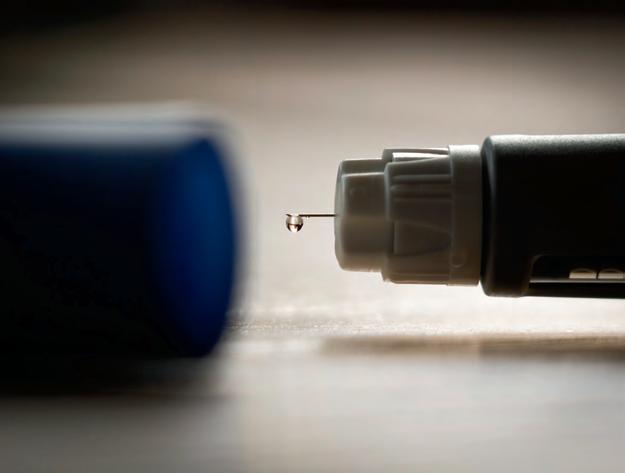
Microdosing Injector
To examine where we are in the aesthetic trend cycle, one needs to appreciate how far treatments and procedures have come even in just the past decade. We have stem cell therapies and hydrating skin boosters and allograft fat transfers (aka, using cadaver fat as filler); there are exosomes and polynucleotides; and there are increasingly effective skin-tightening treatments (like Sofwave and Ellessee) and more undetectable facelifts and breast implants (like Motiva). There is also, says Dan Belkin,
According to the International Society of Aesthetic Plastic Surgery, nonsurgical procedures (your neuromodulators like Botox and so on) went up nearly 60 percent between 2019 and 2023. And the lines between beauty and wellness have continued to blur. “Optimization has entered the chat and will continue to become more important in the aesthetics space,” says Belkin, whose patients are regularly microdosing GLP-1s and experimenting with injectable peptides in the name of not just losing weight and increasing their lifespans, but also improving their skin by boosting collagen. Sean Alemi, MD, a New York-based facial plastic surgeon, is seeing the same among his patients who are dabbling in microdosing GLP-1s plus glutathione injections and infusions of everything from vitamin C to NAD+. “It’s all simply getting woven into the fabric of patients who are aesthetically minded,” says Alemi. Not to mention ones who are programmed to biohack every touchpoint of their lives already. “The aesthetics industry is being driven by this desire to drill down more and more specifically into what
you can do, all the way down to little molecules,” says Carolyn Chang, MD, a plastic surgeon whose San Francisco practice attracts a heavy Silicon Valley clientele. “It’s tapping into the need that people have to optimize themselves to the nth degree.” The ability to dramatically (or even subtly) alter our appearance via a combination of cosmetic treatments and medications seems more possible than ever, and that’s partially because those transformations are more visible than ever via social media. Our aesthetic optimization obsession is being fueled by our algorithms. Doctors, estheticians, injectors, and people who aren’t any of the above have crowded our feeds with before-and-after photos, and detailed disseminations (or rather speculations) of what high-profilers have been doing to their faces and bodies turning comment sections into beauty battlegrounds. Add to that the fact that many of the images we are seeing have been manipulated, often heavily filtered and now, increasingly, AI-generated, and it’s impacting what people are asking for when they actually go see a professional. According to Melissa Doft, MD, a New York-based plastic surgeon and founder of an eponymous skincare line, because of all that, nowadays women want a snatched look and glossy skin with nary a pore or wrinkle in sight. “I can’t tell you how many young patients I have getting preventative Botox in this movement toward no wrinkles and asking about facelifts,” says Doft, adding that they often use online speak like “mini” to describe what they’re looking for. A mini facelift is not a technical or anatomically correct term, says Alemi, who often spends a significant amount of time in consultations unpacking this topic with patients who come in armed with a lot of information, but without the basis to really understand it. The proliferation of doctored images of results poses a challenge for real doctors too. “When patients see photos that are manipulated, it creates an un-
realistic expectation of what’s possible,” says Alemi. Doctors who once competed with Photoshop are now up against advanced filters and AI, whose morphing ability is unparalleled. “There’s no way that somebody is going to take a 70-year-old and make them look 22 or give someone with small eyes big doe-shaped ones,” says Doft. “Certain things are just impossible, but tech and AI have raised our expectations so high.”
It’s never been harder to tell what’s real and what’s not on social media
Even in beauty, tech is making it more difficult to discern the fake news. “It’s never been harder to tell what’s real and what’s not on social media,” says Belkin. Was she born with it, or is it a double Paris filter? Or a full-on Facetune tune-up? Tech is also radically impacting what we collectively consider to be beautiful. Advertising and marketing have long presented us with standards (often impossible ones) of beauty, but with social media, it’s coming at a rapid clip. And directly to the palm of our hands. “You are programmed now to think X, Y, and Z looks good because you’re watching it over and over again,” says Chang. And how is AI determining what is deemed attractive anyway? Often symmetry, thinness, and a Caucasian—read: biased—value system of beauty. “It’s homogenizing what we think of beauty in a more concrete way than the Kardashians ever did,” says Chang.
Many whose business is aesthetics (and whose practices are often in coastal zip codes) are steadfast about preserving their patients’ individual beauty markers. And advancements in treatments and procedures (facelifts have indeed come a long way) have arguably made the “you, but better” model more viable, at least if you have the financial means to achieve it. The desire to stall the aging process is age-old, but amidst our increasingly filtered existences the desire for difference is powerful too. Anything that diverges from the sea of chiseled jawlines and doe-like eyes and pouty

lips feels like a visual salve right now. We are not starved for beauty as Andre Leon Talley famously quipped, but for a specific kind of beauty; we want to see something distinct. Give me Aimee Lou Wood’s imperfect teeth amidst all those shiny, cutand-paste veneers, or Pamela Anderson’s wispy smile lines and un-spackled skin, or Megan Stalter’s fuller figure, sexier precisely because it hasn’t been put through the Ozempic spin cycle. This quest for so-called perfection is not new of course; Doft points to The Picture of Dorian Gray, a book written in the late 1800s about a young man who
makes a Faustian bargain to preserve his youth and beauty. When the book was recently reimagined for Broadway with Succession’s Sarah Snook playing 26 characters spanning gender and age (and, in turn, appearance), director Kip Williams brought in a thoroughly modern element to drive his point home: technology. Using myriad screens, live video, various filters, and camera phones, Williams relied on technology to criticize the impact of technology in our blurry quest for beauty. Because while the search for youth and beauty may be old, the engine powering it is very new.
ove over, L abubu —
The hott est ne w bag
charm is a $485
Words Gwen Flamberg
The long-awaited La Beauté Louis Vuitton makeup line is finally here. And while the lipsticks are seriously sumptuous and eyeshadows glitter like the top of the Chrysler Building (more on that later), it’s the small leather goods accompanying the launch that have novelty fashion lovers in a chokehold. As coveted and collectible as an LV design collaboration — think Stephen Sprouse graffiti bags and Takashi Murakami’s Cerises cherry print — the accessories in the line scream status. For clip-ons, there’s a little pouch to hold lipstick and a mini-hatbox to house an eyeshadow compact; one can also stash the elevated blotting papers in a monogram sheath, store diminutive lip and eye brushes in a shrunken attaché, or keep a single lipstick — or some other desirable — in a teeny, tiny, heavy-click trunk. (It’s $3,000.) They practically smell rich (as opposed to the lipsticks, which actually DO smell rich, thanks to bespoke fragrances created specifically to scent them by master perfumer for the maison, Jacques Cavallier Belletrud — mimo-
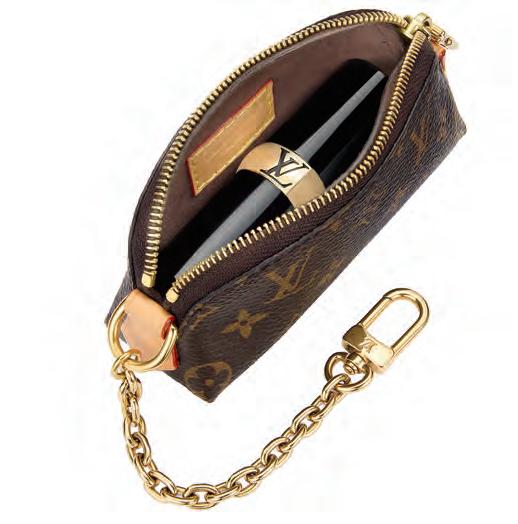
sa, jasmine, and rose for lipsticks; the lip balms are redolent of mint and raspberry.)
If the collection sounds like the height of luxury that’s because it is — and not by accident. Every detail of La Beauté has been painstakingly thought out, with deep reverence for the history of the brand. Going back to its Gilded Age roots, Louis Vuitton trunks in 1854 had compartments expressly meant to cradle fragile fragrance flacons, guarding them from damage during transatlantic crossings and the like. By the roaring ‘20s, the brand was producing refined vanity cases and elegant beauty accoutrements including tortoiseshell hairbrushes, carved ivory hand mirrors and compacts, all designed to heighten the allure of traveling in style. A custom vanity was commissioned by noted French Opera diva Marthe Chenal in 1925 while an exquisite toiletry case was crafted for Polish composer Jan Paderewski. When the brand tapped makeup maestro Dame Pat McGrath to serve as creative director, it was this rich archive that served as her ultimate inspiration.
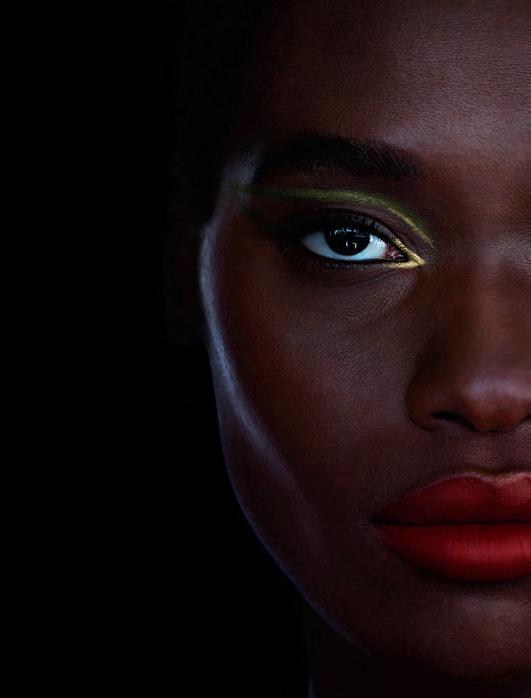
The symbolic references exist in the cosmetics, too. They’re “the result of extraordinary craftsmanship, creativity and innovation,” McGrath says. The iconic makeup artist has, in fact, worked behind the scenes on Louis Vuitton’s fashion shows for more than 20 years, cementing the visual identity of each campaign through beauty. She now brings this poetry in motion to the masses via 55 lipsticks, 10 lip balms and eight eyeshadow quads with a variety of special effects.
Ringing in at $160, the LV Rouge lipstick — which comes in matte and satin textures — is now the most expensive of its ilk on the market. The mega-pigmented formula is packed with treatment ingredients like shea butter and hyaluronic acid for a kiss of comfort and extra-long wear. Sleek, weighty tubes, the brainchild of industrial designer Konstantin Grcic, are emblazoned with the house’s signature flower, a gold stamp set upon a translucent top so one can peep the shade inside. The forever case is keepsake-worthy; refills cost $69. As for shades, well of course they’re LV-co-
ded. The intense scarlet of 854 Rouge Louis evokes the bold spirit of the intrepid traveler. The hue of the historic brown monogram tote and a classic red mingle in 8g6 Monogram Rouge. Thanks to a blend of warm and cool undertones, the rich brick is as universally flattering as it is unique.
McGrath’s stamp is never more evident than in the LV Ombres eye palettes. The quads run the gamut from quiet luxury-inspired pumped-up neutrals to piquant blues in six high-tech finishes from ultra-matte to foil and gleaming glitter. Shimmer particles here are actually wrapped in translucent gel for the ultimate reflective high shine. The LV Baume lip balms also offer a sought after soft sparkle that has a visually plumping effect.
But not every piece in the collection can fit in — or on — a handbag. For those that desire a not-solittle luxury and a return to Gilded Age splendor, one can commission their very own specially designed life-sized vanity trunk modeled after Pat McGrath’s backstage makeup station — price available upon request, naturally.
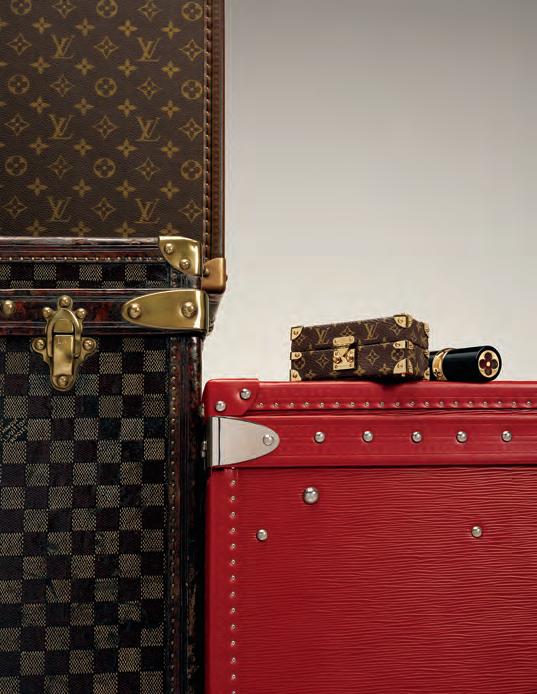
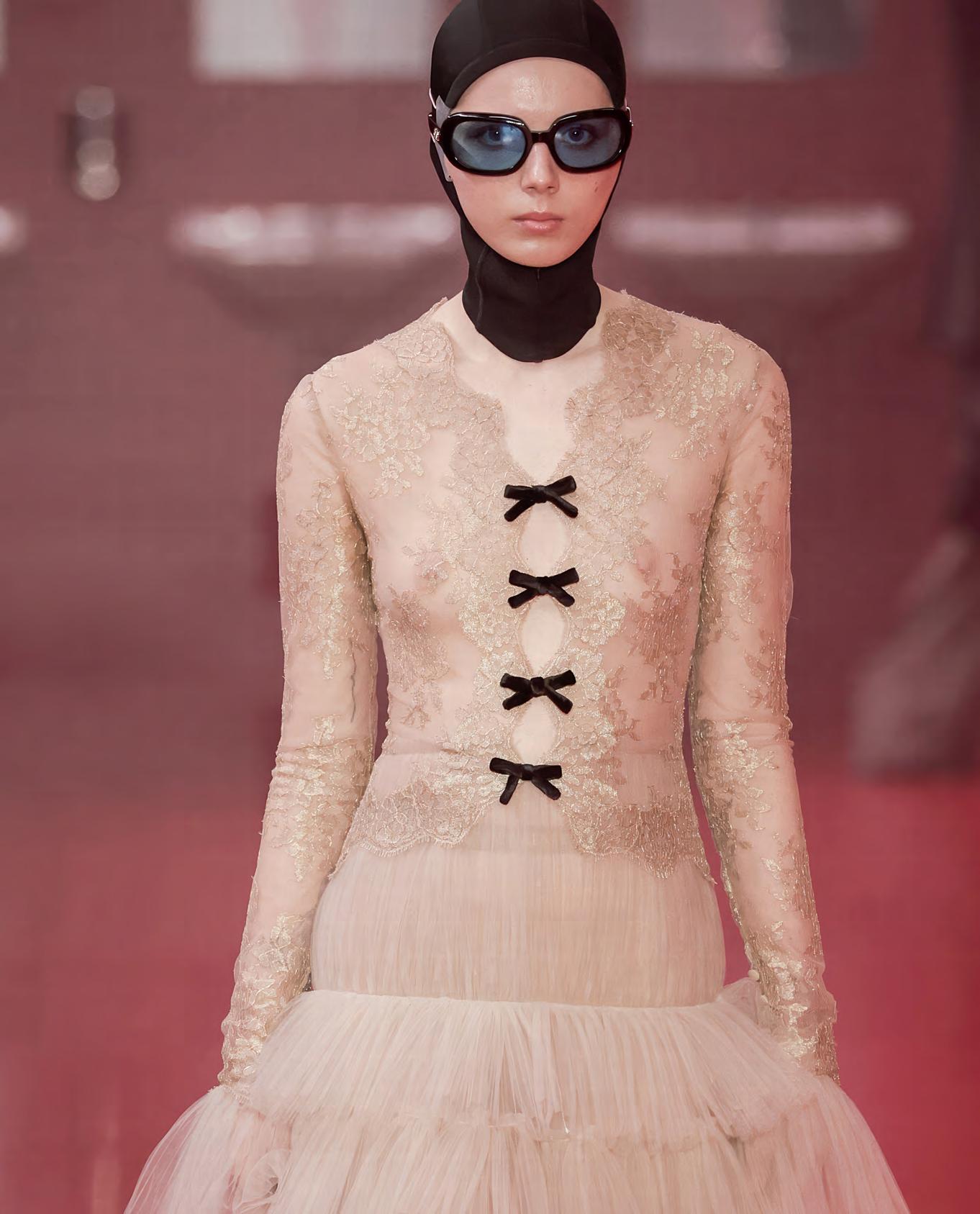
Fall int o decadence. Gwen Flamberg
strongly suggests a fe w
st at ement-making
power players
for the season

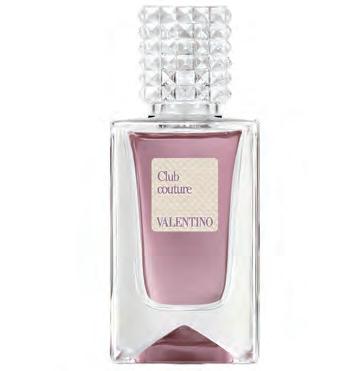
Meant to evoke the ultimate free-spirited vibe, Valentino Club Couture Parfum combines radiant orange flower with fig and earthy patchouli — a gender-fluid aroma for those who love to follow the night into dawn. ($340 for 100ml, valentino-beauty.com)
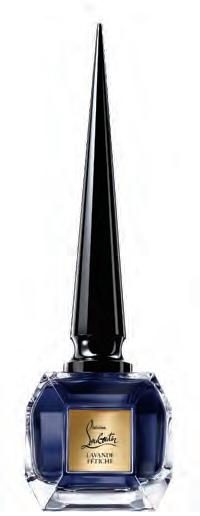
Melding the powdery softness of lavender with sensual leather, perfumer Domitille Michalon aimed to “explore unexpected contrast” while making Christian Louboutin Lavande Fétiche. The result: a waft that’s at once audacious and cool. ($250 for 80ml, us.christianlouboutin.com)
Bold Scent. No wallflowers here.
Fragrance now is all about exuding a bam, in-your-face aroma.
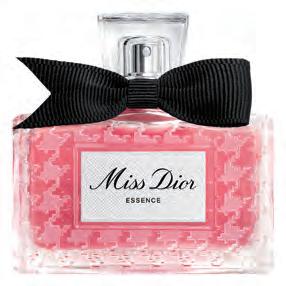
The latest take on the scent that Christian Dior created for his little sister Catherine, Miss Dior Essence is “a sexy and irreverent popart statement,” says brand perfume creation director Francis Kurkdjian. In this concentrated expression of bold femininity, “astonishingly fresh and sparkling” elderflower and blackberry mellow into jasmine, then woody oak. ($198 for 80ml, dior.com)
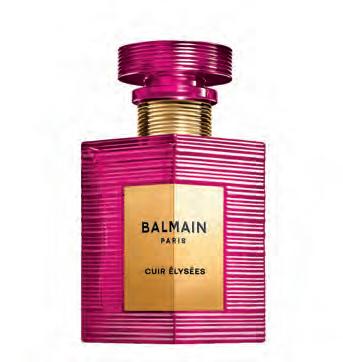
Bursts of juicy raspberry in Balmain’s latest — Cuir Élysées — mingle with the smoky, musky scent of leather softened by sandalwood. A take-no-prisoners delight for the senses!
($400 for 150ml, balmainbeauty.com)
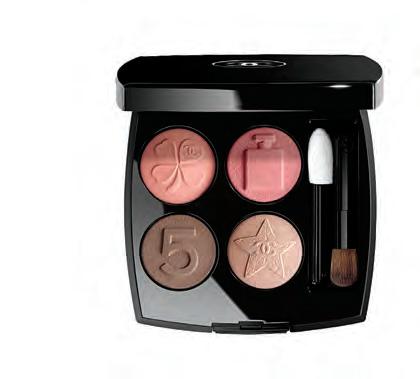
The peach, beige and coffee hues in Chanel’s Les 4 Ombres Boutons Multi-Effect Quadra Eyeshadow in Mademoiselle are infinitely wearable, but it’s the embossed talismans — all deeply meaningful to Gabrielle Chanel herself — that will elicit swoons.
($86, chanel.com)
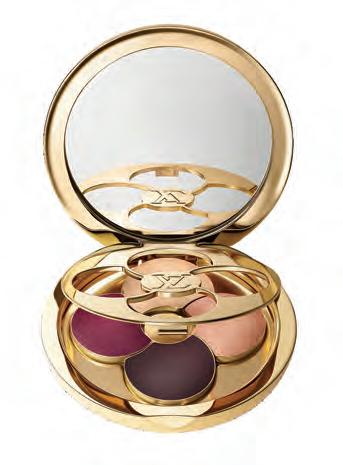
Crafted by legendary makeup artist Pat McGrath to create myriad looks from softly sculpted to mega-dramatic, the glitter in the pearly hues in La Beauté Louis Vuitton LV Ombres 896 Monogram Rouge is wrapped in a transparent gel for intense shine. ($255, louisvuitton.com)
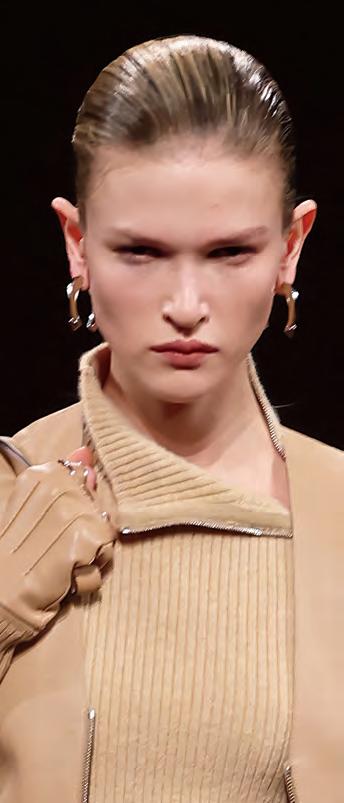
Coveted Compacts. Chic and functional, pull one
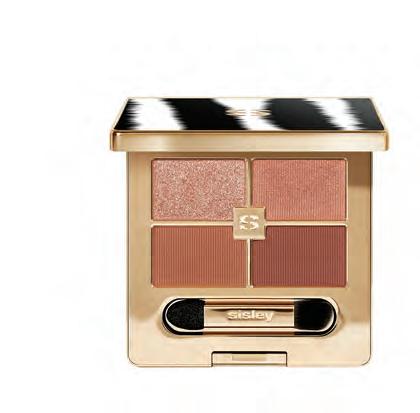
More unexpected than taupe, the flat-out chic pinky-nude shimmer and matte tones of Sisley Paris’ Phyto-Eye Palette in Bois de Rose Eye add effortless definition that’s universally flattering.
($125, sisley-paris.com)
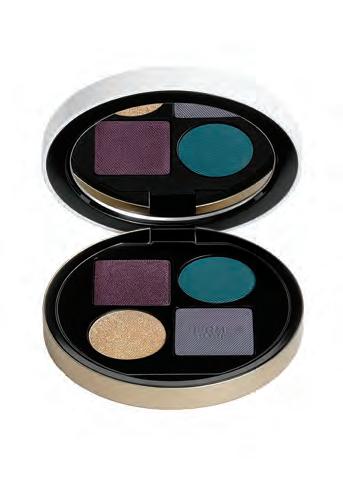
heads will turn.
Reminiscent of the uniquely saturated colors that make a handbag unmistakably Hermès, the shades in the Pierre Hardy-designed case of Le Regard Hermès Limited Edition Ombres Optiques in Studio Des Fleurs include deep purple and rich-as-hell teal. ($114, hermes.com)

A few spritzes of the aptly named Major Hairspray from celebrity mane man Chris McMillan’s just-launched line boosts roots like nobody’s business, then locks in body and blocks humidity. ($36, sephora.com)

For soft, wispy bangs that sit perfectly so, lifting at the hairline with a round, grippy boar-bristle brush like the La Bonne Bosse N.05 (here in Emerald) has been the secret of session stylists since Jane Birkin actually cut hers. ($178, labonnebrosse.com)
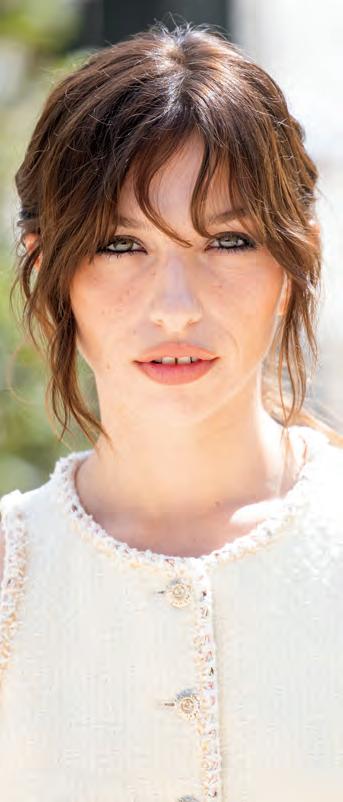
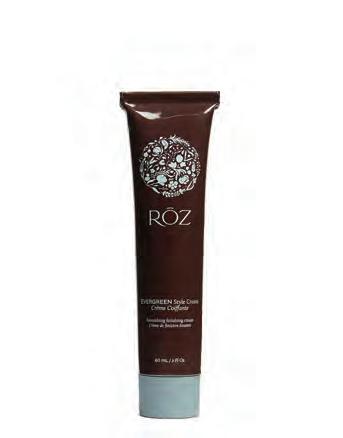
Perfect any bob — or pixie for that matter — with a dab of nourishing styling cream. One with a light-to-medium hold, like Rōz Evergreen Cream, tames flyaways and smooths strands to heighten shine in a sexy, done-but-not-overdone way. ($32, rozhair.com)
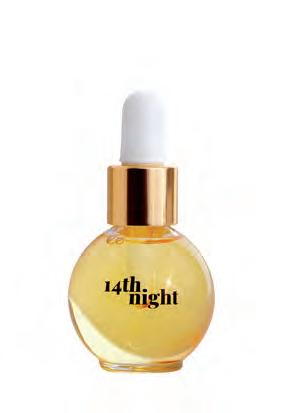
The secret to perfectly effortless model-offduty texture? Run a few drops of hair oil through locks and let it dry naturally. 14th Night’s camellia-spiked formula softens frizz— just enough. ($124, revolve.com)
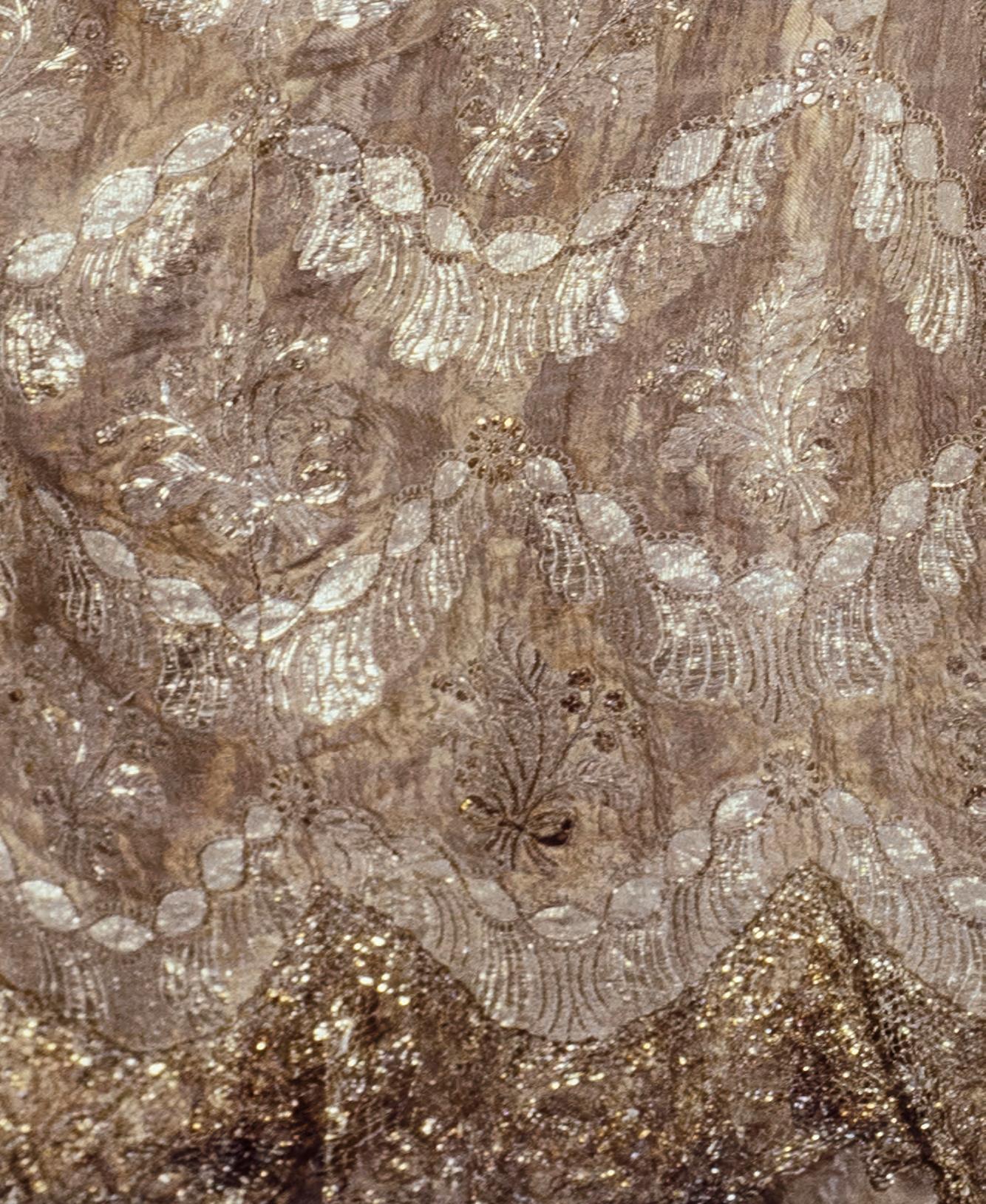
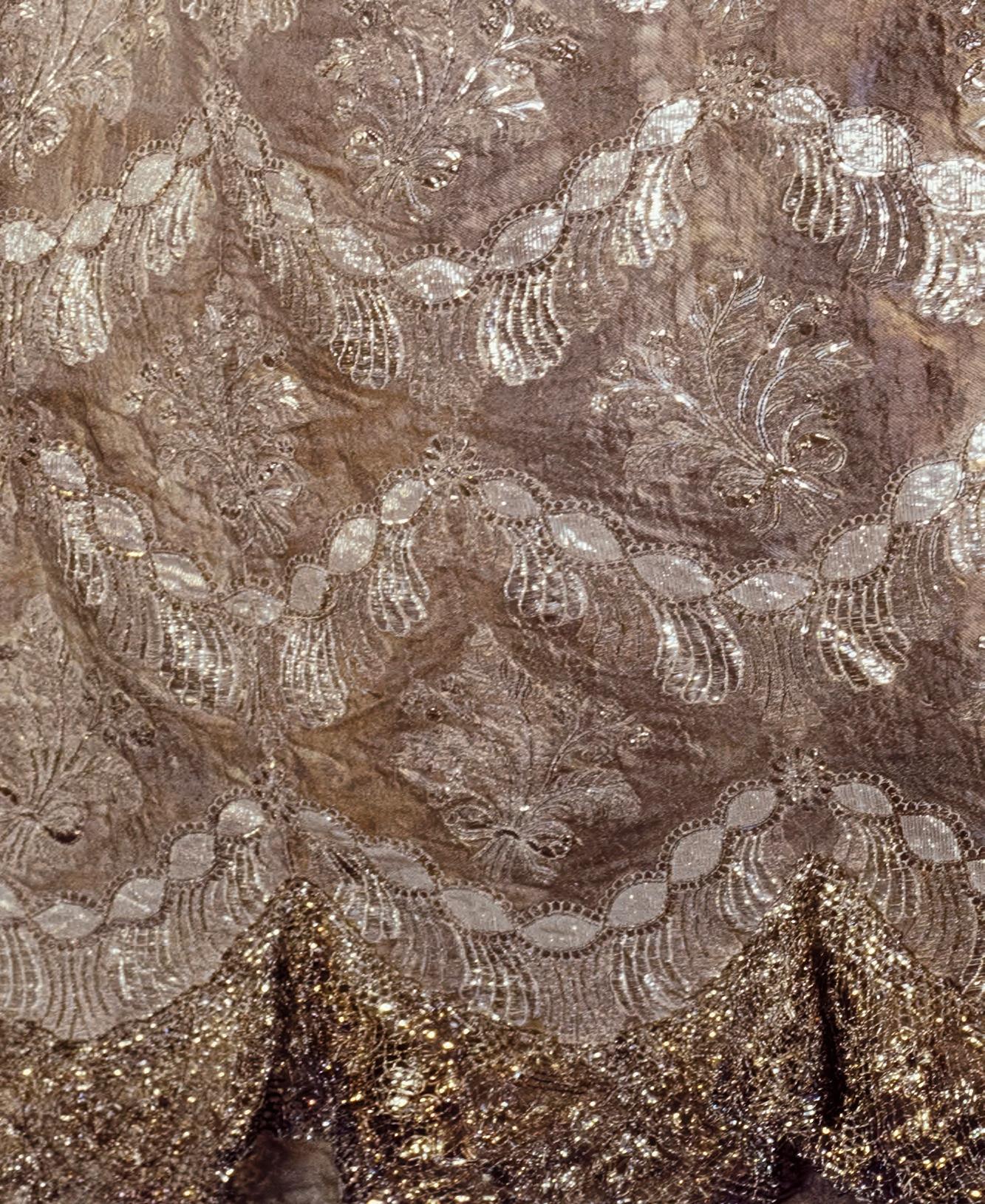
Desire is where taste begins — not with need, but with longing. To be desired is power; to desire is to be alive. The people, objects, ideas, and identities that draw us in — and the quiet hunger that makes us reach for more. What moves you may surprise you.
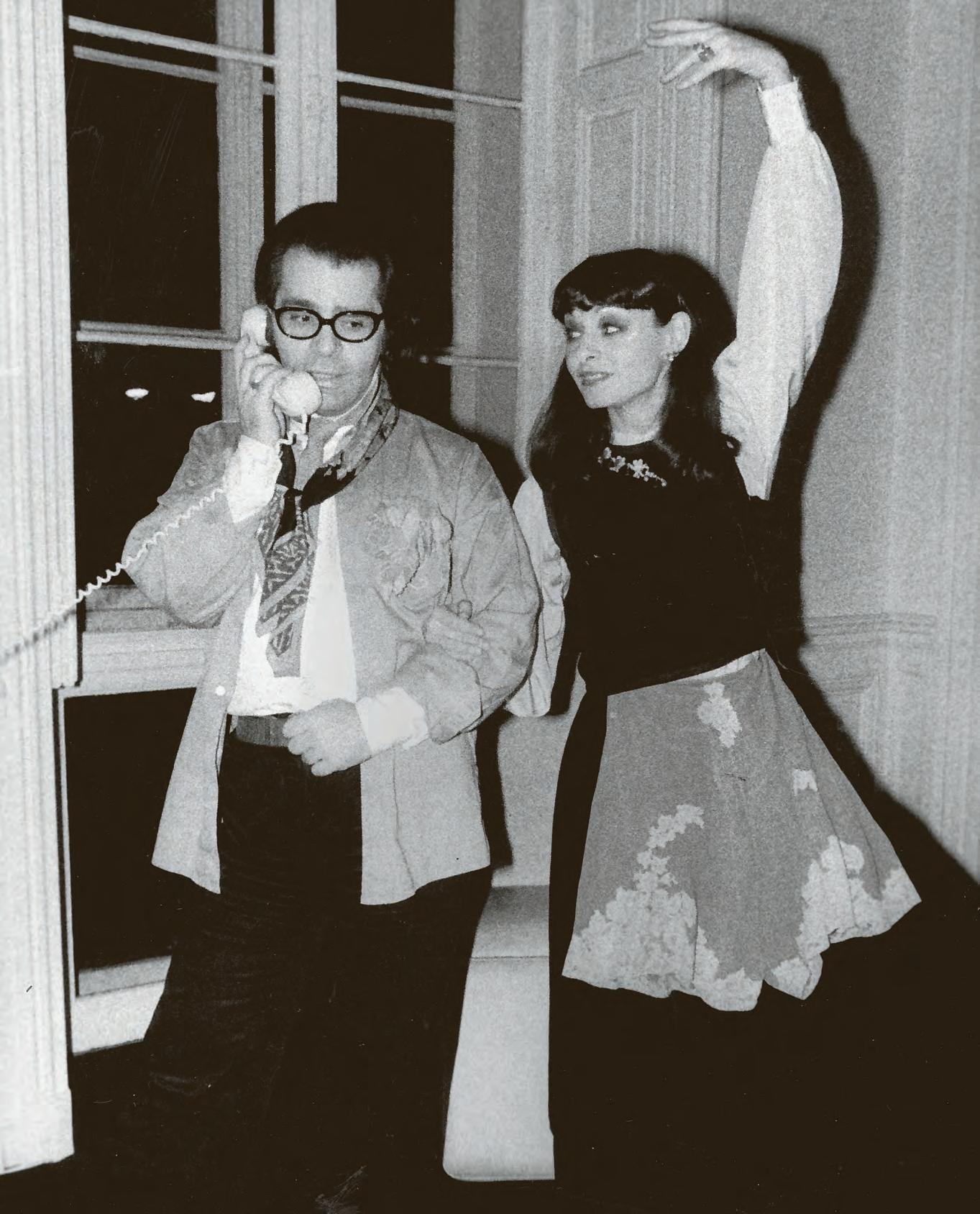
The w ild desire for fashion g ifts
But I wanted it as a gift, the way you want an apology or a kiss; it loses its value if you ask for it.
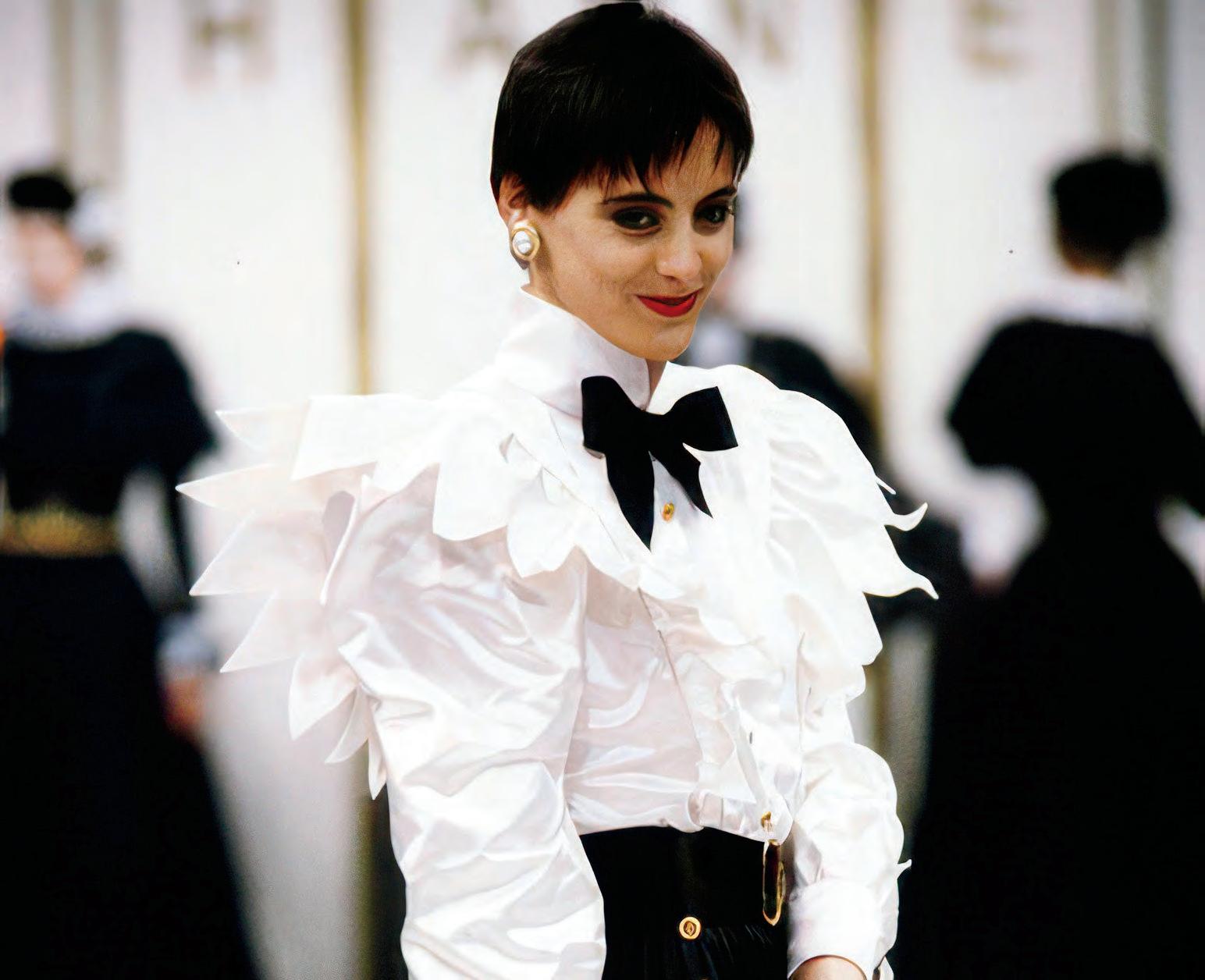
You can’t be friends with a fashion designer without wanting their clothes. If you don’t wildly desire what they make, you have no reason to be friends with them, right? Designers know and use the fact that women will fall in love with what they make; models are sometimes paid in clothes and happy about it. The pay becomes a gift and seals the model into the creative process. When in 1983 Karl Lagerfeld went from being the multifaceted designer for Chloe and Fendi to animating the legacy of Chanel, we had been friends ever since the illustrator Antonio Lopez had introduced us at the Café de Flore. On most of my visits from London, I stayed with Karl at his place on the Rue de l’Université, which back then was
the side wing of the mansion into which he would eventually move. We had been such good friends that Karl’s offer to make my wedding dress was good enough reason for me to get married. When he was designing the dress – between collections of Chloé, Fendi, other gigs – he would fly me over to Paris to choose the antique fabrics, to try on tricorn hats or purple-bronze leather boots. The dress, I must explain, was a four-part riding habit in the manner of the 18th century, composed of an antique mauve silk taffeta underskirt and a bodice, both edged in pleated ruffles, and an equally antique silk ottoman in a slightly deeper shade of mauve cut into an overskirt and a tight jacket, the wrists and bodice of which were embroidered by
Monsieur Lesage with antique bugle beads in silver and pearl. The tricorn — antique mauve silk ottoman, of course — was the only possible headgear, with a puff of mauve tulle erupting behind like a smoky tail.
No one questioned my choice of a color associated with half-mourning for my wedding dress; they all must have known this marriage would barely last five years.
Karl was profligate with gifts and sometimes played favorites. Which dress to what girl? The Schiaparelli jacket that remains my treasure to this day came from a vintage dealer’s loft near the Bastille and almost went to Pat Cleveland, but thank God we all agreed it looked garish on her and restrained on me.
“It may not be Schiaparelli,” said Karl. “It may be Louiseboulanger, and that’s spelled in one word.”
I have never found out, and it’s simpler to say “Schiaparelli” than to say “Louiseboulanger, and that’s in one word,” so that’s what I do.
By the time Karl stepped in the house of Chanel, we had been staying up half the night talking about books, old movie stars, and the history of fashion for a good 12 years. He knew I loved the novels of George Sand and gave me all 18 volumes of her letters in an edition by Garnier that unfortunately had bright yellow dust jackets.
designs for Chloé were delicate crêpe de chine tea gowns and shrugs in a style that owed a lot to the period between Art Nouveau and Art Deco, and he sometimes gave me a dress, though more often he presented me with strange flea market finds, like the mauve chiffon old lady panties with lace inserts. He knew how much I loved mauve, but those inserts also matched the lace on the blouse I’d worn the first time we danced the tango together. Double connection.
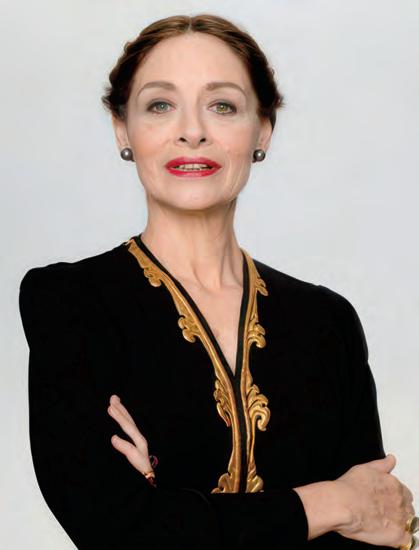
The author in 2008 wearing the Schiaparelli (or Louiseboulanger) 1930s jacket
I desired the clothes he designed and the antique clothes they were a little bit based on, and everything I loved floated in a private, uncommercial, slightly renegade flea market space of our own. Nothing was expensive. I could desire the dreams without any kaching. But then the stakes ramped up. After years of fashion desire fulfilled by a satin handbag or some old crepe de chine, I spied a mauve fox Fendi coat in a store in Beverly Hills. The shock was intense. It was mauve, it was designed by Karl, how was it possible it was not mine? It had to be mine. It took several years before the fox coat materialized in my life. And by the time it had, Karl had gone to Chanel. He’d taken off into the stratosphere of fashion, where clothes were status and money and commerce, solid universally recognized brands.
Because of Karl, who carried a small black clutch with the silver initials M.D, a gift from Marlene Dietrich, I knew that her stage costume was made of an embroidered silk chiffon called Soufflé. To teach me movies, he took me to see Louise Brooks in Lulu and Diary of a Lost Girl. To prove to him that I knew how close he was to the spirit of Paul Poiret, I laboriously copied out George Lepape illustrations for him at the Musée des Arts Decoratifs. His
Because of his new role, he was no longer a private treasure, but a very busy public figure. I suddenly knew what it was to desire things that everyone else wanted. I was no longer his houseguest; I was almost an onlooker.
It hurt. Karl now had a hedge of people around him, so it was no longer simply a case of hanging out and pointing at what I wanted, or moogling around flea markets and vintage dealers to poun-
ce on gold braid. The fulfillment of my fashion wishes was no longer a sure thing. As in any love relationship when you are not sure of getting what you want, you become insecure and shrink to a fraction of your height.
I went to the Chanel boutique on the Rue Cambon, unannounced, almost like a spy, to see how his eye had remade that world. The surfaces were hard white lacquer and glass, and so terribly clean. The boutique was so organized, so commercial, so sleek and uncompromising. The thick wool tweed suits that had been the mark of lady mayors and minor government ministers, now redesigned by Karl, were suddenly such haikus of style that my fingertips barely dared touch them. They were so beautiful. And so well set off by the polished cleanliness around them. If I dared, I could be this new woman he’d invented. Delicate, ladylike, dignified, important, discreet, blossoming within the laws of his new country. I wanted a black tweed suit so much I could barely breathe. But I wanted it as a gift, the way you want an apology or a kiss; it loses its value if you ask for it. I had to position myself where my desire for the suit — and a few other things, it was time for my first Chanel bag, a black ciré raincoat, and why not that cashmere cardigan with the gold buttons? — would be visible to Karl. I had to be where the legitimacy of my longing would ensure the prompt granting of my wishes. There was much maneuvering; many people, many lunches, hints dropped, chance encounters arranged. I wanted that suit and that raincoat so much — oh, and the silk crepe blouse with the floppy crepe bow at the top of the V décolleté, and the bag, and, oh, of course a pair of the black tipped
shoes, and the tiny triple-ply black cashmere cardigan with the gold buttons on black satin edging. I felt empowered by the ambition of my wanting, by wanting things with price tags I had not looked at, and I felt diminished by the idea that maybe I would not have them, maybe I did not deserve them. It was like being Alice in Wonderland with the “Drink Me” bottle that kept changing her size, like Alice tantalized by the disappearing Cheshire Cat. Would the suit the shirt, the raincoat, the shoes, and the bag be mine?
At last, they arrived, and miraculously, within the season for which they had been designed, unlike the fox fur coat, which had dawdled in limbo for years.
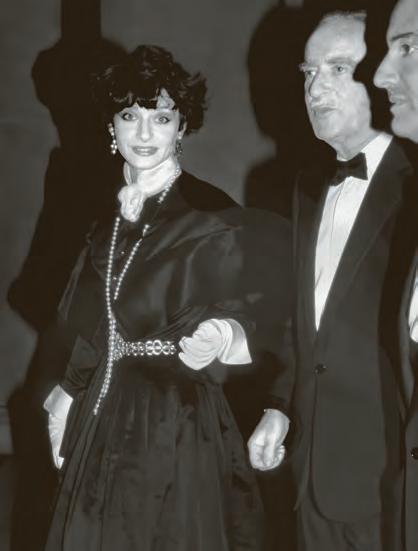
The author in full George Sand costume arrives at the Metropolitan Costume Institute Gala in 1984 with Alex Liberman and Alain Coblence.
Another season passed; I was afraid to try the same maneuvers again, so I let it be. Maybe Karl had forgotten our shared communion with the past.
But then came the unimaginable gift. Karl dedicated his Fall/Winter 1984 Chanel collection to George Sand. Ines de La Fressange walked the runway wearing white satin blouses cut exactly like the bodices George Sand wore in the daguerreotypes on the covers of her correspondence in the bright yellow Garnier edition. My George Sand! Our George Sand! Karl had made a baby from George Sand and Chanel! Here he was, publicly honoring the private letters of my idol, acknowledging her private desires as expressed in the 18 volumes he had given me. George Sand was twice his gift, and I hadn’t had to ask for it. His salute to what we both loved emboldened me. I could tell Karl everything I wanted in that collection, because it so clearly was mine. And because it so clearly was mine, I didn’t have to ask for much. Sometimes what you want is already yours.
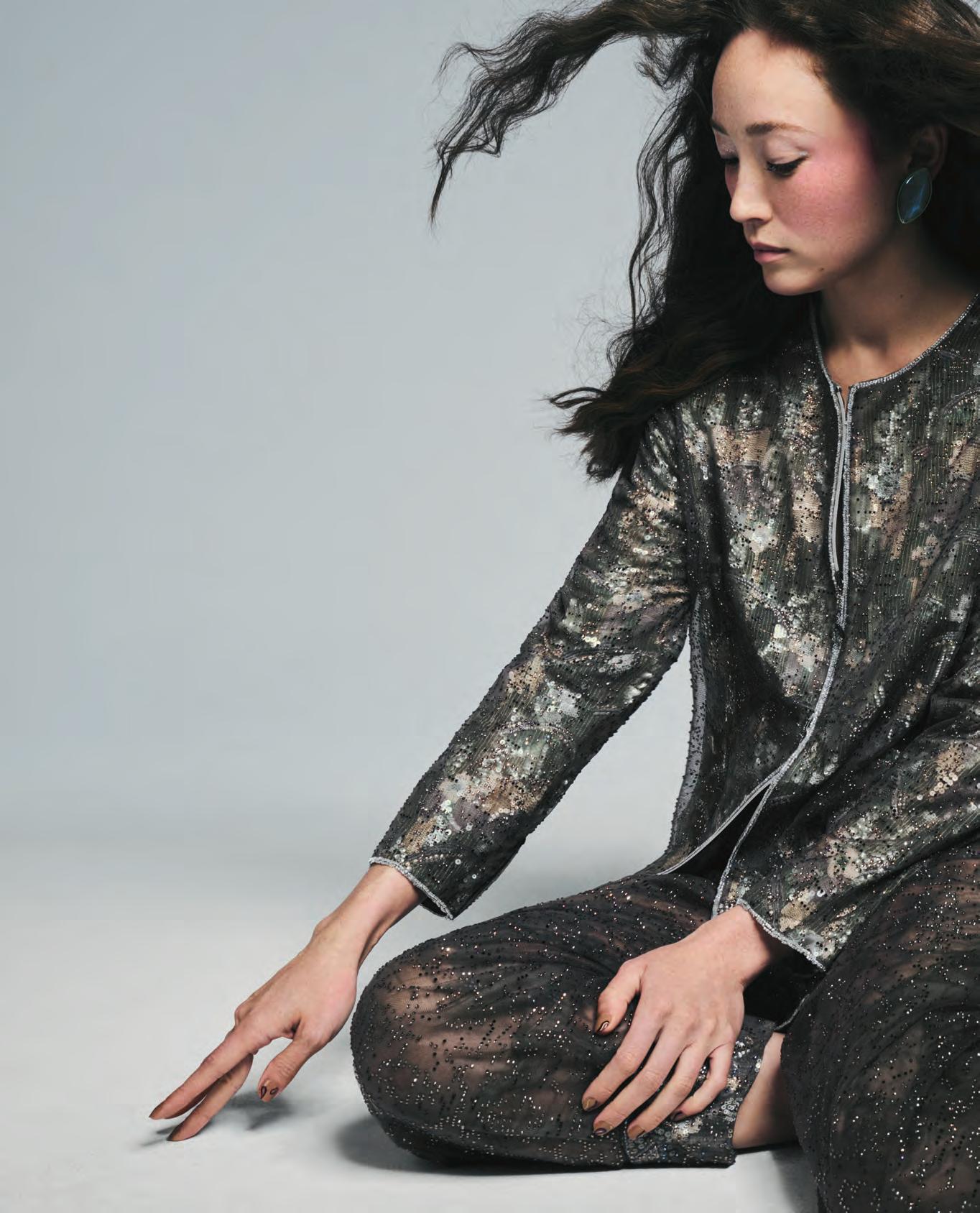
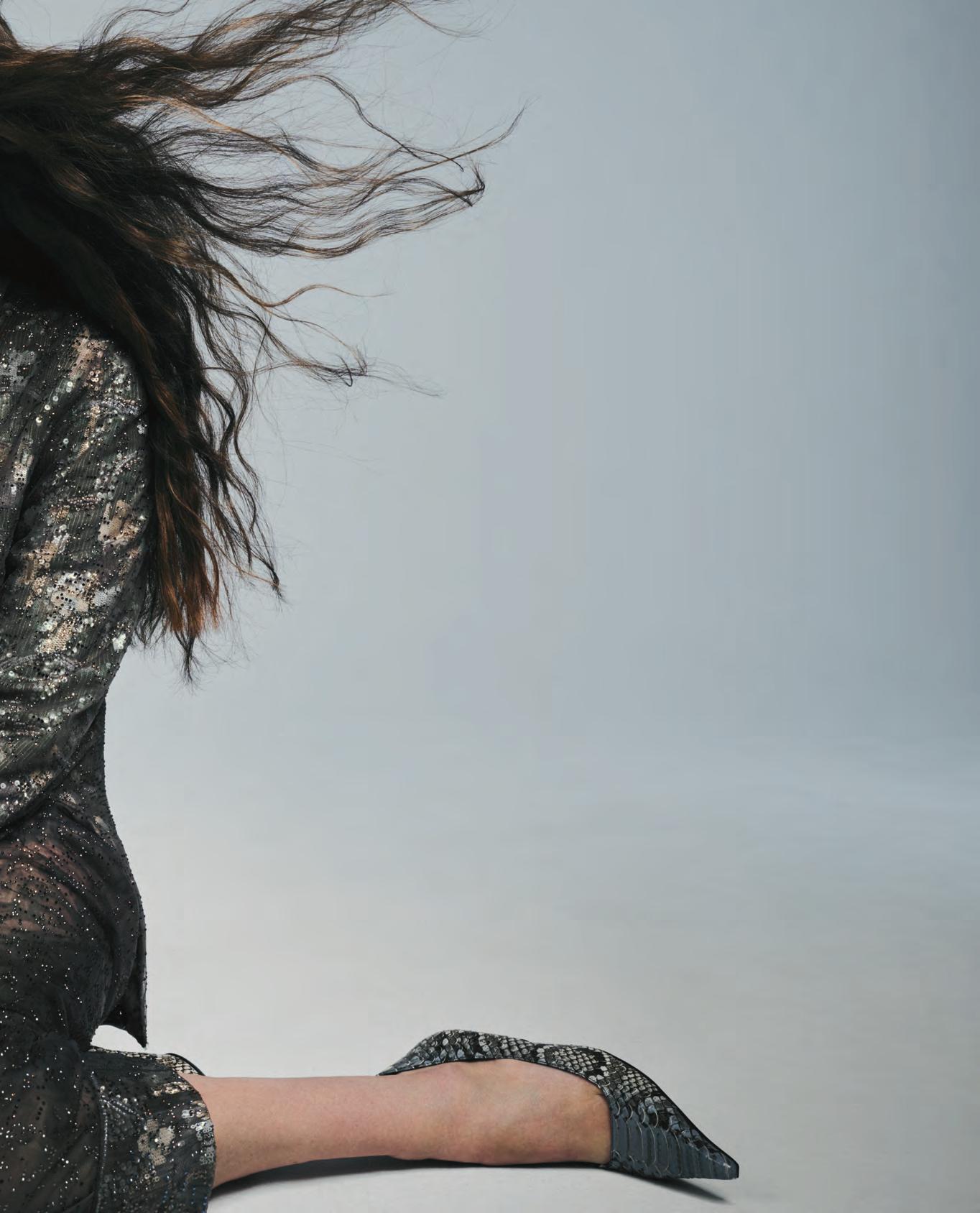
In recent years, it’s been harder and harder to make a splash in showbiz without a famous pedigree. Lily-Rose Depp (daughter of Johnny), Zoey Deutch (daughter of Lea Thompson), Jack Quaid (son of Dennis), Deacon Phillippe (son of Ryan), Kaia Gerber (daughter of Cindy Crawford and Rande Gerber), Ella Beatty (daughter of Annette Bening and Warren Beatty), Lewis Pullman (son of Bill) and Eve Hewson (daughter of Bono) are just some of the new generation of hopeful stars crowding the red carpet and stealing roles from newbies who might have, in another time, been discovered at the famed Schwab’s Pharmacy.
So it’s even more remarkable that the 27-year-old up-and-coming actress Havana Rose Liu was discovered just walking through Washington Square Park.
Now Liu didn’t exactly fall off the apple cart or sprout from some cabbage patch in Nowheresville, U.S.A.
She’s a born-and-bred New Yorker. As a teenager, she graduated from Saint Ann’s in Brooklyn, an artsy private school known for such distinguished Hollywood alumni as Jennifer Connelly, Lena Dunham, and, more recently, Lucas Hedges (son of writer/director Peter Hedges) and Maya Hawke (daughter of Ethan Hawke and Uma Thurman).
After a few semesters at Skidmore University, Liu
transferred to the Gallatin School at NYU. She still lives in the trendy area of Dumbo, down under the Manhattan Bridge Overpass, where she grew up.
Of course, Dumbo was even trendier in the early aughts. But blame that location choice on Liu’s mother and father, a forward-thinking couple if there ever was one.
Two years before Liu was born, her parents, David Liu and Carly Roney, co-founded the wedding website the Knot, which turned into one of the World Wide Web’s first big success stories. In a romantic story very on brand with an Internet mecca devoted to creative nuptials, Liu and Roney named Havana after a Cuban establishment in D.C. where they had their first date.
“It was called Havana Central or something along those lines,” says Havana Rose Liu, now. The “Rose” comes from her grandmother. “People think I named myself because it’s such a great name.”
Her younger brothers, Cairo and Dublin, are also named after capital cities the Lius had dreamed of visiting. On each Liu child’s 18th birthday, they plan a family trip to their namesake. When Havana was 18, they all went to Cuba.
“It was truly the most special place I’ve ever been,” she says. Dublin is still on the agenda. He’s only 17.
It should not come as a surprise that Liu’s parents have continued with their quirks. Since moving on
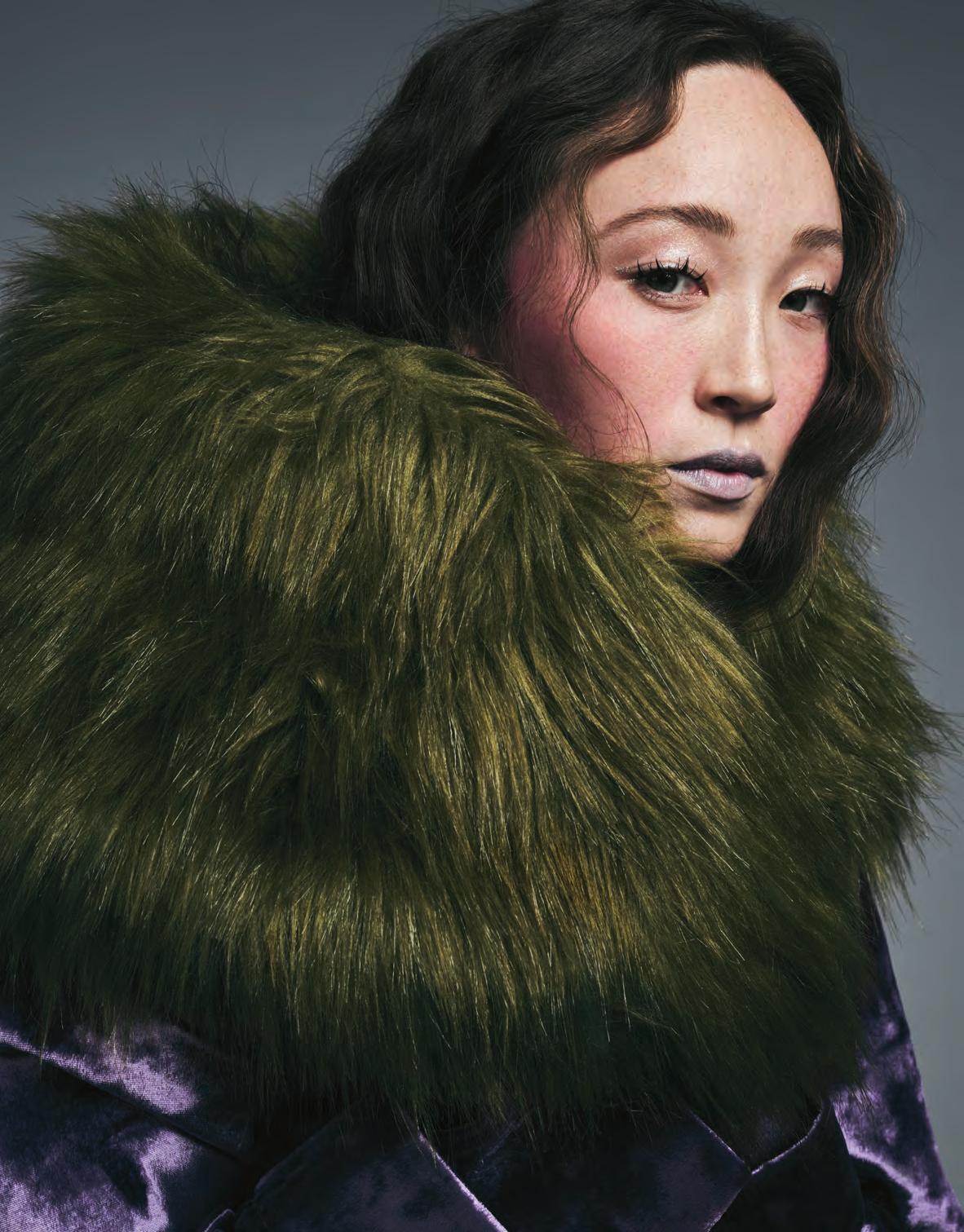
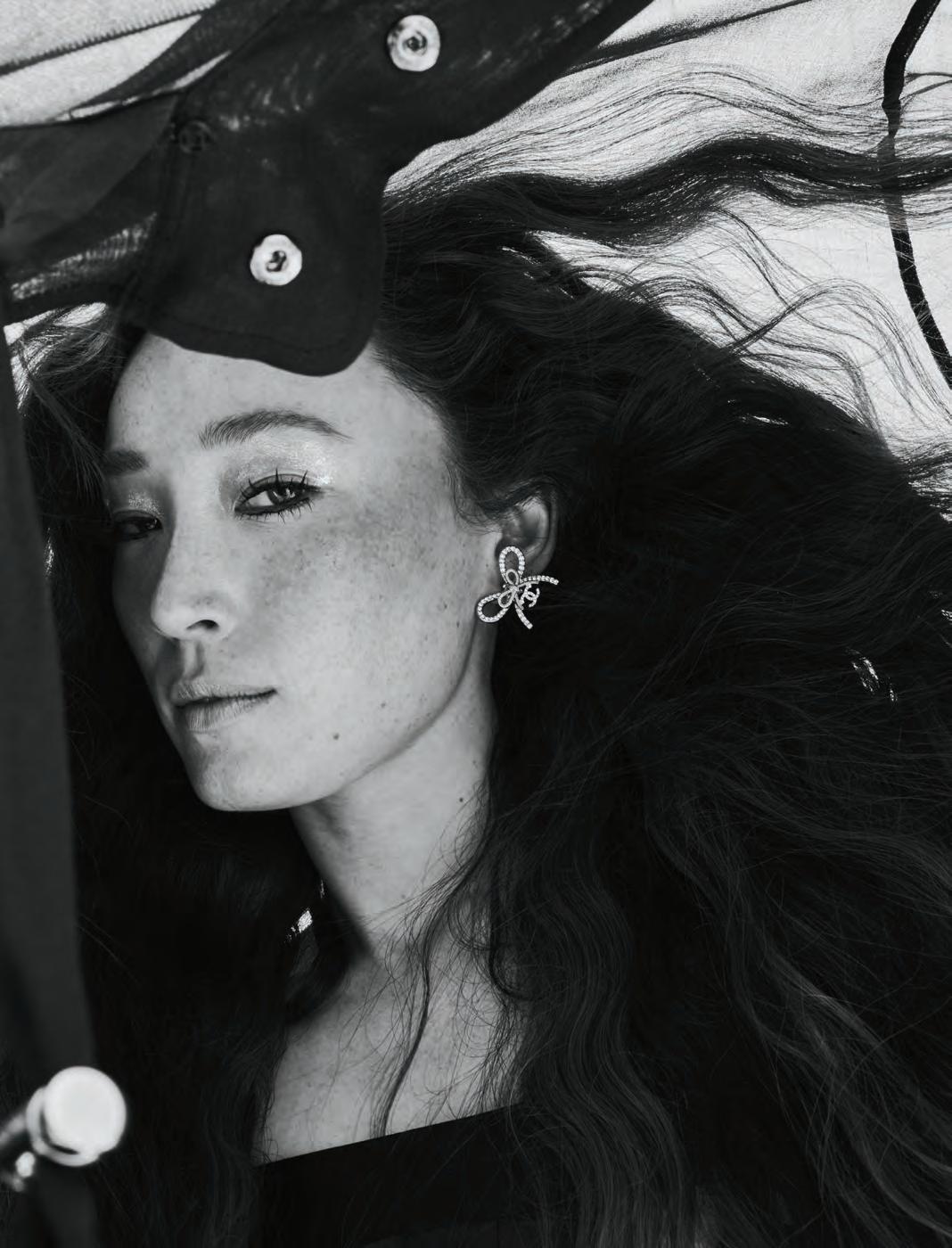
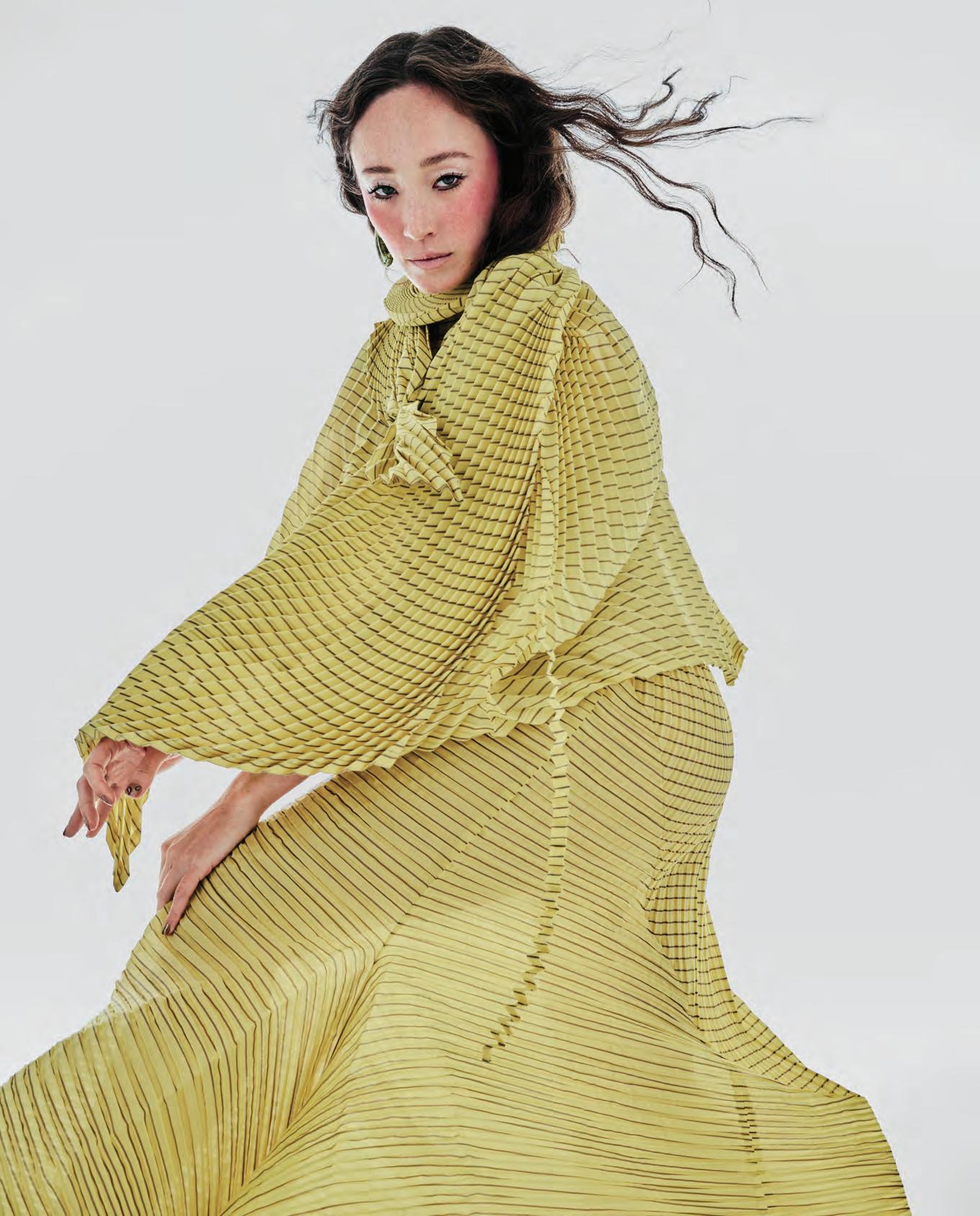
from the Knot, they now farm oysters.
“I’m actually allergic to oysters, though we joke that it’s not yet clear if I’m allergic to marriage,” says Liu, who identifies as pansexual. Her parents were initially skeptical of their daughter dipping her toes into acting. “But they’ve given me a lot of room to explore my interests, which I really appreciate. Ultimately, they’ve been very supportive.” They don’t have much of a choice. Liu’s train has left the station, and it’s moving at breakneck speed. You may have missed her in her breakout role in the 2023 raunchy teen comedy Bottoms thanks to the over-the-top presence of co-stars Rachel Sennott and Ayo Edebiri. Liu played Isabel, the gorgeous crush of Josie (Edebiri), who joins a high school girl’s fight club.
But over the next few months, Liu will be everywhere.
Late August saw the release of the very good, very creepy thriller Lurker in which Liu plays a worldly-wise music manager protective of her client who has a tendency to increase his entourage with somewhat naive abandon.
The New York Times described the movie as a “tight and wicked little film” and Liu’s performance as “steely.”
“There’s a lot of people who wish there were more of her in the movie. That’s how much she pops,” says Alex Russell, the writer-director of Lurker, who was especially taken with Liu’s emotional intelligence upon their first conversation about the role. “She’s definitely a special actor, and Lurker is just really scratching the surface of what she can do. There’s no doubt in my mind that she’ll have a lot to chew on, and I hope she gets projects that can really explore her range.”
In October, there’s the Mubi series Hal and Harper, with Mark Ruffalo, which premiered earlier this year at Sundance. There’s the independent feature Tuner, co-starring Dustin Hoffman, which Variety called the “discovery of the Telluride Film Festival.” IndieWire pronounced Liu “a revelation.”
“Closeups of [Liu’s] face in various states of puzzlement, affection, or frustration dazzle, and remove any doubt,” continued the review. “Liu is a star.”
Liu’s family proudly sent her the IndieWire rave while she was at Telluride. “It was so flattering; I haven’t really processed it,” she says. “It’s the kindest thing I’ve ever read. I’m so grateful.”
“There are some roles where the actors show up, act for a few weeks, and then leave. For Tuner I needed someone who would first immerse in piano training for four months, then show up, act, and leave,” says Tuner director Daniel Roher. “The extra step is really hard, but Havana kicked ass. She mirrored the character she was playing in her drive, commitment, and work ethic. I thought that was really cool.”
The momentum builds this December when Liu appears with Felicity Jones, Eva Longoria, Michelle Pfeiffer and Dominic Sessa (The Holdovers) in Oh. What. Fun., a Christmas comedy and her biggest film to date, directed by Michael Showalter for Amazon Prime.
After that, things start to get really interesting.
Upcoming projects feature a who’s who of some of the industry’s most dynamic filmmakers and actors.
There’s No One Cares, written and directed by Jesse Eisenberg, opposite Julianne Moore.
Her Private Hell, with Sophie Thatcher and Charles Melton, marks the first full-length feature Nicolas Winding Refn (Drive) has made since 2016’s The Neon Demon
Then there’s Power Ballad, with Paul Rudd and Nick Jonas, written and directed by John Carney, the musical movie genius behind Once, Begin Again, and Sing Street with a talent for spotting up-and-coming young talent.
“I’ve just been in go-go-go mode, but I’ve deeply enjoyed it, the highs and the lows,” says Liu, from the couch of her Dumbo apartment. She apologizes for any noise. Her building is being fireproo-
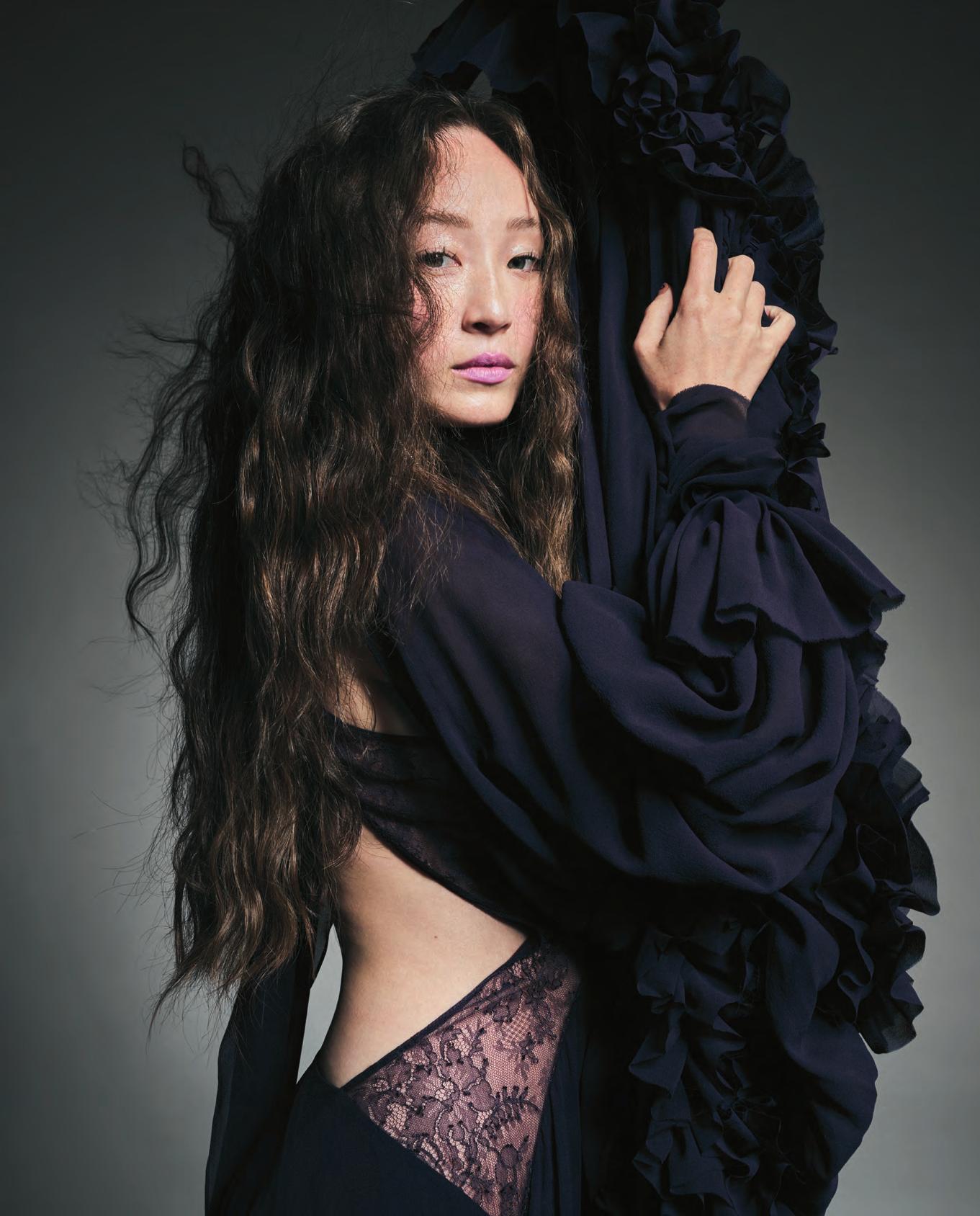
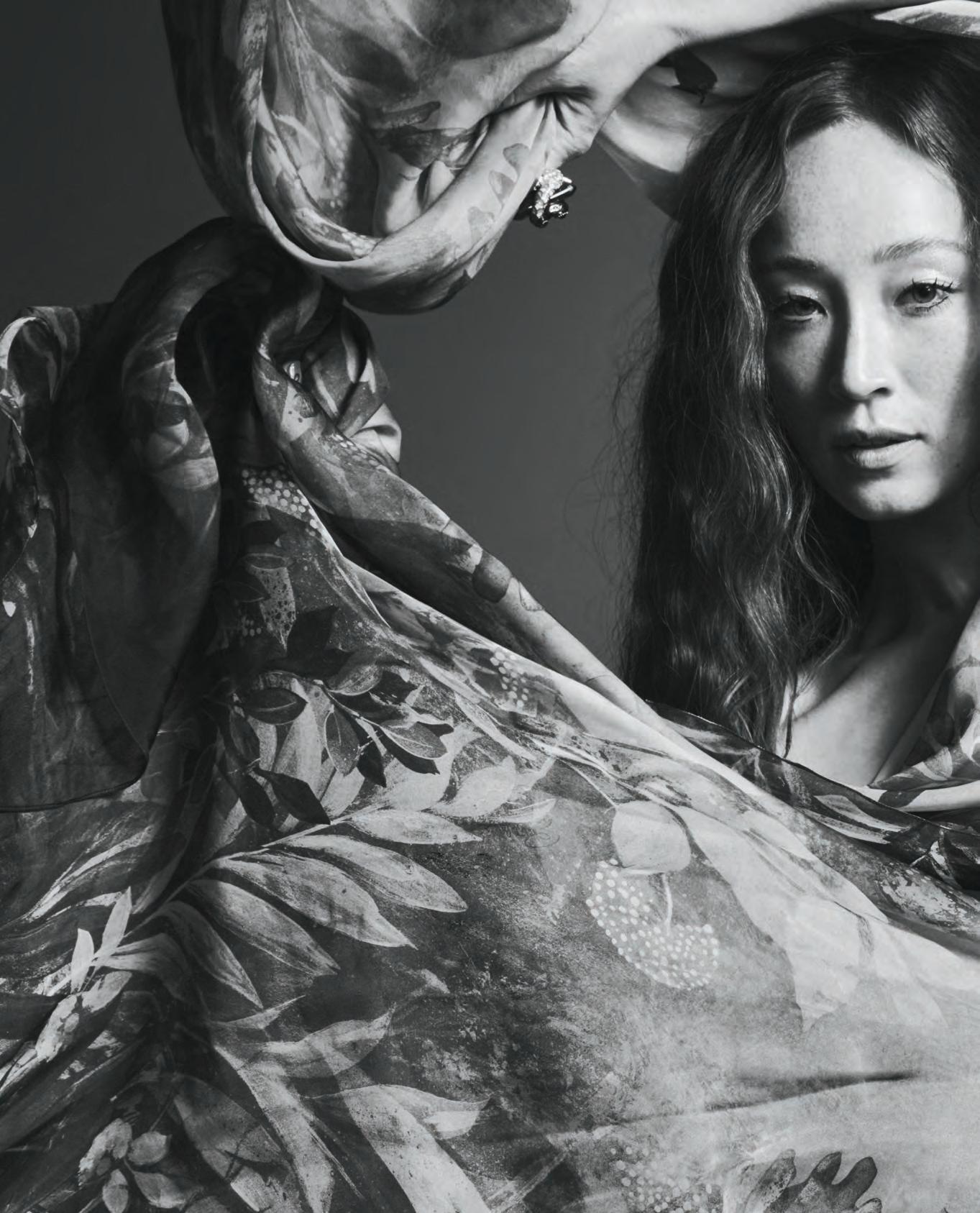
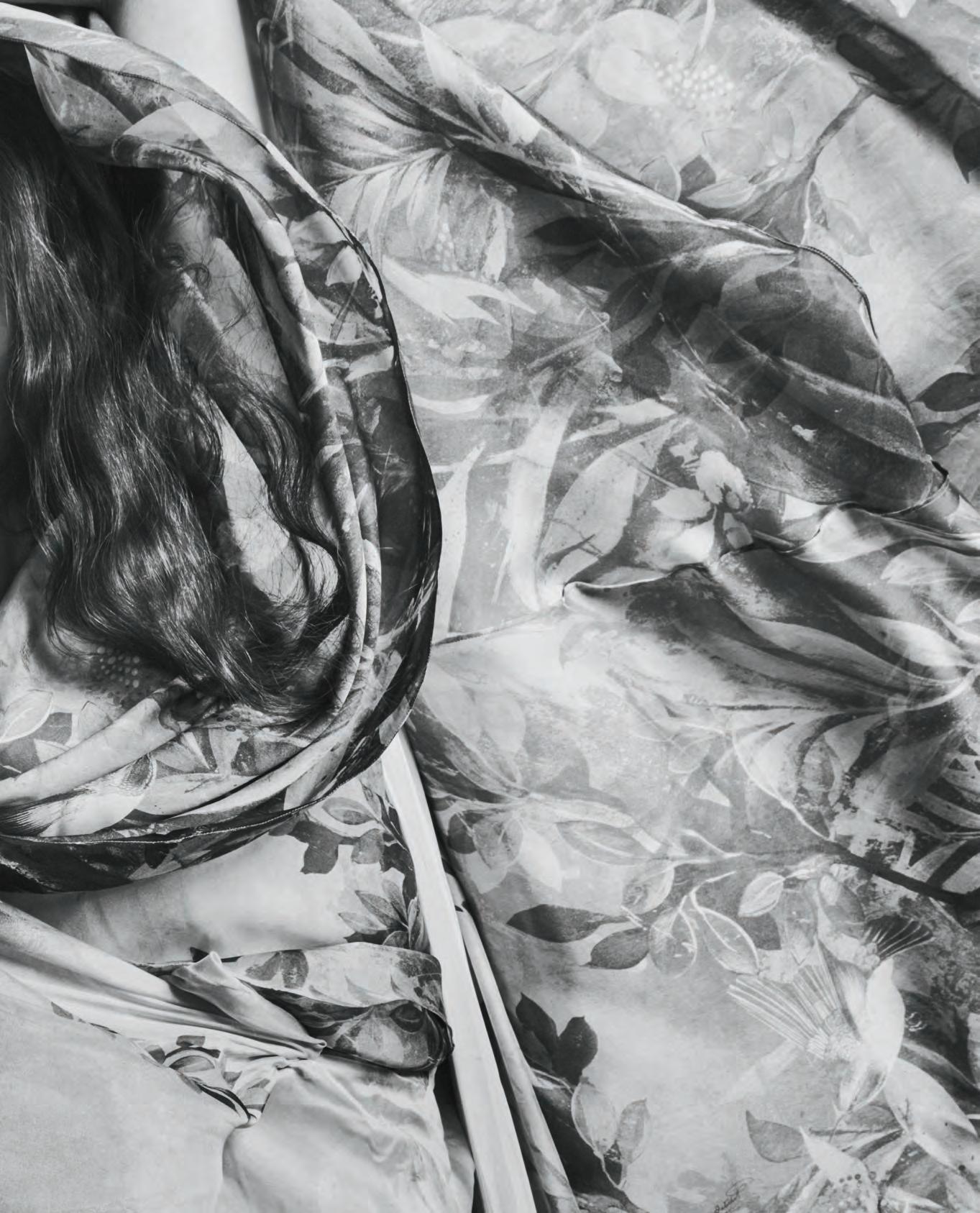
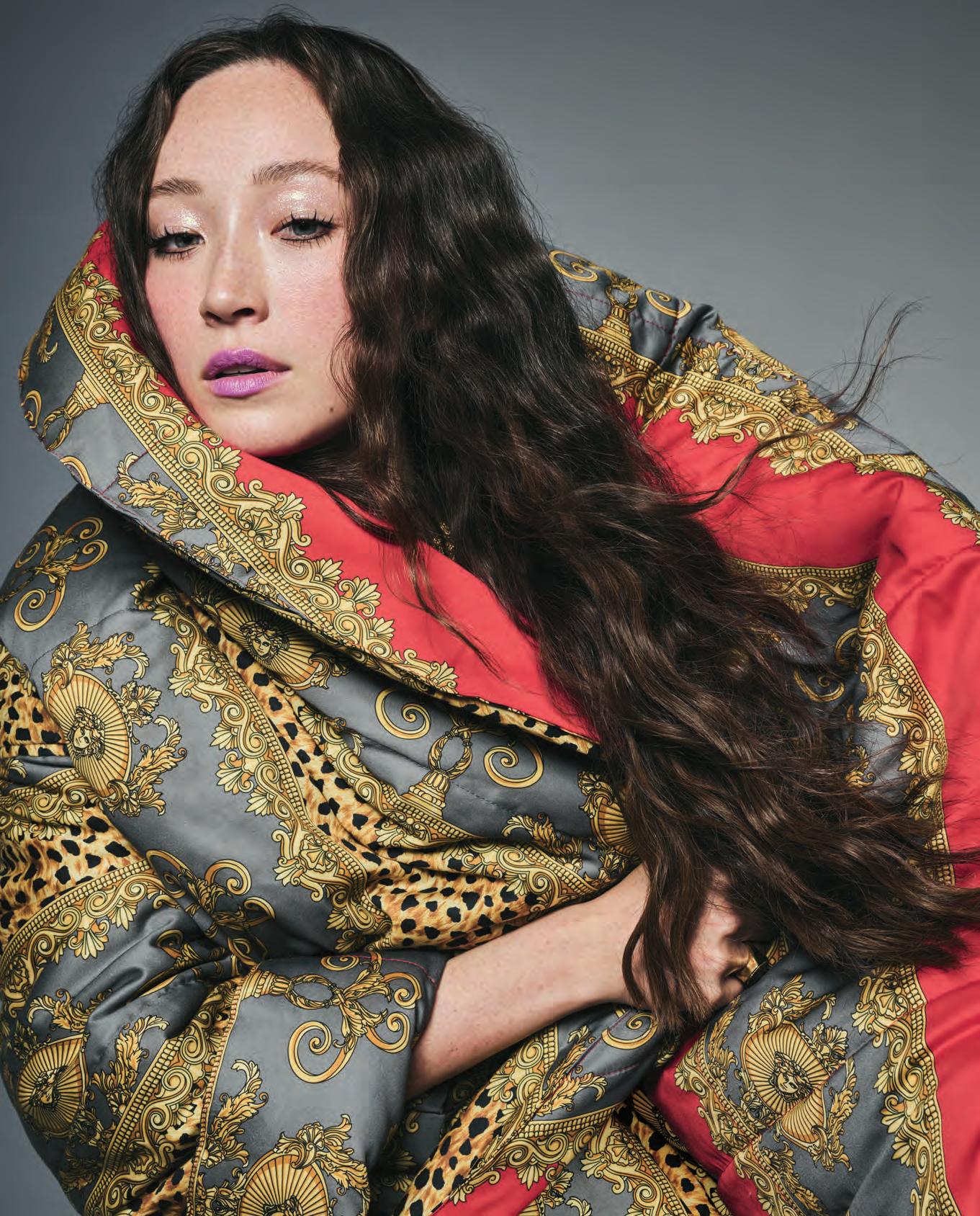
fed. Being back in New York after so much work away on set “feels like a vacation. I’m actually in a pretty strong love affair with New York again.”
But being away has had plenty of upsides, she explains. “It’s just been working with incredible people, the most amazing cream of the crop. I’ve been really thinking about the past year. It’s been so fulfilling and so intense, and I’m just wrapping my head around it. I never thought I was going to be an actress, and now I’m fully committed.”
Of course there have been moments of doubt, not to mention breakouts in hives, which Liu experienced for the first time from stress in college.
“There’s always hives in the mix,” she says. “But it’s all about ‘Feel the hives but do it anyway.’”
Her “imposter syndrome” as she calls it, however, is slowly abating. “Every time I’d be cast, I was like, ‘Are you sure?’” she says. Still, she insists, “That part really never goes away. That seems like something I have to manage. You do these jobs where you feel scared, but you have to innately let go of your bullshit and be your childlike brave self.”
Of course it all had to begin somewhere. For Liu, it began like this: “I was walking on the street,” she says.
“Actually, before that even happened, Vogue slid into my DMs,” Liu recalls. “Well, I don’t even really remember the timeline myself.”
It went something like this. Liu posted a selfie, her first, on Instagram. That led to some e-commerce work with the New York fashion designer Nikki Chasin. “I was fascinated about making money like that in college,” Liu says. Then she was cast in a feature for Vogue, and “that was the real start of modeling.”
Growing up, Liu practiced a steady diet of dance and performance art. She found modeling to be a
surprising extension of that study. “Working as a model was really fun, and I’ve grown to appreciate it even more,” she says. “I see it like another art form. I like the idea of my body as a sculpture, and we’re creating compositions together.”
It’s also helped her define her relationship with fashion. “I think clothes impact me more than I would like them to,” Liu explains. “What I wear often dictates what I feel like. I wish I wasn’t so weak! But if I feel comfortable in something, I can take on anything.” She’s developed a close relationship with Chanel and wears the French brand quite regularly at events. “I do feel powerful in Chanel,” she says. “Their clothes are incredibly well constructed and well made.”
But back to how she became a movie star and the runaway train. Liu had done a little modeling, and then, well, she was walking near NYU. An agent specializing in street casting approached her in the park wondering if she was interested in acting.
“I was definitely very skeptical. I didn’t respond the first couple of times,” says Liu. She was studying a self-created program at the intersection of arts, activism, and wellness at the time, something having to do with the “culture of masochism” and visual art as a “therapeutic process.”
But, they kept running into each other and, eventually, says Liu, of the casting agent, “I felt comfortable filming auditions in her Williamsburg basement.”
That led to some commercials, music videos, short films, and eventually, her first movie. “It was a domino effect of small projects,” Liu says. Then Bottoms happened. “It was clear to [co-writer] Rachel Sennot and me from the first five minutes of watching Havana’s audition tape that she had to be in the movie,” says Bottoms director Emma
Seligman.
“One hundred percent my life changed,” says Liu. “Bottoms is a movie for everyone, and a powerful community circulated around it. It was such a powerful mirror of the moment we’re in. People really saw it and loved it. It definitely opened up my world to more opportunities, one hundred percent.”
Part of what’s been exciting for Liu is the varied projects she’s gotten to work on since. “I always want to stretch in new directions,” she says. “I love that I’m really being seen from this angle, and I really love the opportunity to stretch in different ways. To show a new color or try to grow.”
She didn’t watch that much film or television growing up. Her cultural touchstones include the work of Japanese filmmaker Hayao Miyazaki and musical movies like Singin’ in the Rain and Sound of Music, “which I’ve seen a hundred million times. That film is just so epic, it sticks with me.” For Liu, the singing family of the von Trapps “always sounded incredible. Art was deeply in their lives.”
Liu’s parents took their daughter to performances at St. Ann’s Warehouse and the New Victory Theater. They’d gone to film school but never ended up pursuing a career in the field. “They’re very well film-educated,” she says. “I’m playing catch up.”
Occasionally, she’ll tape an audition with her dad. “It’s very sweet,” Liu says. “He has a perfect monotone.” Her younger brothers—Cairo is 21, Dublin is 17—“They’re little babies, and I love them”— are equally circumspect about Liu’s impending stardom. “They think it’s hilarious,” she says.
In August, after months of working nonstop, Liu and a friend went to the Edinburgh Festival Fringe for a few days. It’s a place where hundreds of per-
formances go on at once. It’s not unusual for a man to sing and dance naked, but as a penguin. (Yes, that happened this year.) Even if Liu didn’t get to see as much as she’d like, “I think I just love a spicy, creative swing,” she says. “It was so refreshing.”
Going to Fringe helped Liu get back in touch with her artistic principles and her background in performance art and dance: “It was a gentle return to the roots of what I love. Performance and the body and art. Seeing people being able to vulnerably present their work. It reminded me that entertainment takes so many different forms.”
It made her want to make art more, even if it’s just for her. “I used to keep a running sketchbook and do a lot of collage,” she recalls. “That helped my creative process.”
She’d like to start reincorporating dance back into her daily life. She goes to dance classes in the city, particularly modern dance classes. “I used to be in a modern dance student company,” she says. “It’s part of my core being.
“At the risk of sounding insane, it’s also good for me to wake up every morning and dance in my apartment. Dancing can be little. It can be around one square foot. It just adds more magic back into your life.”
The truth is, for Liu, there’s likely lots and lots more magic ahead.
“You’re catching me in an interesting moment,” she says. “I’m basically surprised about every step my life has taken, but I’m really reflecting on the areas I want to grow. I need to have a conversation with myself about it.”
Liu already has begun that inner talk. “I’m looking forward to more skills, more bravery, more stretching and trying to take some steps towards things that feel hard, even if I’m scared to do them,” she says.
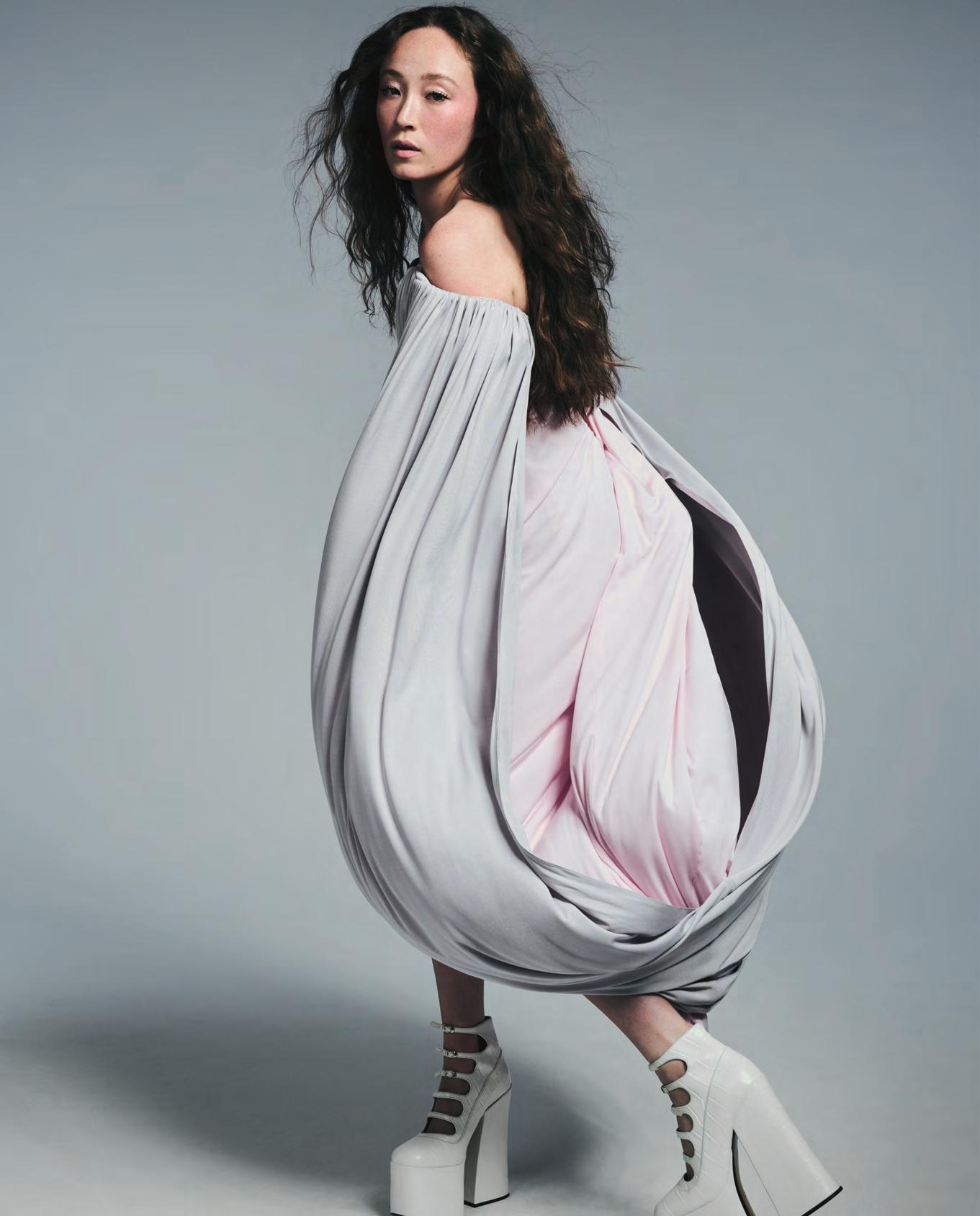
R each for the St ars, and if
You Fall Short, You May L and on the Clouds.
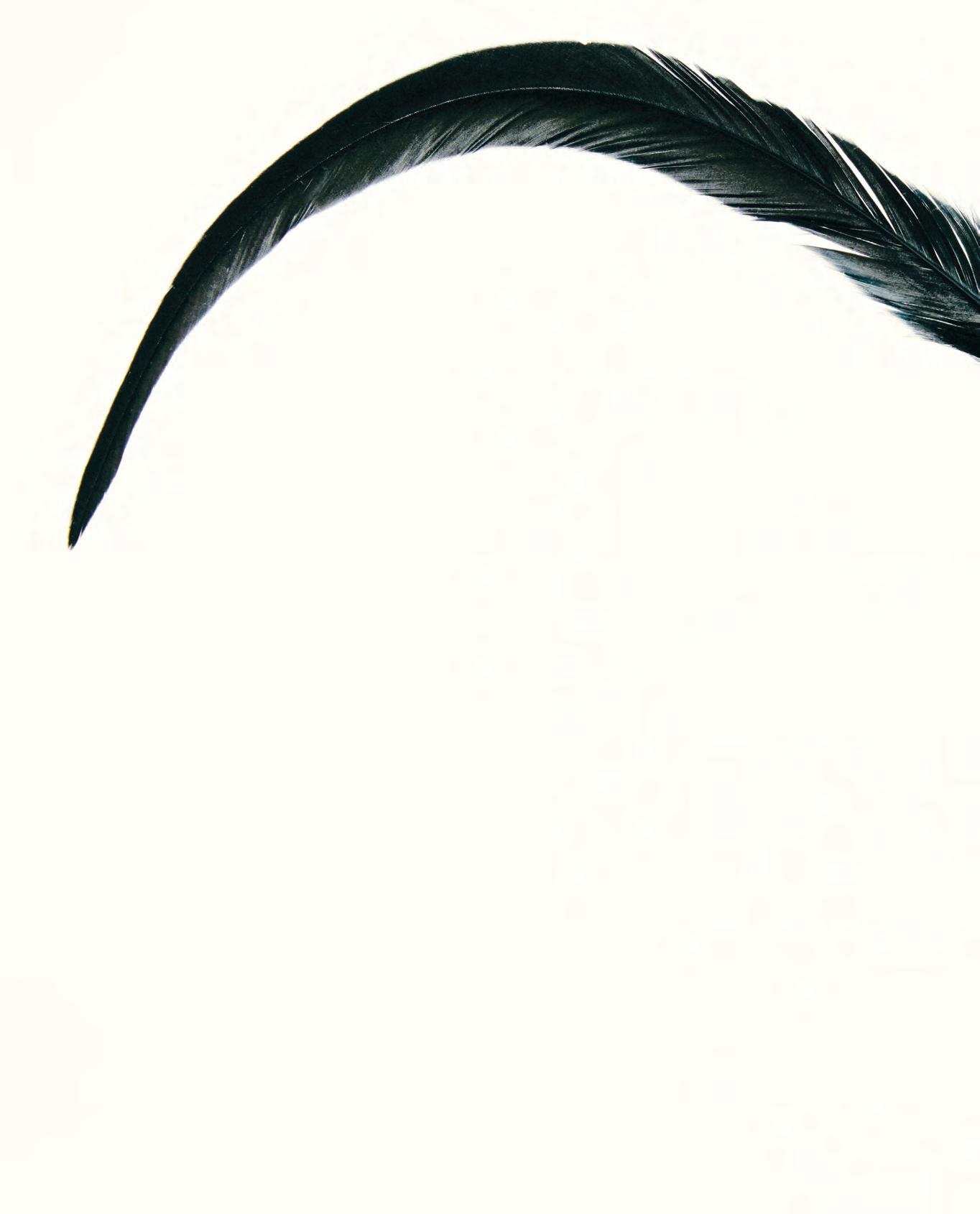
CHANEL HIGH JEWELRY
Creative Direction Dané Stojanovic
Photography Vladimir Martí Styling Timothé Grand-Chavin
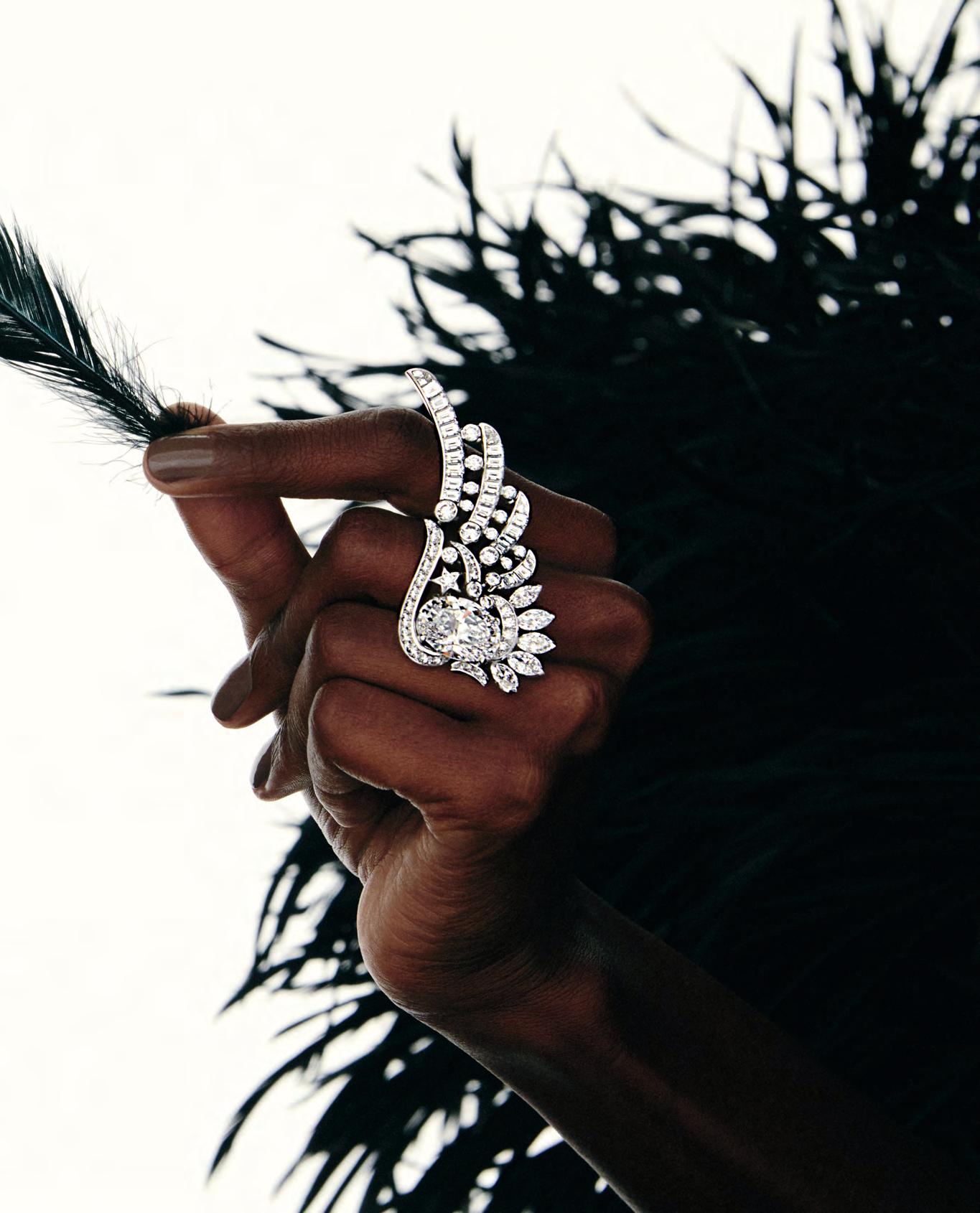
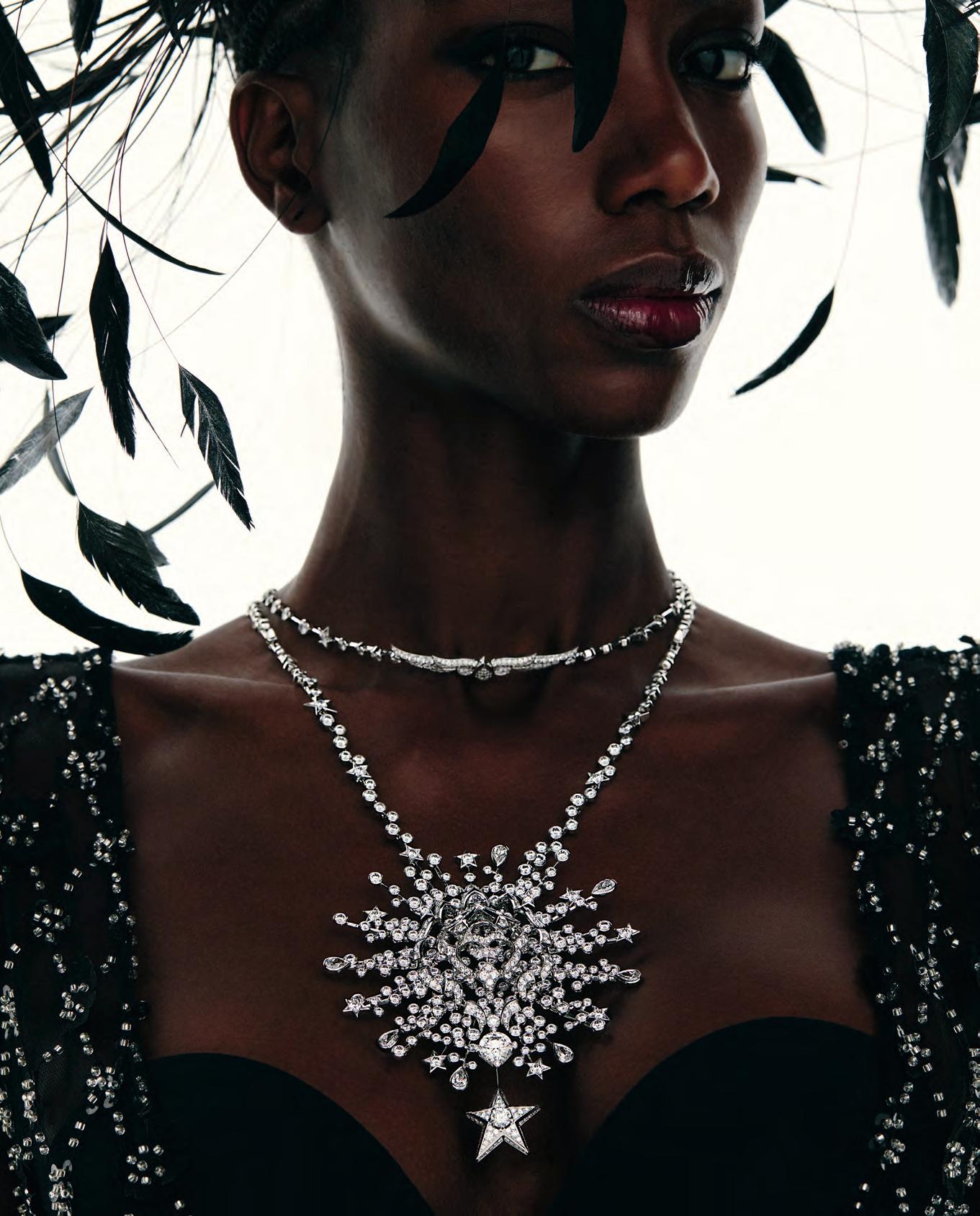
With the High Jewelry Collection, Chanel redefines a vision of glamour and reinvents the audacity of grand soirées.
This page: CHANEL High Jewelry Take My Breath Away Earrings in Pink and White Gold with Diamonds and DLC Carbon, 800-550-0005.
Opposite page: CHANEL High Jewelry Strong As A Lion Transformable Necklace in White Gold with Diamonds, 800-550-0005.
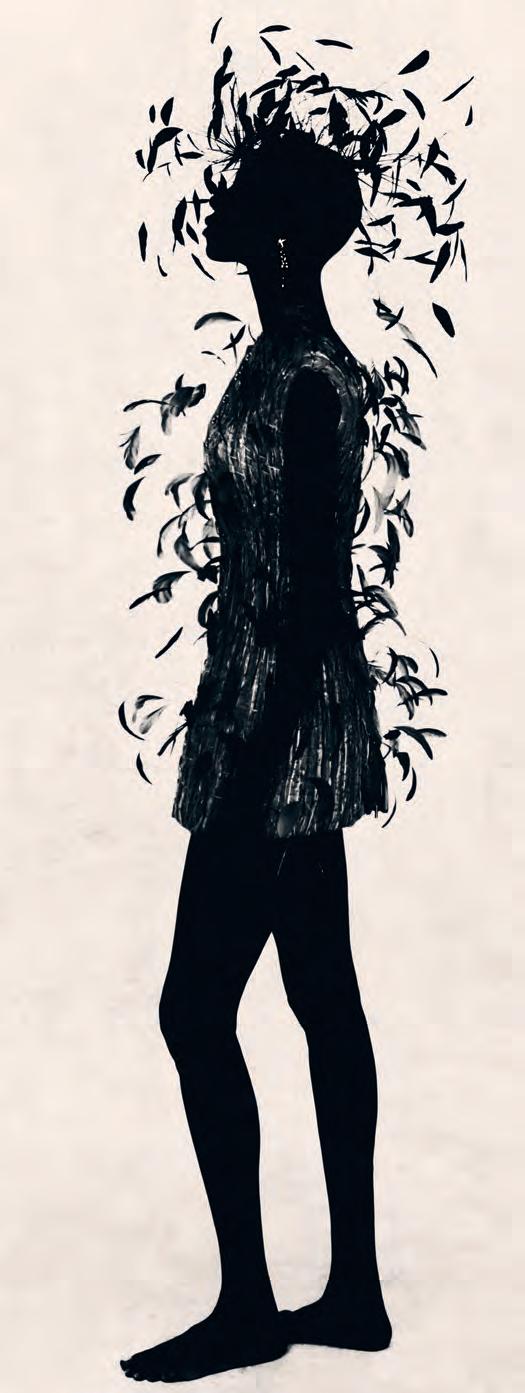
CHANEL High Jewelry Wild At Heart Necklace in Pink Gold with Diamonds, 800-550-0005.
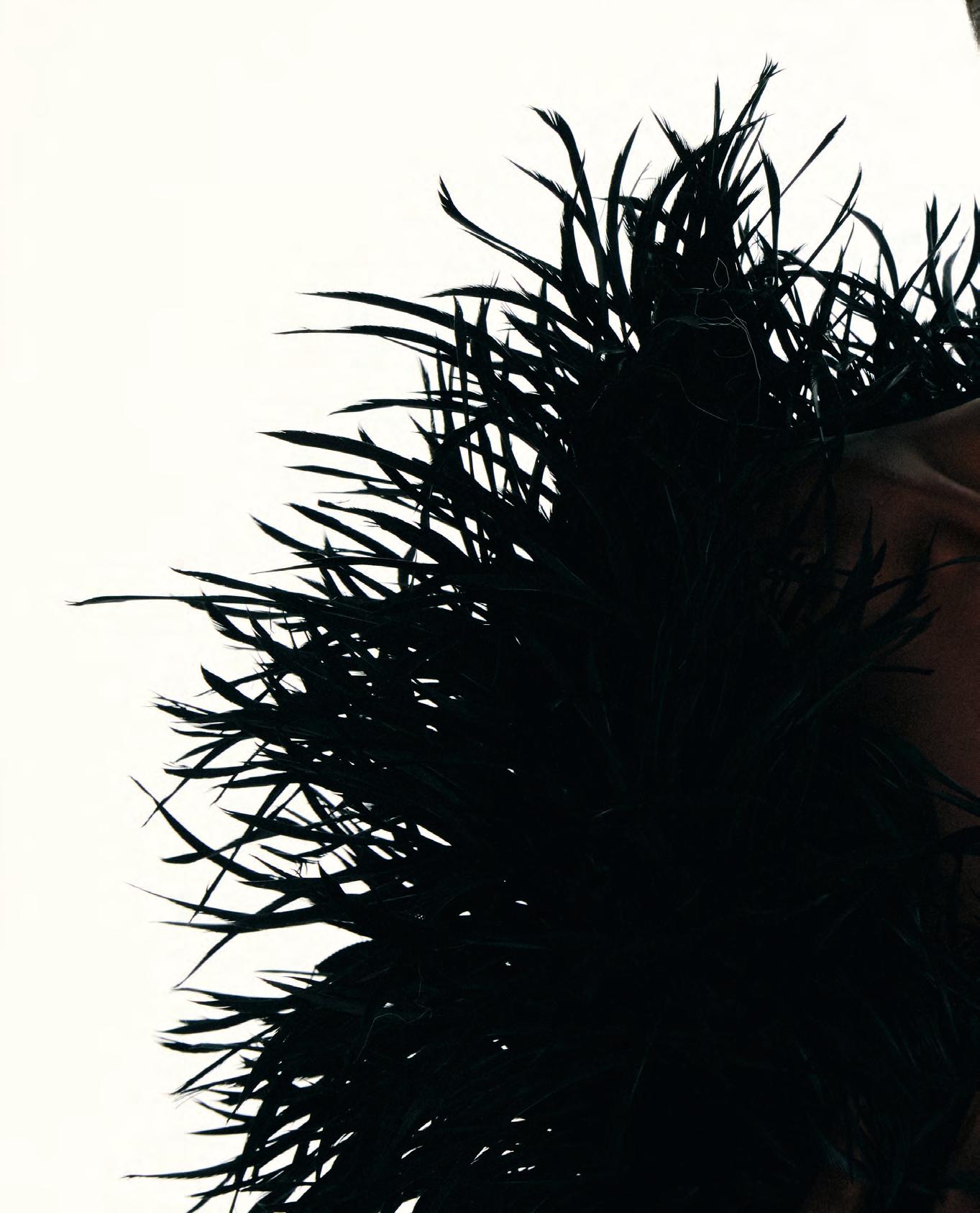
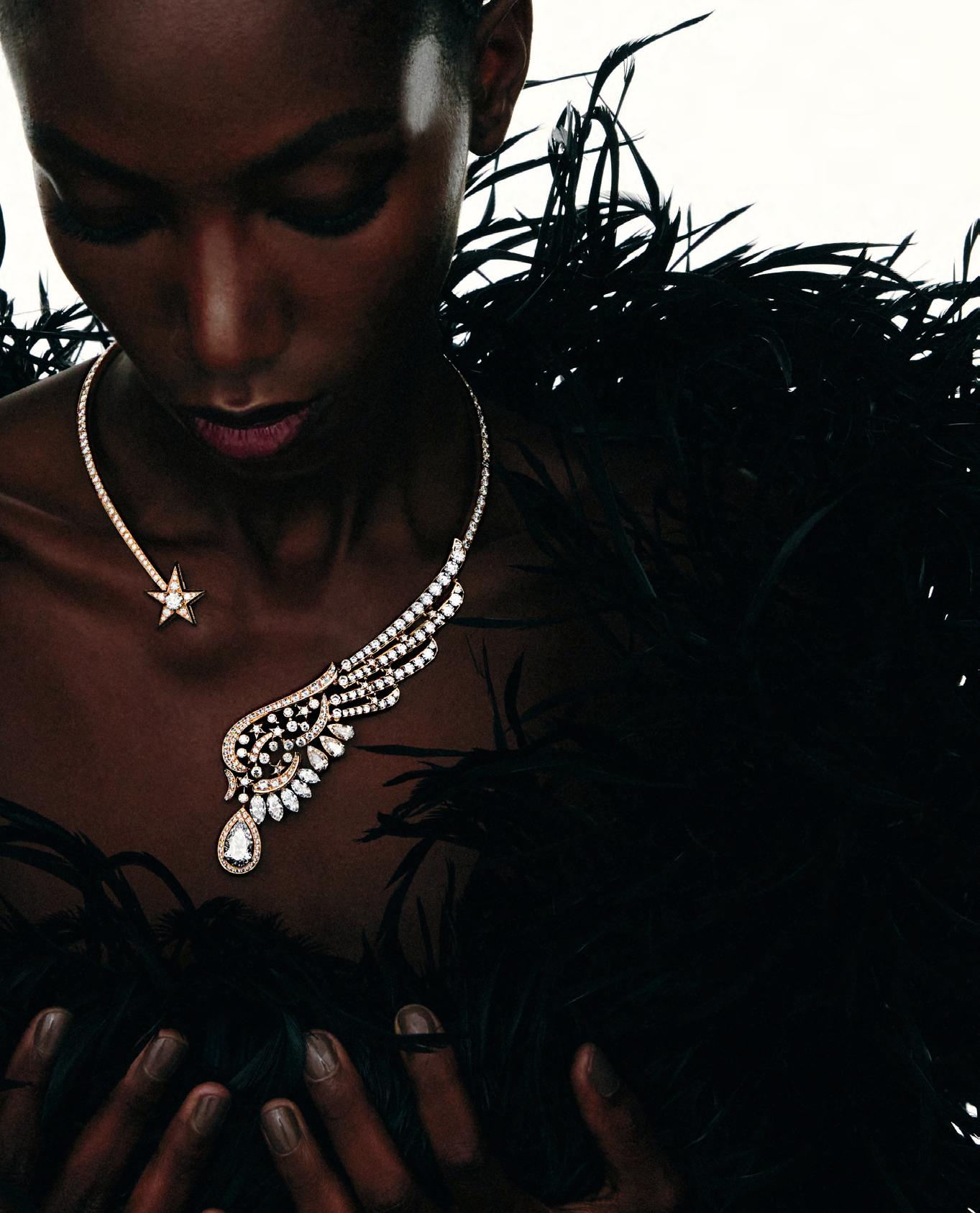
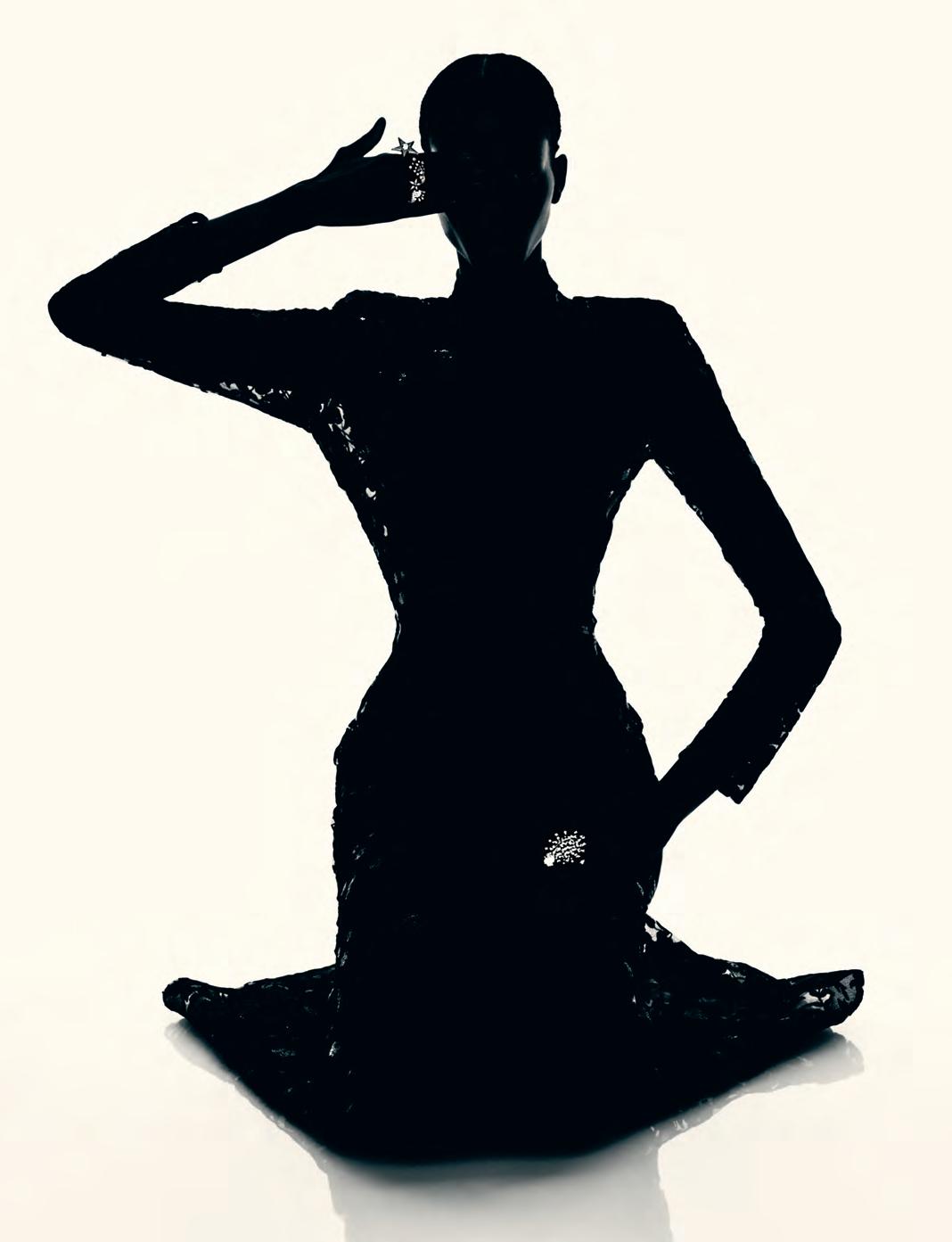
CHANEL High Jewelry Rings from left: Five Stars Double Ring in Yellow Gold with Yellow Garnets and Diamonds, Rise And Shine Ring in White Gold with Diamonds, Strong As A Lion Double Ring in White Gold with Diamonds, 800-550-0005.

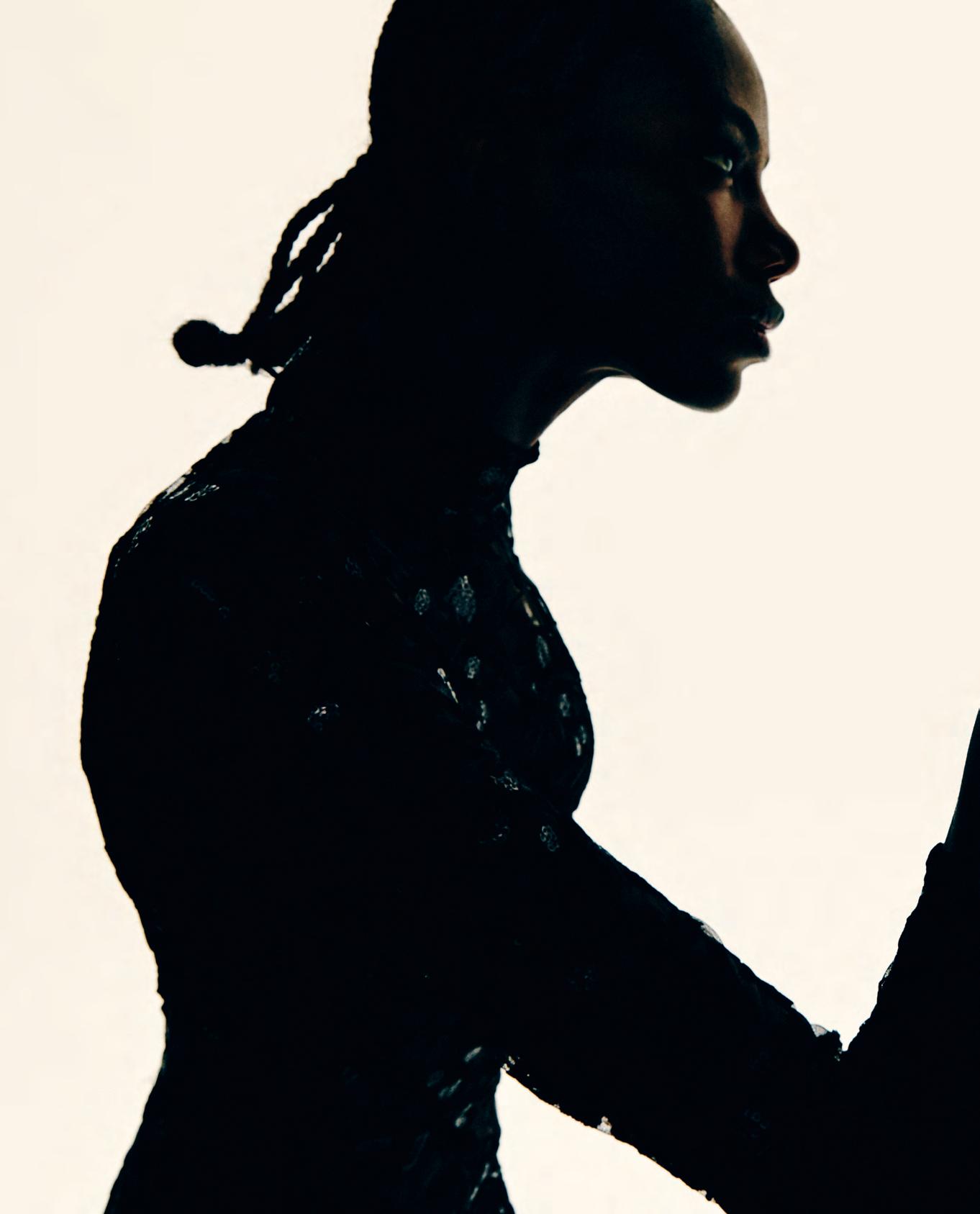
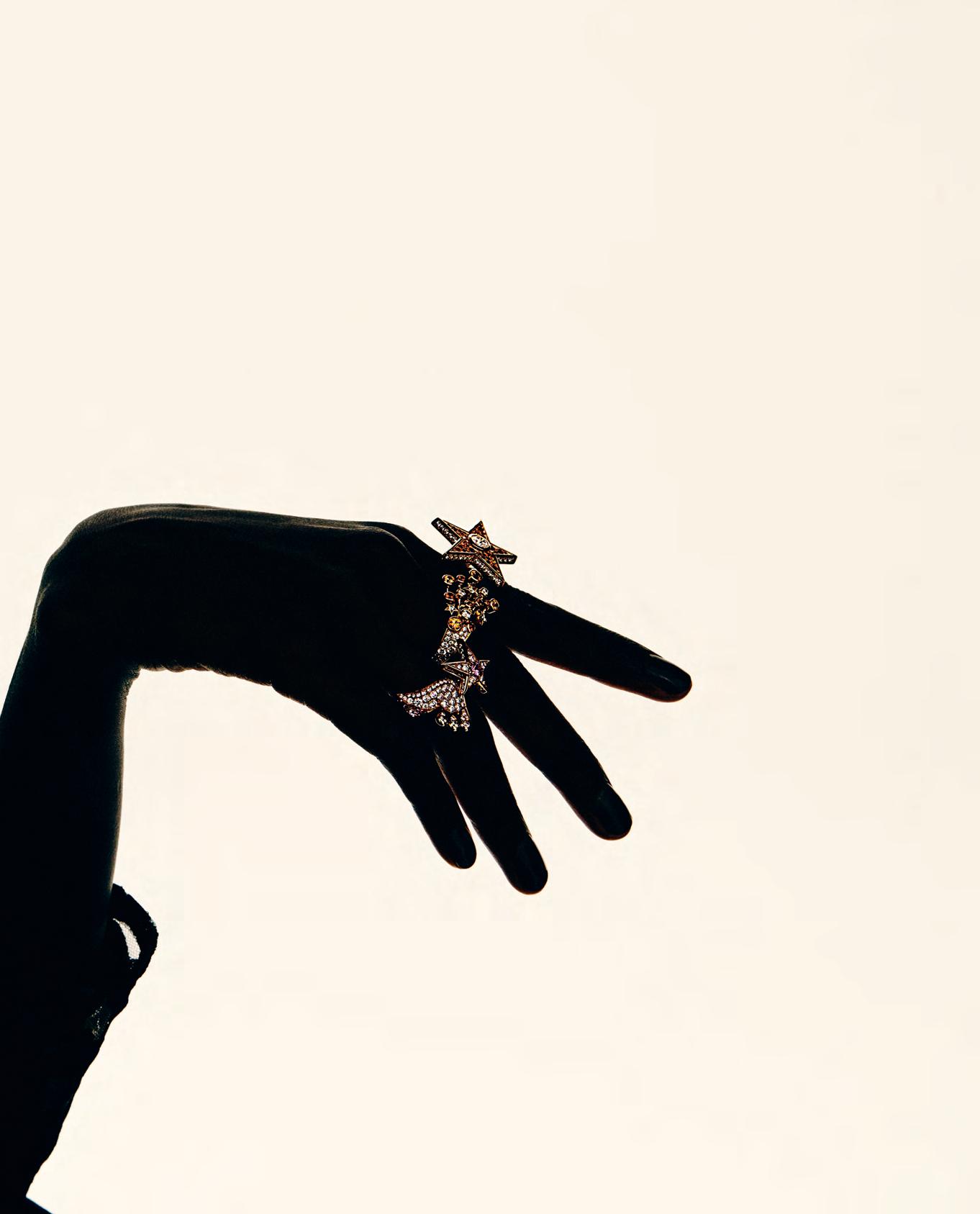
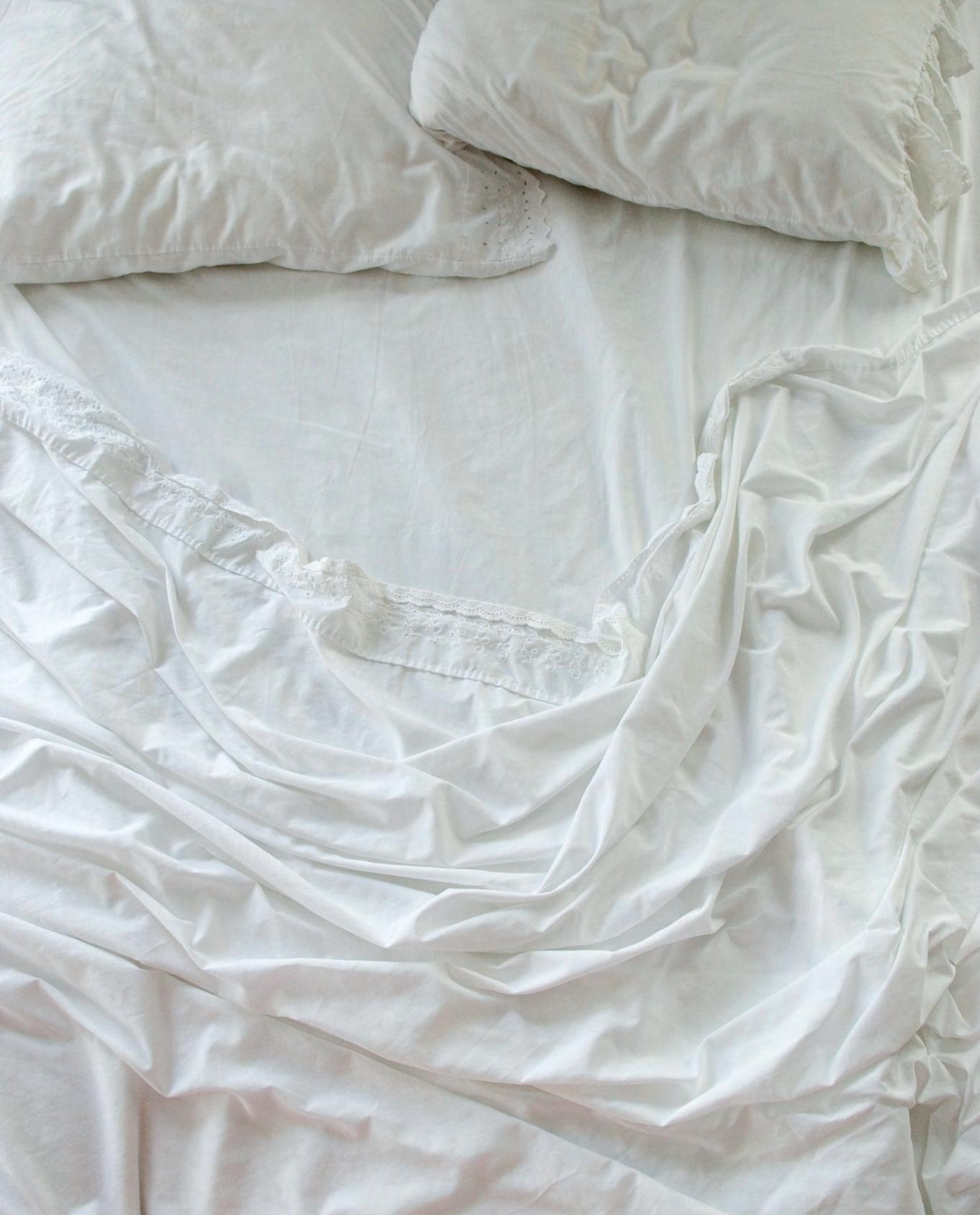
Once upon a t ime I want ed t o have sex const antly; nowadays, not so much. WHERE FOR ART THOU LIBIDO?
Words Fiorella Valdesolo
My eighth-grade sexual education class (an opt-in that your parents had to sign off on; my dad being a biology teacher meant I was an easy in) at the little private New England school I attended took a more, shall we say, out-of-the-box approach than what my fellow tweens were getting at the public middle school down the road. They had PSA-style cartoons, and we had frank discussions about masturbation and menstruation, up-too-close images of STDs, and creative assignments inspired by the material—think condom and tampon sculptures. For one class we were all tasked with bringing in a song (on cassette or CD; it was the early ‘90s) with sexualized lyrics. Classmates brought tracks by Salt-N-Pepa, 2 Live Crew, and Prince, and I arrived with my Disco Preservation Society tapes (I was a strange bird in middle school) to play “In the Bush,” a 1978 track by Musique. Against a shimmering synthy backdrop came the lyrics: Are you ready, are you ready for this? Do you like it, do you like it like this? Push, push in the bush. Get down, get down, do it, do it ….I like to do it, do it.
When I heard the track again recently—unlocked from my core memories, as so many things currently are, thanks to Instagram—I was struck by the lyrics. Or more specifically, how little I related to them. Nowadays, doing it is rarely on my to-do list. Part of the reason may simply be hormonal: at 46, I’m in the throes of the midlife ebb and flow of estrogen, progesterone, and testosterone. For some women the physical effect of those hormonal changes can impact their sex lives: Orgasms can become more of a challenge, and the vaginal dryness that accompanies that dip in estrogen can make intercourse painful. “These hormonal changes combined with the stress of midlife—busy careers, raising and launching kids, aging parents—can make libido take a dive,” says Sarah de la Torre, MD, a double board-certified
OB-GYN and the clinical lead at menopause care platform Respin Health. A list that I respond to with a mental check, check, check; I’ve been parenting a young child, dealing with health challenges (familial and my own), navigating a career in an increasingly shaky industry all while living in an increasingly unlivable city. Then there are the emotional dynamics that can build a libido roadblock. “Long-term relationships can, at times, create emotional fatigue, resentment, and, often, boredom in the bedroom, leading to disconnection,” says de la Torre, as I nod along vigorously. “It is common in midlife for women to feel unseen or unappreciated and therefore less open to sex with long-term partners.” And, of course, stress, the culprit of everything from skin inflammation to disrupted sleep is also undeniably at play in this conversation around the modern state of desire. High stress increases cortisol which influences our reproductive hormones, decreasing sexual desire and activity, says de la Torre. Our current “always-on” culture just makes things worse, she adds, trapping people in a chronic state of low-level stress.
And, of course, stress is also undeniably at play in this conversation around the modern state of desire.
So do our increasingly online existences, particularly for younger generations. Several studies have revealed a decline in all types of sexual activity across age groups, but particularly among younger generations. Statistics that for anyone who, like me, clearly remembers feeling constantly horny in my younger years, is hard to wrap one’s head around. But my horniest years came before my cell phone dependency; younger generations now have far more digital distractions. “The constant presence of smart phones can provide dopamine (feel-good hormones) hits leading to less motivation to seek those feel-good experiences from real-life interactions,” says de la Torre. And there’s a hesitancy around IRL interactions among younger generations too. “Young

people report opting out of sexual activity due to concerns about performance, fear of rejection, and confusion around consent, all issues that can be magnified in the current social media environment,” adds de la Torre. This connection to devices has also meant earlier exposure to pornography online which has further muddied the waters for younger generations navigating sexuality and desire for the first time. Pornography as your earliest form of sex ed sets a dangerous precedent. Then there is the oft-referenced loneliness epidemic coinciding with an all-time high in mental health diagnoses for conditions like depression and anxiety (espe-
cially, it should be pointed out, among younger people). As de la Torre confirms, mood disorders can reduce the desire for any kind of connection, sexual included. Not to mention one of the common side effects among the class of drugs (SSRIs) prescribed to treat many of these conditions is a lowering of libido.
While there are many things I can point a finger at for why my libido has reached new lows, it’s hard not to sometimes feel like everyone else is doing it when I scroll through my social feeds (sexualized images have been proven to get more engagement so they abound on most algorithms) or engage with literally any form of entertain-

ment from books (#smuttok, #booktok’s spicier relative, has billions of views) to film to art to music. Much of it, particularly what we see online, is performative, an indication of the chasm between desire and pleasure: stoking the former doesn’t necessarily increase the latter. So, what can we do to reignite the proverbial flame? If there are physiological roadblocks, sex therapists and pelvic floor specialists can be an invaluable tool, as can hormonal therapy treatments (like vaginal estrogen, systemic estrogen, and testosterone) for women in midlife. Letting go of expectations and comparisons about how much sex a person “should” be having and creating a
space for responsive desire (desire that emerges once intimacy begins, rather than before) will help too, says de la Torre. Lately, for me, getting back in touch with my own desire for a sexual connection with my partner has come not after time spent together, but time apart, when I could focus solely on my own needs for a while. And that, says de la Torre, is not uncommon; she often recommends that women make time to relax, decompress and restore their own energy via sleep, movement, or connecting with friends, before trying to renew a connection with their sexual partners. Alone time, it seems, makes the heart grow fonder.
N
oth
ing s
ign
als a siren’s call quite like a high-beam sheen
SHINE ON
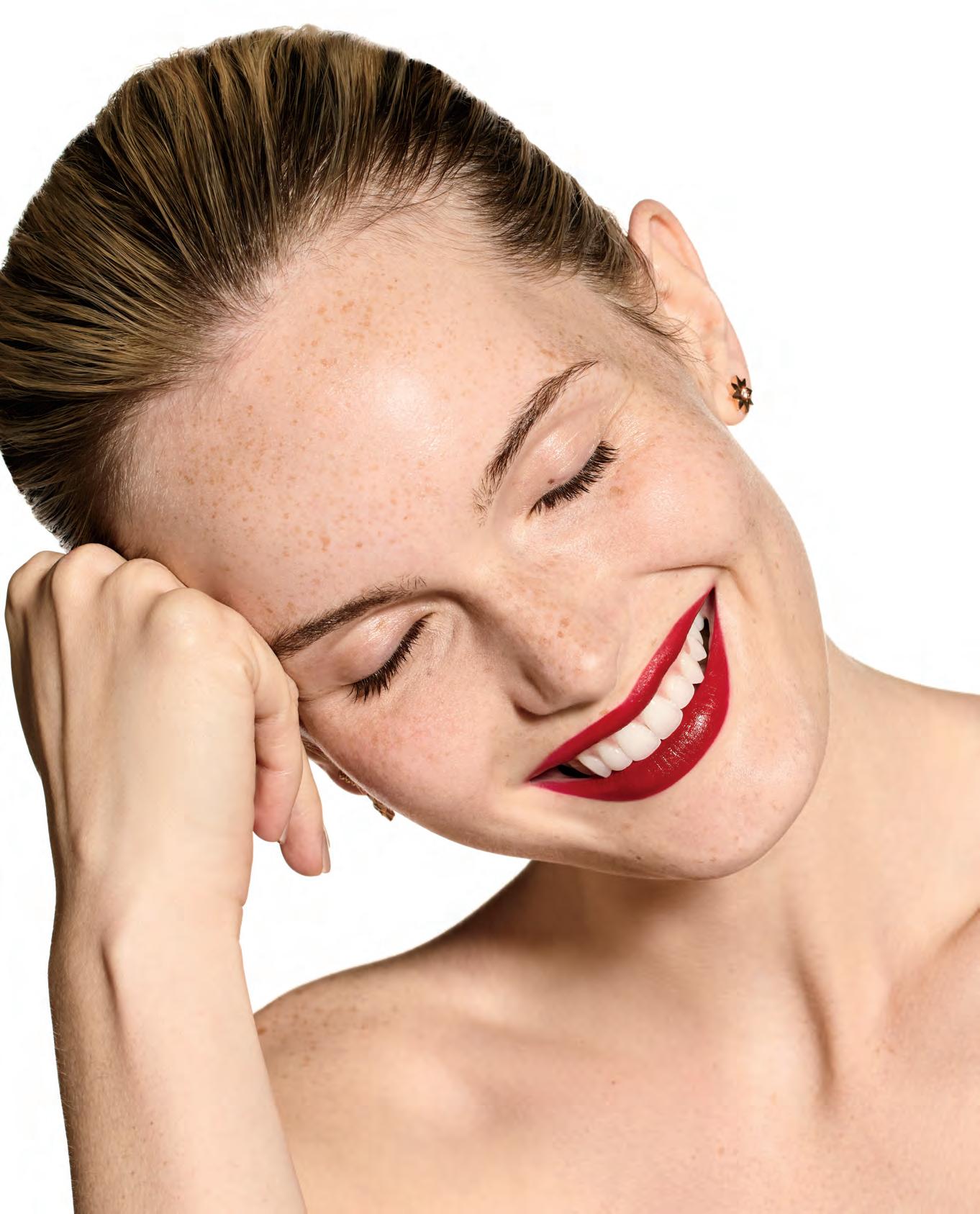
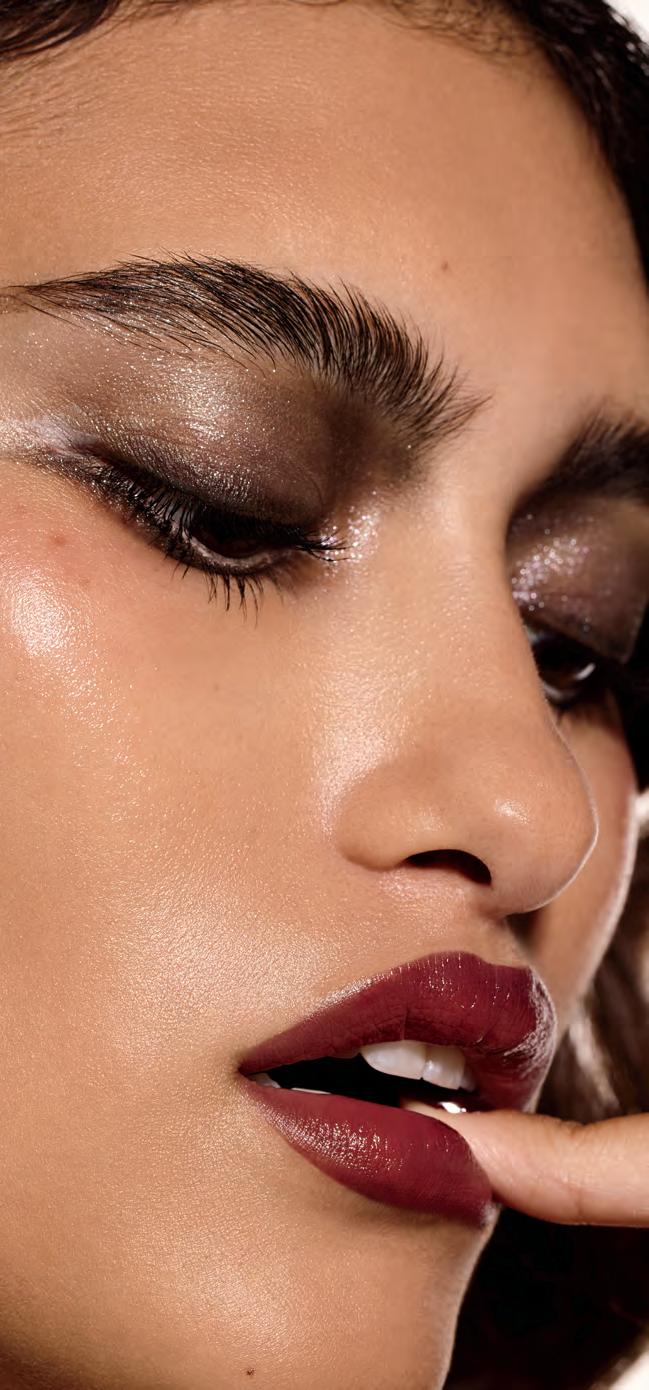
In the grand scheme of seasonal beauty, autumn can be counted on to usher in a staid, collegiate cool. But this fall, there’s a desire to be seen. And reflective makeup acts as a personal spotlight, attracting just the right amount of attention. Why not go for an all-out glow? “Touches of shine on the eyes and skin creates a high-glam mood,” says Deanna Melluso, the New York City-based makeup artist who
“Go just beyond the border. The shine on the edge gives a bit of volume.”
created the looks here. The perfect complement? A lipstick that leaves lips sumptuous — and visibly plumped — thanks to a mirror-like shine that actually gets more intense with wear. If this sounds too good to be true, it’s not the stuff of myth, we assure you. Dior’s just-dropped slimline lipstick, Rouge Dior On Stage, has a high-tech formula with a unique finish. “It’s
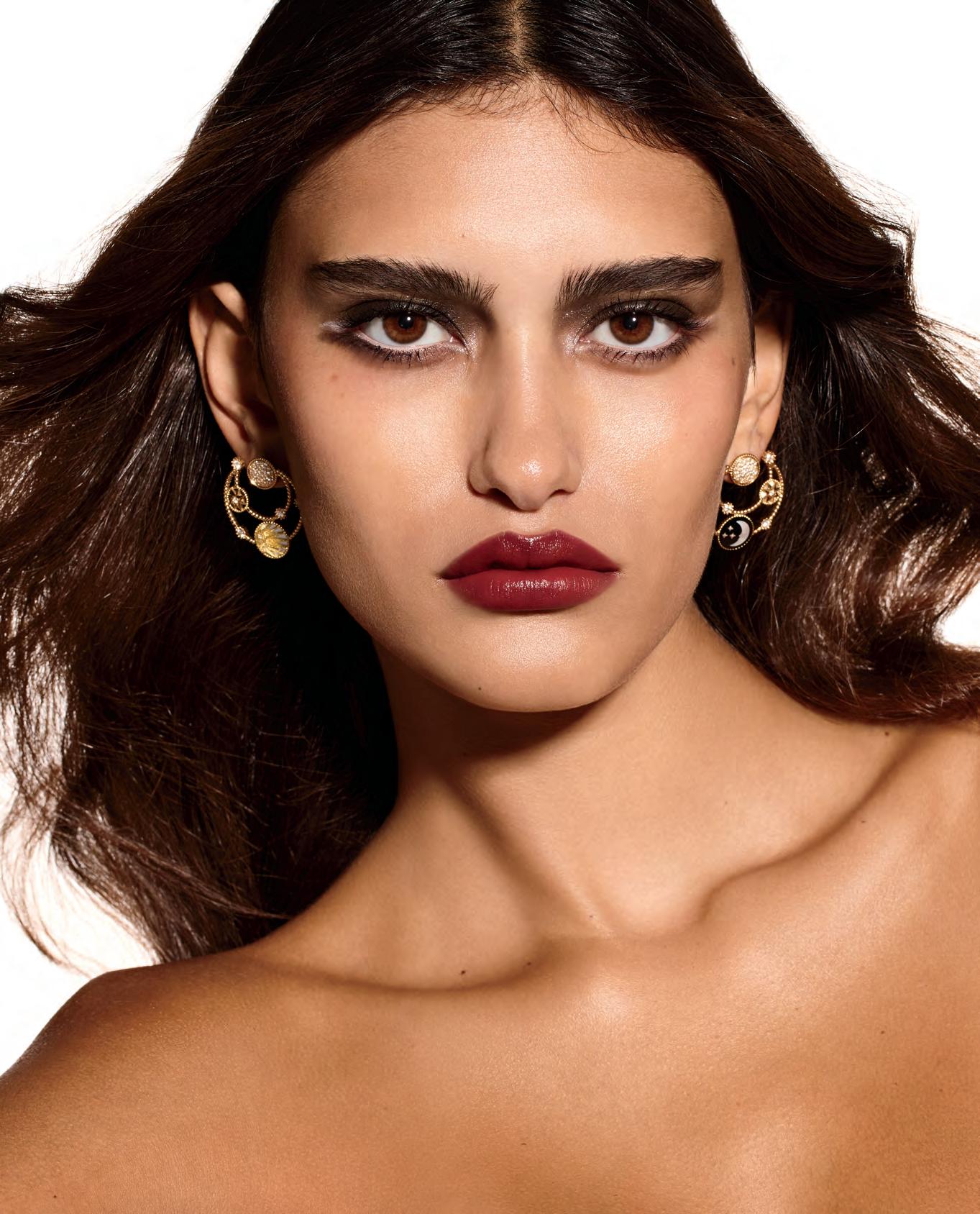
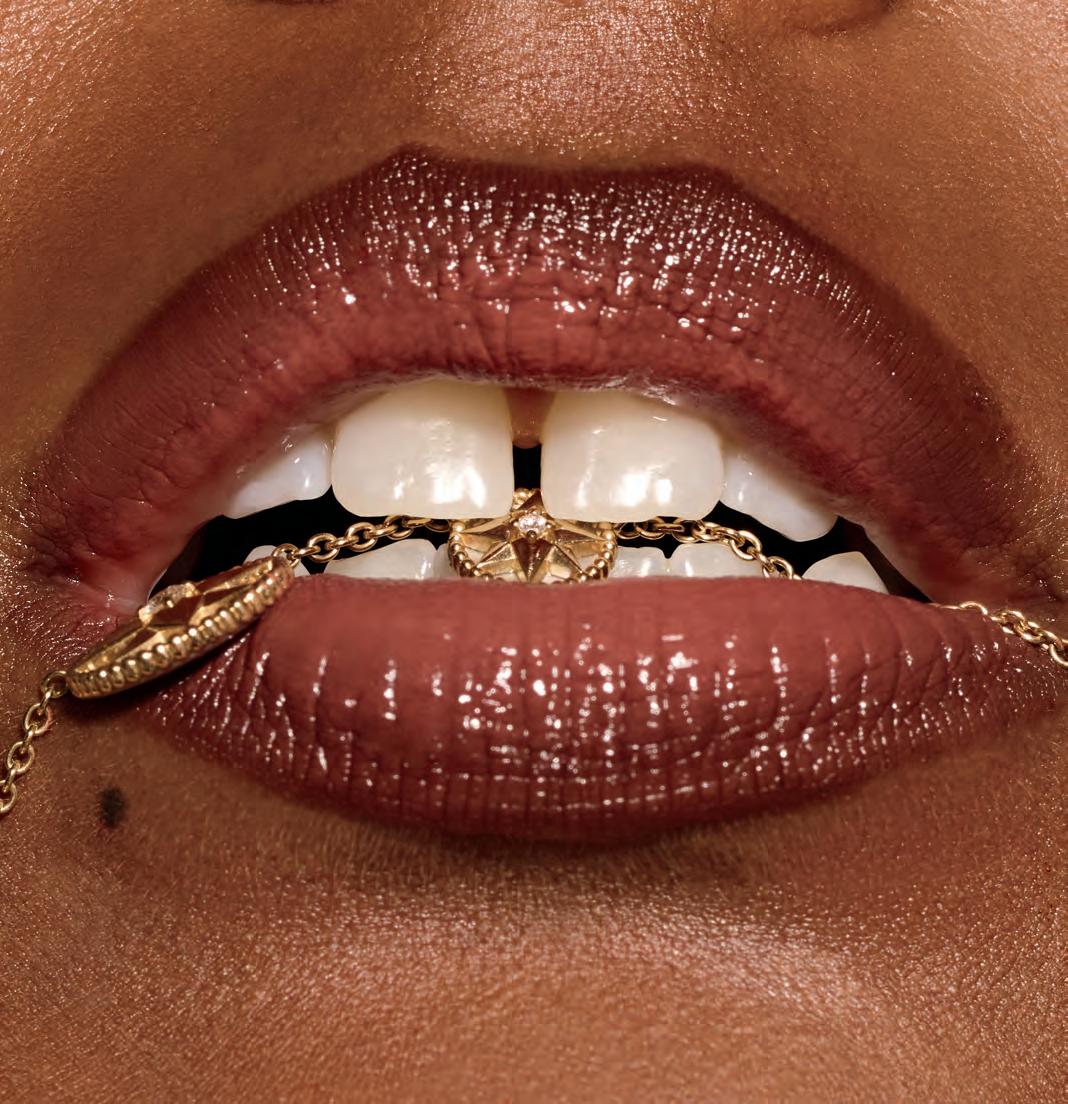
what we call double-phase,” says Peter Philips, the creative and image director of Christian Dior Makeup. A few seconds after it’s swiped on, “the true identity” of the shade will become apparent as polymers flash off, he explains, “boosting the shine effect.”
An added bonus: Color is low transfer, which means it lasts — and liner isn’t necessary. “You can use a liner just because you want to draw the lip
line, but you don’t have to,” Philips says. Here, Melluso added dimension by outlining with a darker hue before applying the pumped-up neutral 168 Copper Attraction. Blending edges with a small brush creates a diffused, ombre effect. As for shades, anything goes. A high-gloss finish makes a bold, look-at-me statement that might just bring the action straight to you, whether you choose a nude or classic, racy red.
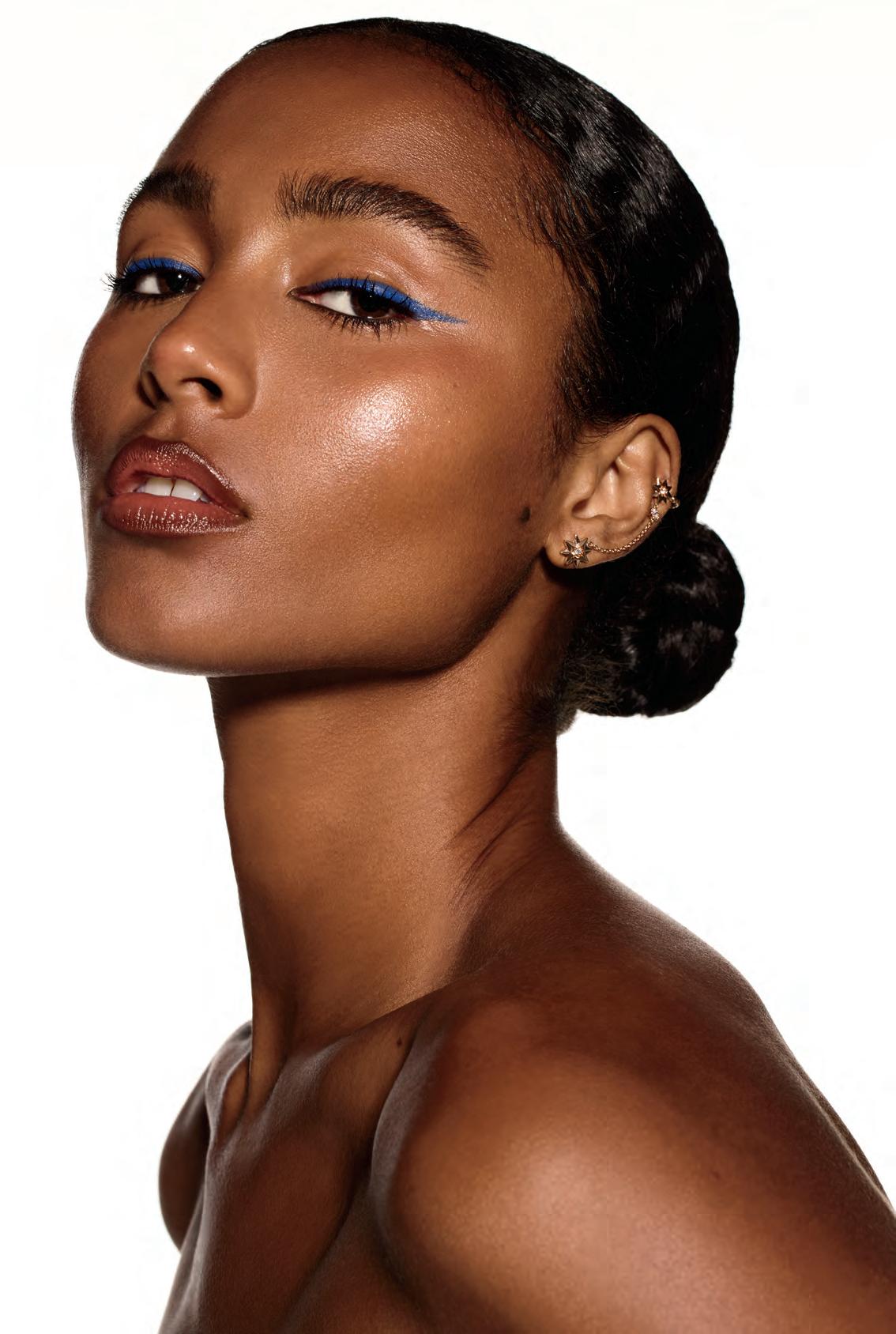
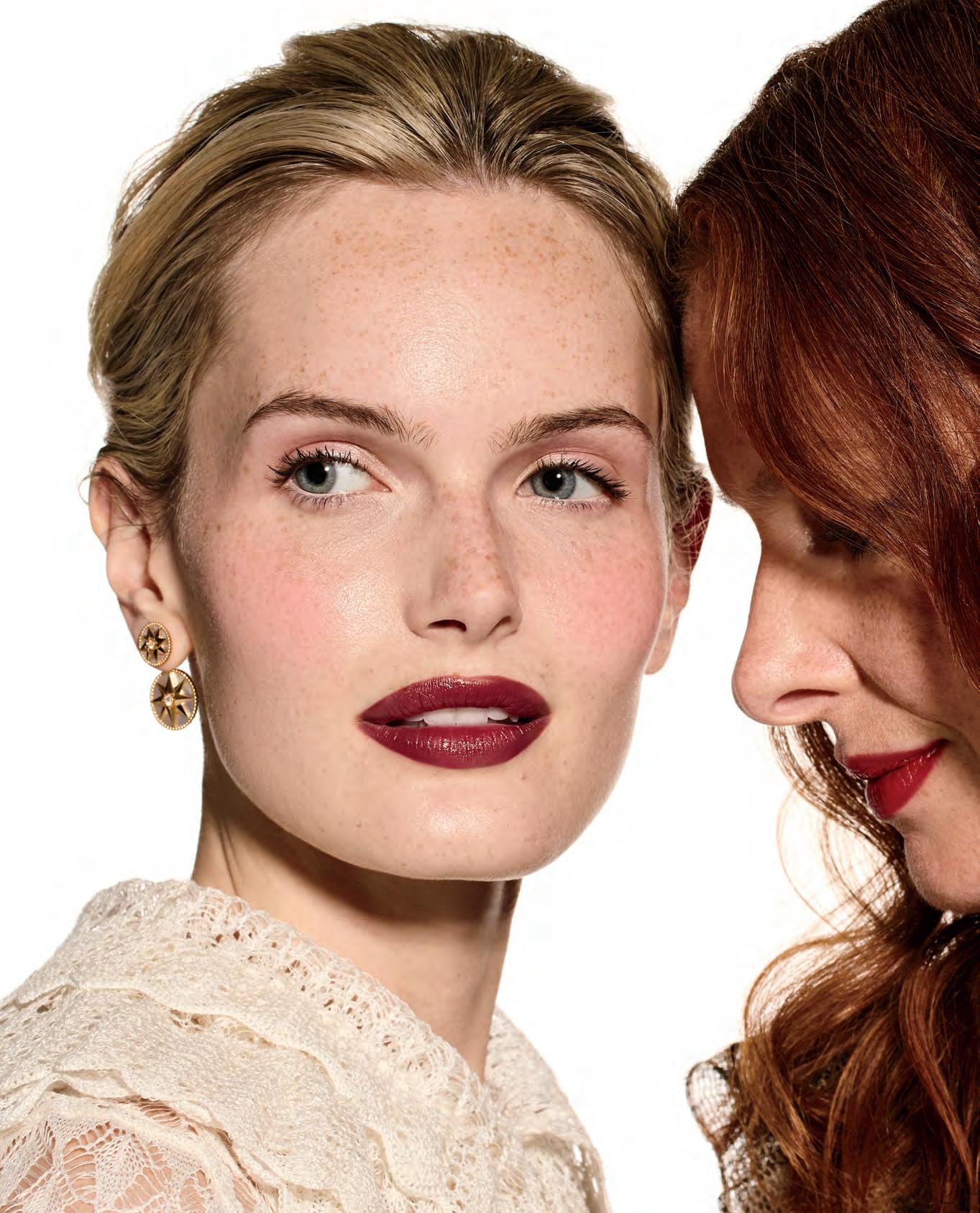
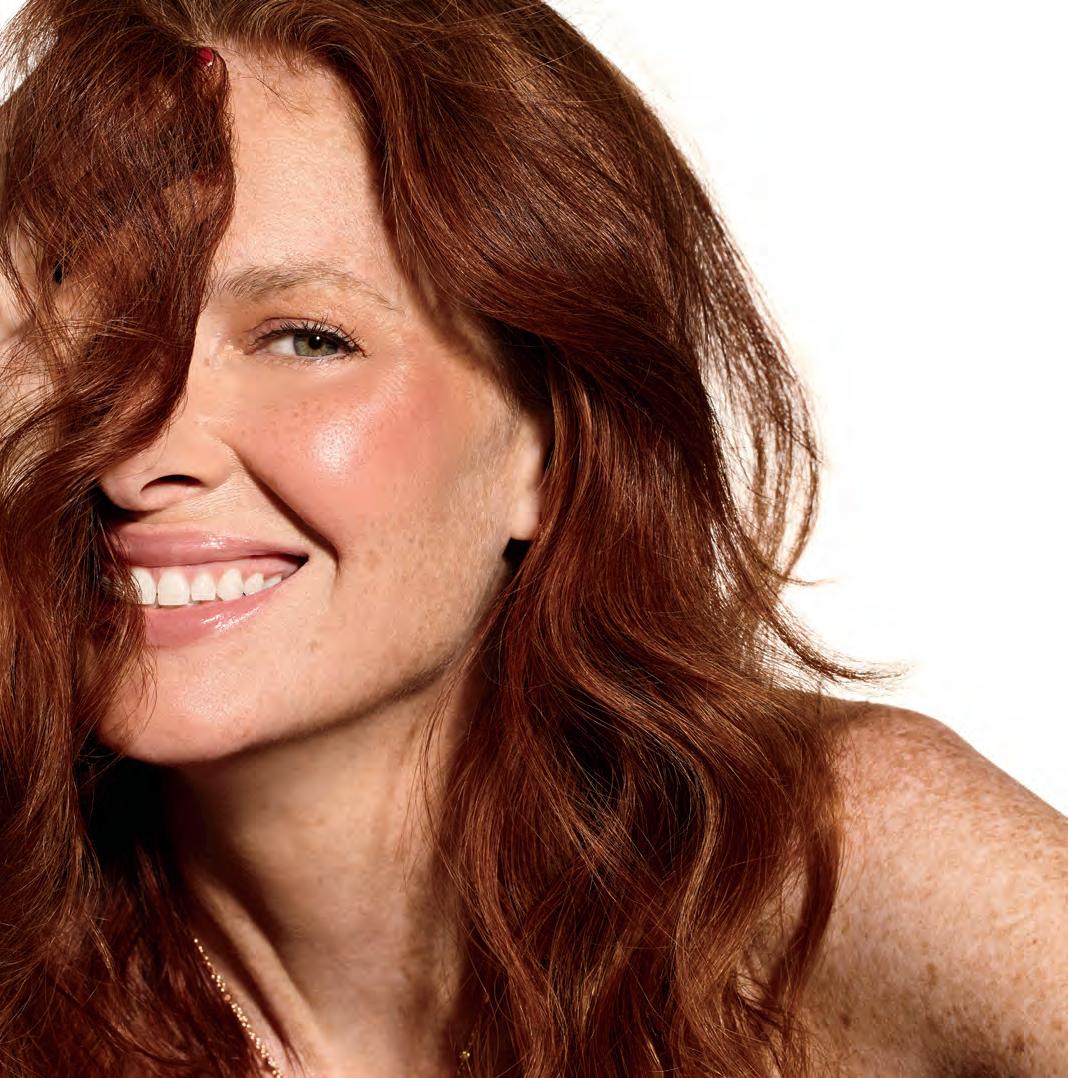
Sip on champagne, kiss with abandon — this lipstick won’t lose its fervor.
“She is the original influencer,” says Dr. Sarah Grant, curator of Marie Antoinette Style at London’s Victoria & Albert Museum. The exhibit, on view through March 22, traces how the French queen’s daring wardrobe choices continue to resonate on runways today. In the late 18th century, Marie Antoinette and her stylist avant la lettre, Rose Bertin, laid the foundation for the modern fashion industry by transforming Versailles court dress from a marker of social status into an expression of personal style. They gave women freedom of movement by reducing the grand habit with its unwieldy 10- to 12-foot-wide panniers to a more manageable size and reimagining the chemise as an outdoor-ready dress featuring puffed sleeves and a ruffled collar. Bertin found her entrée to Parisian fashion as a Rue Saint-Honoré marchande des modes, selling ribbons, lace, and other ornaments. In 1774, she landed her big break designing Marie Antoinette’s coronation robes and soon became the queen’s chief image architect. “Much like modern photo shoots, Marie Antoinette and Rose Bertin collaborated closely to style the queen for her portrait sittings,” says Grant. Their most famous project was Élisabeth Vigée Le Brun’s twinned portraits, shown at the Salon of 1783. The first, Marie Antoinette in a Chemise Dress, revealed the queen at the Petit Trianon in a sheer white muslin gown and straw hat, scandalizing Paris with its casual intimacy. It was quickly replaced by Marie Antoinette with a Rose, depicting her in a blue silk robe à la polonaise that featured smaller side hoops and a looser fit making for a comfortable garment without sacrificing decorum.
like today’s content creators, she curated and shared her image widely. Bertin styled herself the “Queen’s Fashion Merchant” and often boasted of her “latest collaborations with Her Majesty.” With the queen’s blessing, she sold copies of gowns that had debuted at Versailles, though only after a two-week embargo. Life-size poupées de mode mannequins, modeled on the queen and dressed in replicas of her outfits, were shipped from London to St. Petersburg, spreading French style across Europe. Marie Antoinette also appeared in fashion plates for the proto-magazines Le Cabinet des Modes and Galerie des Modes, reaching audiences far beyond the French court. She was no longer just a monarch; she had become a marketable brand.
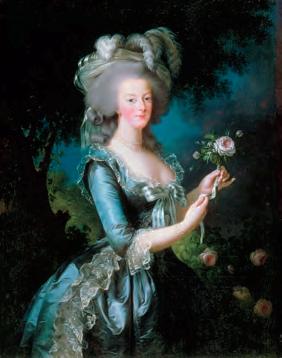
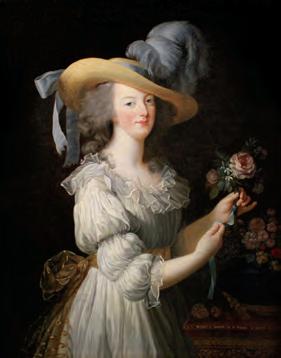
From Jeanne Lanvin’s robe de style and Christian Dior’s New Look to the theatrical interpretations of Vivienne Westwood, John Galliano, and Karl Lagerfeld, Marie Antoinette’s style has returned to the runway repeatedly. Even now, more than two hundred years after the queen’s untimely demise in 1793, it makes a striking statement on the Fall/ Winter 2025 catwalks. “Marie Antoinette invented a way of experiencing fashion that has remained unchanged over the centuries, opening the doors to today’s models, celebrities, and it-girls,” says N21 designer Alessandro Dell’Acqua, whose collection drew inspiration from the queen via Sofia Coppola’s 2006 biopic starring Kirsten Dunst as a Manolo-loving debutante. Sleek pencil skirts with oversized waist bows and a
Marie Antoinette’s image didn’t just hang in gilded frames: It circulated, multiplied, and sold. Much
This page: Elisabeth Vigée-Lebrun’s twinned portraits, Marie Antoinette with a Rose and Marie Antoinette in a Chemise Dress, 1783.
Opposite page: Alba Rohrwacher in Dior haute couture.

Cent ur ies before
the algor ithm,
Mar ie Ant oinett e proved
fashion’s great est
power is making
us cra ve
the unexpect ed.
SHAPING DESIRE
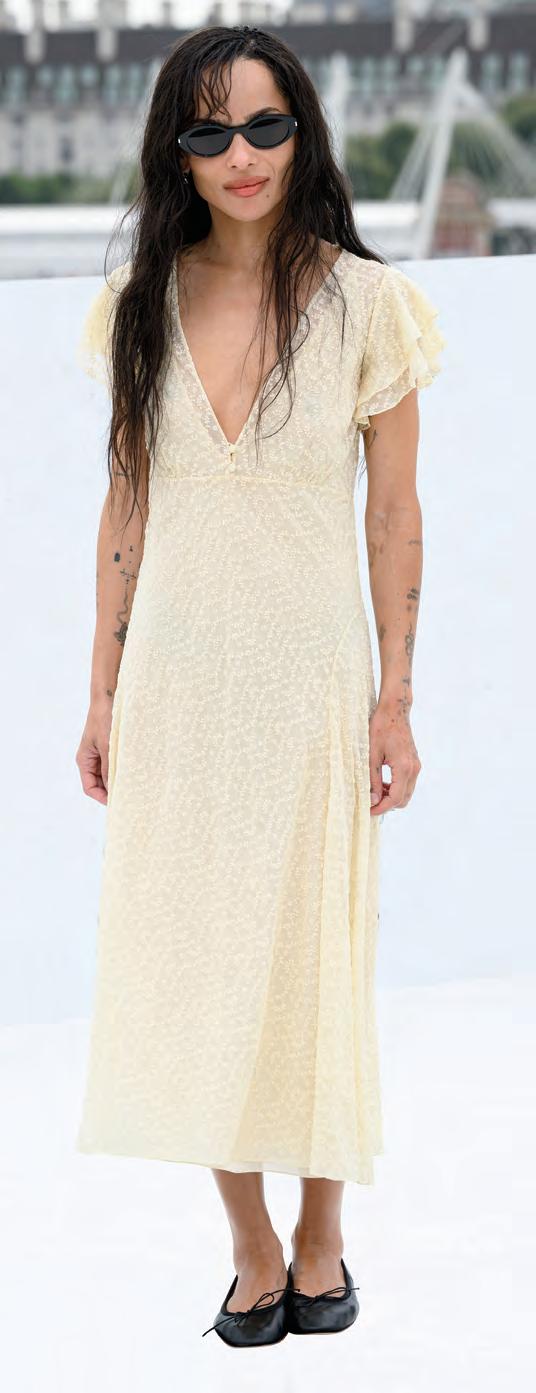
“swollen and disheveled” silhouette offered a modern take on 18th-century panniers and draperies. “At its heart, Marie Antoinette’s appeal is about longing for fantasy,” says vintage style influencer Yulia Fomenko, who has never met a pannier she didn’t love. Clearly, she’s not alone in her desire: “Marie Antoinette’s signature looks, including corset tops, bubble and dropwaist skirts, bows, ribbons, and lace, are key elements in some of today’s most searched aesthetics,” says Sagal Mohammed, editorial lead for Google Shopping, noting that “white boho chic dress,” recently hit an all-time high. Search interest for waist-extending shapes tells a similar story: “crinoline” doubled and “rococo dress” jumped 170 percent in the past month. On the Fall/Winter 2025 runways, hybrids fuse the structured pannier with flowing boho silhouettes in white lace and mesh. Meruert Tolegen offers a crinoline pleated pannier dress, while David Koma’s naked pannier dress for Blumarine merges sculptural structure with soft, flowing lines to create a striking, modern silhouette he calls “a symbol of timeless volume and presence.” This season, designers are also exploring how architectural shapes can be adapted. Colleen Allen’s cotton-velvet coats feature removable tulle inserts at the hips, “creating a striking silhouette while remaining effortless to wear,” she says. Louis Vuitton proposes double hip-slung fanny packs, while Ottolinger offers tieon hip pads.
Stylist Ana Tess highlights the DIY potential, recommending padded bike shorts, hip pads, or ruffled bloomers from Amazon to “pump up the volume” of a dress. She even bought a bean-shaped butt pillow from Zoe Gustavia Anna Whalen to add curvature under jackets. “I actually need to order a second one so I can tie them on both hips,” she says, underscoring that this iteration of Marie Antoinette mania is as playful as it is personal—an invitation to dream, just as the queen of fashion intended.
Zoë Kravitz in Saint Laurent
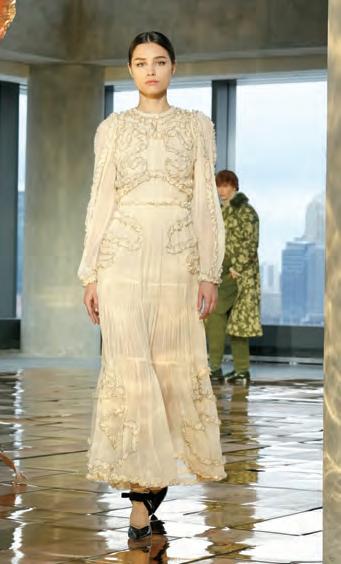
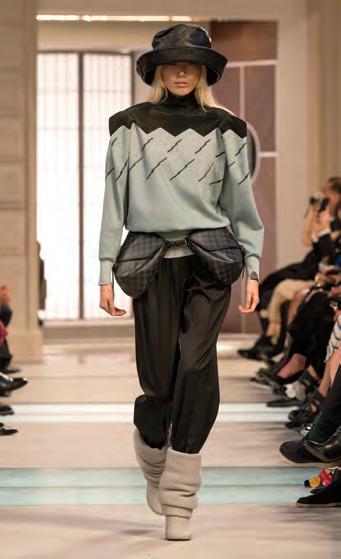
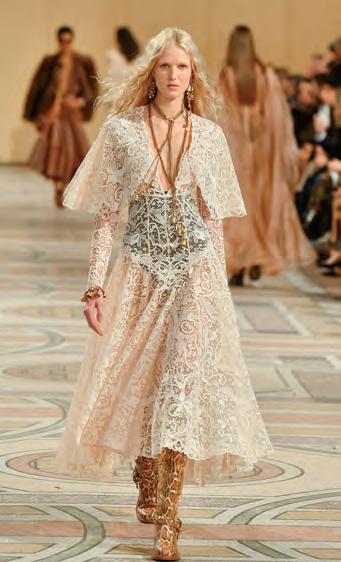
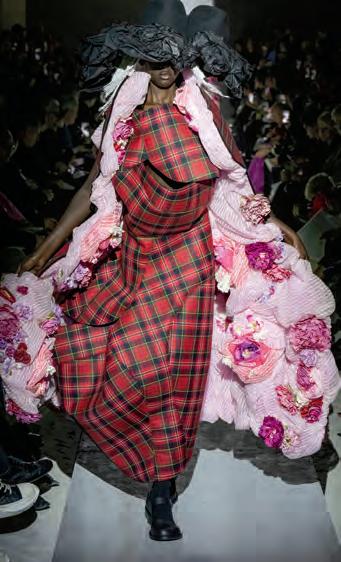
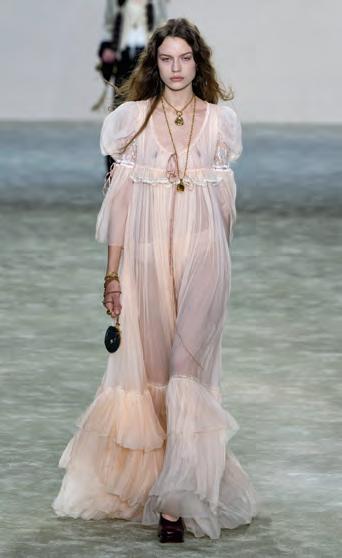
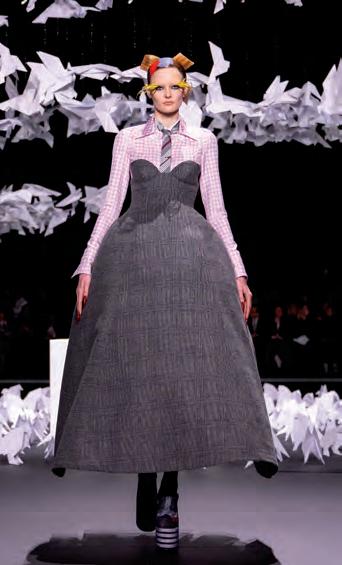
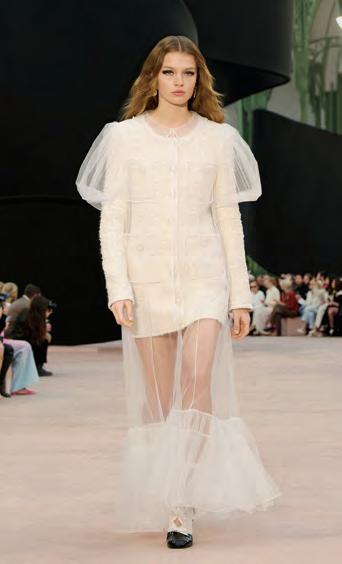
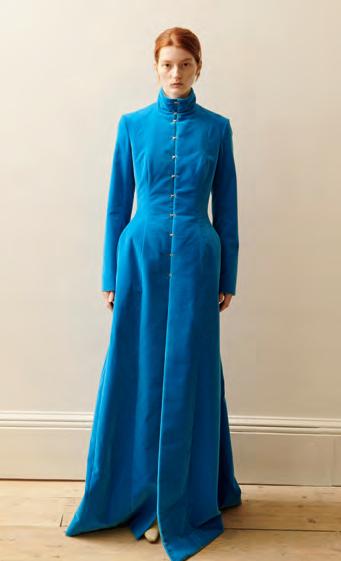

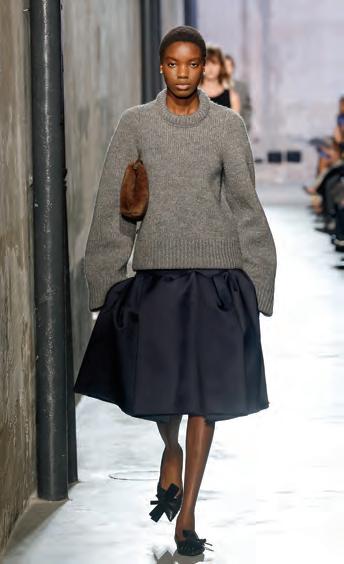
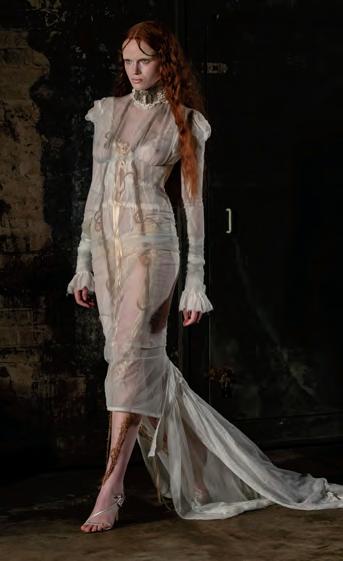
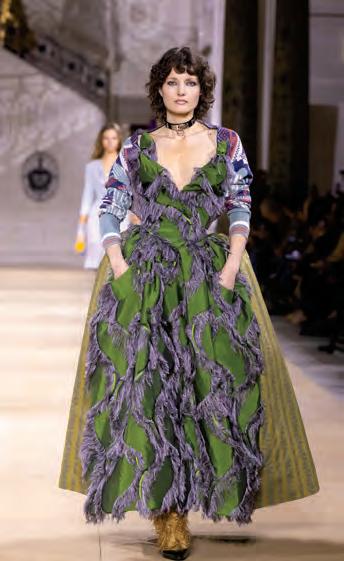
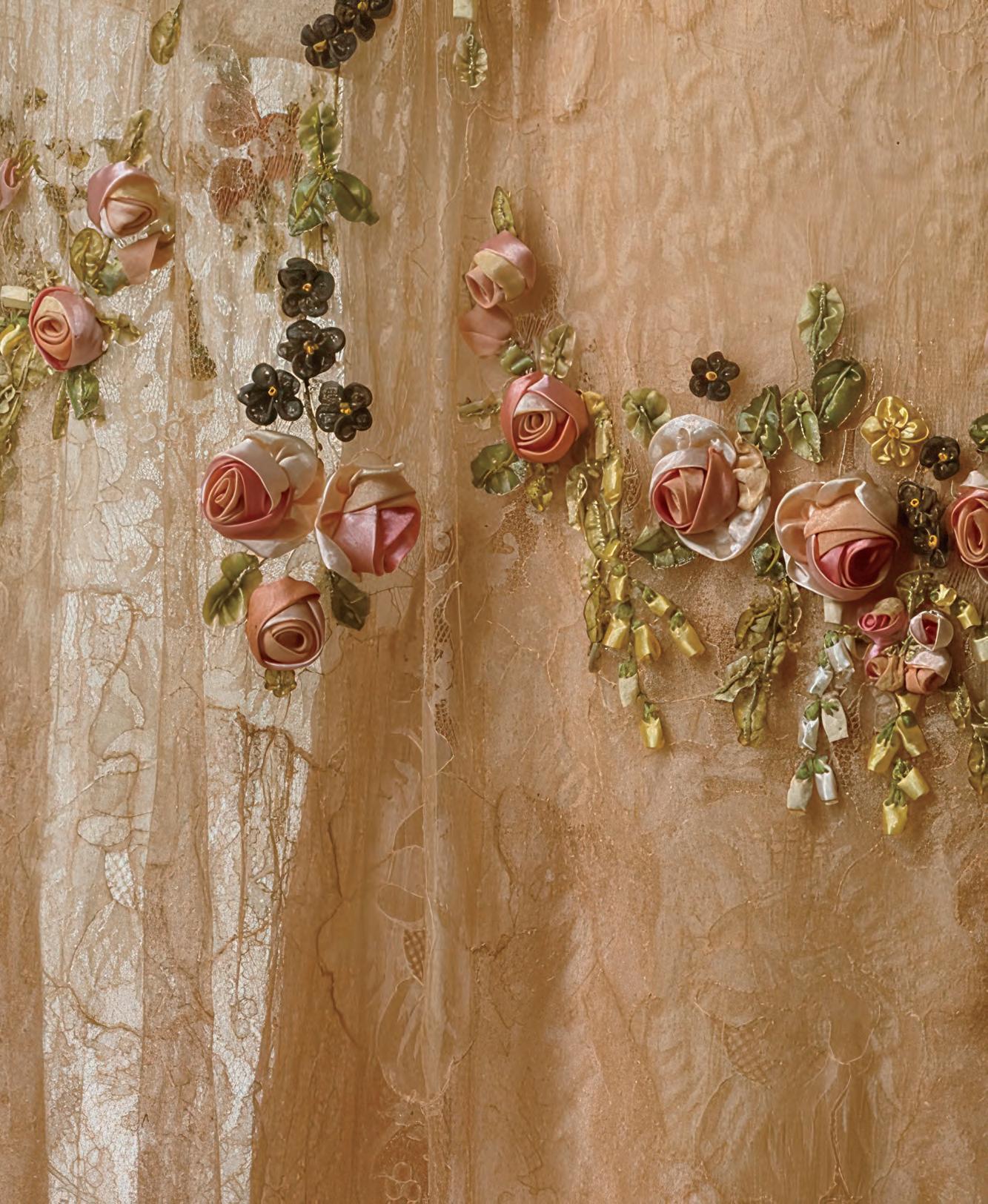
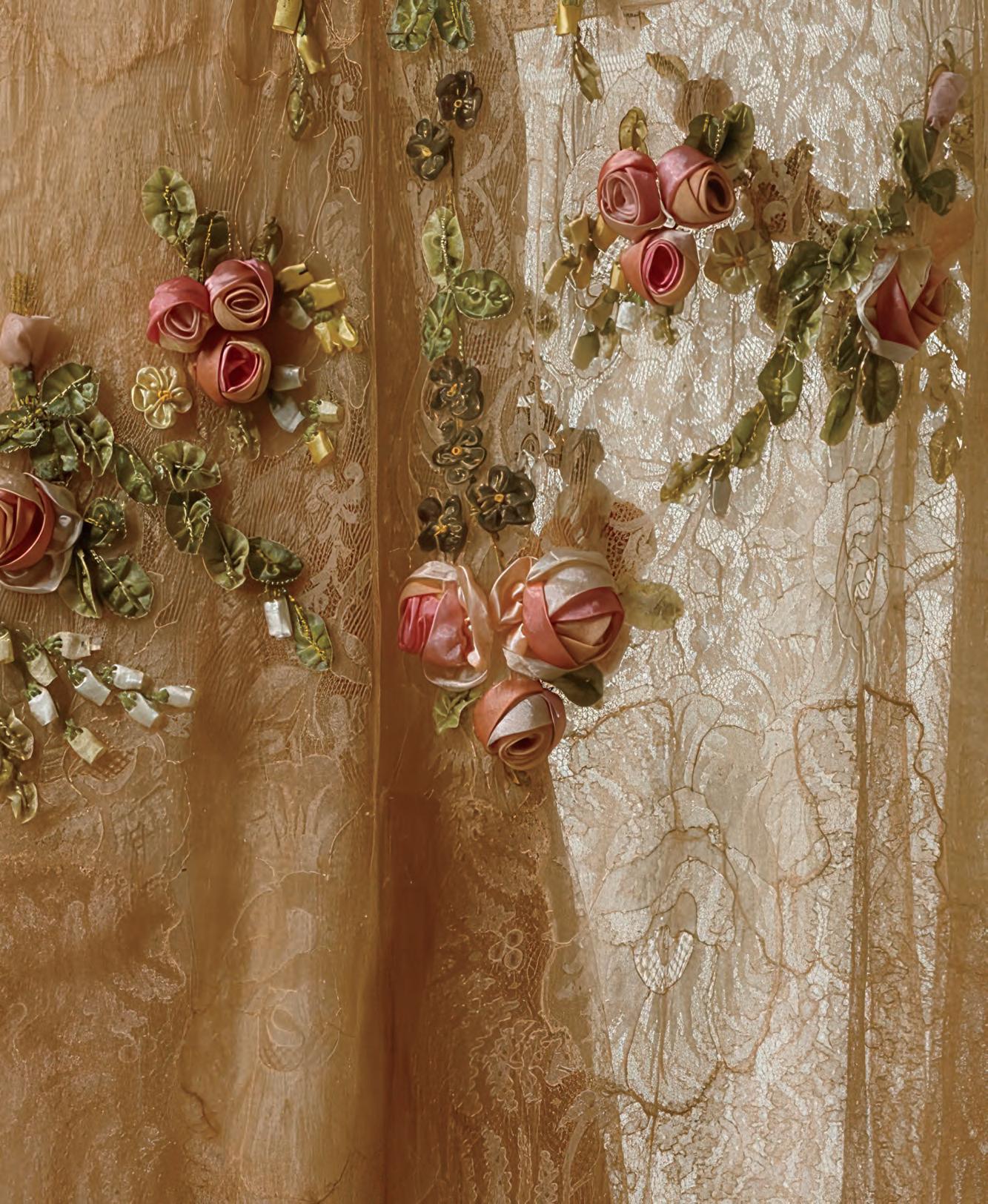
This is the season’s dreamscape — where craftsmanship seduces fantasy, and fashion becomes desire made visible. Here, fall’s most compelling looks unfold in thoughtful new ways, offering fresh ideas and possibilities to inspire your next evolution. This isn’t just what to wear, but who one can become.
A study in contrast s: 1960s rigor
softened by whispers of
intimacy
THE DISCREET CHARM OF THE BOURGEOISIE
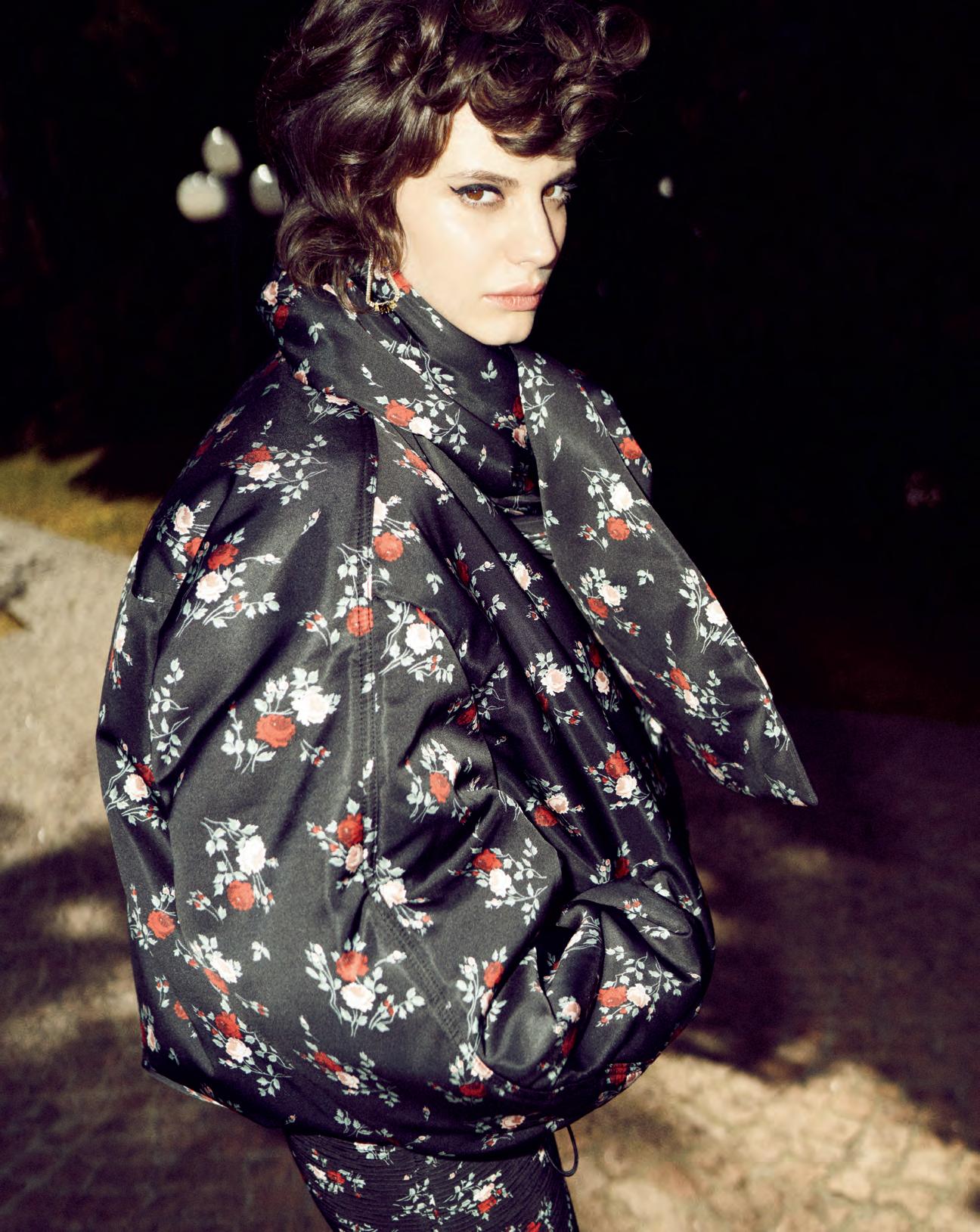
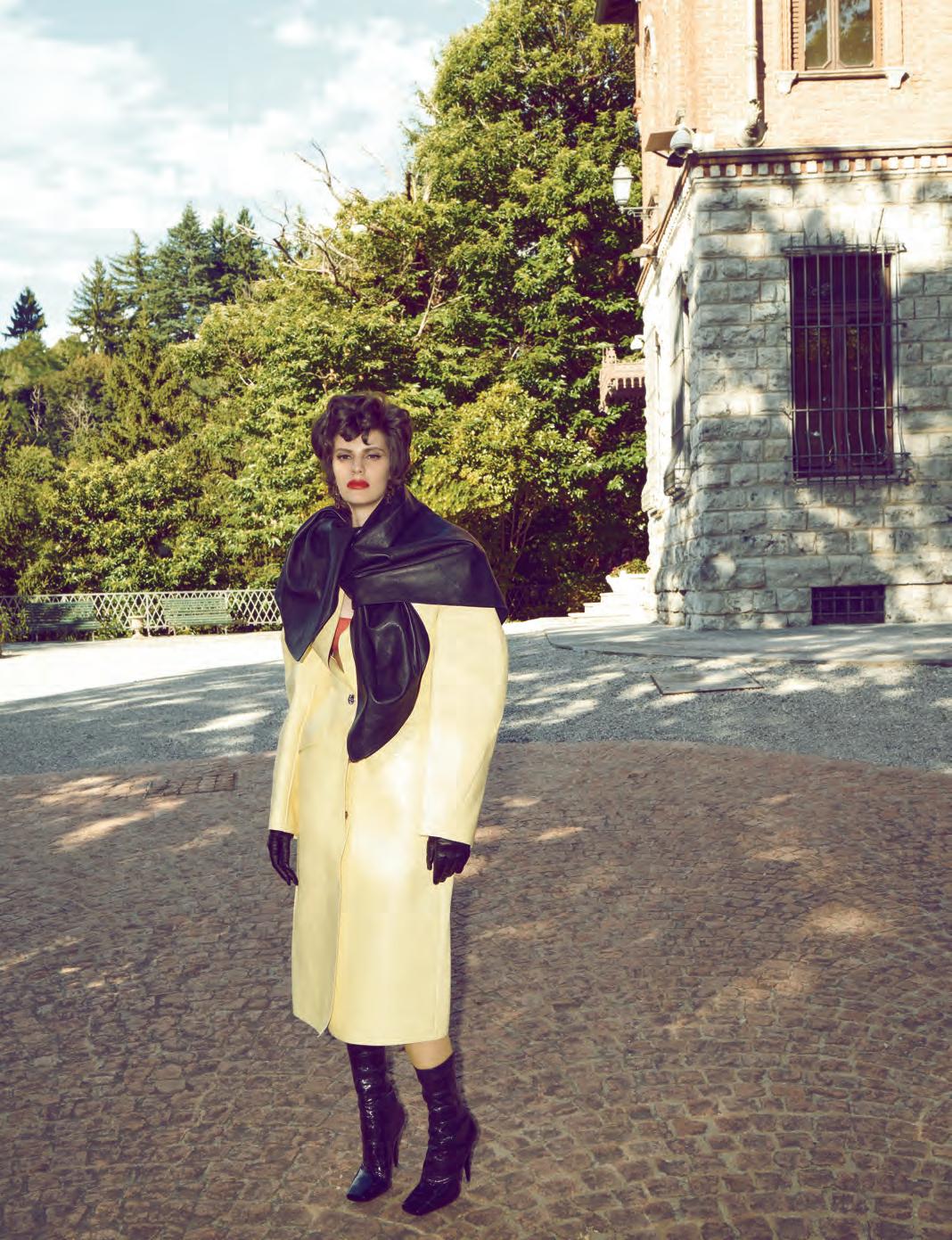
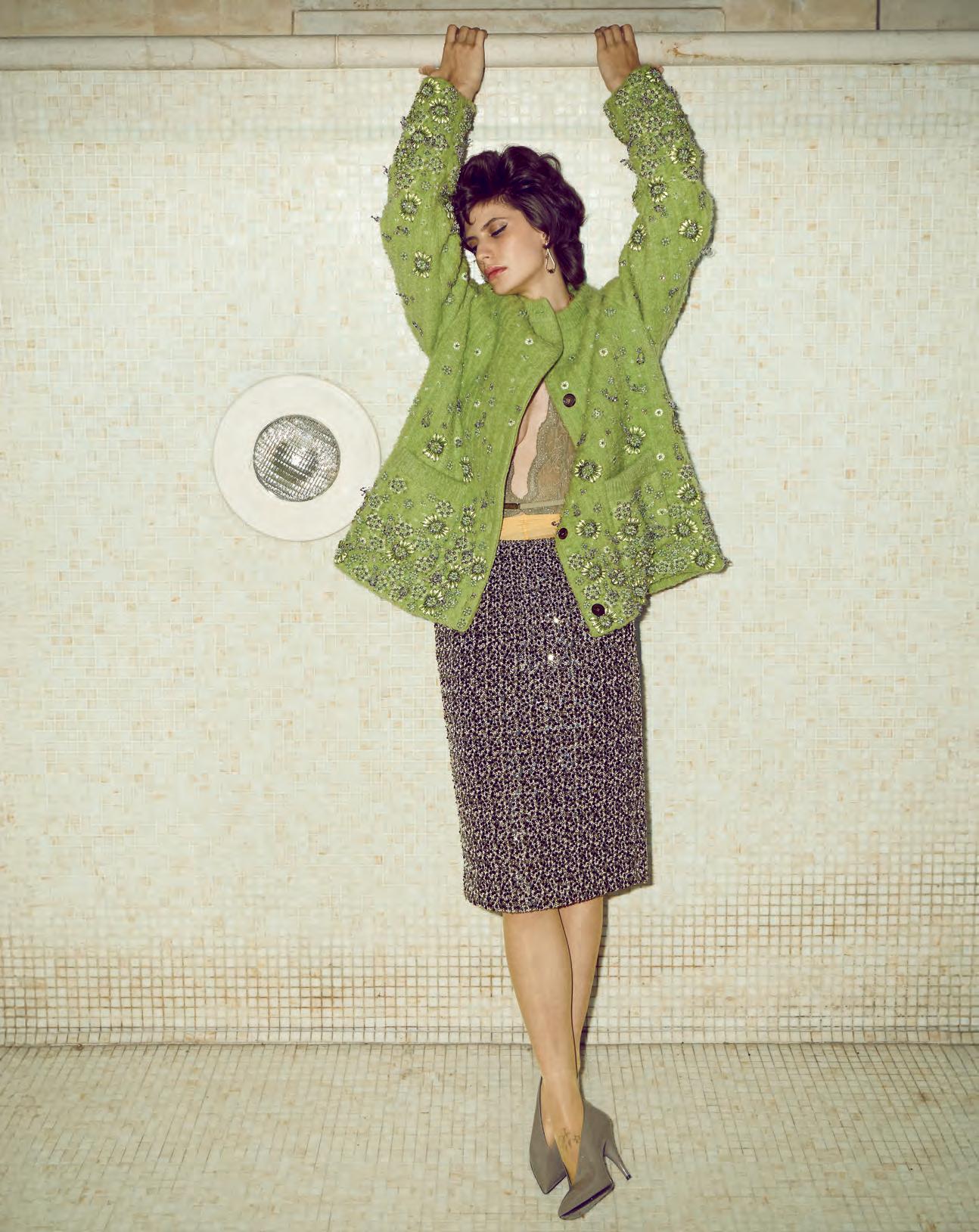
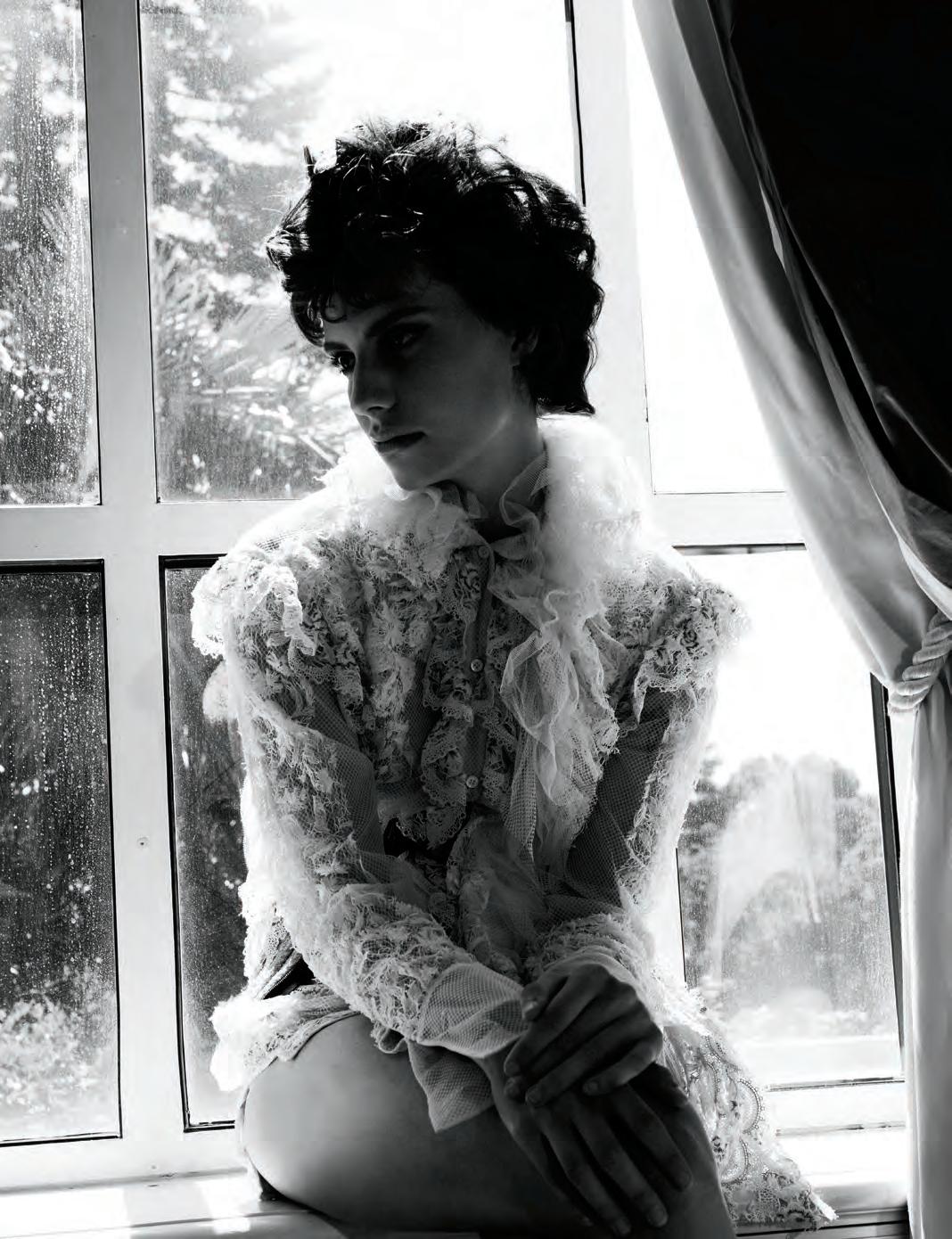
This page: Dior top, (800) 929-DIOR.
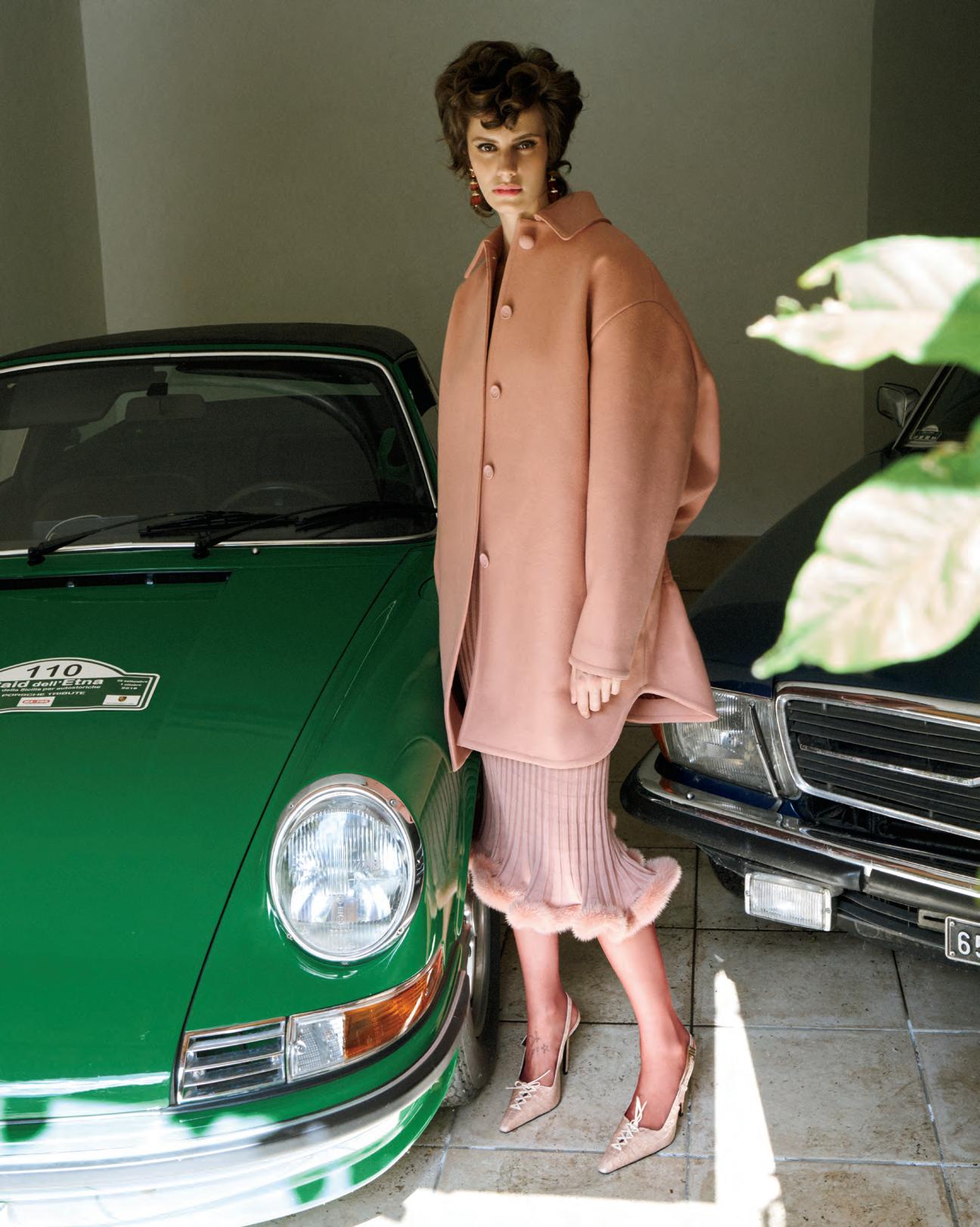
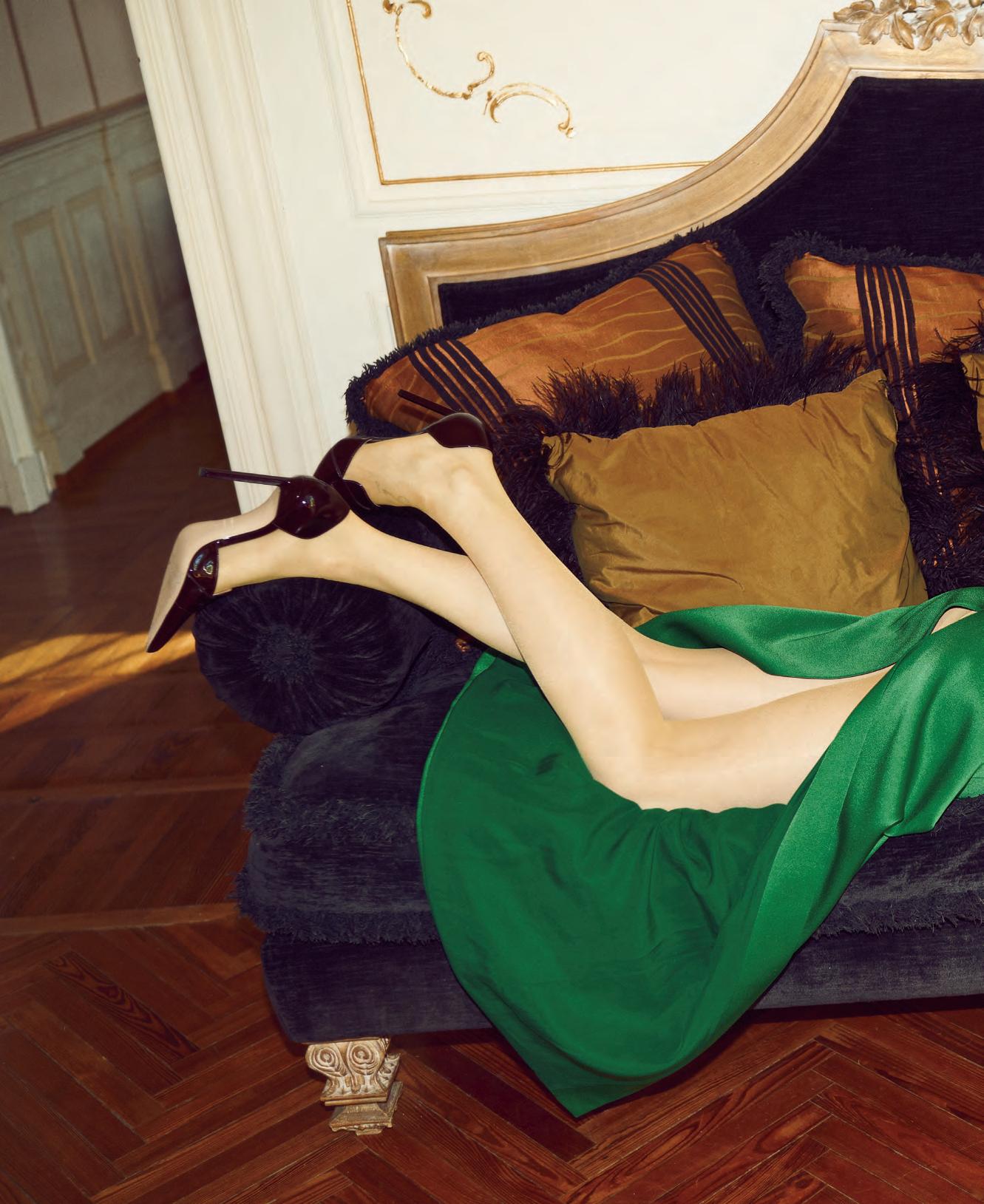
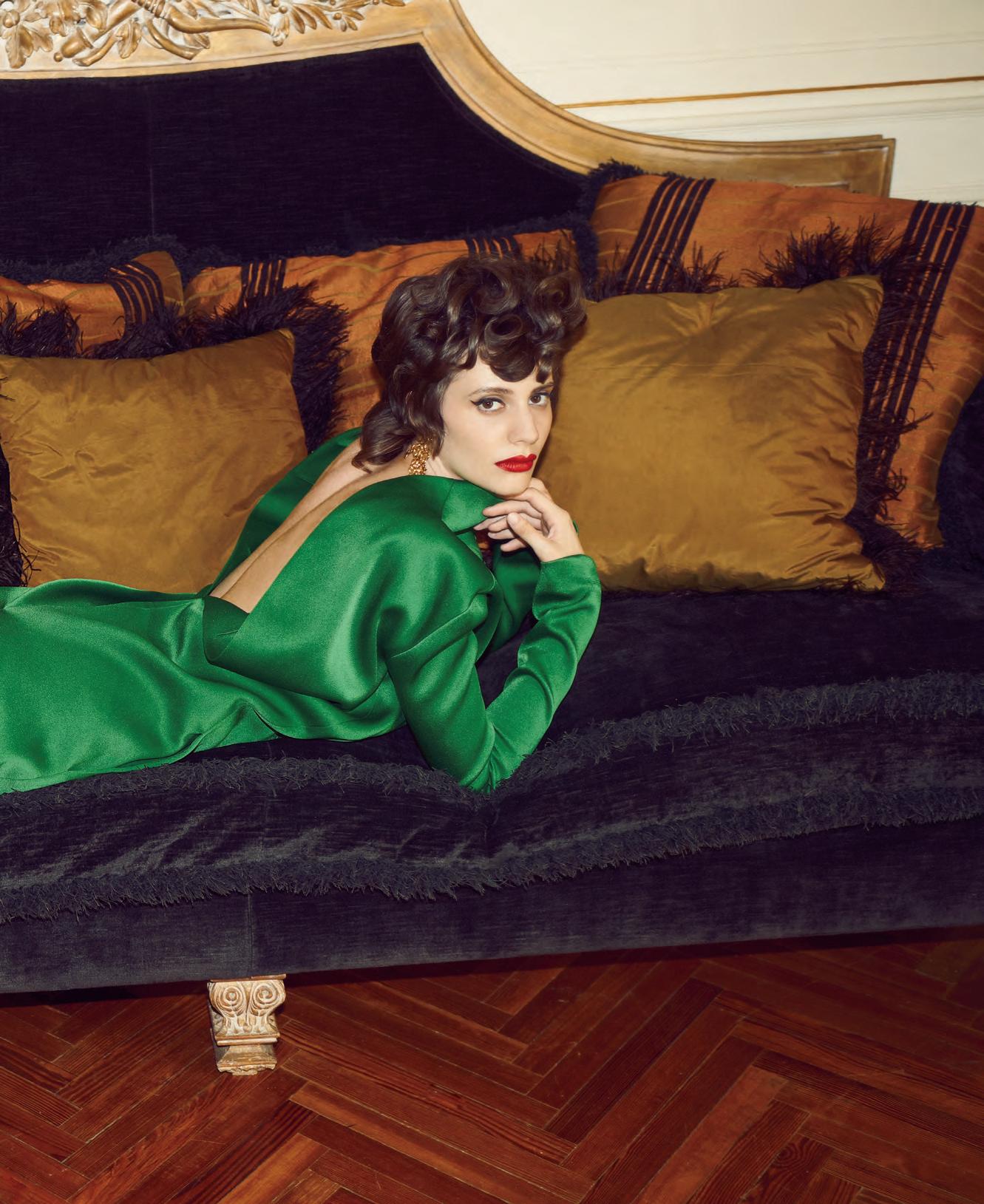
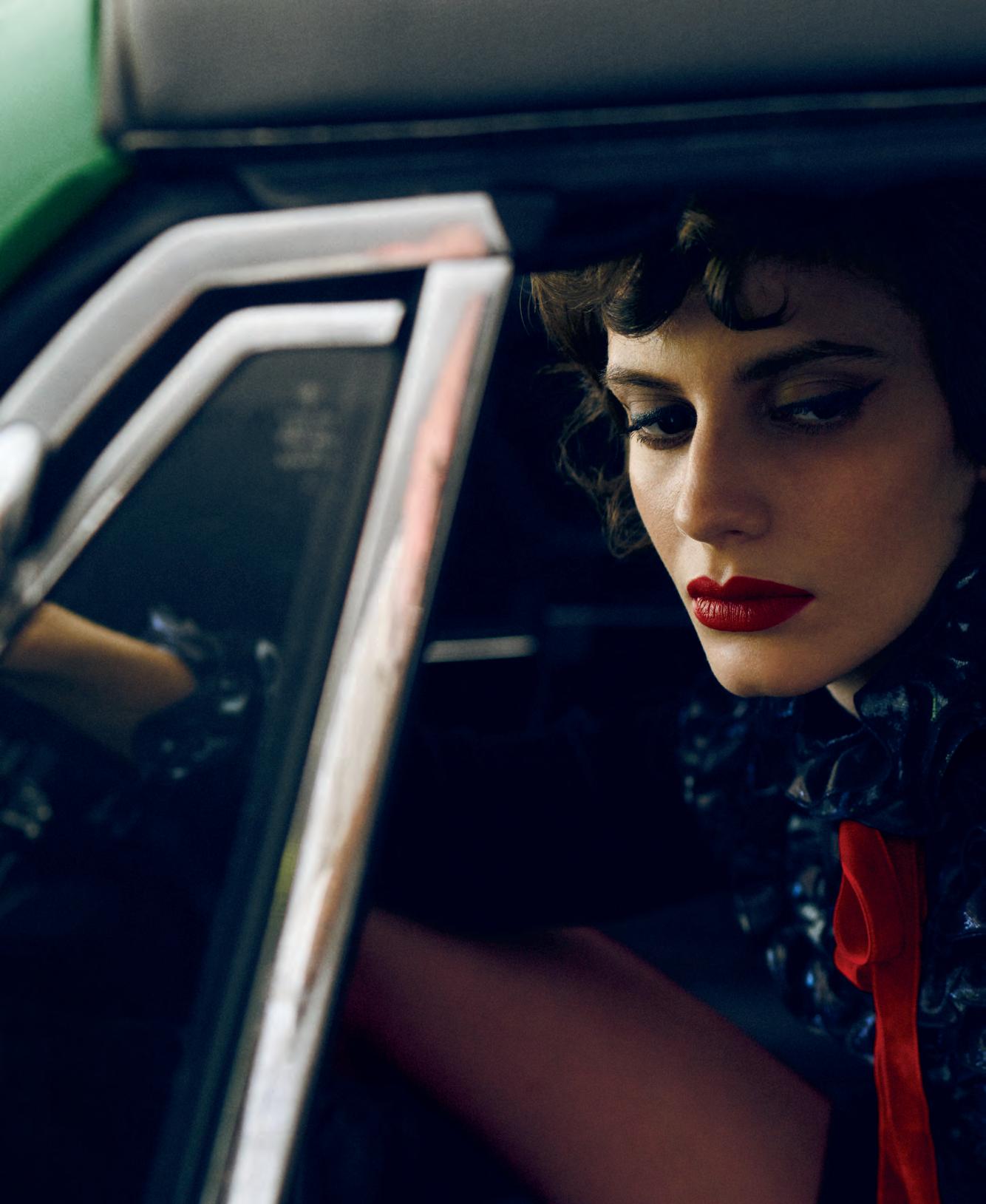

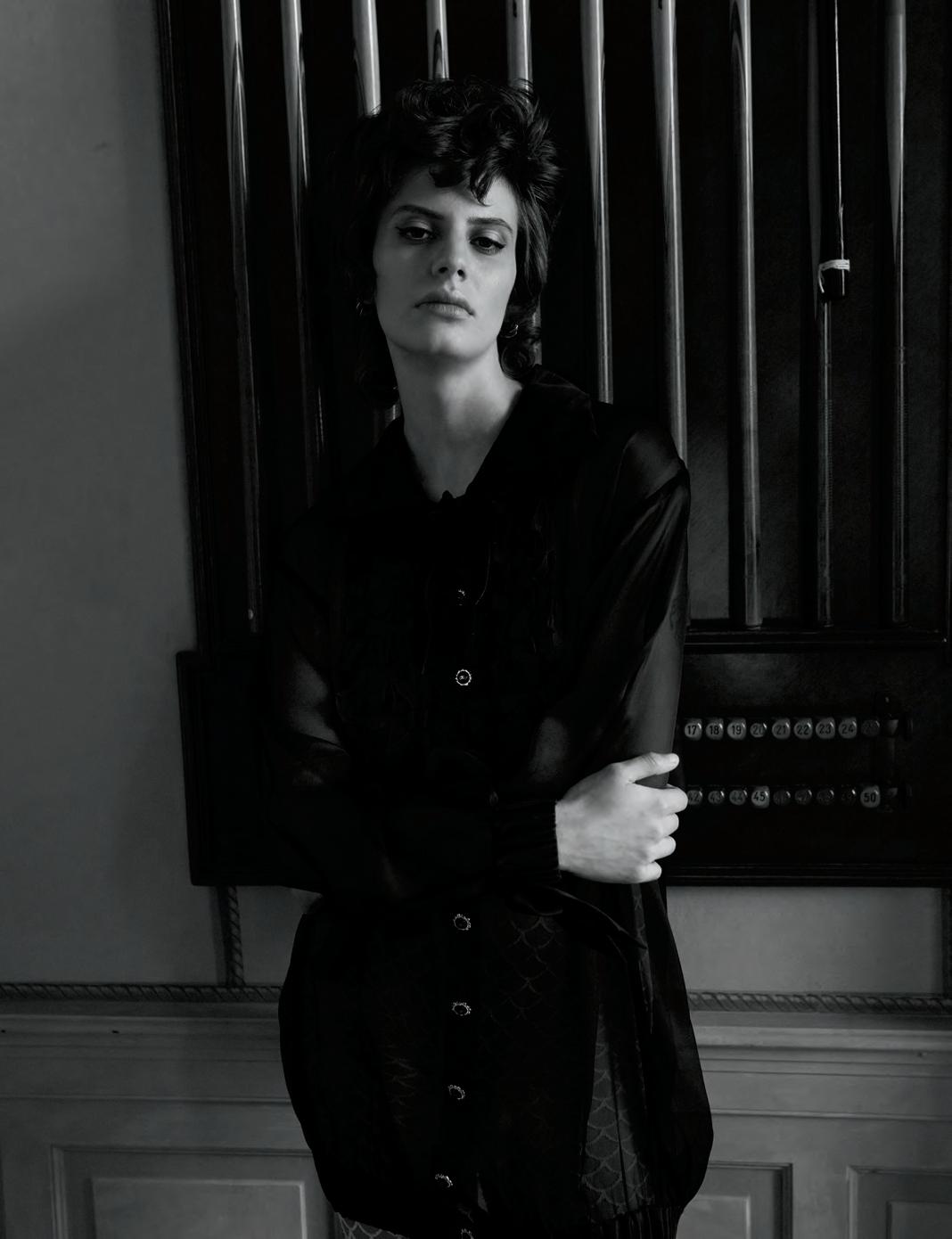
This page: CHANEL dress, 800-550-0005; Aurélie Bidermann earrings, bracelets, aureliebidermann.com; Wolford tights, wolford.com. Opposite page: McQueen Dress, alexandermcqueen.com; Aurélie Bidermann earrings, aureliebidermann.com.
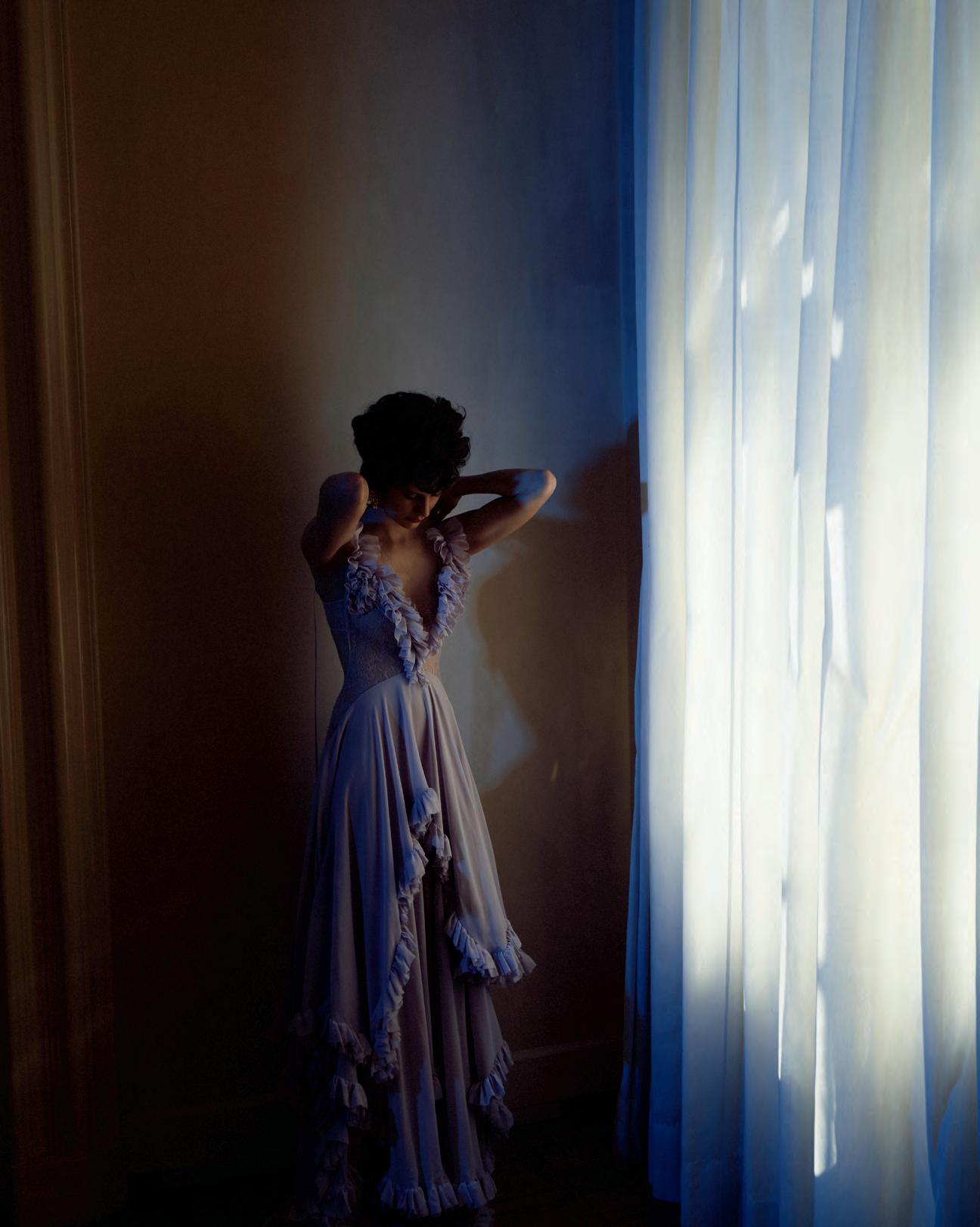
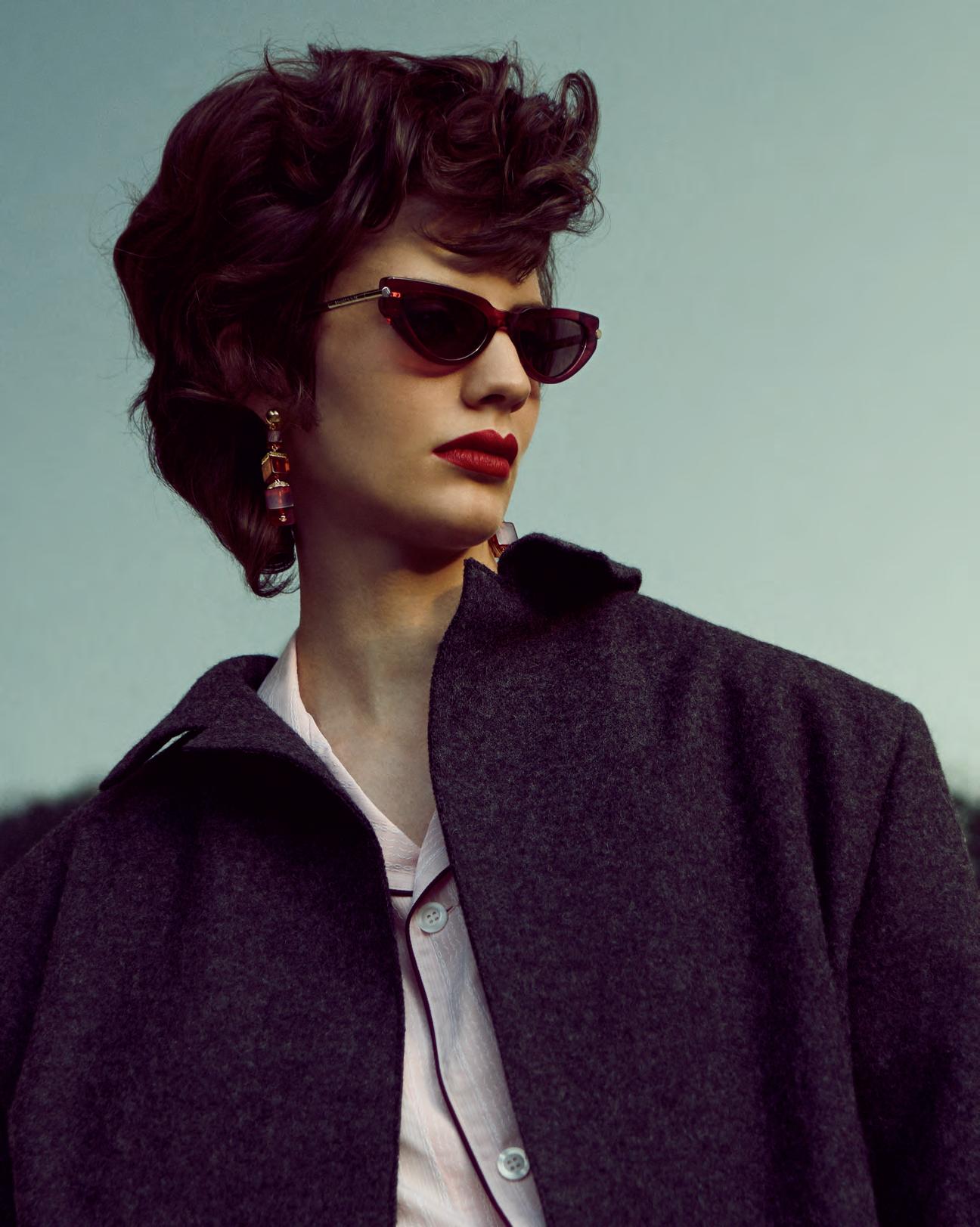
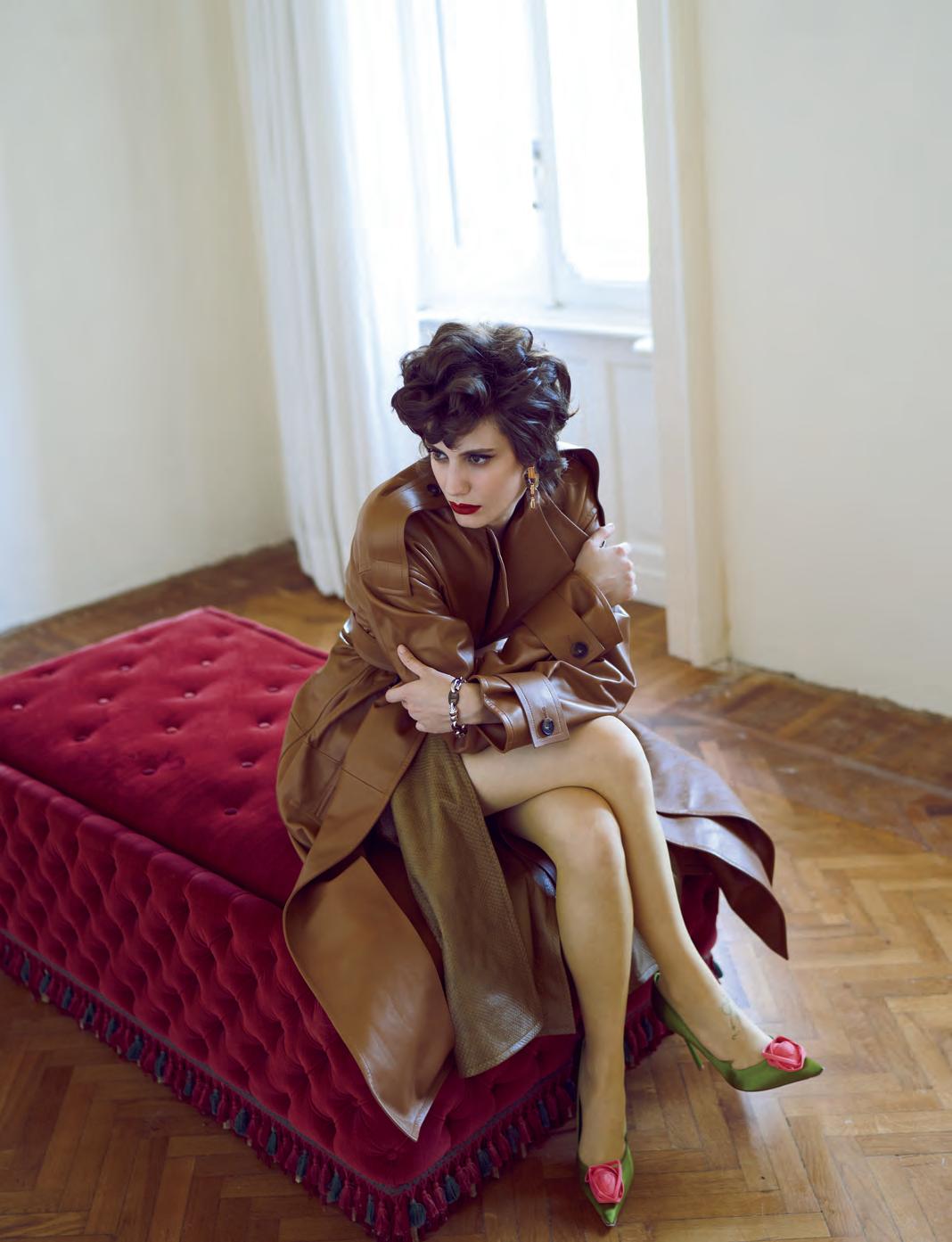
This page: Tod’s coat, shirt, skirt, tods.com; Hermès earrings, bracelet, hermes.com; Wolford tights, wolford.com; Roger Vivier shoes, rogervivier.com. Opposite page: Prada coat, shirt, earrings, prada.com; McQueen sunglasses, alexandermcqueen.com.
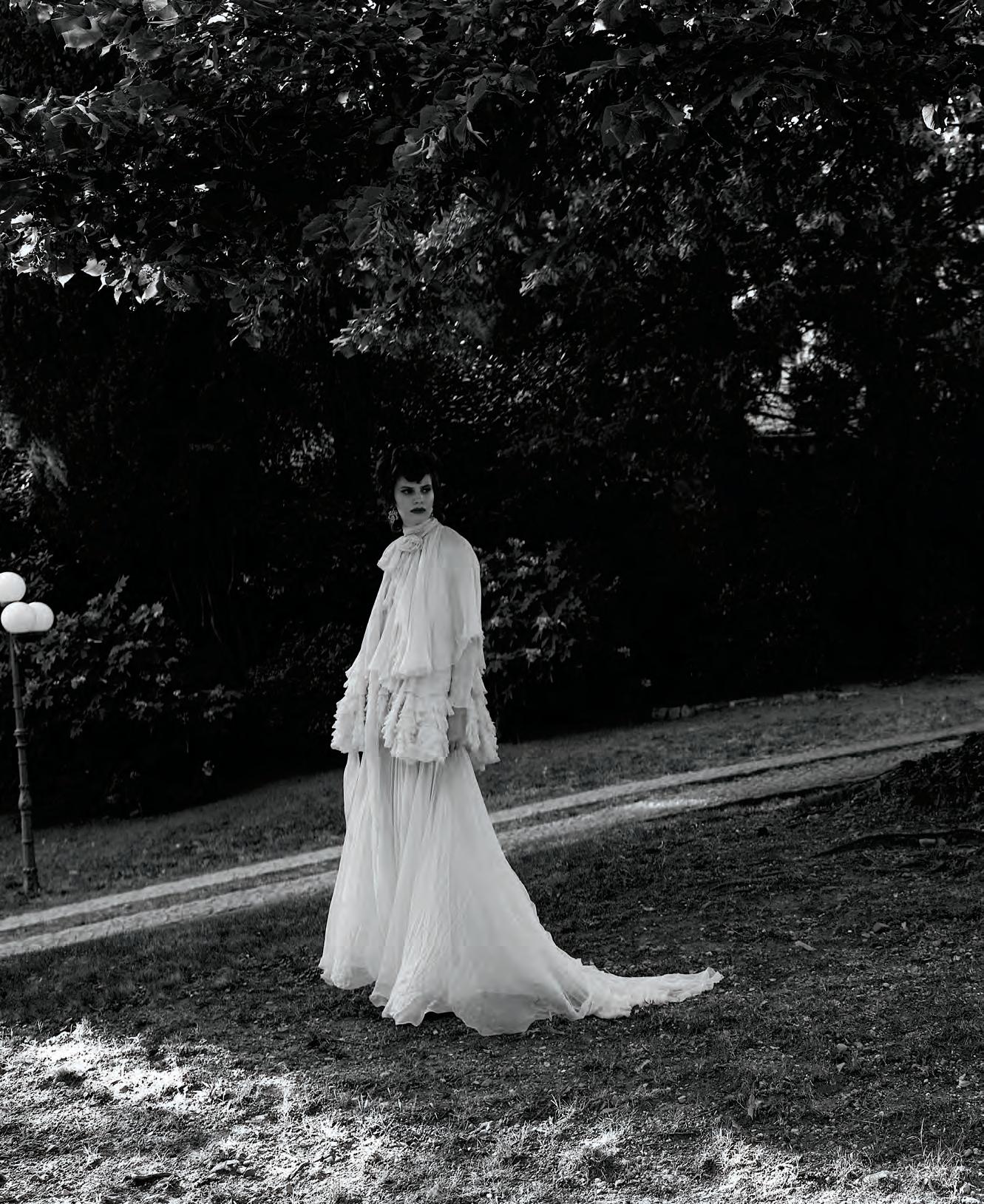
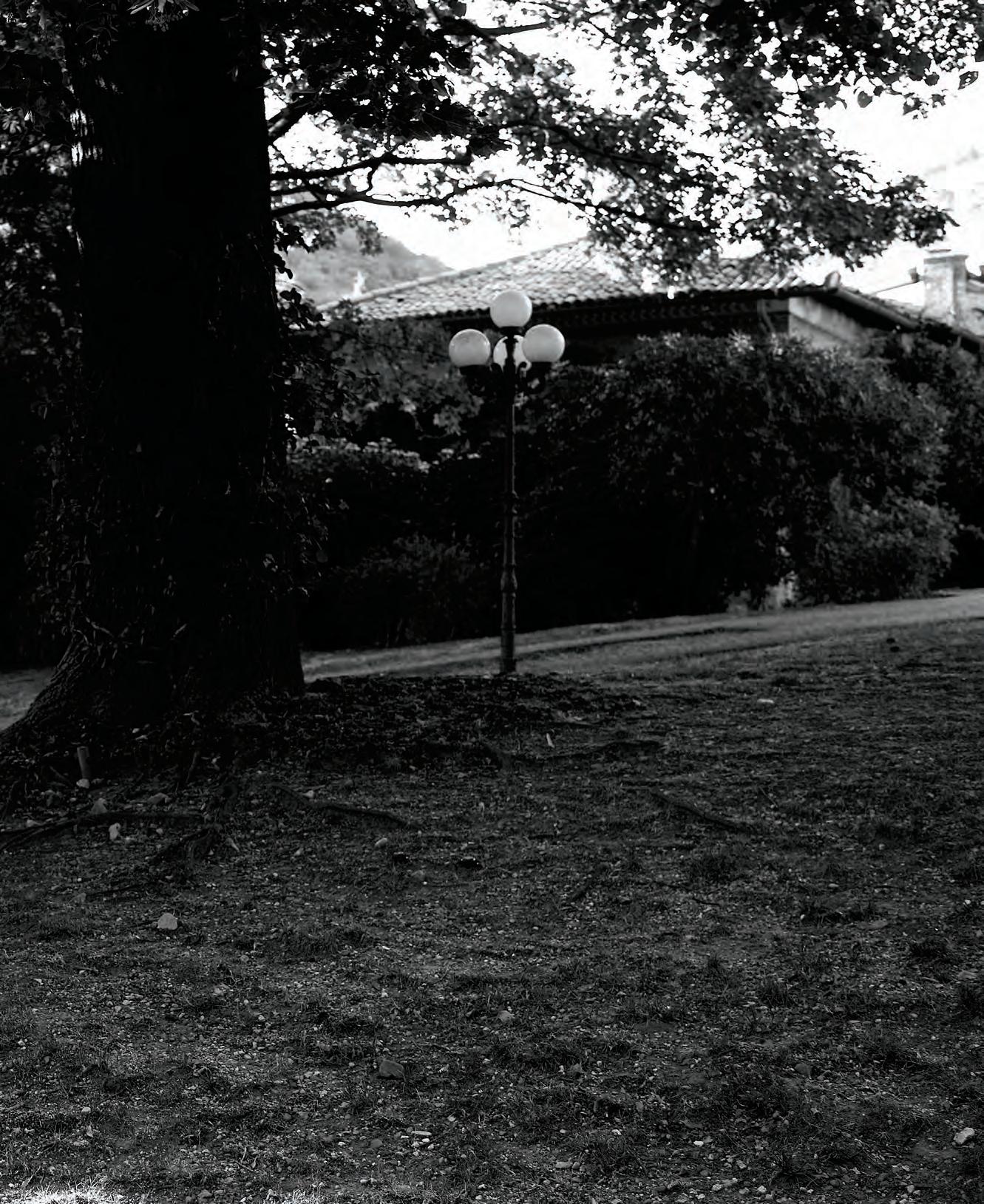

R etrace the scenes where the affair ended in the clothes that would make them ne ver forget you. THE LAST ROMANTIC
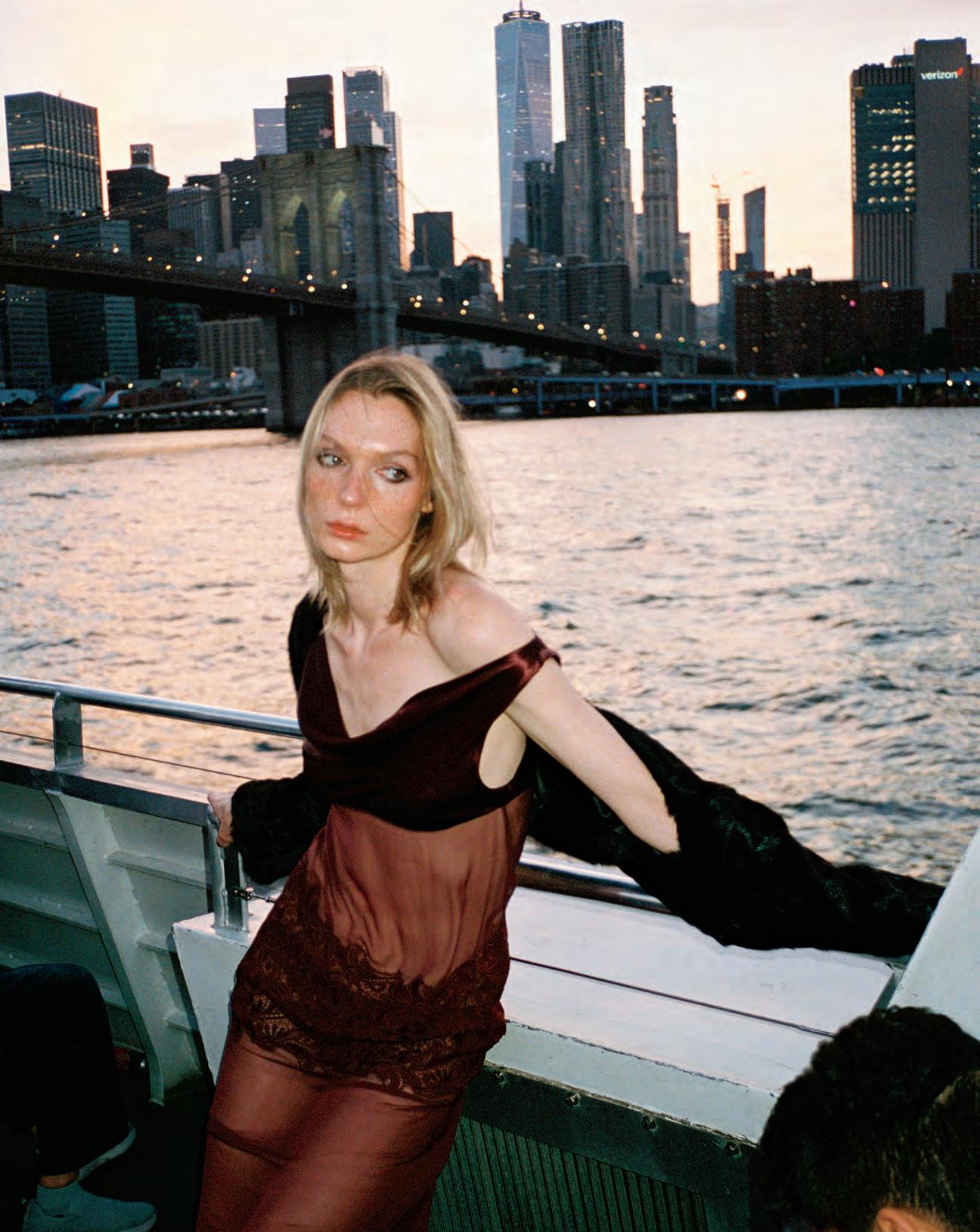
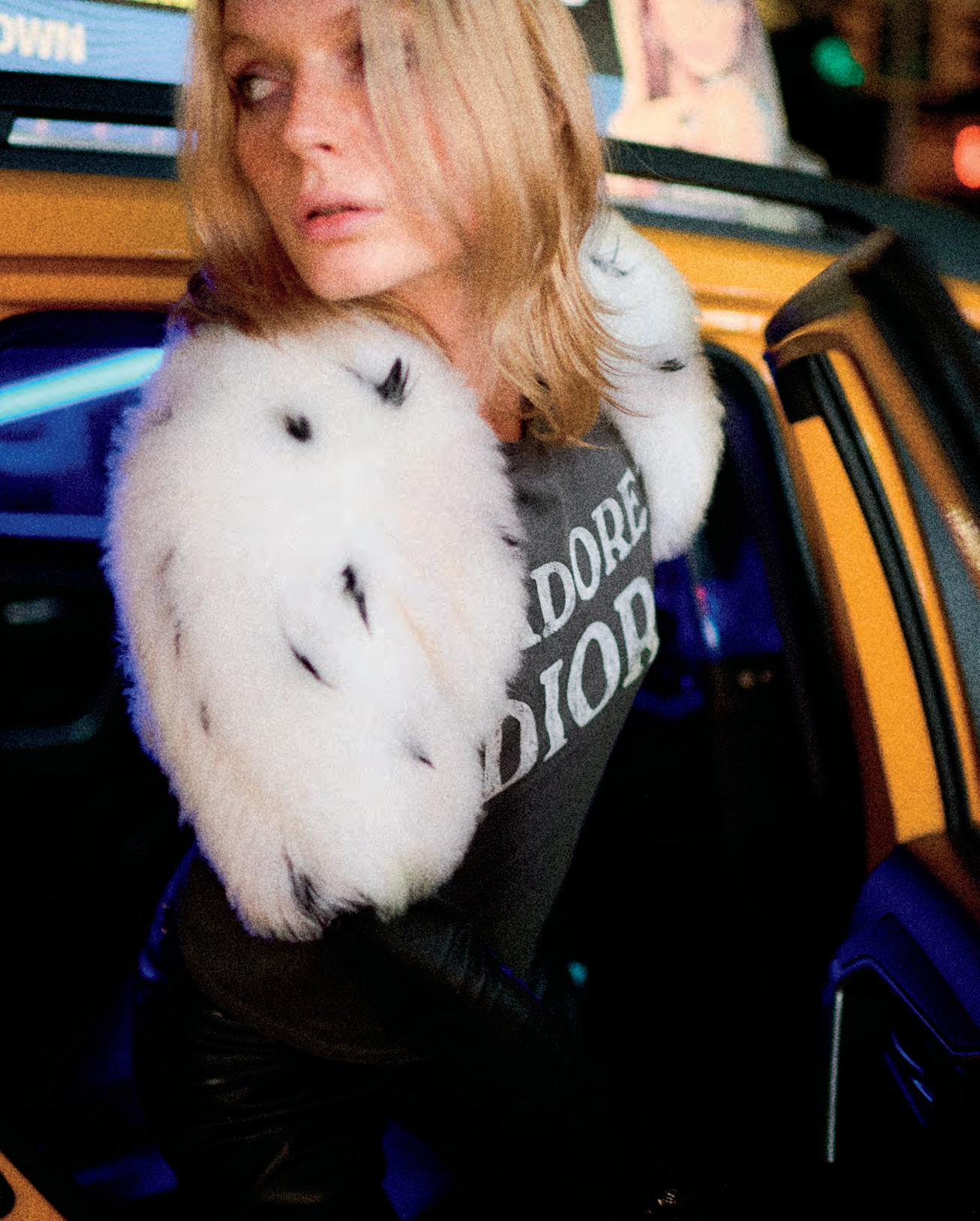
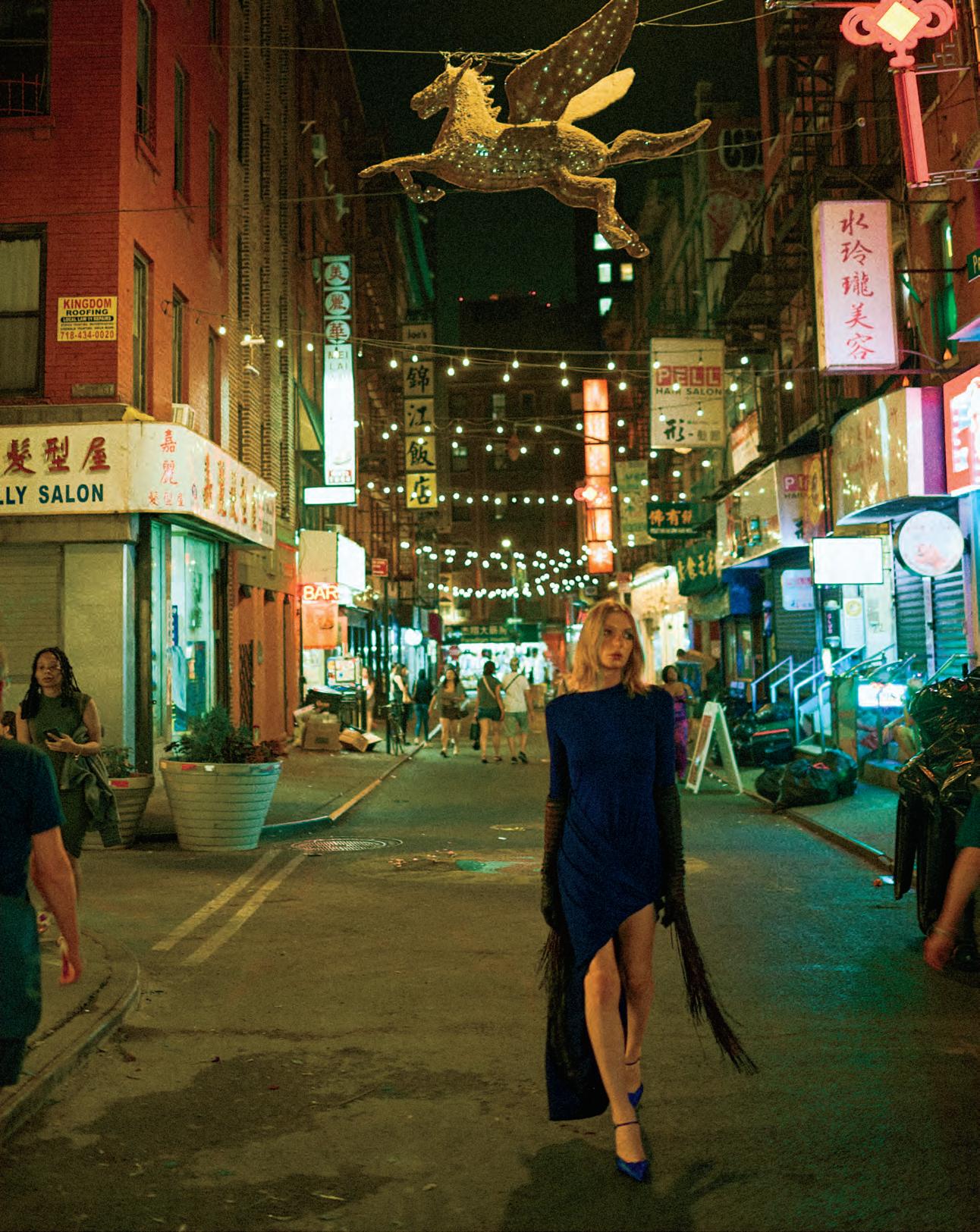
Sportmax dress, gloves, us.sportmax.com; Giuseppe Zanotti shoes, giuseppezanotti.com.
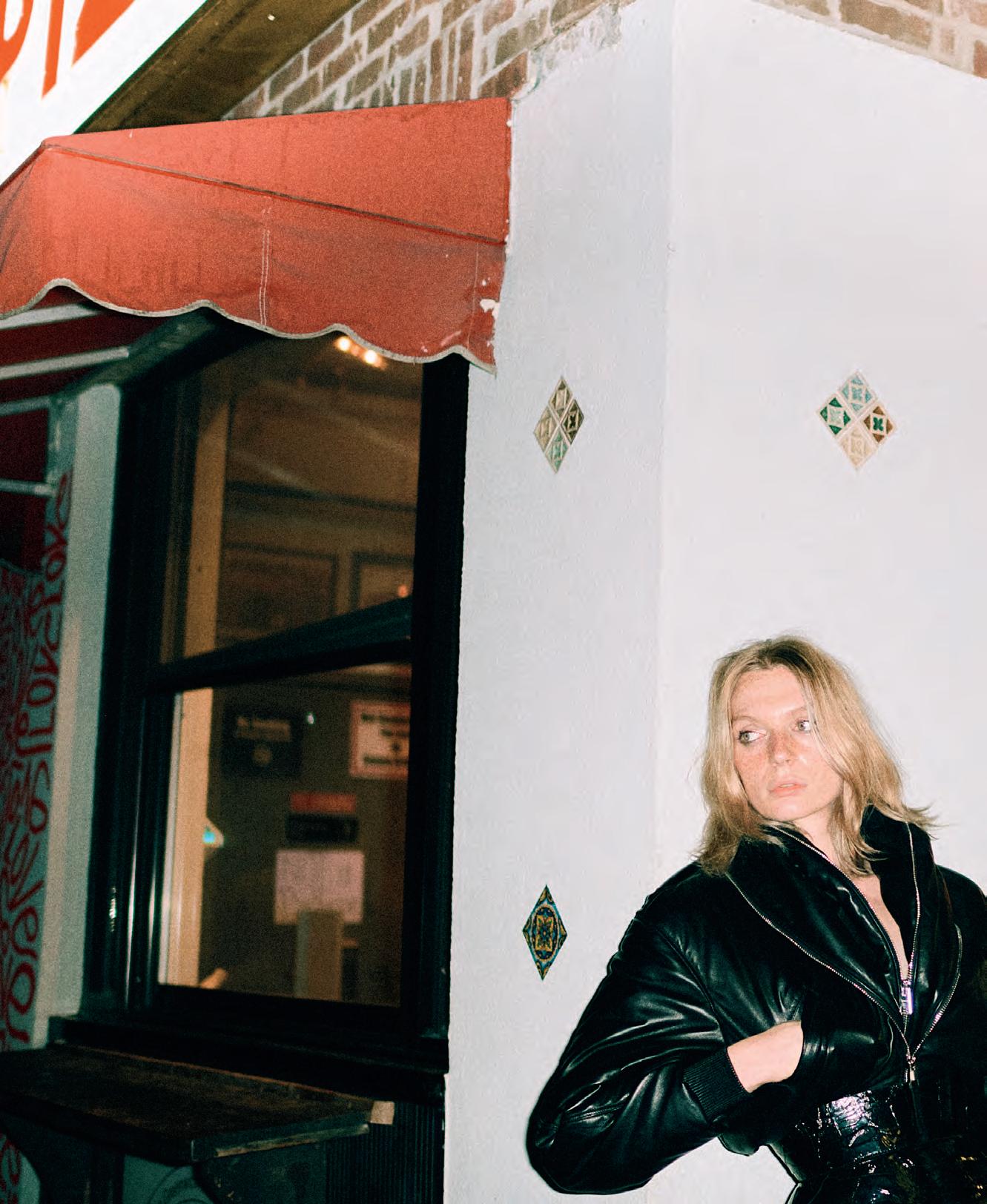

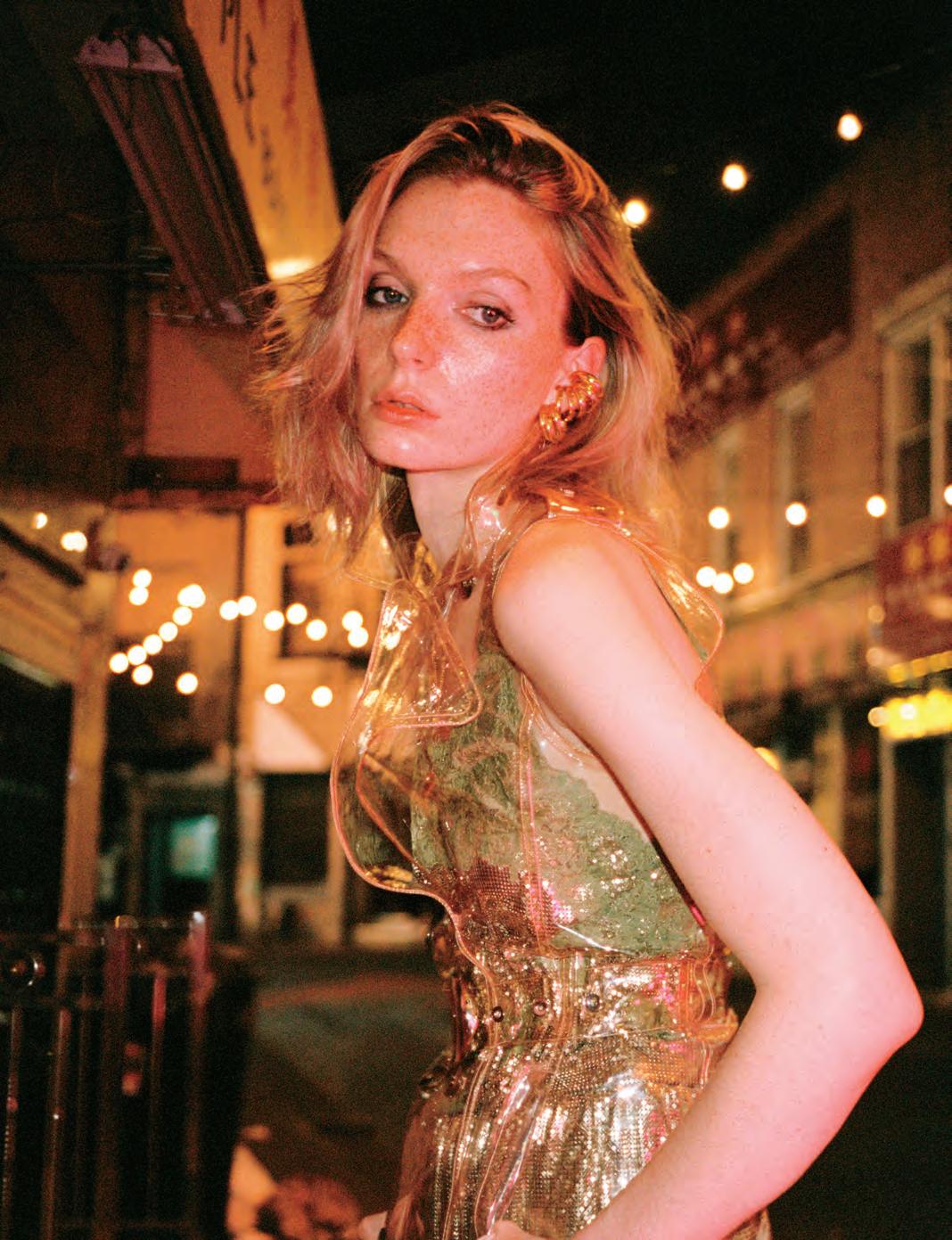
This page: Rabanne vest, top, skirt, necklace, earrings, rabanne.com. Opposite page: Isabel Marant dress, belt, us.isabelmarant.com.
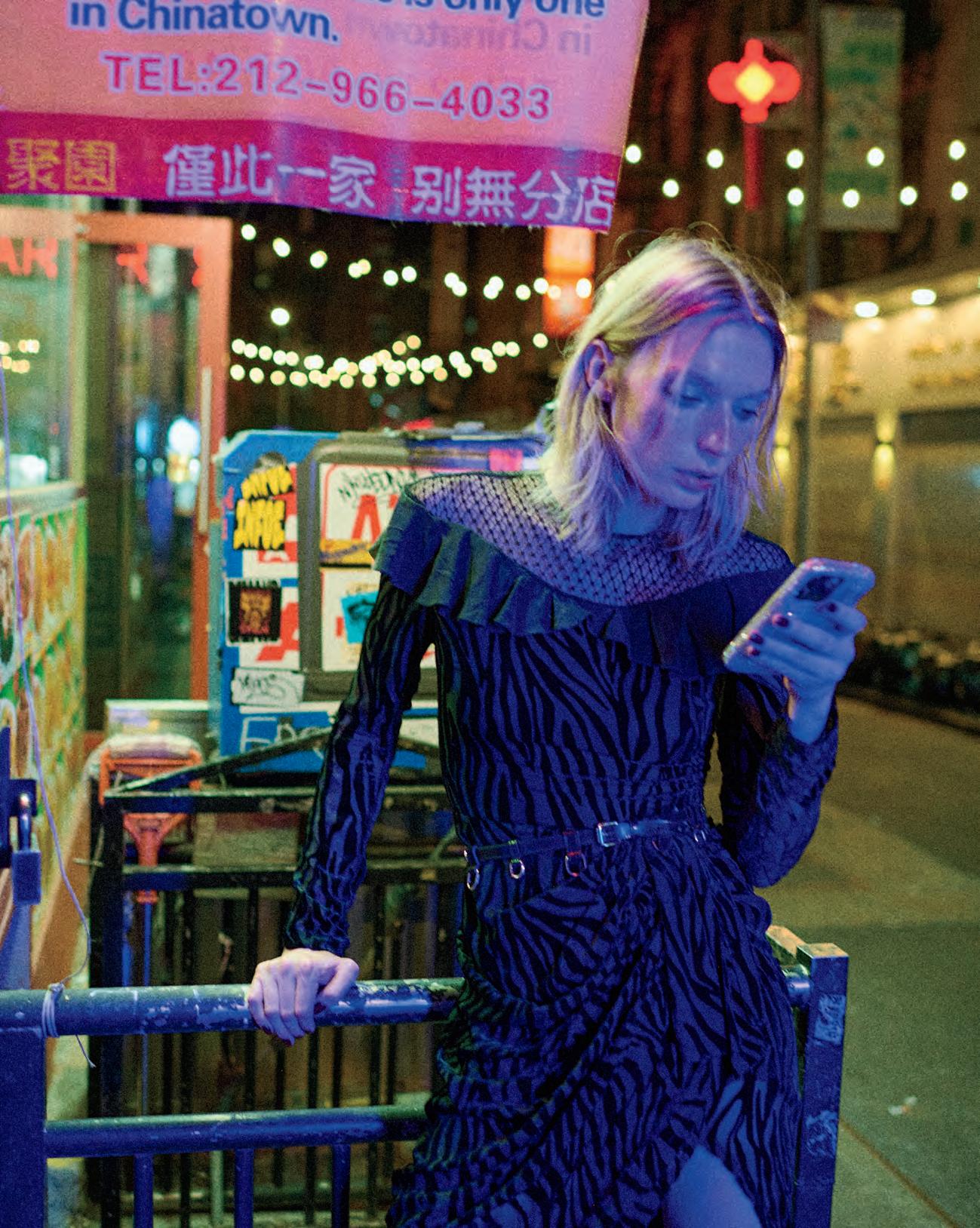
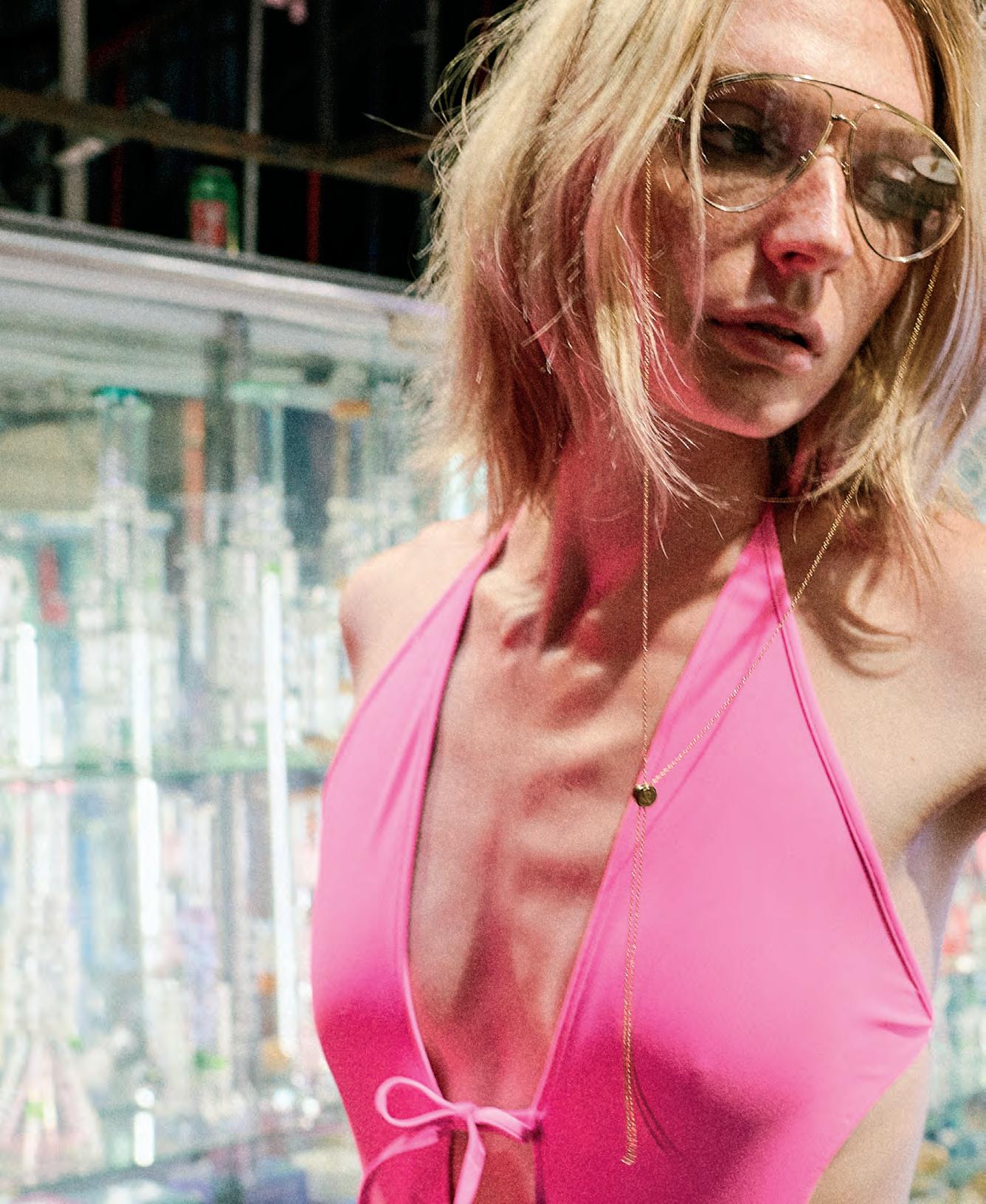
Balenciaga dress, balenciaga.com. Gucci glasses, gucci.com.
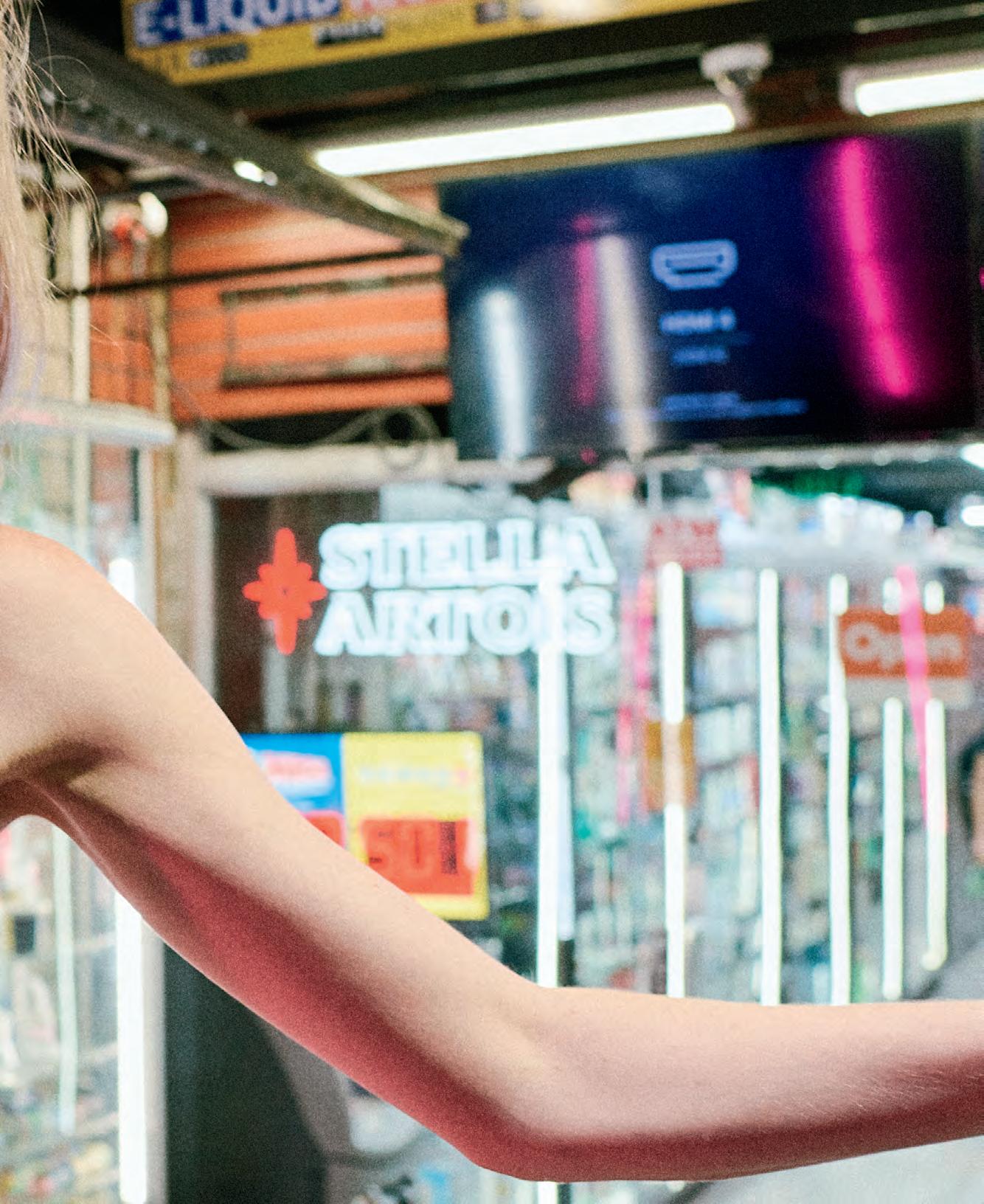
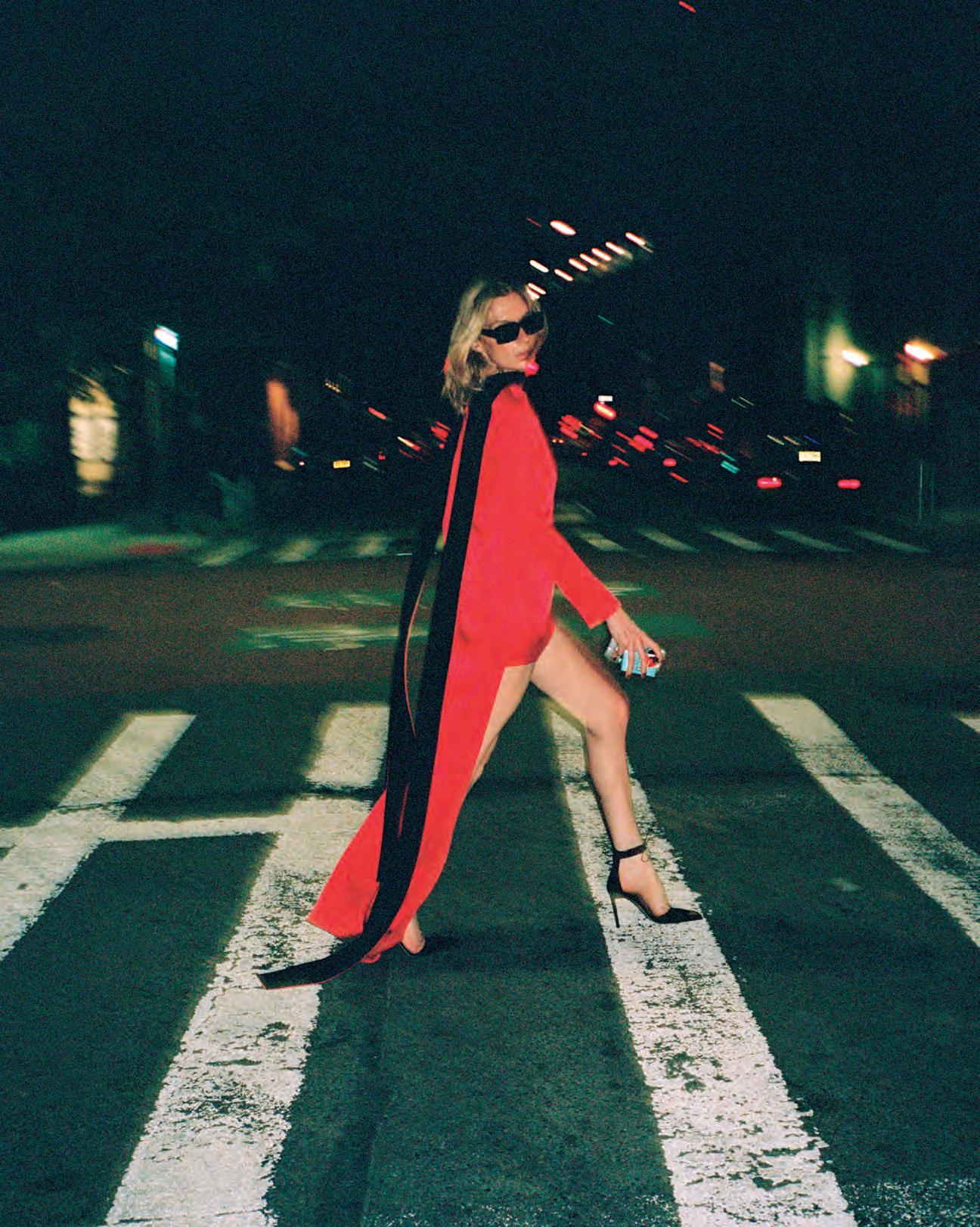
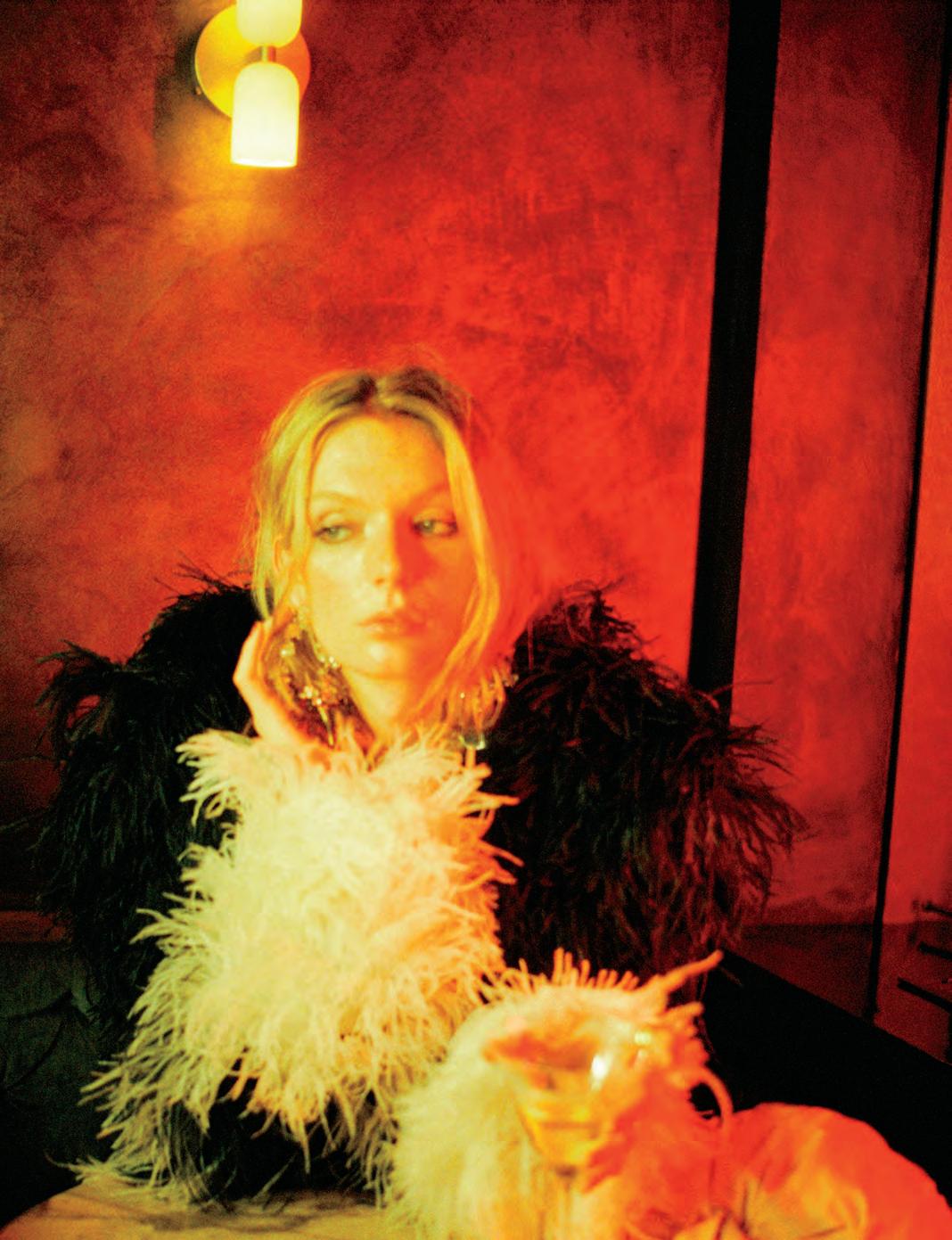
This page: Dsquared2 jacket, earrings, dsquared2.com, Jennifer Fisher rings, jenniferfisher.com. Opposite page: Tom Ford dress, sunglasses, shoes, tomford.com.
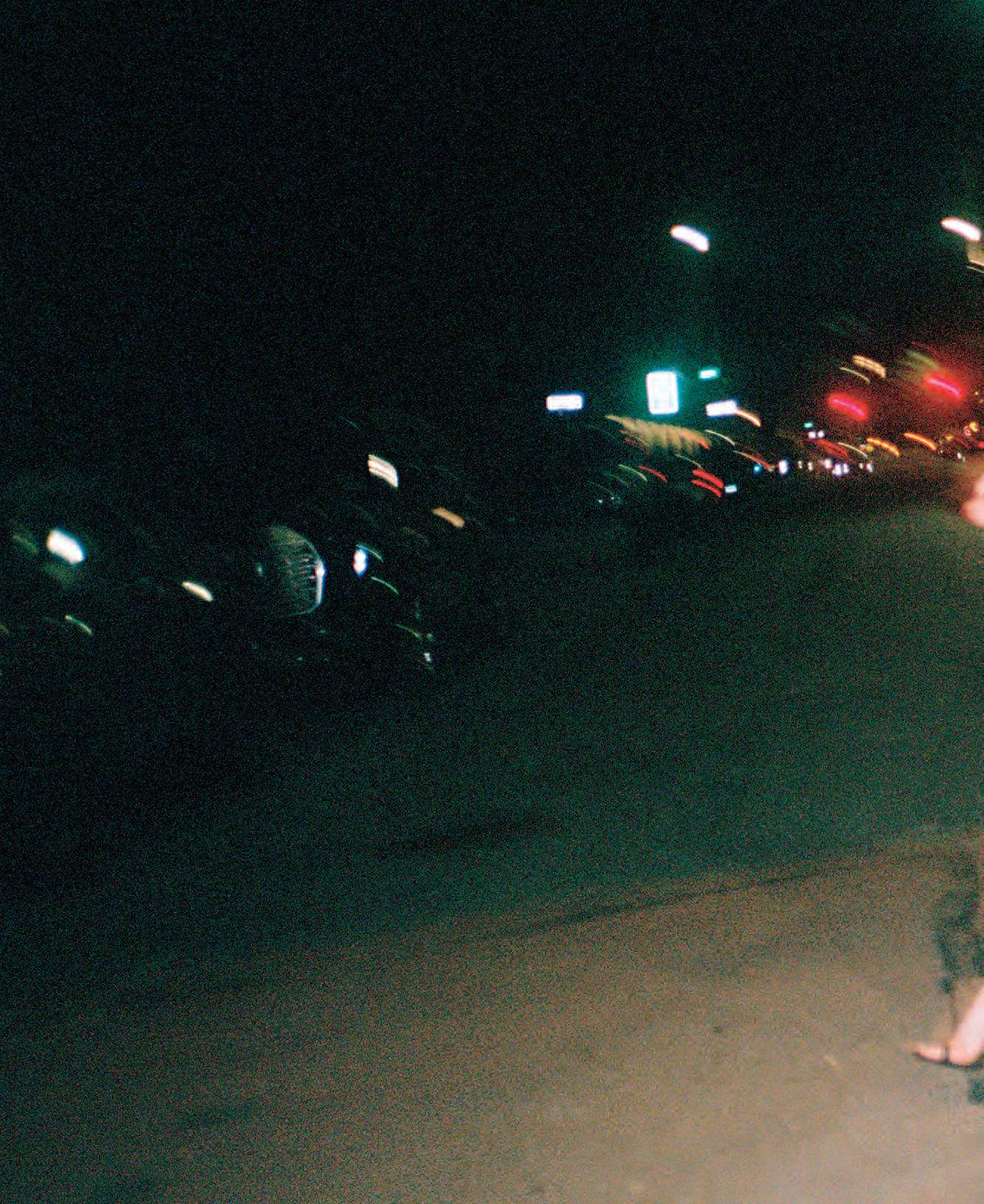
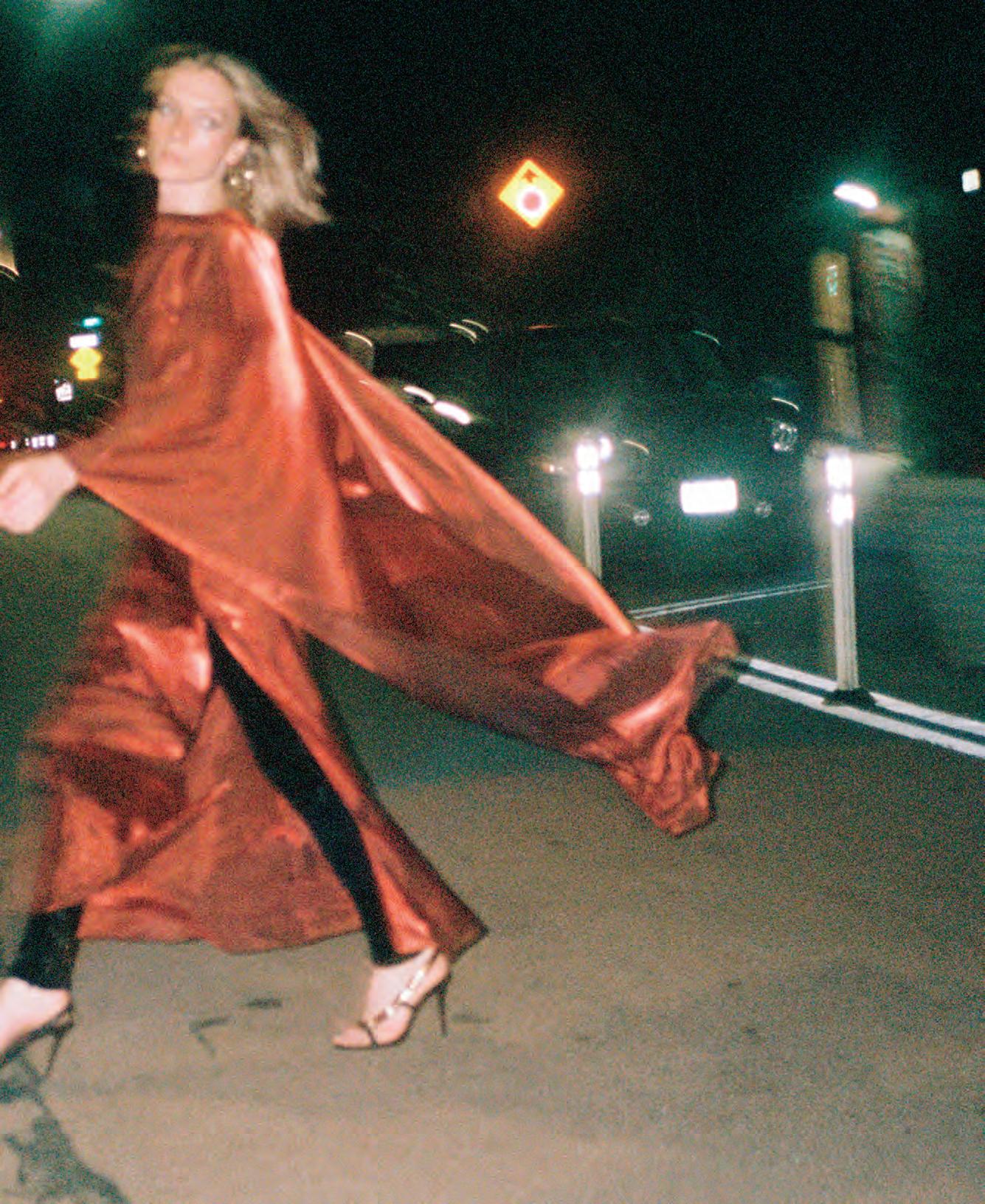
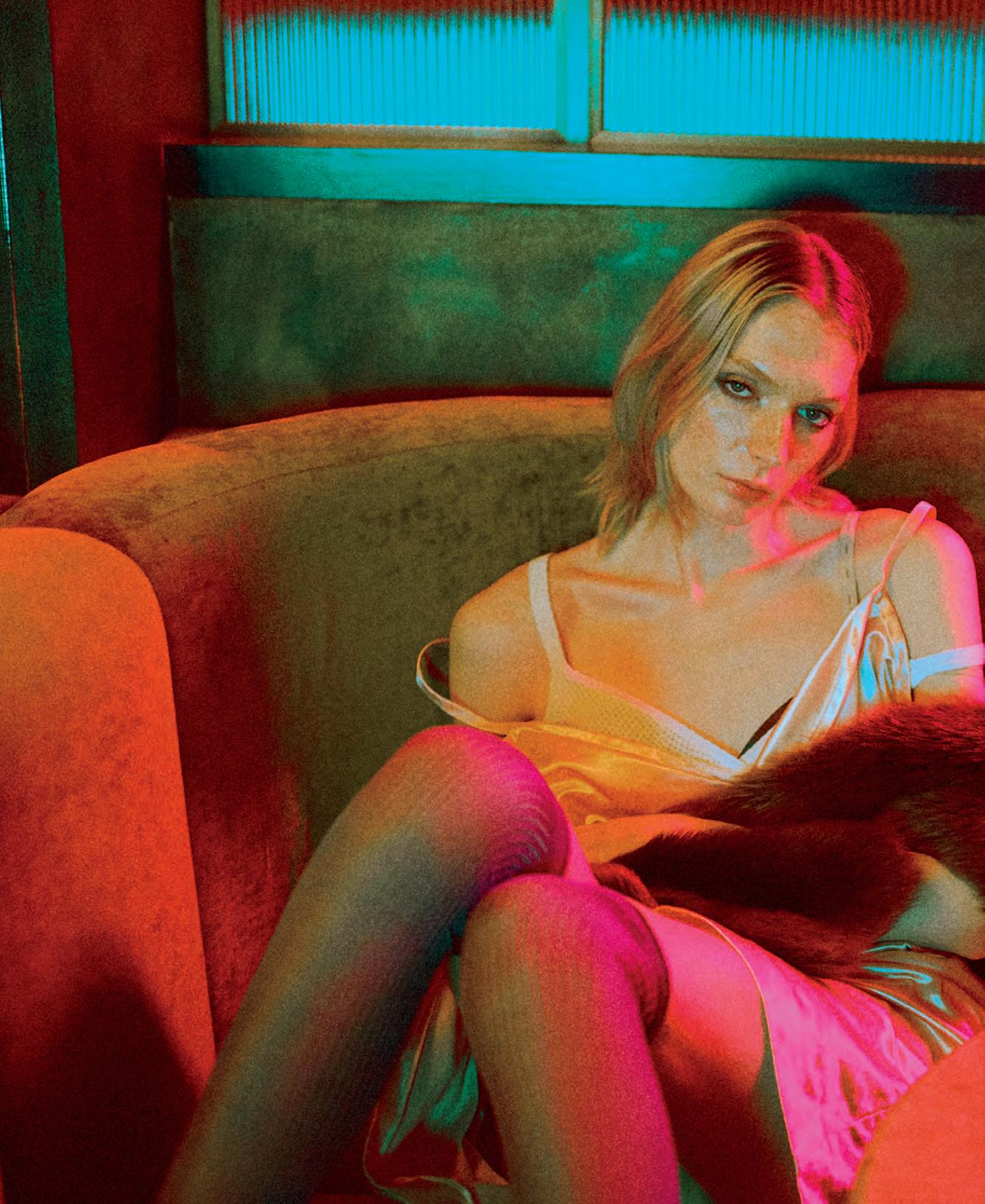
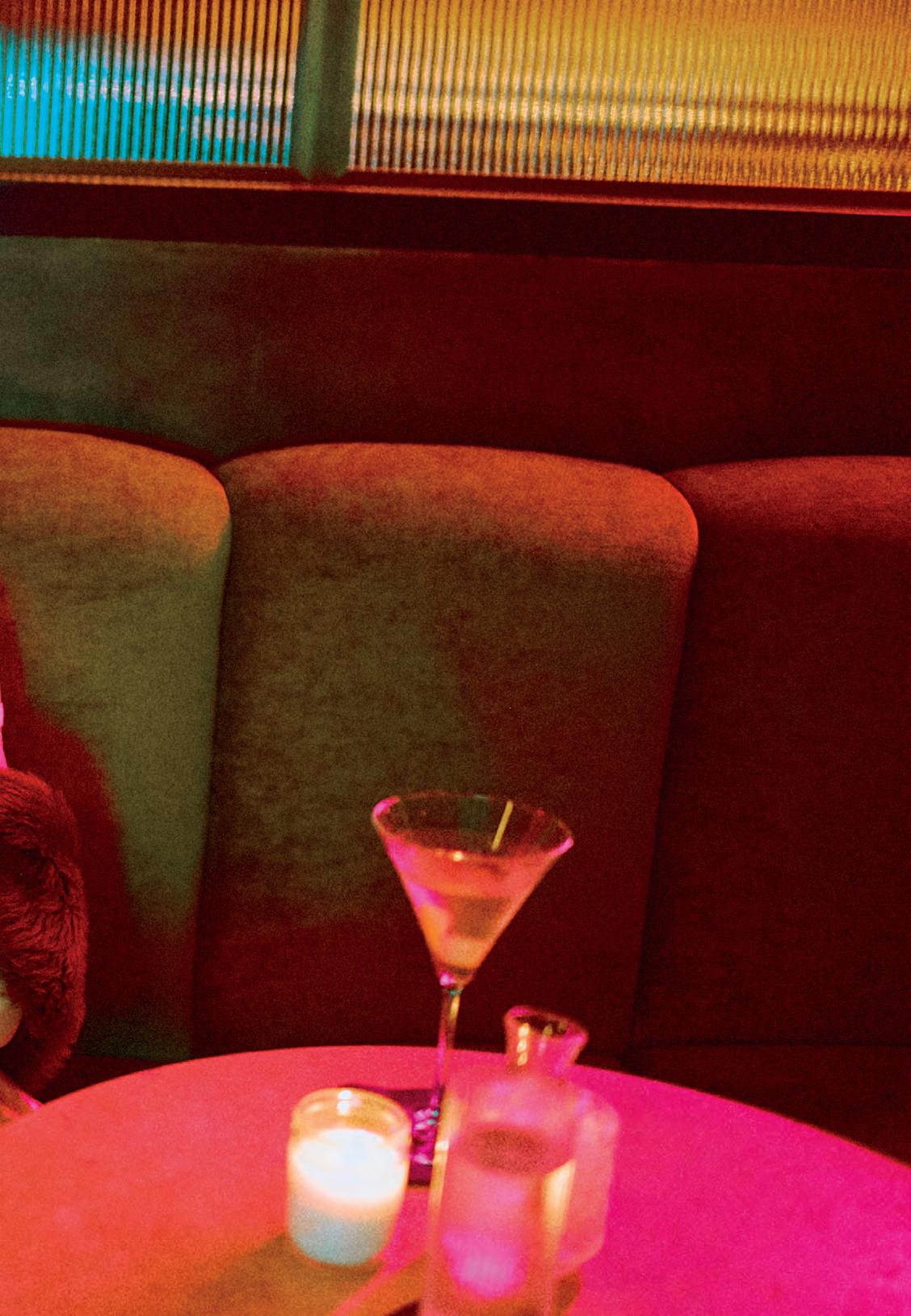
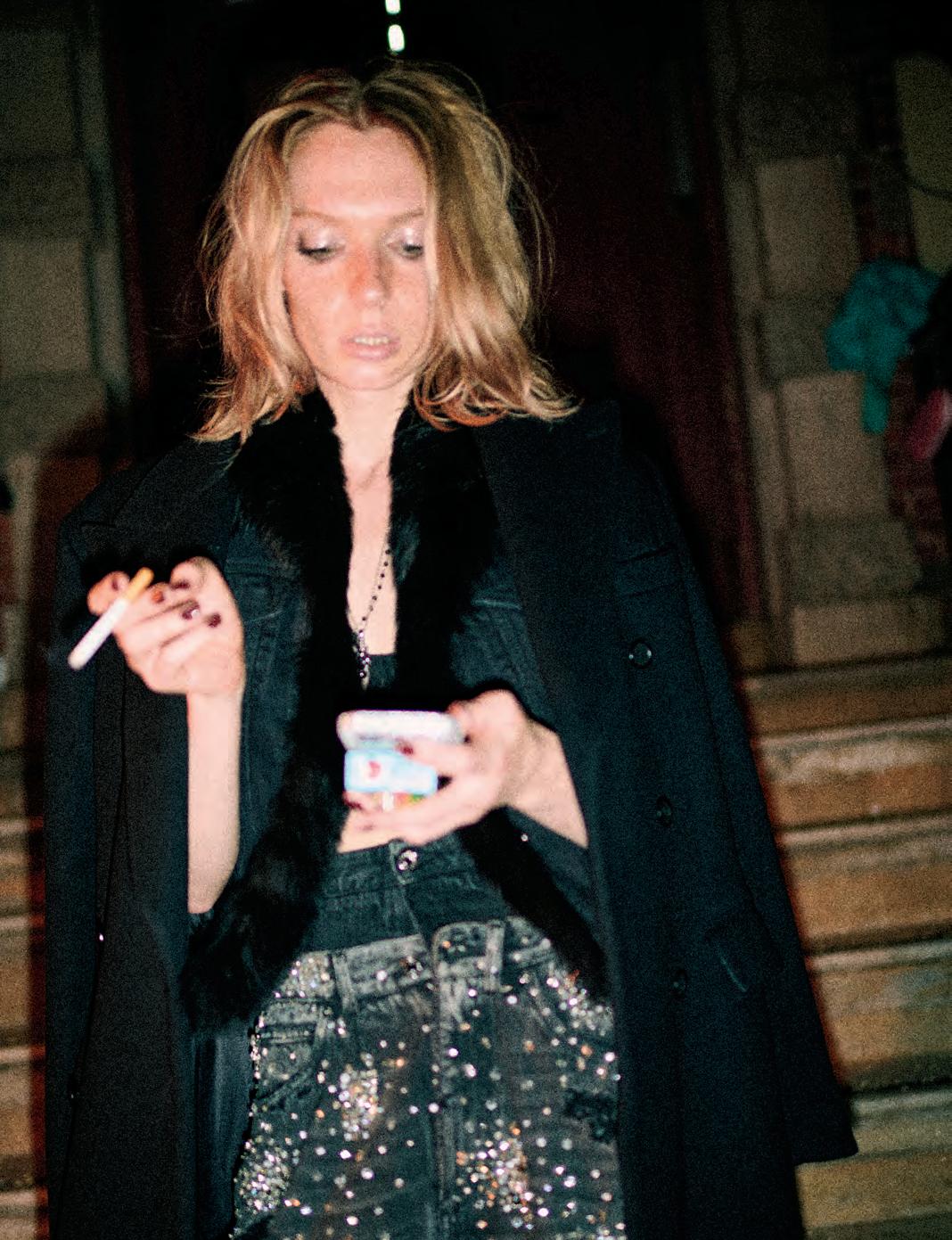
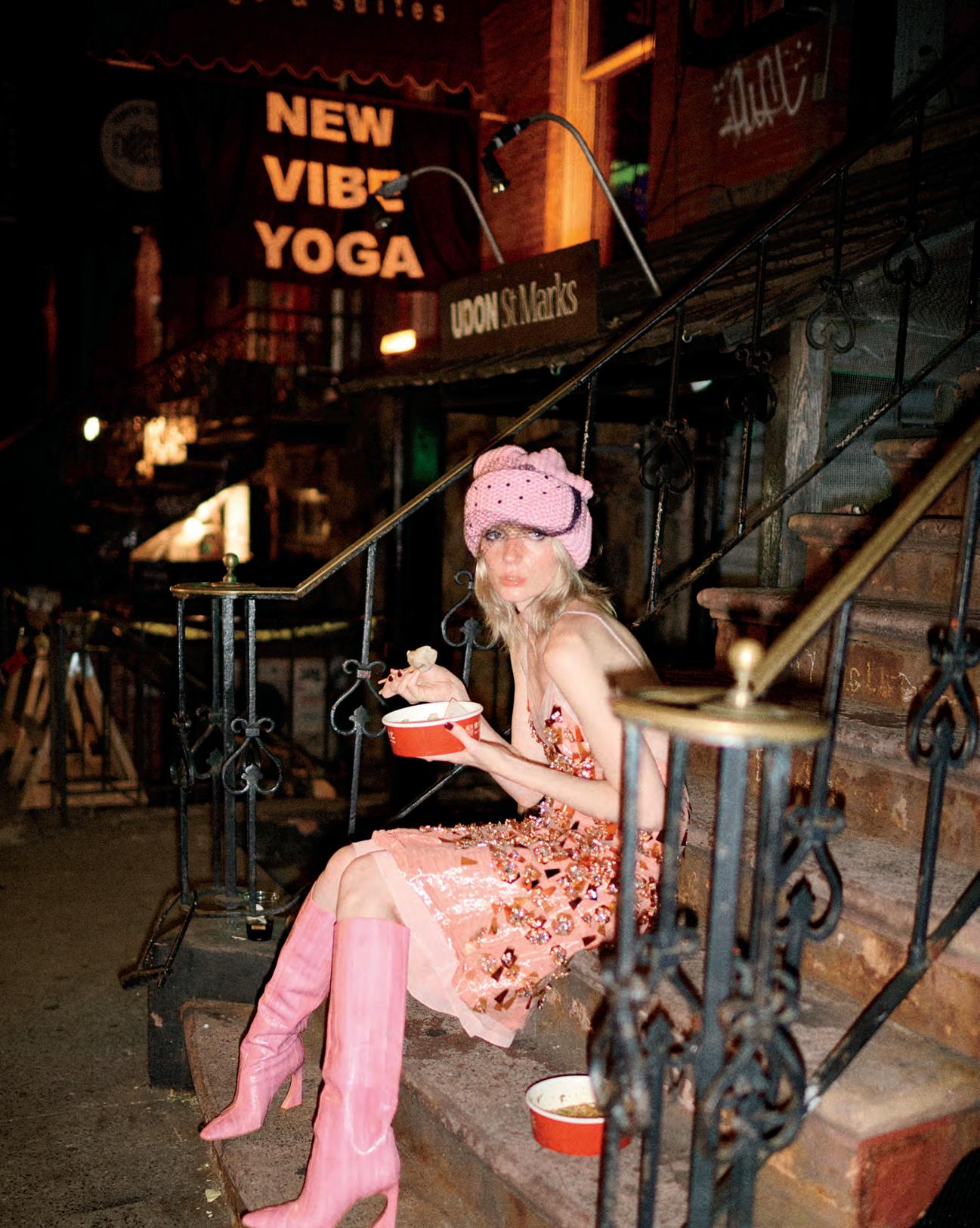
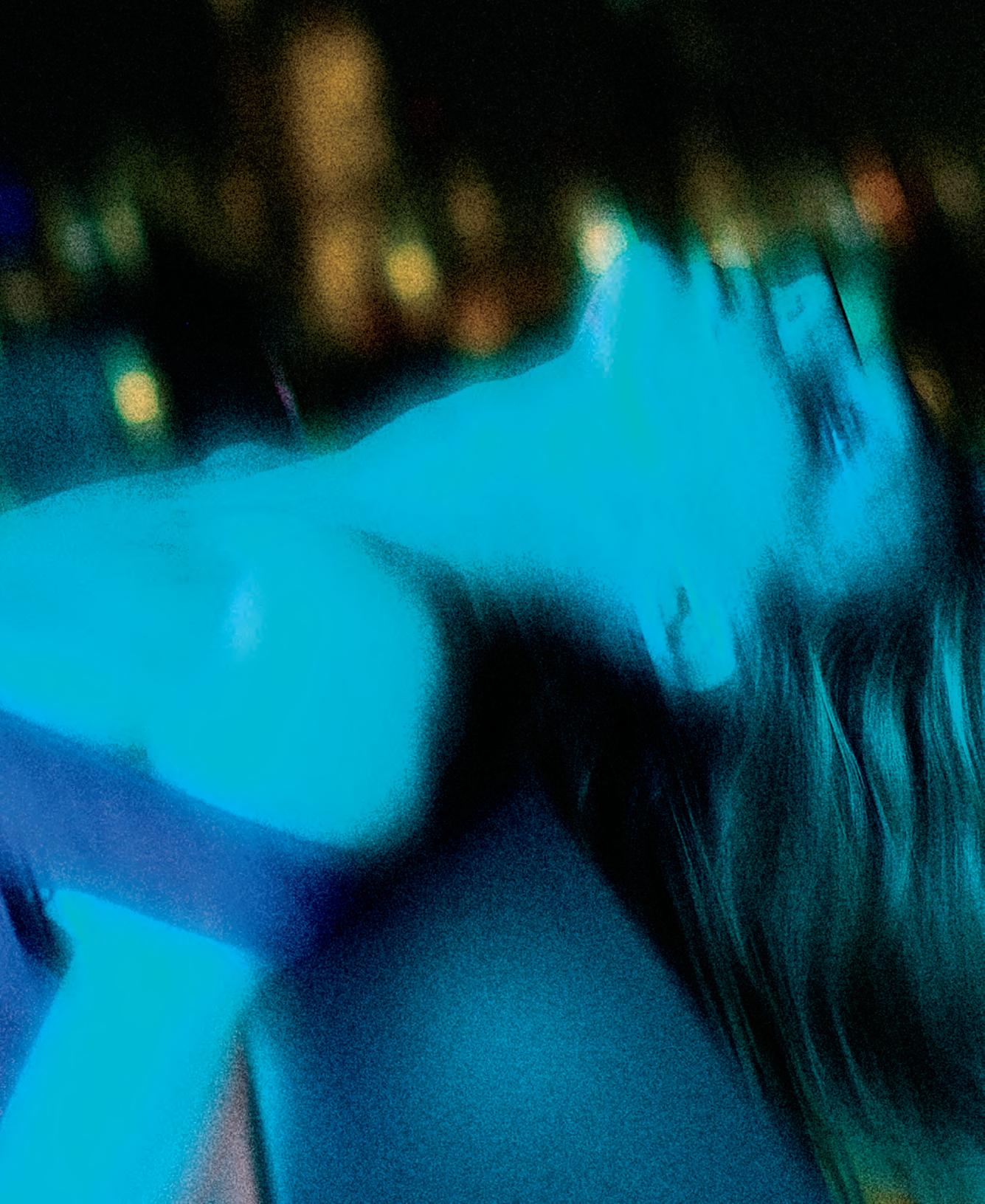
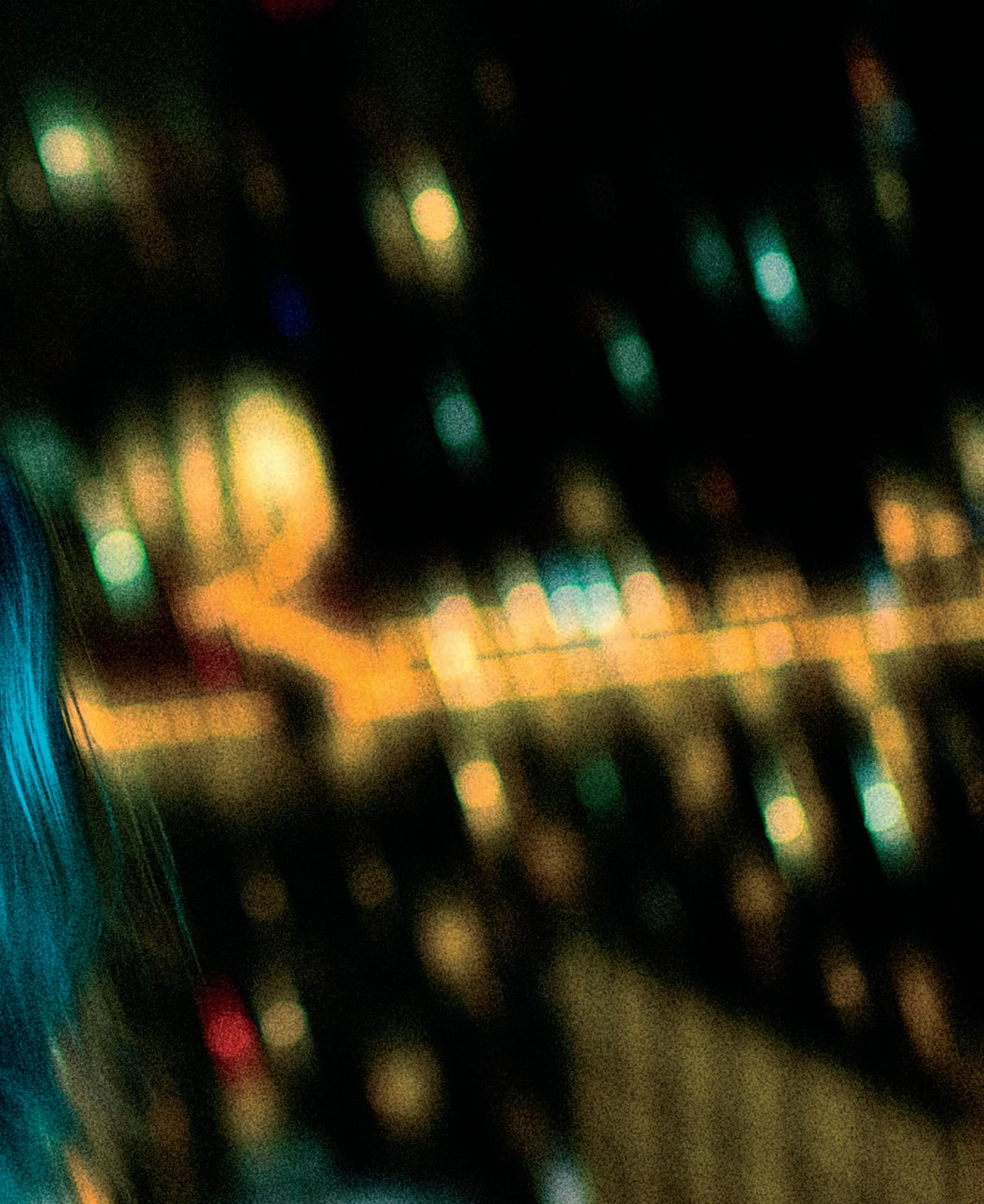
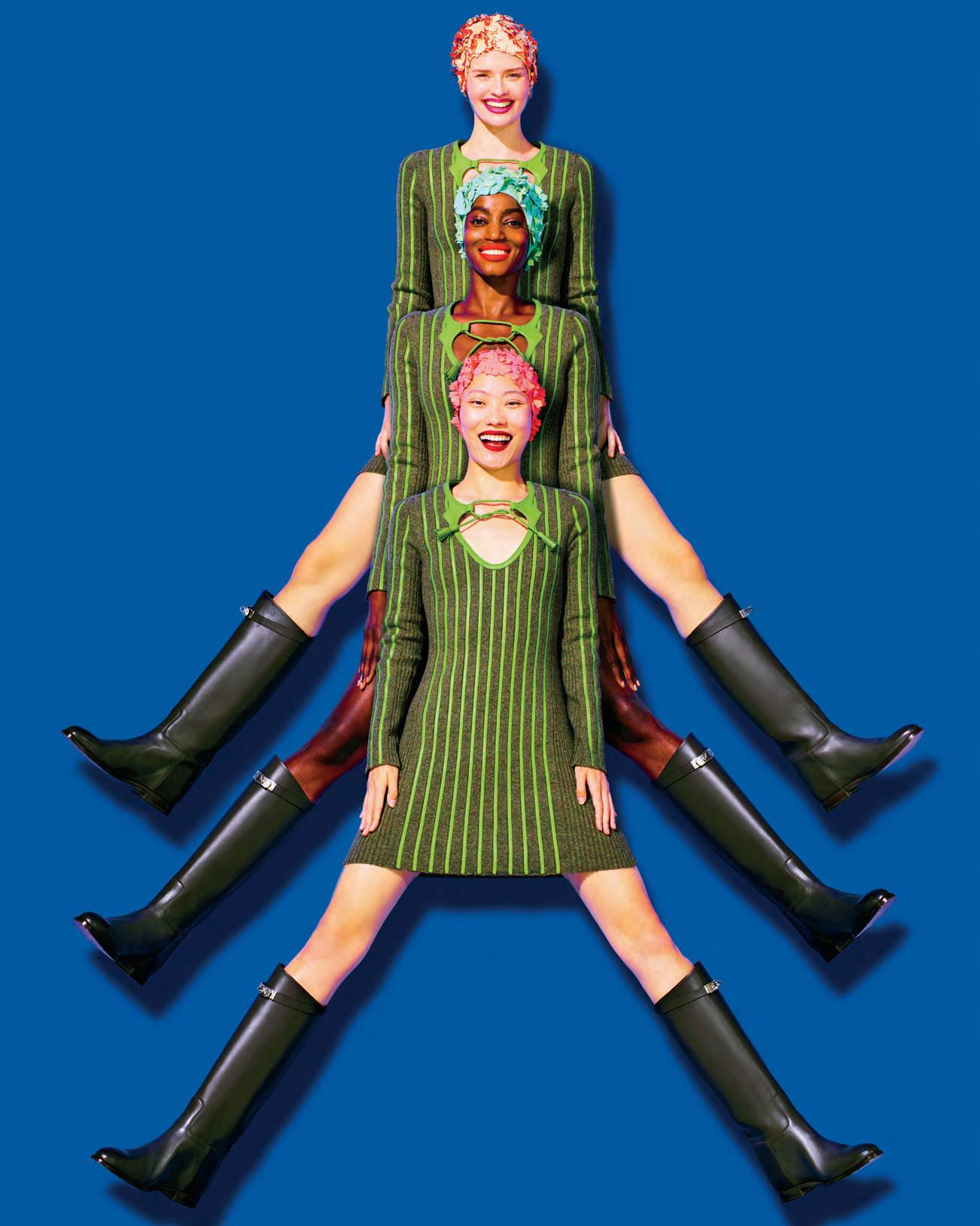
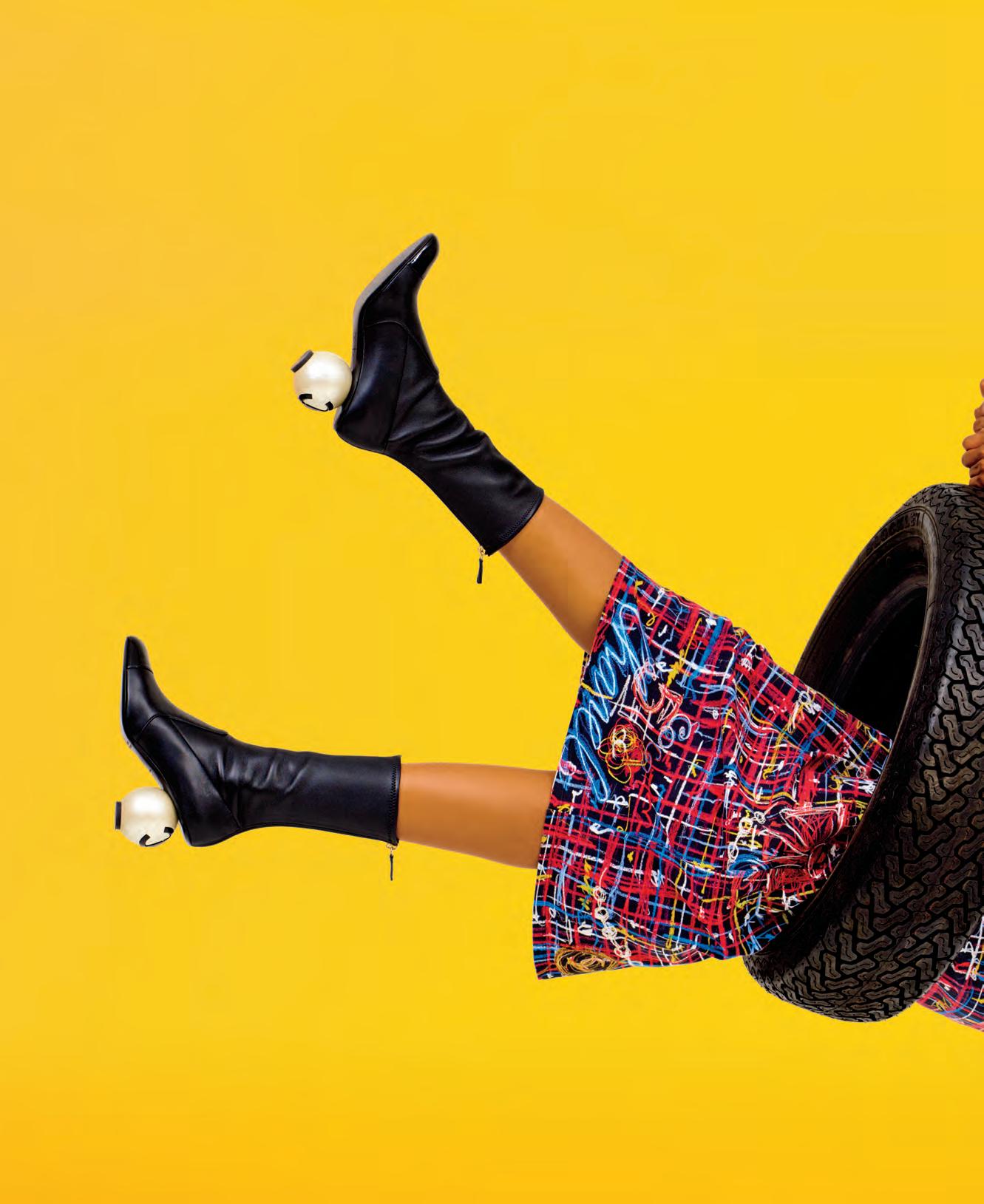
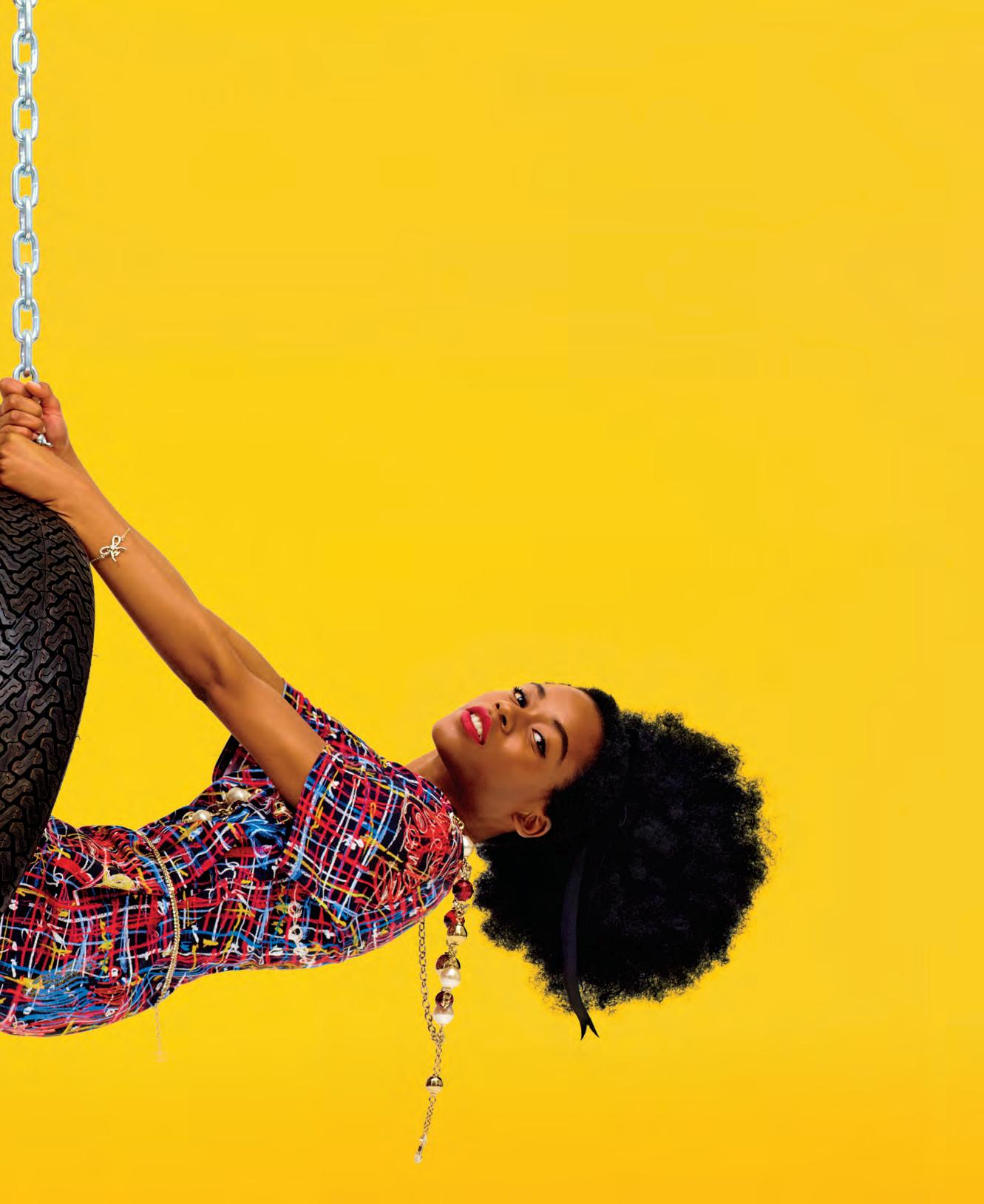
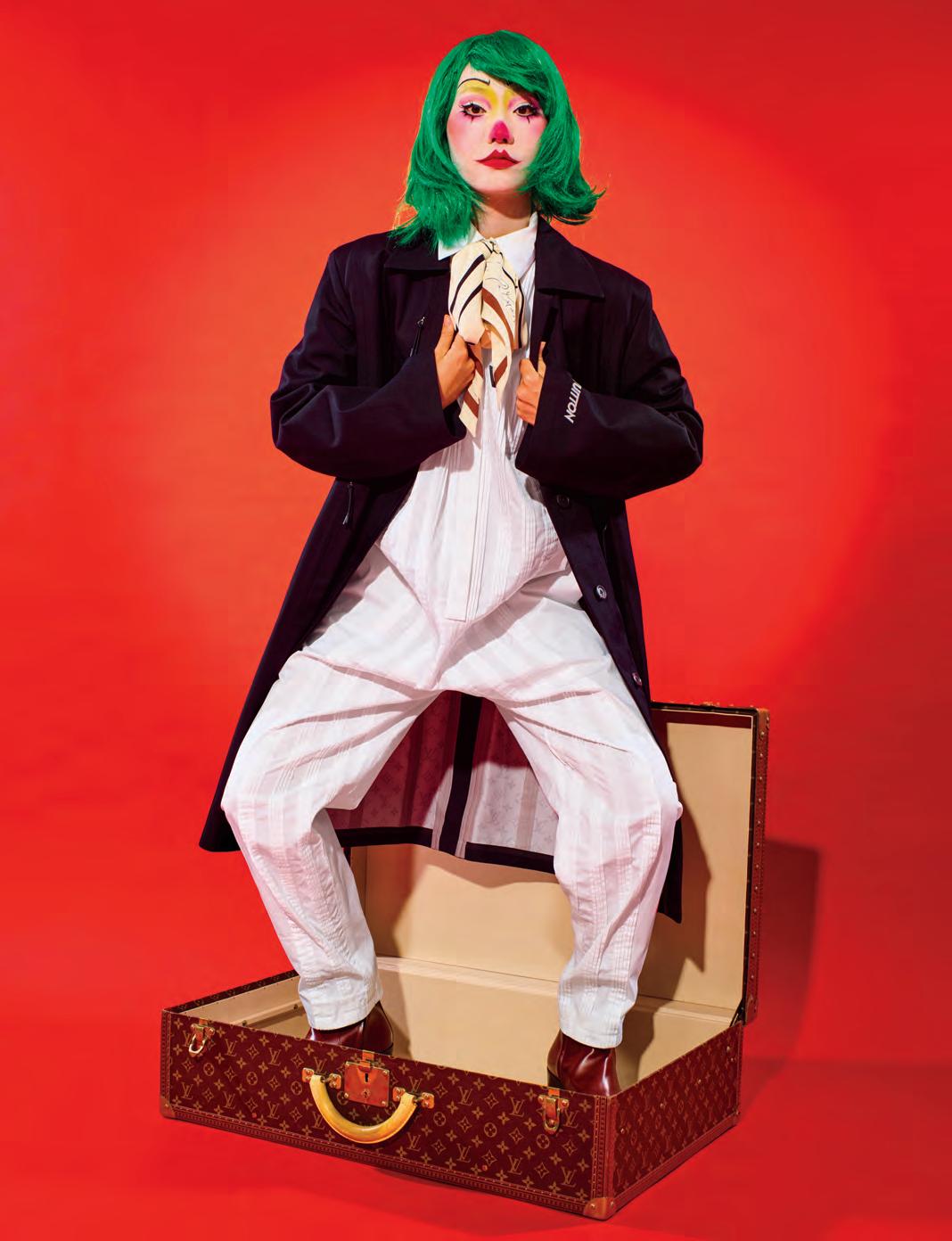
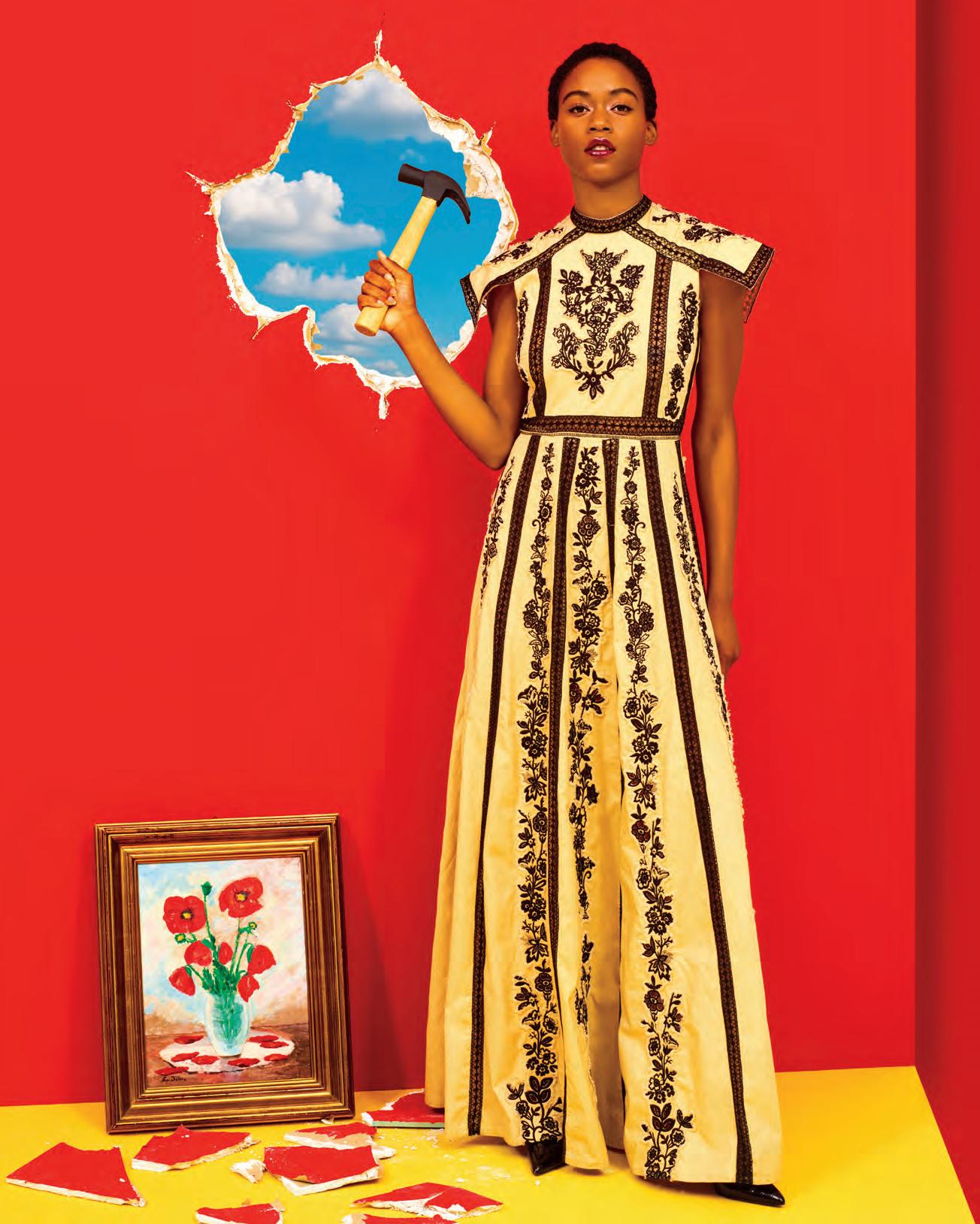
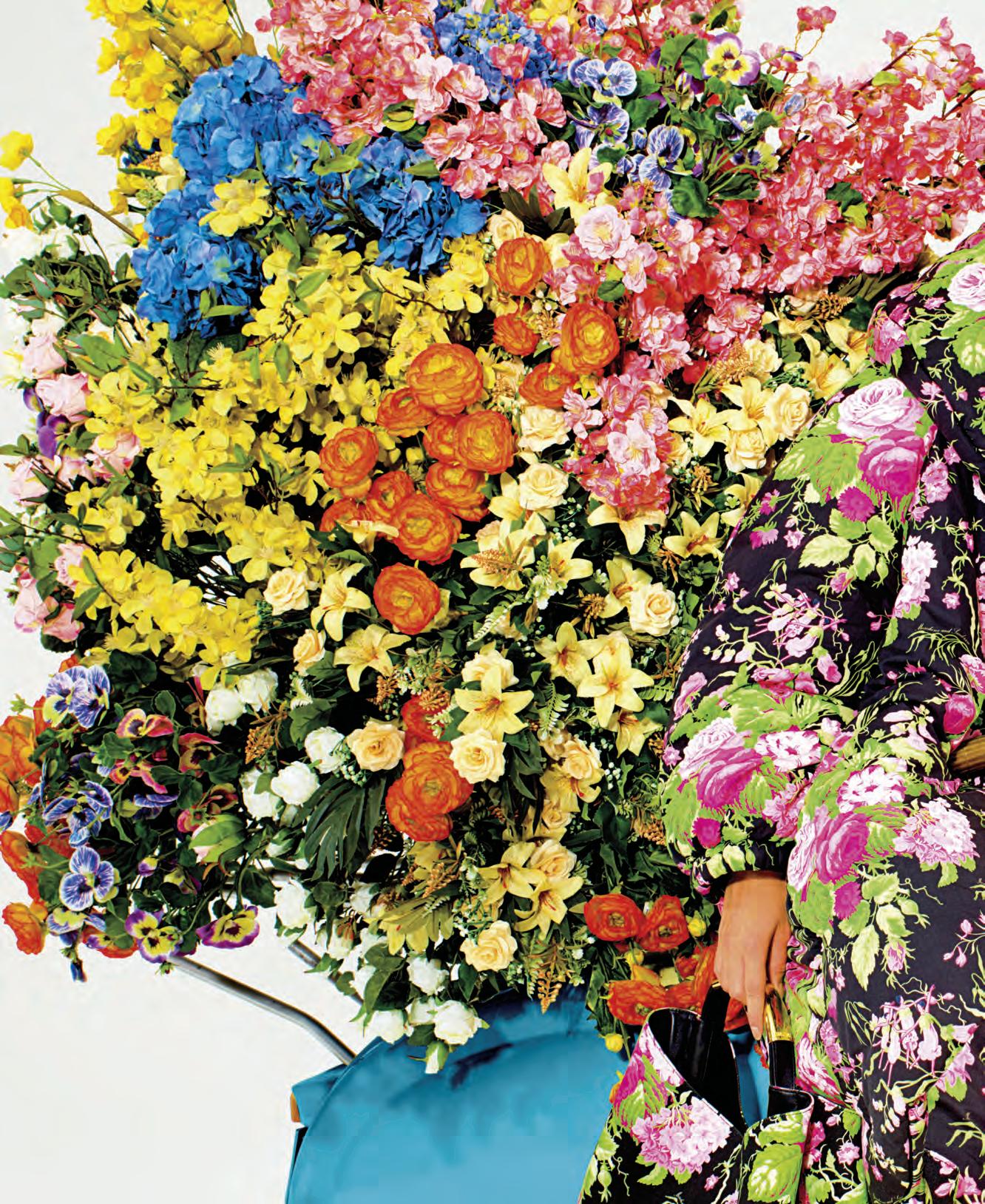
Moschino hat, coat, bag, moschino.com.
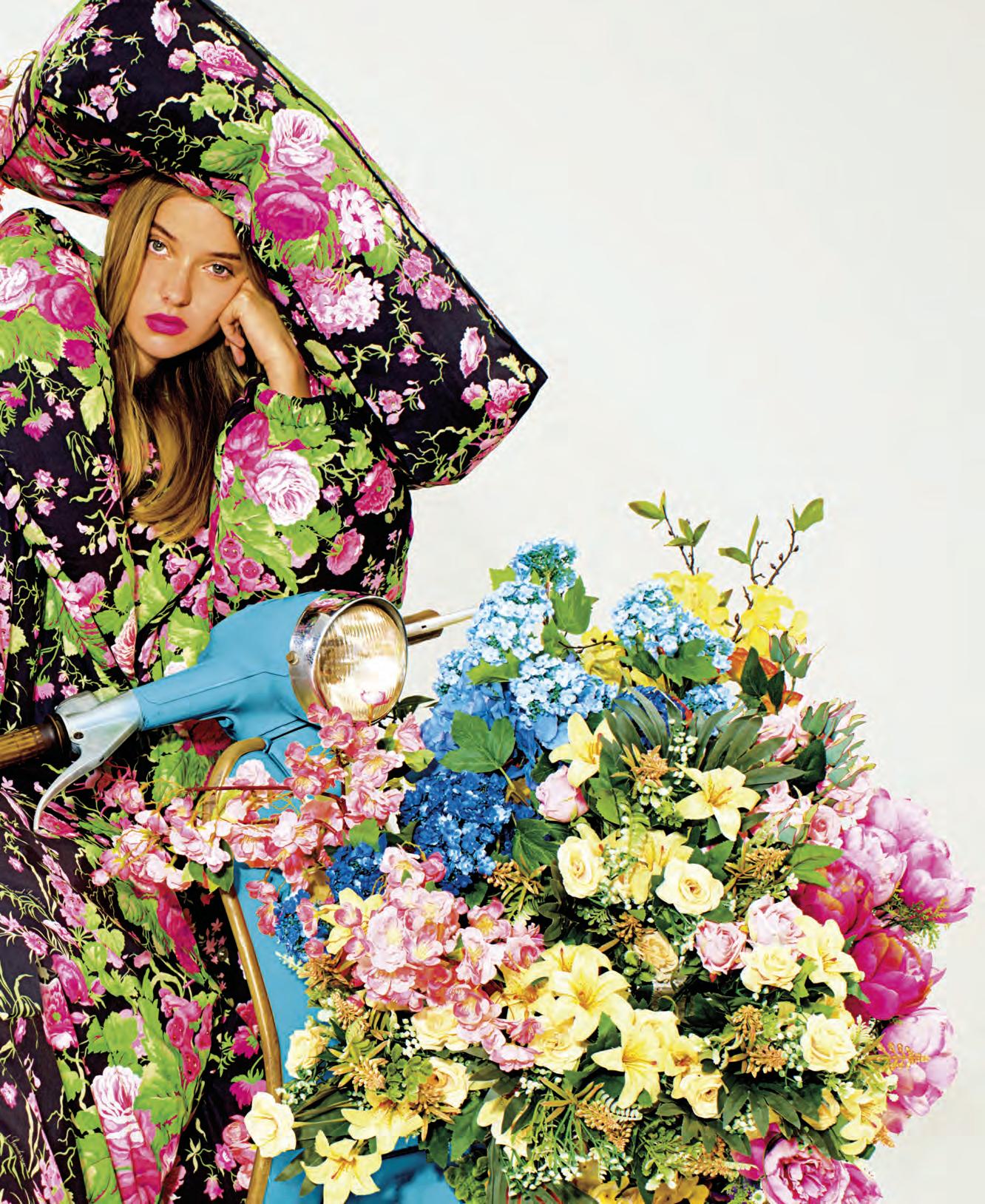
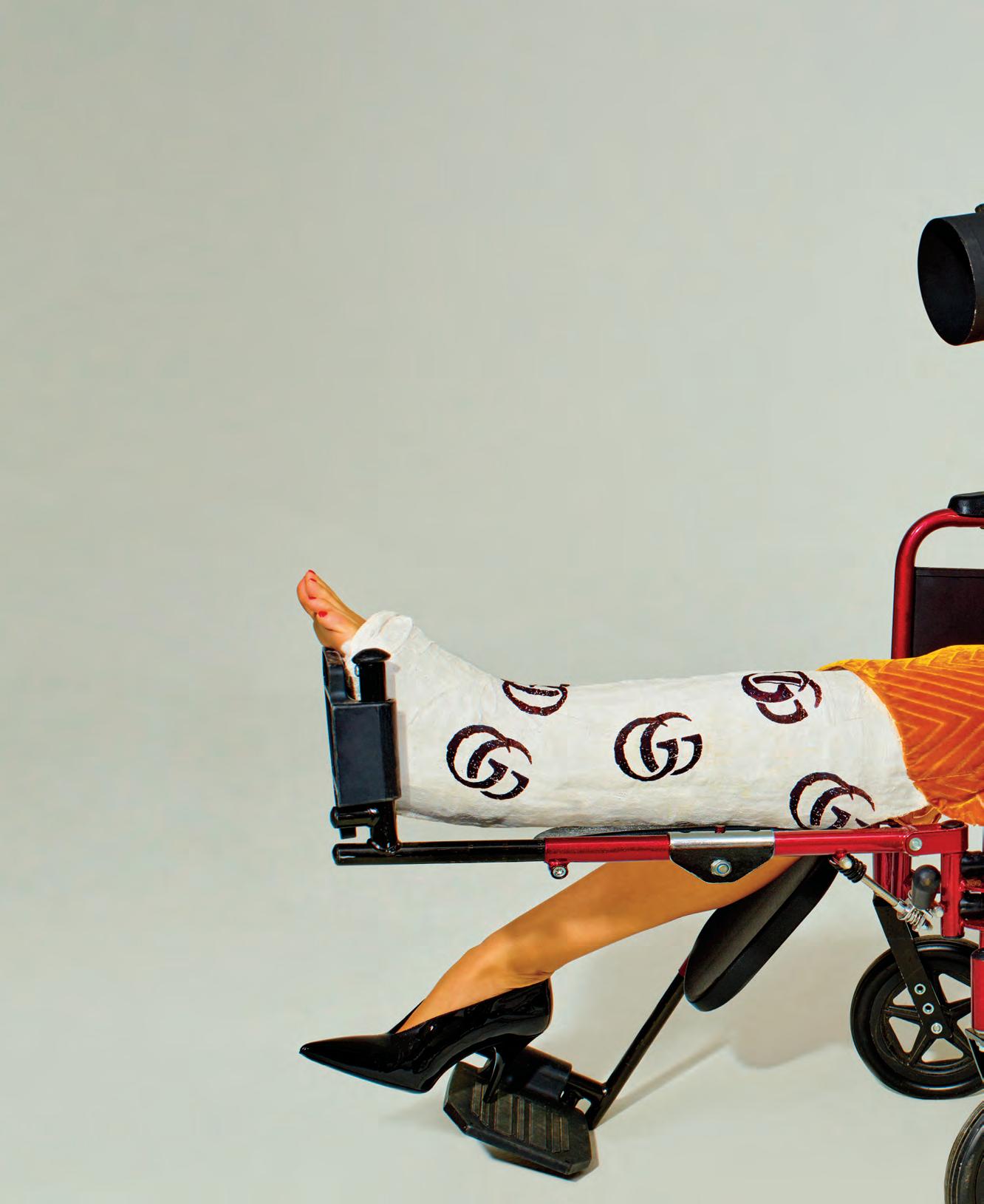
Gucci dress, shoes, gucci.com.
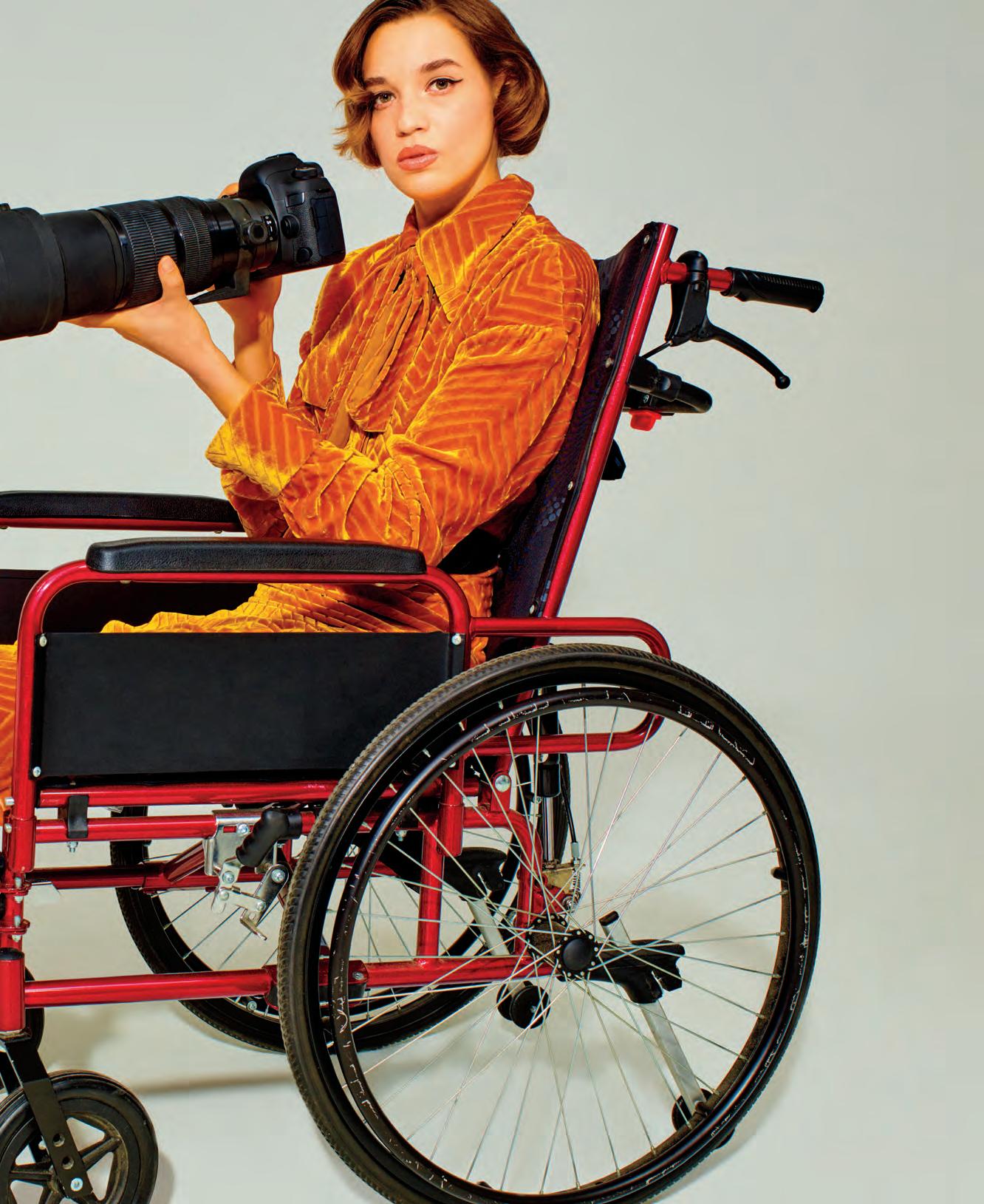
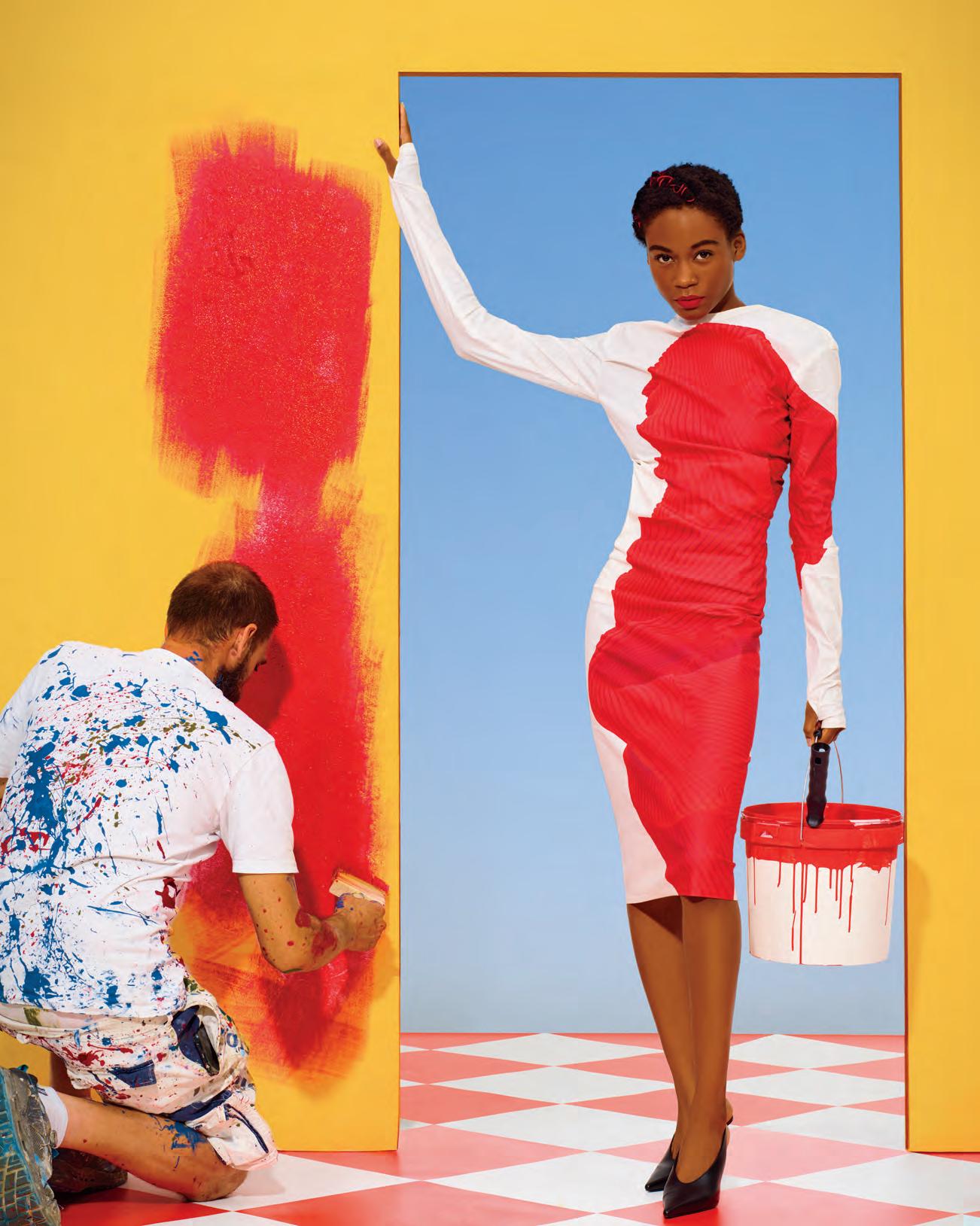

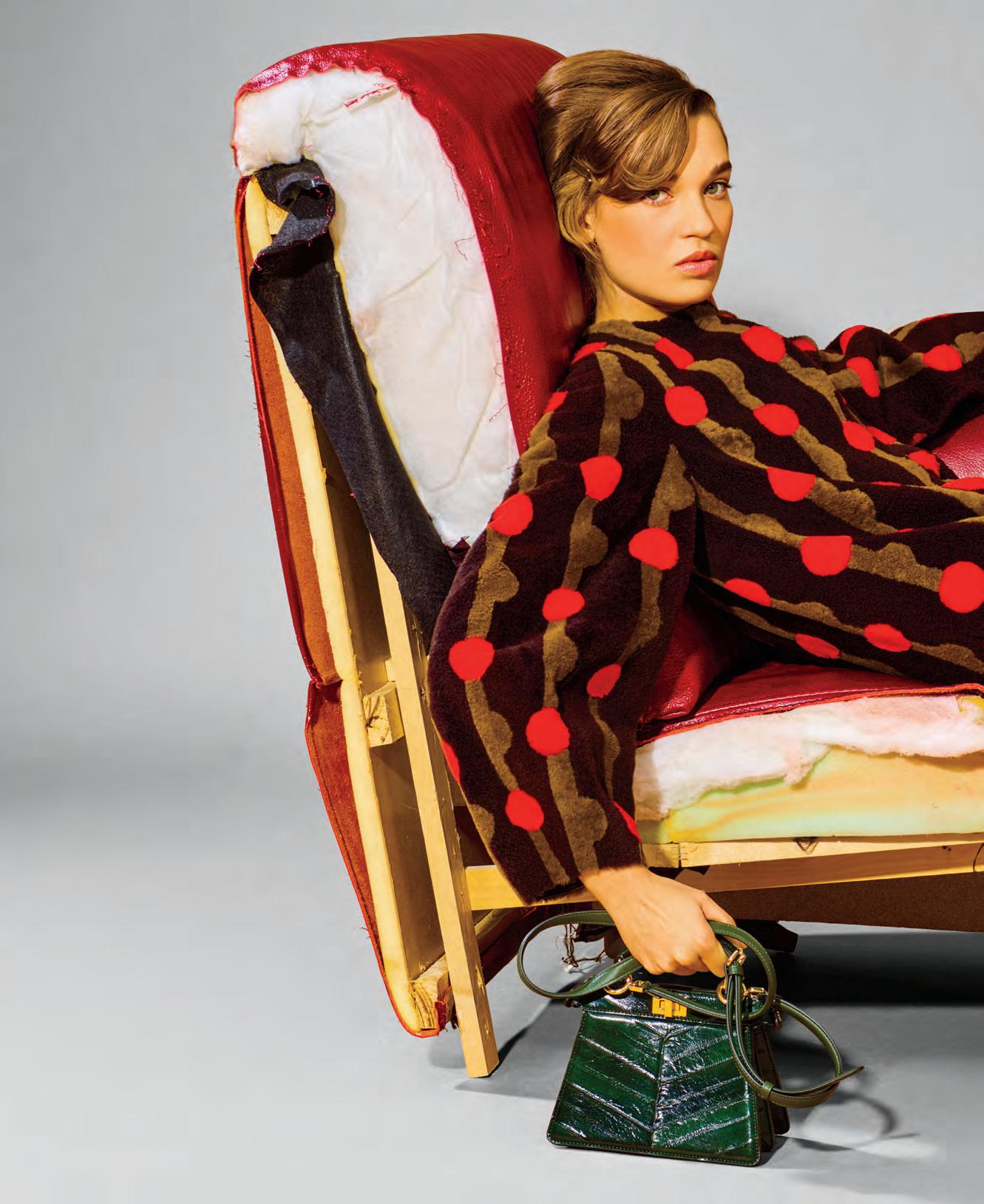
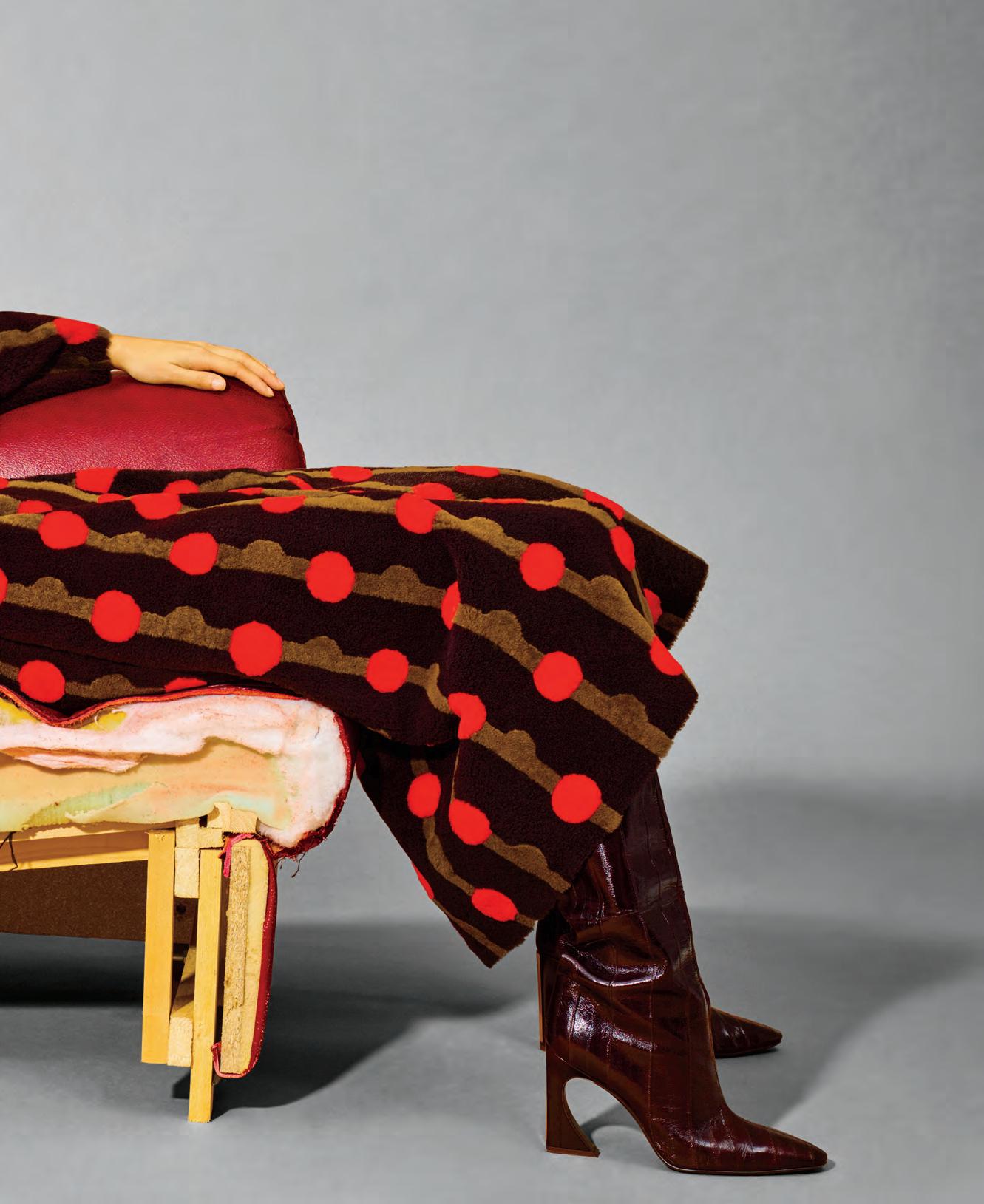
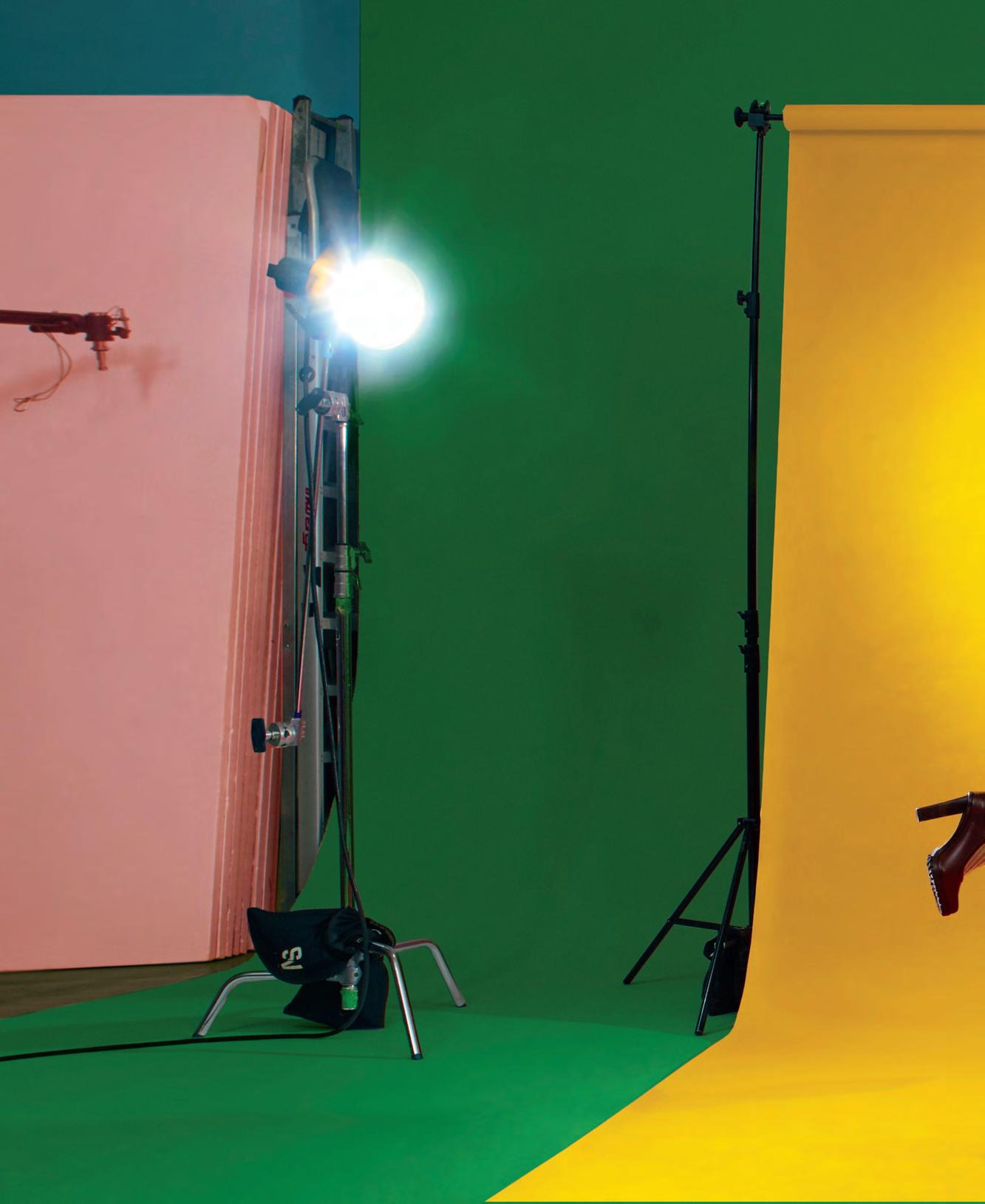
us.maxmara.com.
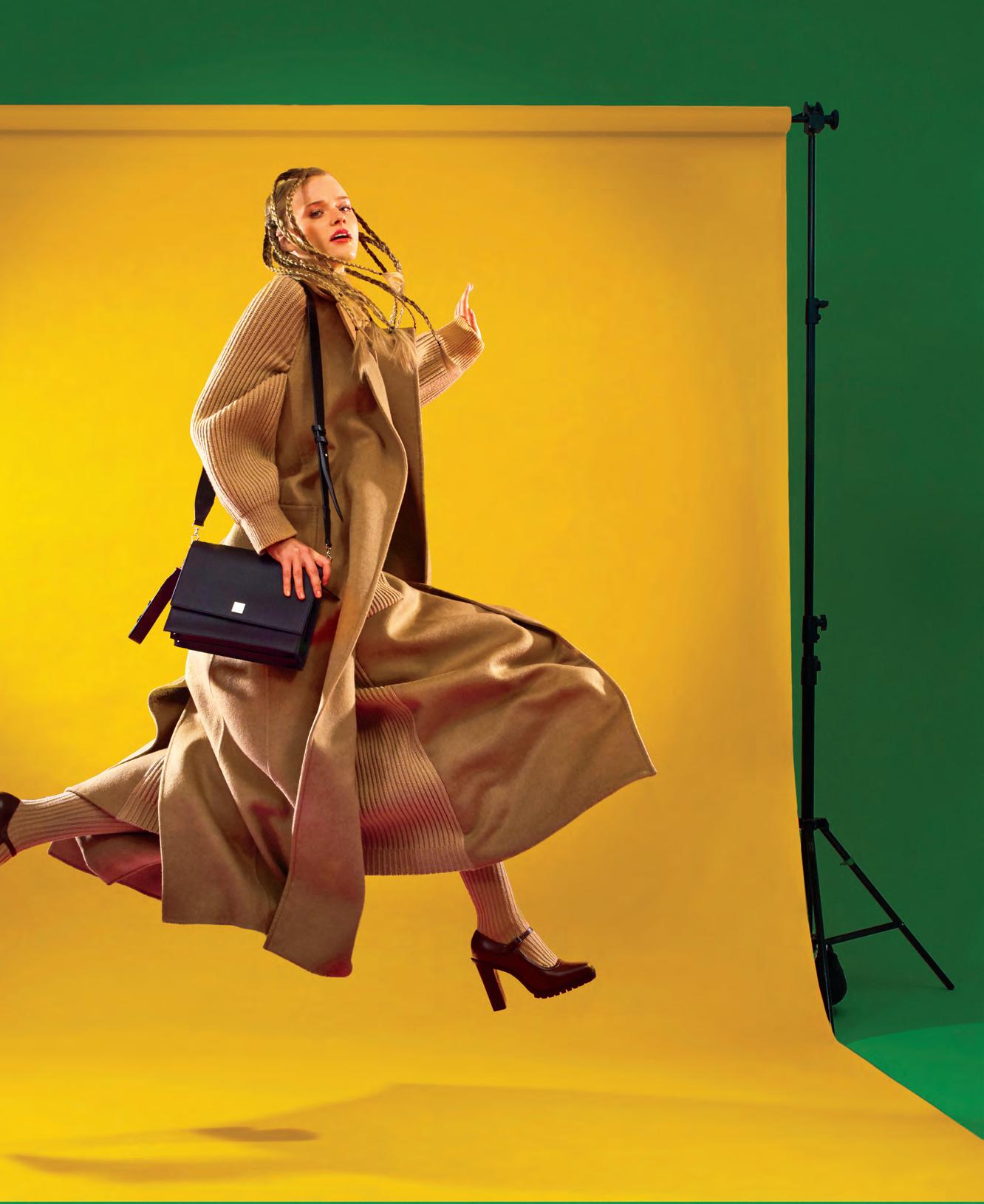
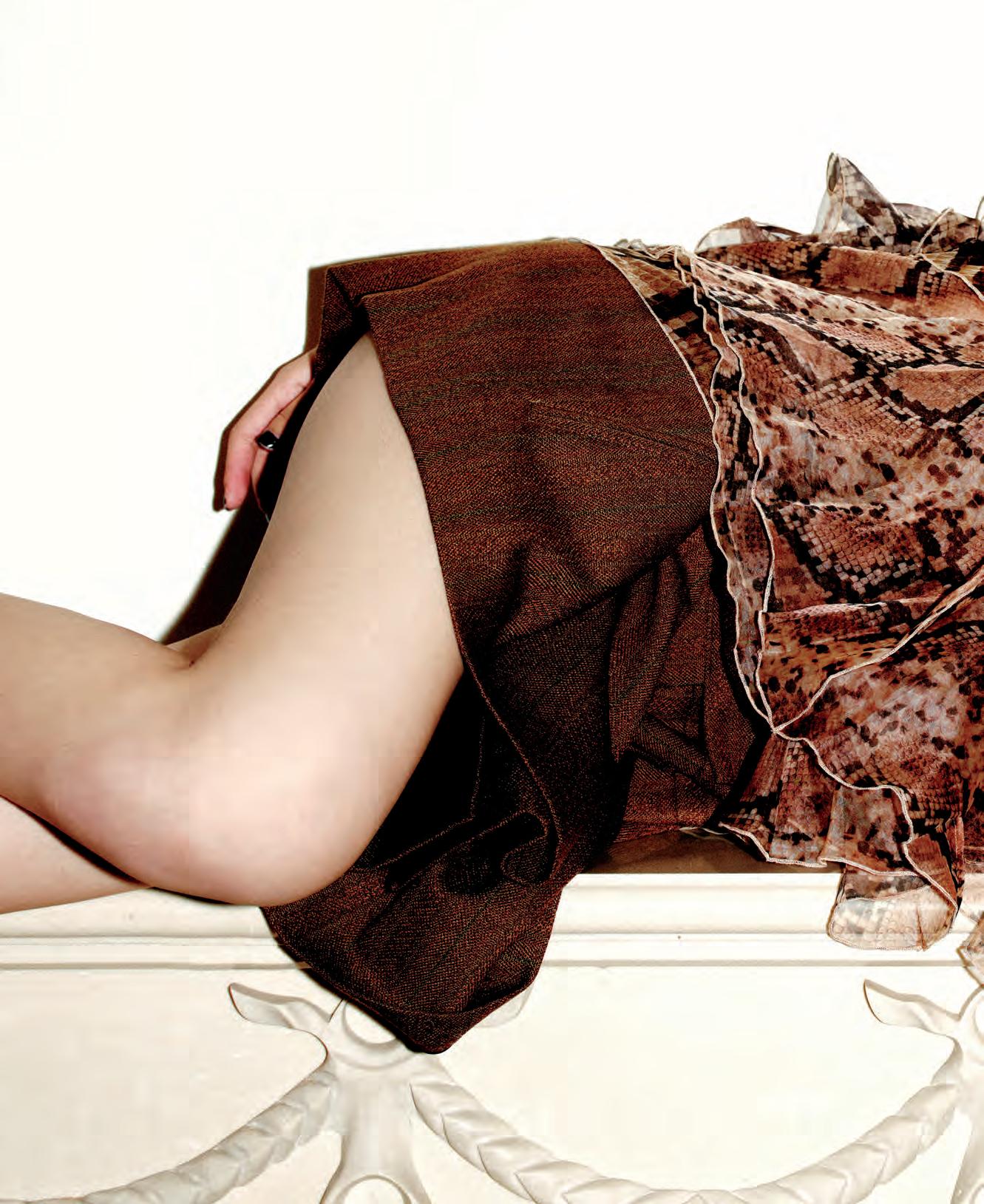
Zimmermann top, zimmermann.com; Prada skirt; prada.com; Marine Serre earrings, marineserre.com; Daartemis ring, daartemisjewelry.com.
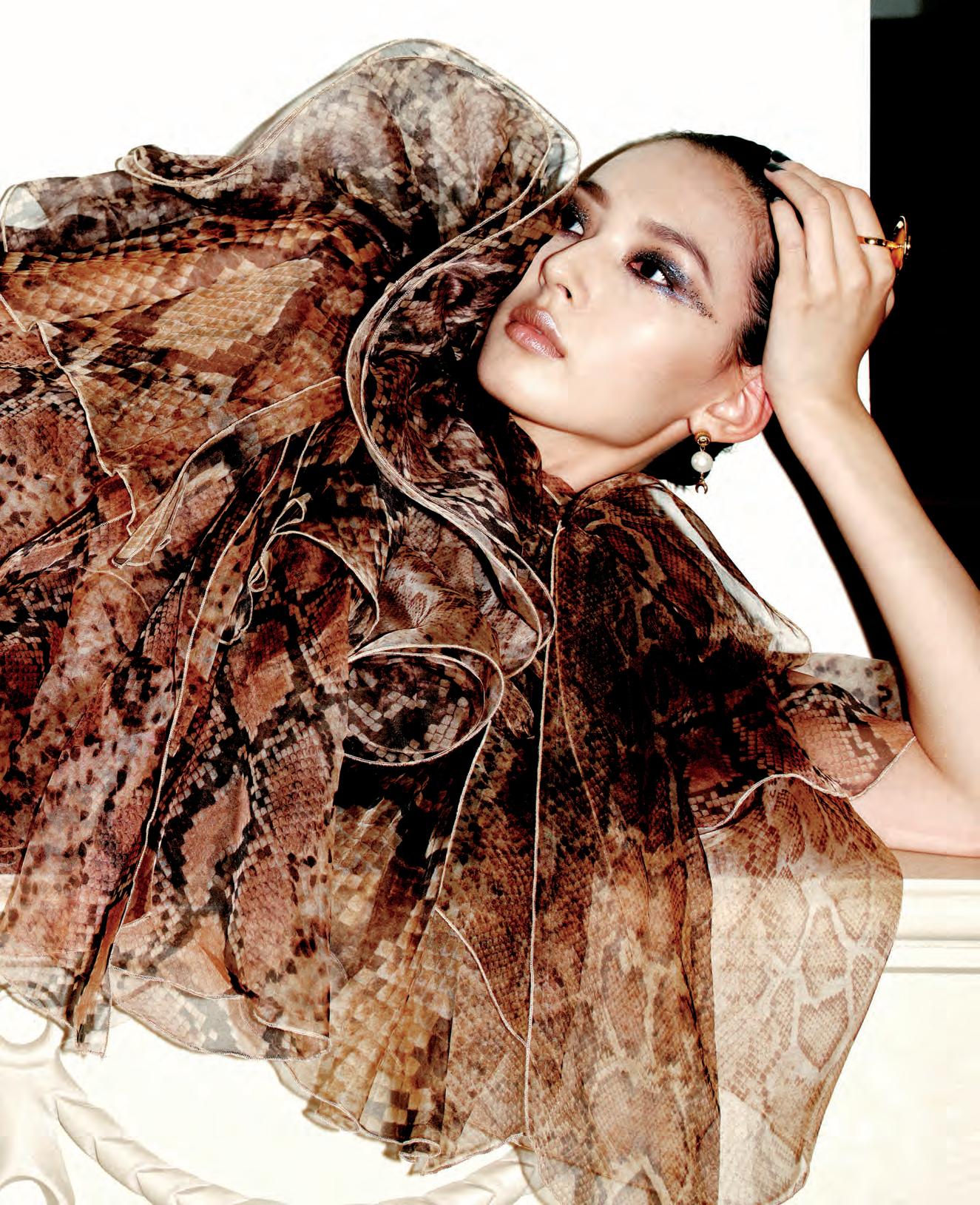
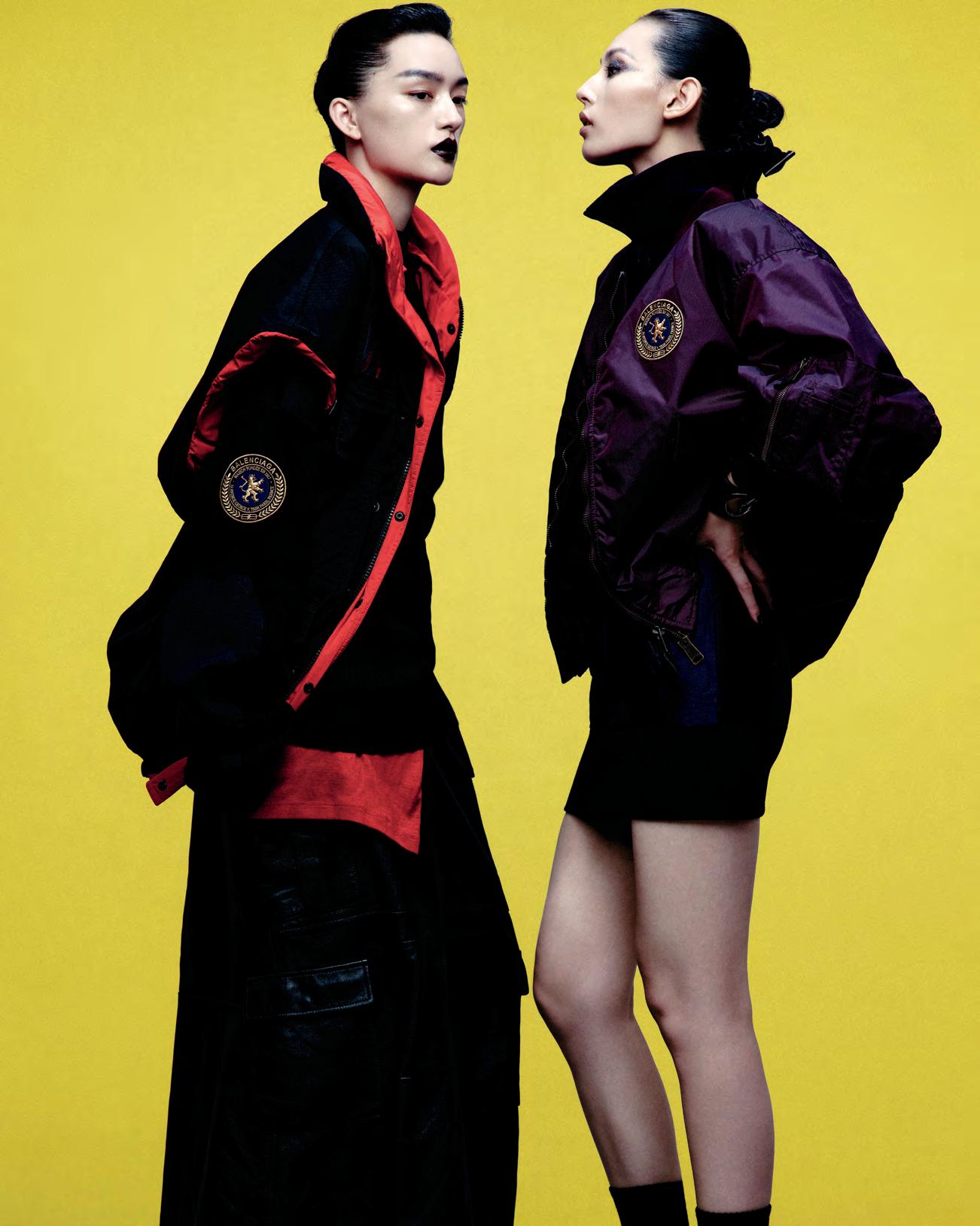
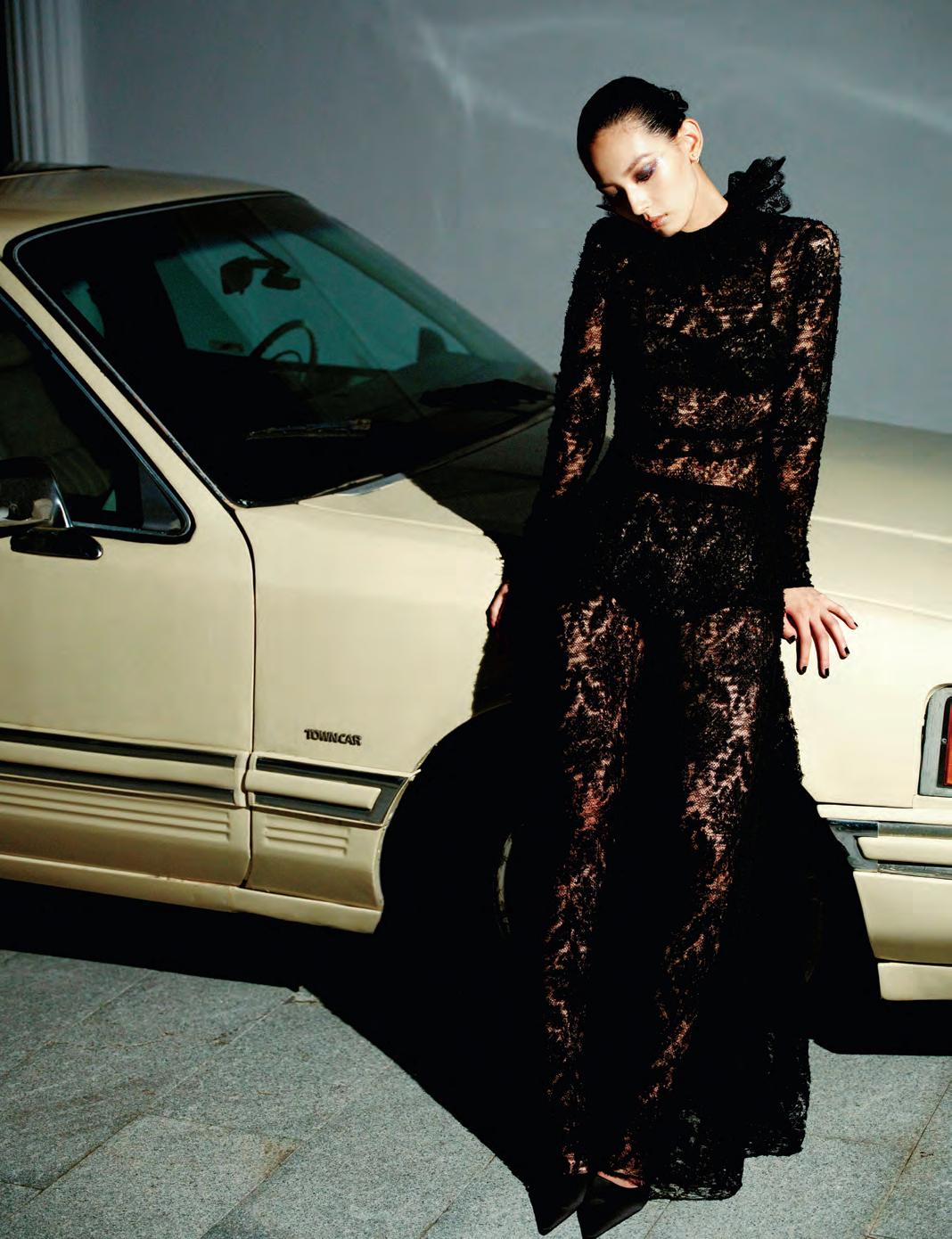
This page: Dior dress, bra, briefs, earrings, shoes, (800) 929-DIOR. Opposite page: On Left Balenciaga vest, sweater, skirt, balenciaga.com. On Right: Balenciaga windbreaker, dress, belt, balenciaga.com.
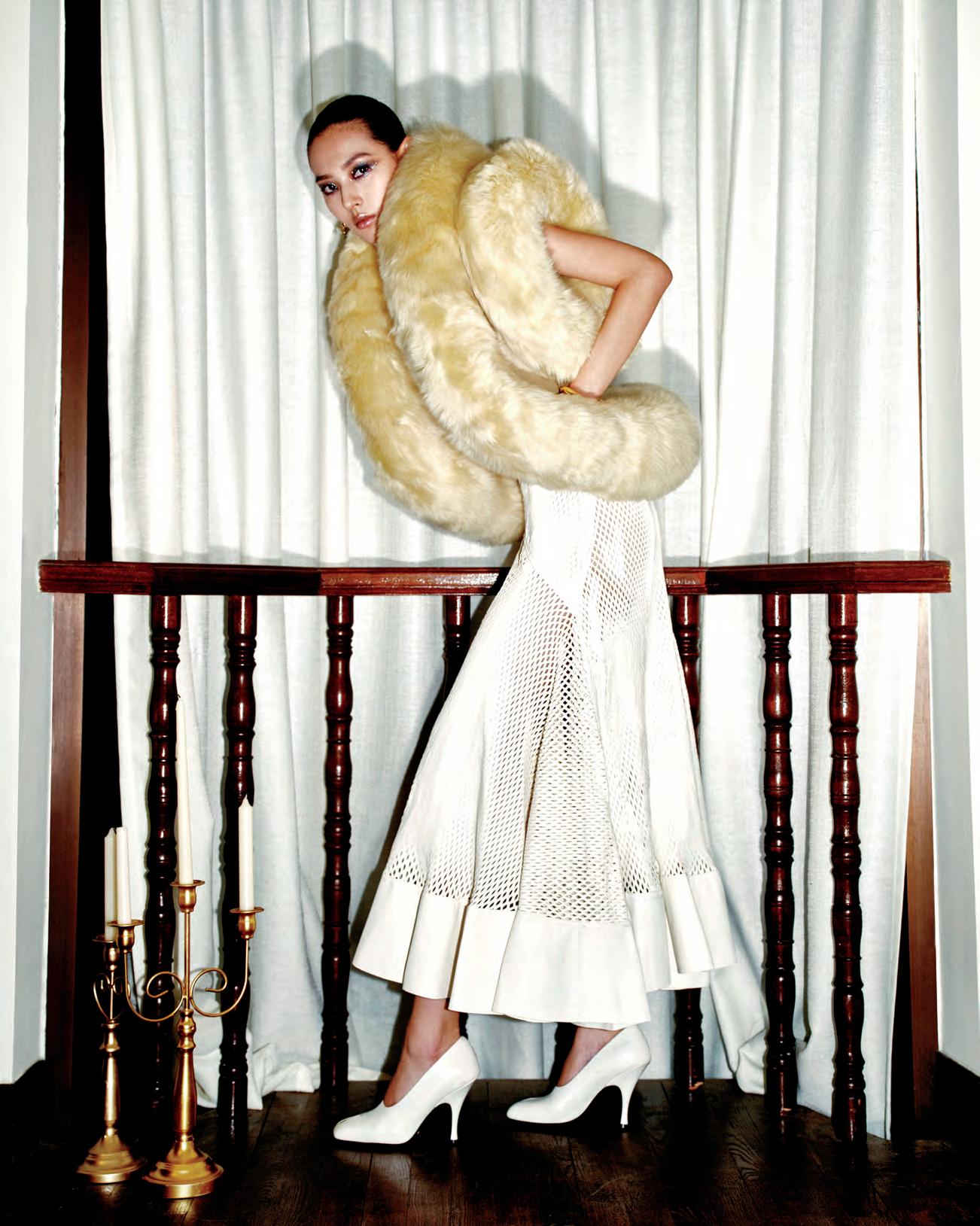
Alaïa vest, skirt, maison-alaia.com; Khaite shoes, khaite.com.
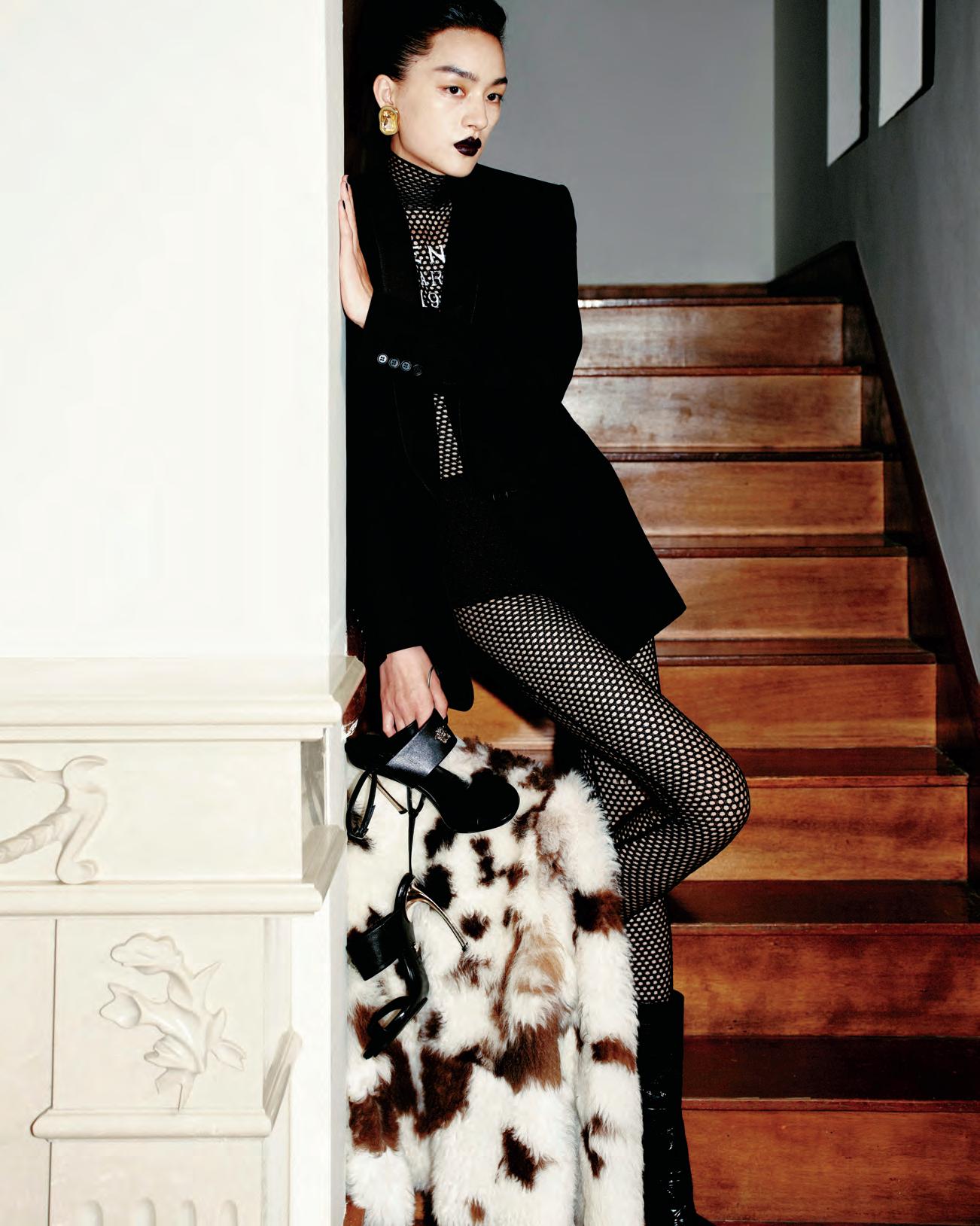
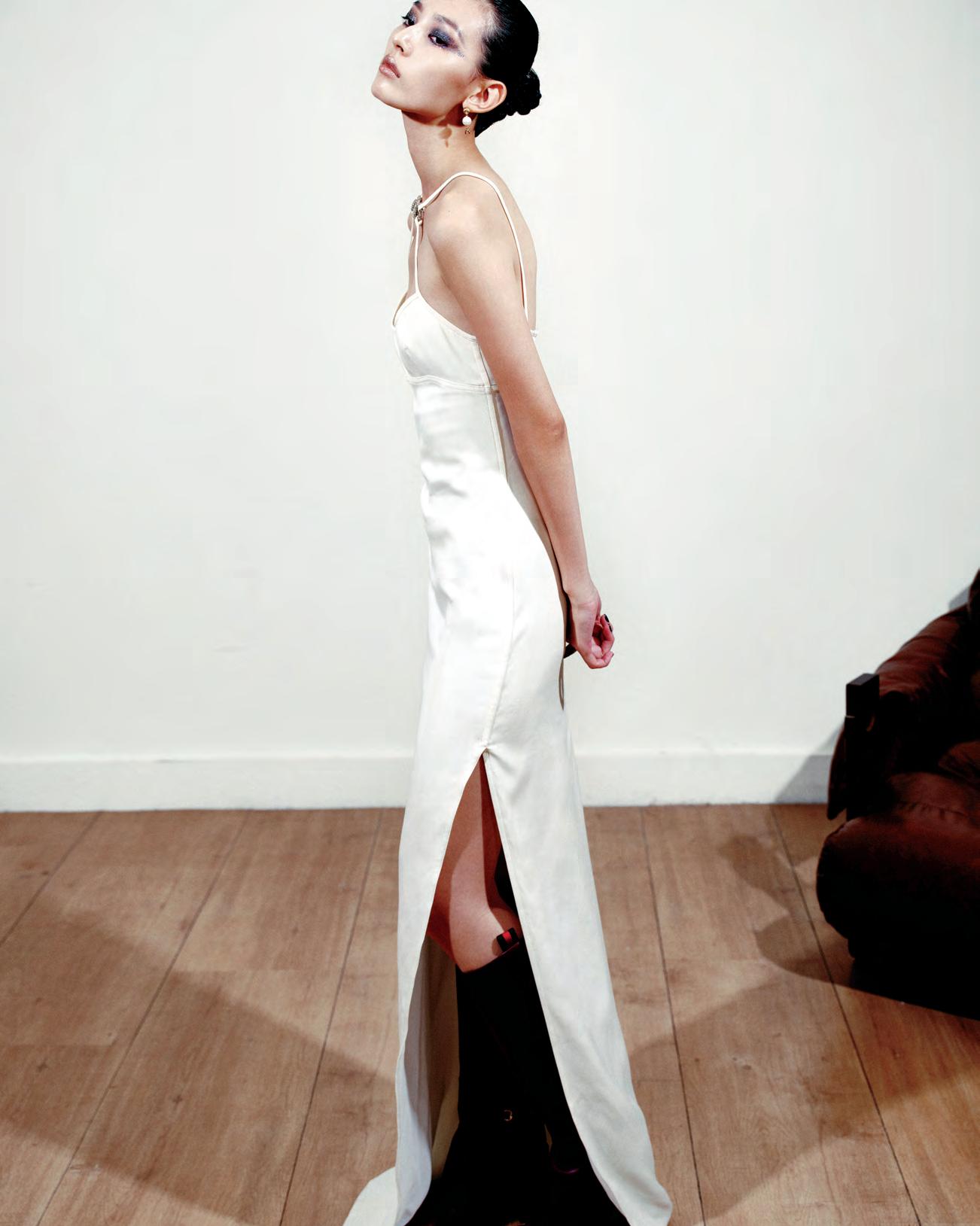
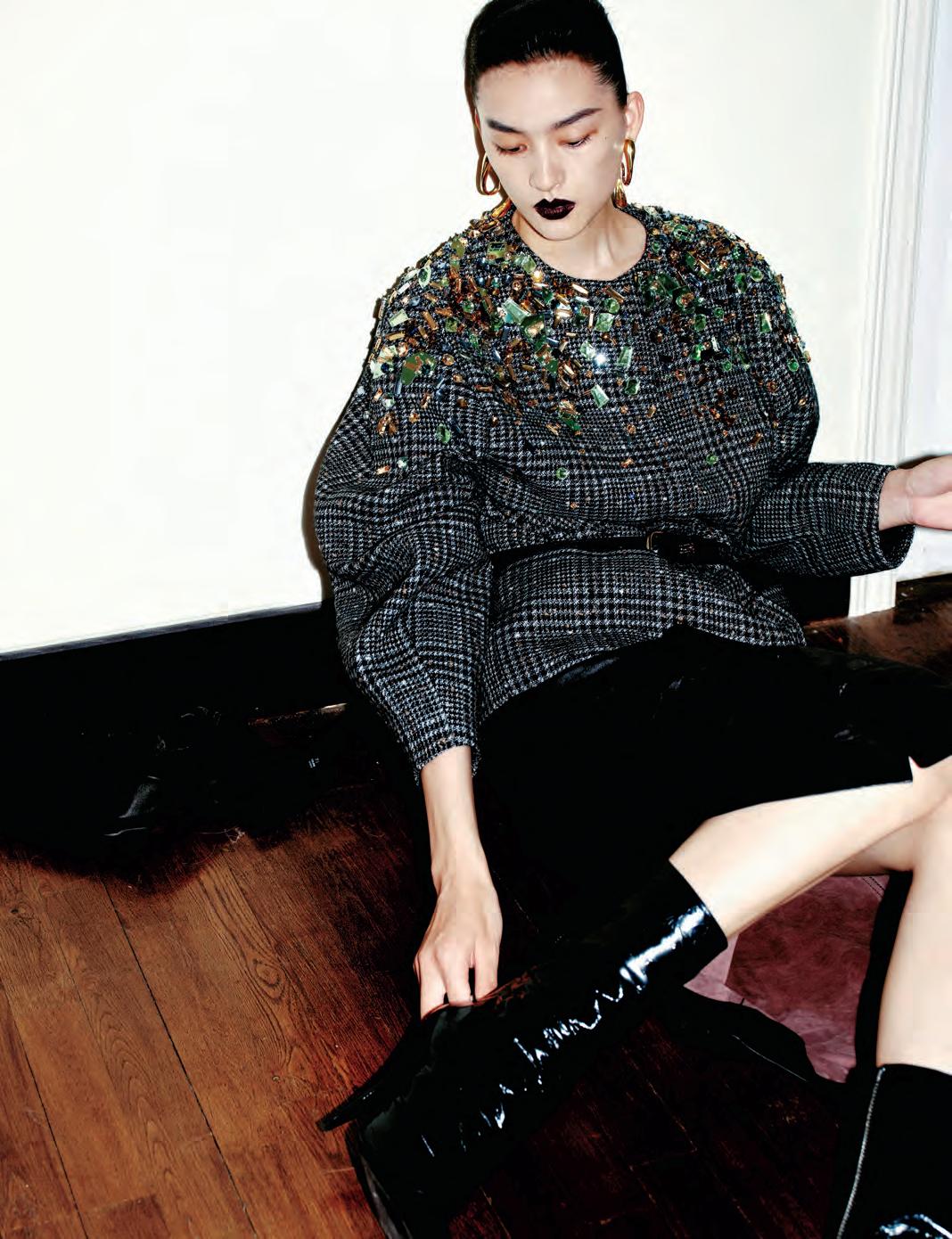
This page: Gucci dress, boots, gucci.com; Marine Serre earrings, marineserre.com. Opposite page: Fendi jacket, fendi.com; Lemaire skirt, lemaire.fr; Daartemis earrings, daartemisjewelry.com; Givenchy by Sarah Burton boots, givenchy.com.
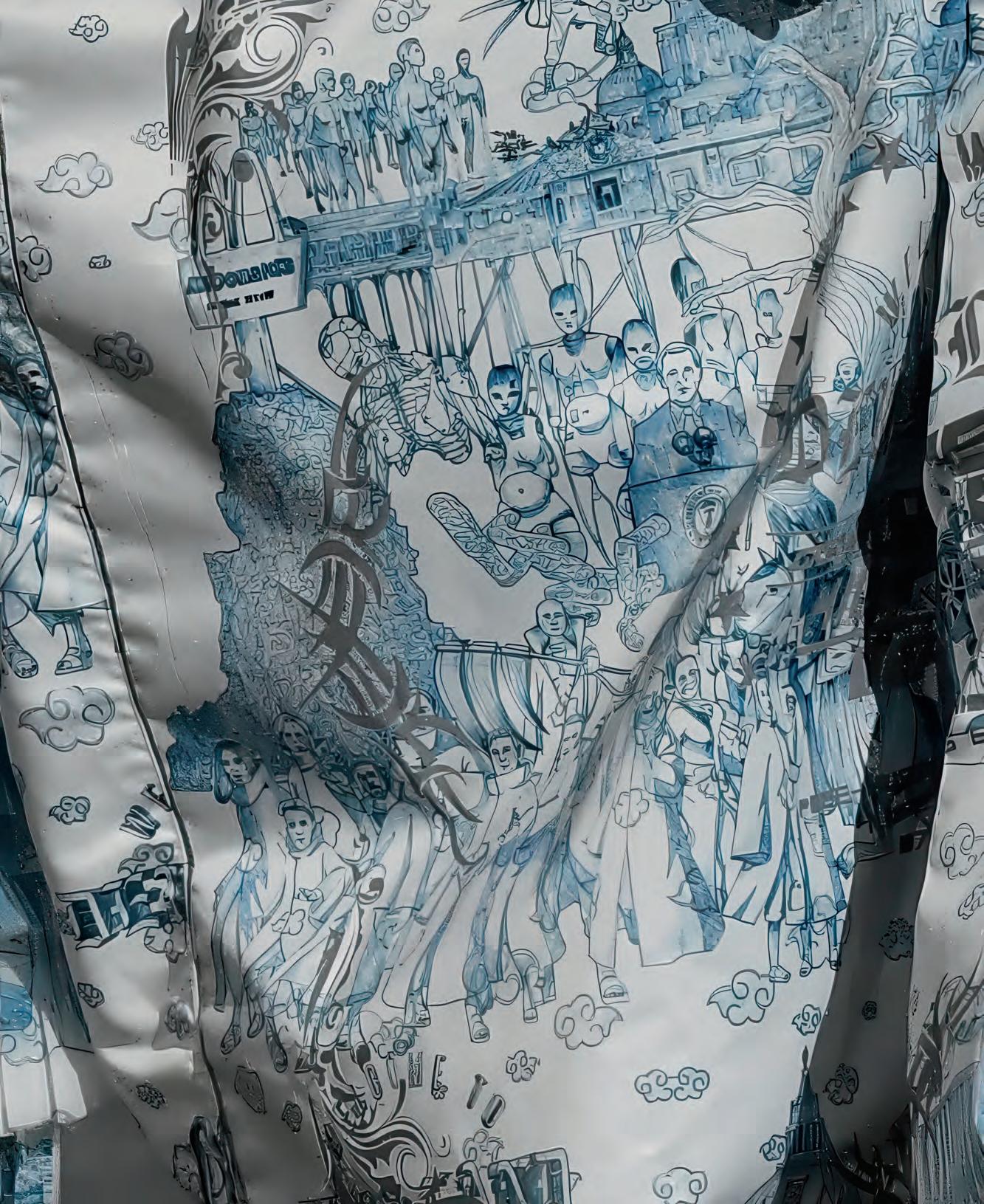
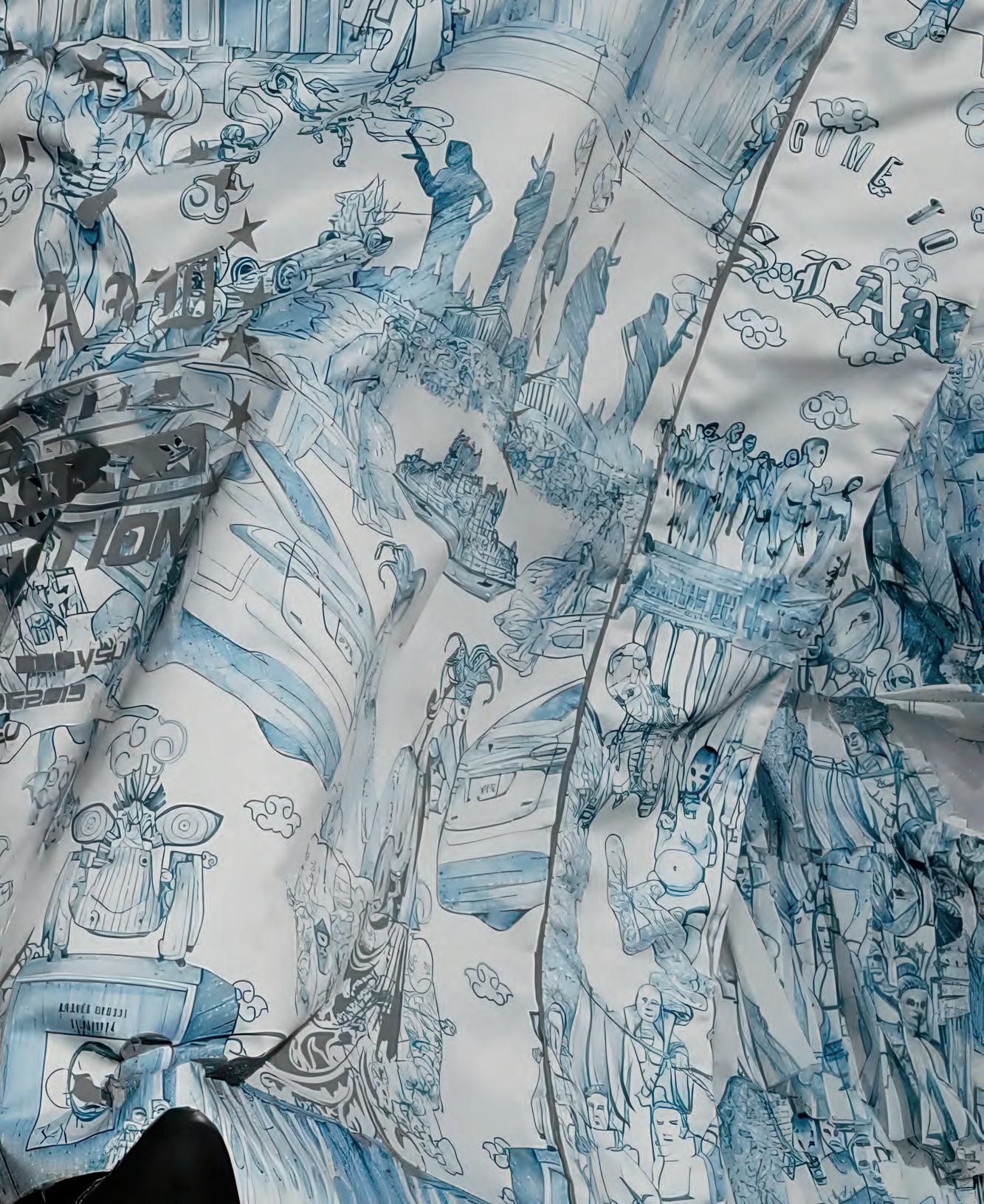
Now, from what we wear, to where we unwind. This is the world of taste beyond the wardrobe — coveted destinations, inspired homes, unforgettable tables and the foods that fill them. Because style doesn’t stop at the closet door — it lives where you live, host, and escape.
Inside a 500-year-old farmhouse est at e in Chianti, where hist ory, design, and heartfelt hospit ality converge.

Words Aaron Rasmussen
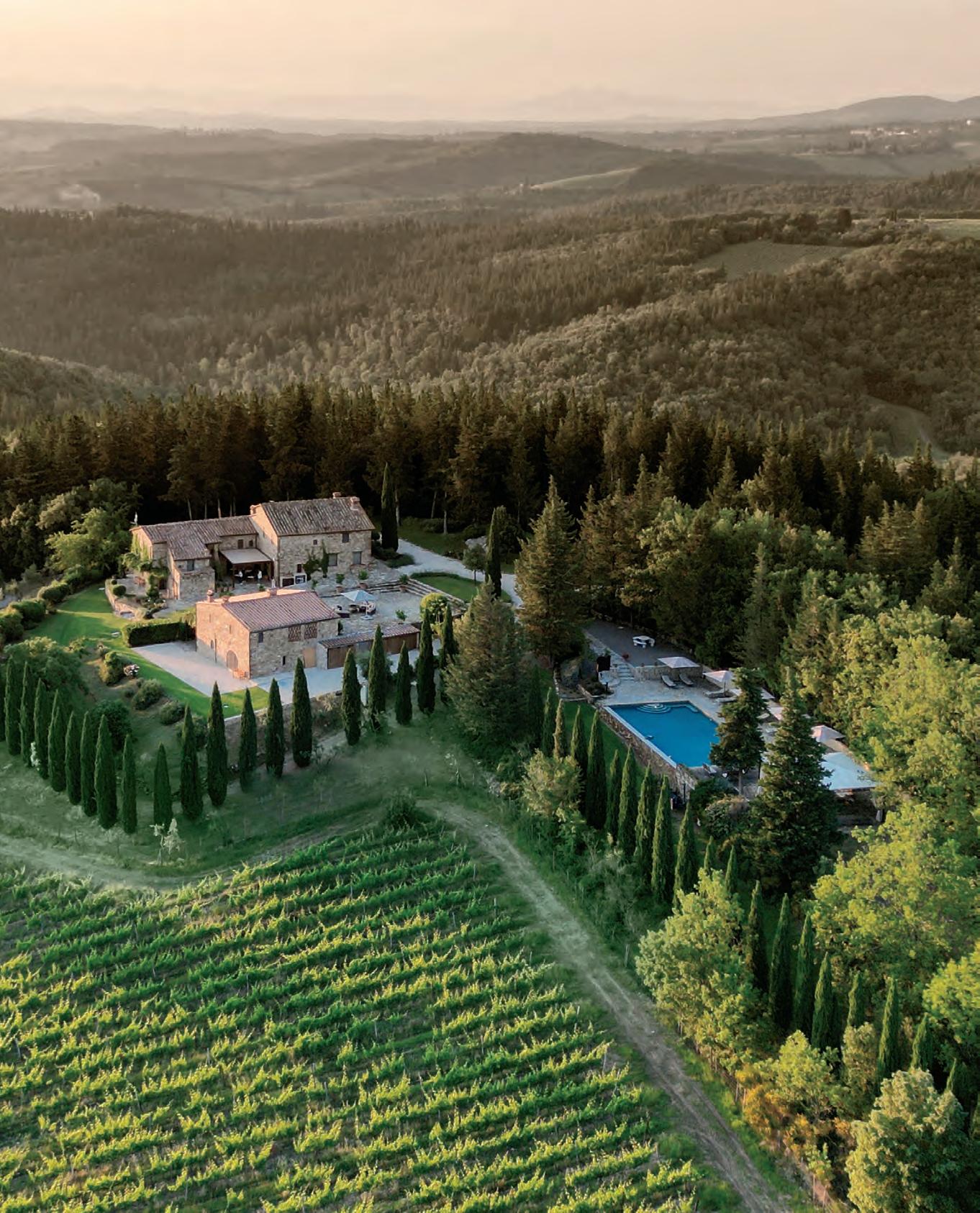
When Los Angeles-based Christian Scali and Stephen Lewis imagined their future together, retiring in Italy was always part of the picture. So, five years ago, the couple of 30 years began searching for an apartment in Florence, touring dozens of properties. Then, serendipity intervened after they had agreed to purchase one: A friend mentioned a special three-acre estate hidden among the rolling hills of Chianti, about 45 minutes from the city, and everything changed.
As their vehicle crunched down the winding gravel driveway, the 16th-century farmhouse set high above the Tuscan countryside near Castellina-in-Chianti slowly came into view. Taking in the stone walls framed by pine and oak trees, with the verdant, undulating hills beyond, this scene felt instantly like home.
“The moment we saw it, we looked at each other and said, ‘Let’s hope the other place doesn’t work out. This is it,’” Lewis recalls.
wanted it to be a retreat to celebrate big events and special moments, where love and togetherness come first.”
As they started restoring the property, the pair discovered that its walls held centuries of stories. What originated as a medieval lookout tower evolved into a farmhouse, with every inhabitant over the centuries leaving a trace behind. “You can literally see how each generation added to it,” Lewis says. “That sense of continuity was something we wanted to honor.”
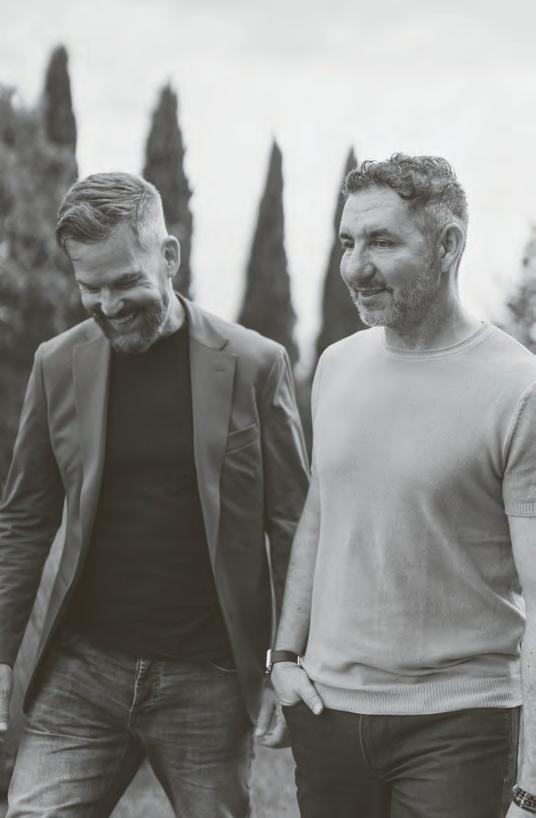
Fortune was on their side. The Florence deal fell through, and the farmhouse—and the dream it ignited—was theirs.
Both with Italian ancestry, Scali and Lewis felt an instant bond with the land and farmhouse, a sense of belonging deeply rooted in their heritage. “When we found this place, we knew we wanted something more—a home for family, friends, and others to share—not a B&B, not a hotel, but a place where people could feel at home,” Scali says. “We
Several years and nearly $3 million dollars later, Villa Ardore—aptly named after the Italian word for passion—welcomes guests who rent the entire property to write their own Tuscan chapter. The estate comprises two buildings with eight suites—six in the main villa and another two in a converted barn—sleeping up to 18 guests. Rustic wood beams and stone blend seamlessly with modern elegance, each design element thoughtfully sourced, with nearly everything drawn from the surrounding area. “We agonized over every detail—beds, linens, even silverware,” Lewis says. “Every part of it was about creating a home, not just a property.”
Villa Ardore brims with indulgences: a 500-bottle wine cellar, plus a private spa tucked into the lower level of the barn complete with a 10-person whirlpool, dry sauna, and a Turkish steam bath. Mealtimes are a celebration of Tuscan tradition—
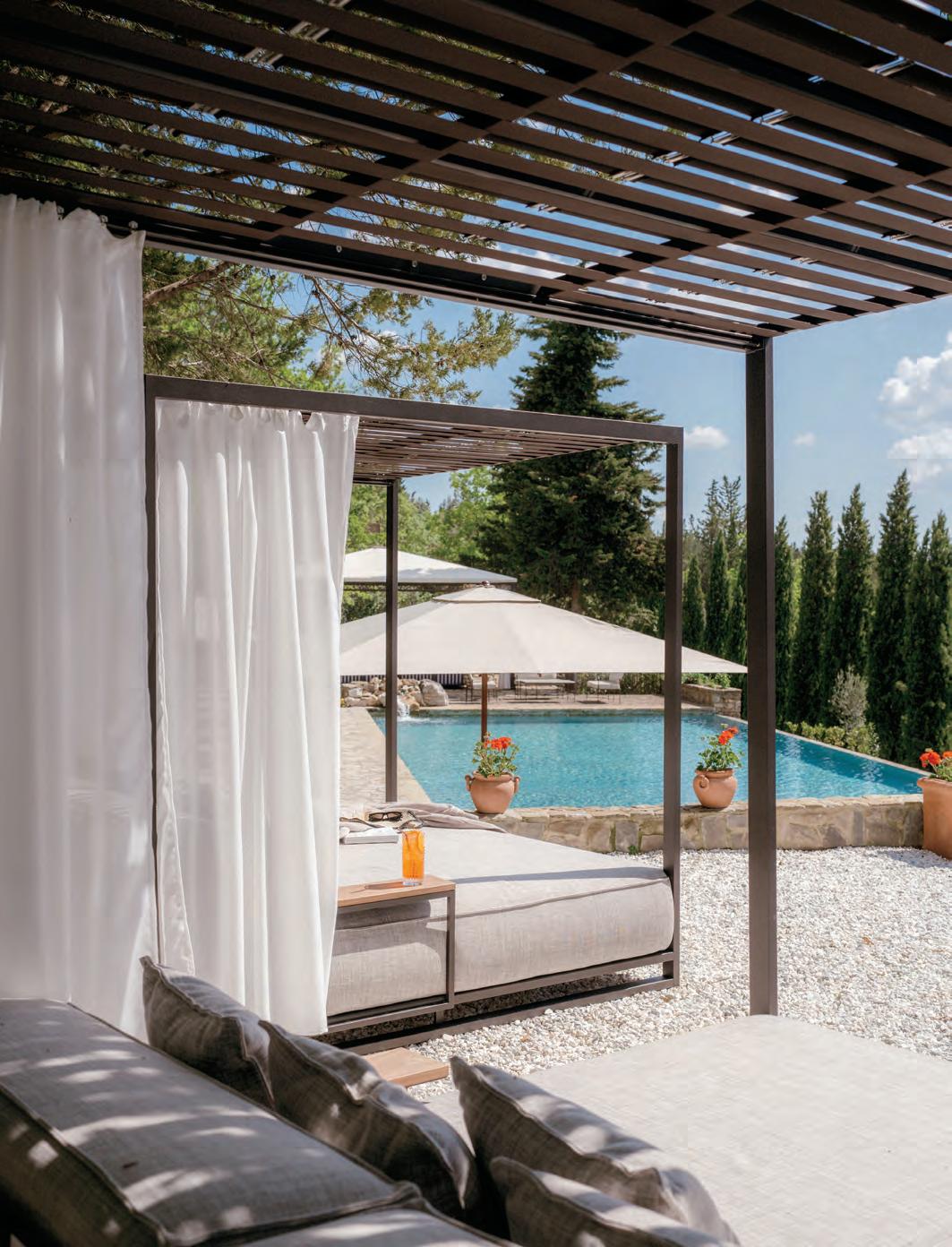
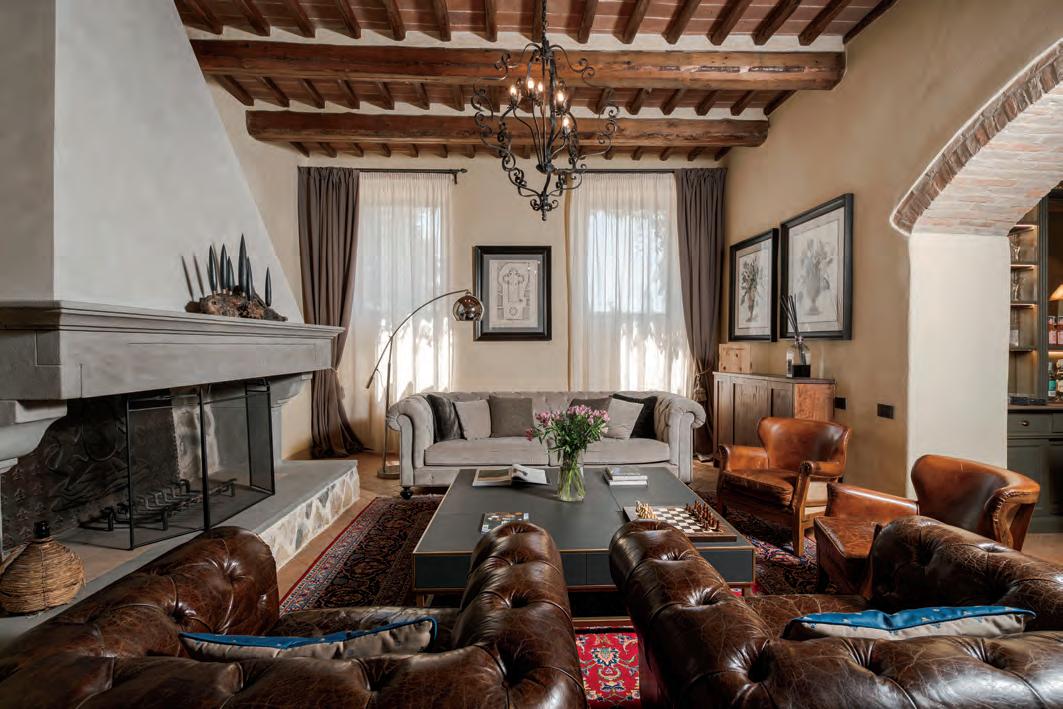
breakfast prepared by a culinary master formerly at the Four Seasons, while lunches and dinners, overseen by Wanda Ferragamo’s former private chef, feature fresh vegetables and herbs harvested from the on-site garden.
And the experience at Villa Ardore is just as sumptuous as its cuisine. “The atmosphere shifts with the seasons,” Scali notes. Summer includes dips in the infinity pool that mirrors endless blue skies, but the cooler months are all about snuggling into the farmhouse’s warm, cozy vibe and savoring views that stretch across hazy hills cloaked in fragrant woodsmoke. “In winter, the spa and fireplace become the heart of the villa,” Scali says of what he feels is a more “authentic” time to experience the region, when fewer tourists allow for
a true sense of community. “It’s a time to slow down and reconnect.”
As the days shorten, life here unfolds at a deliciously unhurried pace—truffle hunts, pasta-making classes with the chef, ceramics with a local artisan, and visits to Poggio Amorelli, a boutique winery, where guests are treated like part of the family.
Every part of it was about creating a home, not just a property.
Though the couple once envisioned Villa Ardore as their future Tuscan retirement oasis—Scali currently works as an attorney and entrepreneur, and Lewis as a screenwriter— opening its doors as proprietors has brought them profound fulfillment. “I hope when guests leave Villa Ardore, they say, ‘This was the time I lived in Tuscany,’” Lewis reflects. “It fills me with so much joy that people see it as their home too.”
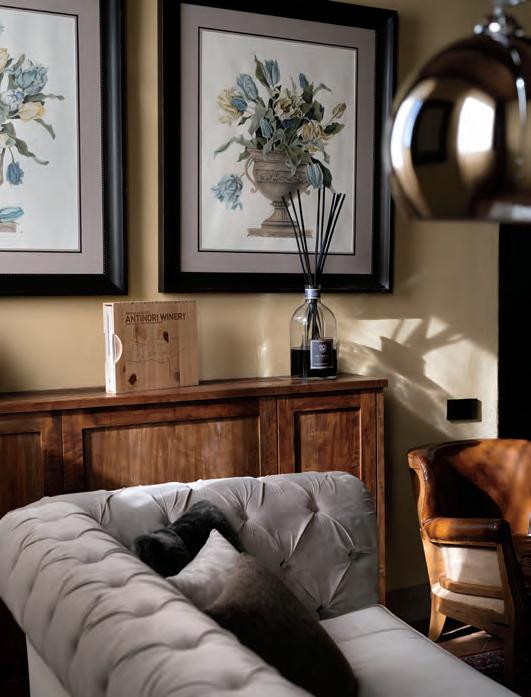
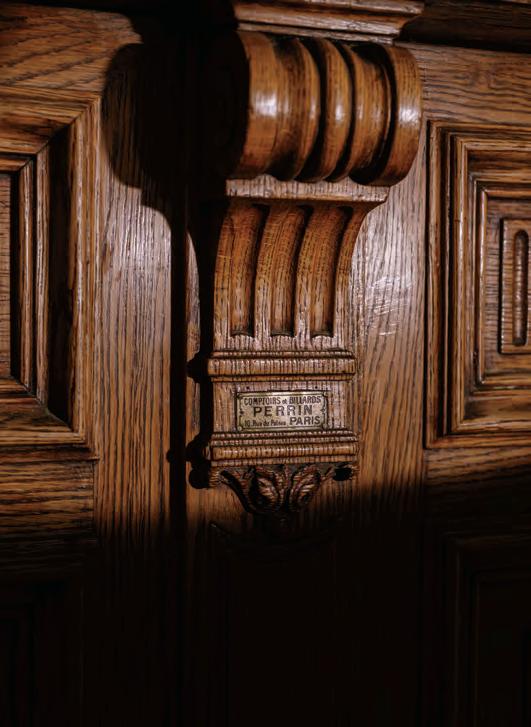
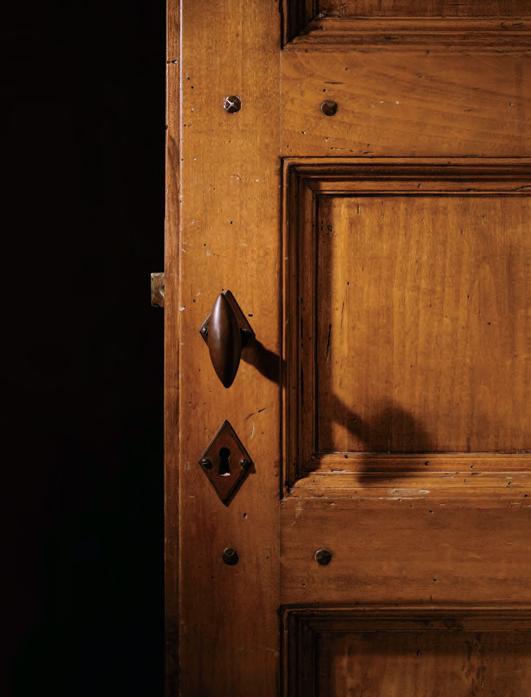

Italy’s no-nonsense chef talks seduction, risotto–and why ribs taste better with your hands.
Words Casey Brennan
Carlo Cracco may be Milan’s most stylish chef — and one of Italy’s most famous faces in food. Born in Vicenza in 1965, Cracco trained under the legendary Gualtiero Marchesi before heading to France to sharpen his craft with icons like Alain Ducasse and Alain Senderens. By his 30s, he was already racking up Michelin stars, first at Florence’s Enoteca Pinchiorri and later at his own Le Clivie in Piedmont.
In 2001, Cracco made Milan his stage, opening Cracco-Peck, which eventually became the simply named Cracco. His current flagship, inside the glittering Galleria Vittorio Emanuele II, is no ordinary restaurant — it’s spread across five stories and includes a café, a patisserie, a wine cellar, private dining, and, of course, his acclaimed fine-dining rooms. The accolades have followed, from a Michelin star to Gambero Rosso’s coveted “three forks.”
But Cracco isn’t just a chef; he’s a cultural figure. Millions know him as the sharp-suited judge from MasterChef Italia (and later Hell’s Kitchen Italia), where his wit, precision, and charisma turned him into a household name.
Equal parts tradition and innovation, Cracco is the chef who can make Milanese risotto feel like high art — and who proves that Italian cuisine, in the right hands, is always evolving and always stylish.
Grazia USA: How would you describe yourself to someone who doesn’t know your name or your story?
Chef Cracco: I’m a chef who’s made food my way of communicating. For me, cooking is about precision, creativity, and discipline. It’s not just a job —
it’s how I express myself. I don’t cook just to please people; I cook to make them think, to surprise them, and sometimes... to challenge them a little.
G: What do you think made you so famous?
CC: Probably the fact that I’ve always stayed true to my vision. I’ve never tried to please everyone — and I think people respect that. Of course, TV helped bring attention, but without real work behind the scenes, that wouldn’t have lasted. At the end of the day, it’sthe kitchen that does the talking.
G: If desire is the secret ingredient in food, which one of your dishes is pure seduction?
CC: Definitely the marinated egg. It looks simple, but it’s full of technique and subtlety. The texture is unexpected, the flavor is delicate but deep. It doesn’t scream for attention, but it leaves a mark —and that, to me, is the essence of seduction in food.
G: What’s the most “American” thing you secretly love to eat when no one’s watching?
CC: BBQ ribs. But real ones —marinated for hours, then slow-cooked over charcoal until the meat just falls off the bone. Sticky, smoky, totally irresistible. It’s one of those guilty pleasures you should enjoy fully... with your hands, of course. No fork allowed.
G: If you could open a restaurant anywhere in the United States, where would you open it and what would be the first course on the menu?
CC: New York, without a doubt. It’s a city open to bold ideas, where people are curious andappreciate authentic cuisine. The first course? A risotto with green tomatoes, pine nuts, and scampi. An elegant dish, a little surprising, and very Italian, in my own way.
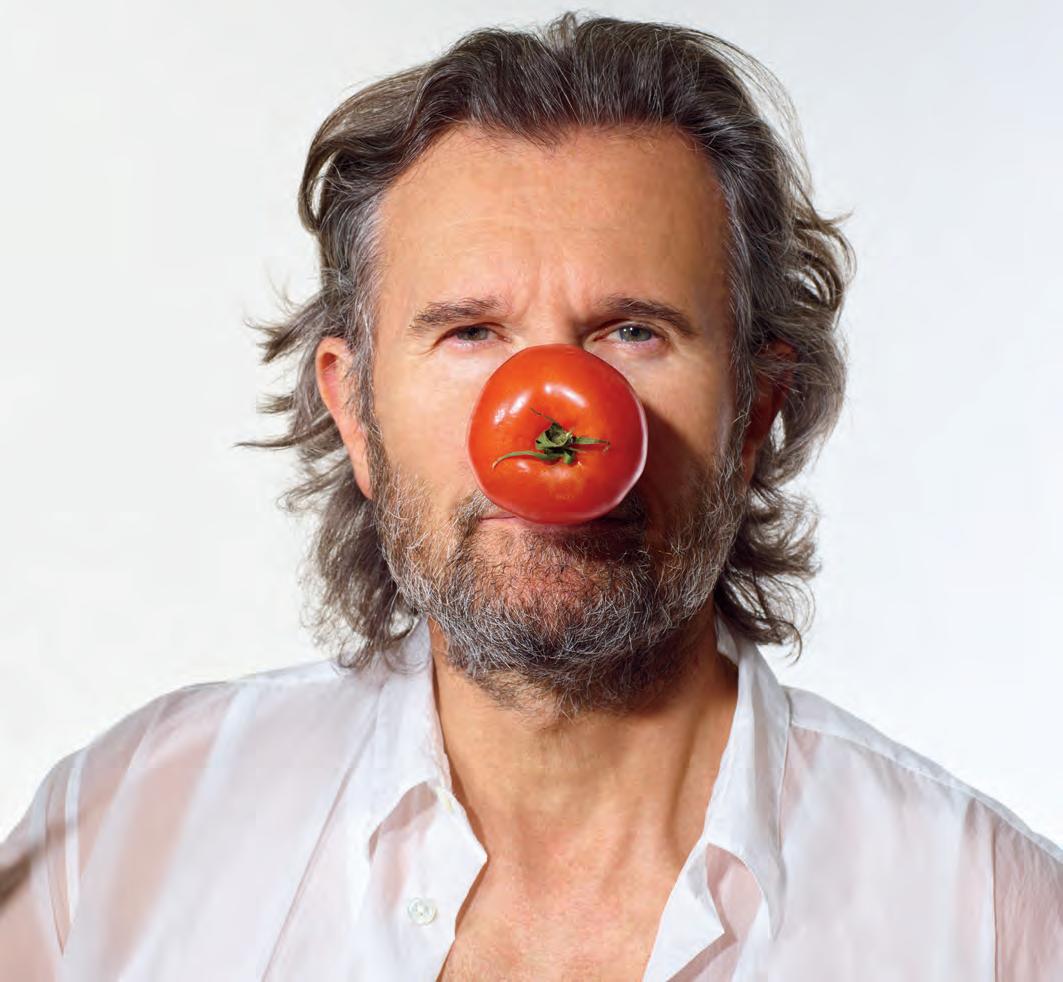
You’ll need:
·Rustic bread (like ciabatta or sourdough)
·Stracchino cheese (about 100 g)
·1 ripe pear·Brown sugar
·A few leaves of red radicchio·Extra virgin olive oil
·Salt and black pepper
How to make it:
1. Caramelize the pear: Slice it thinly and cook in a pan with a bit of brown sugar until golden and slightly sticky.
2. Grill the radicchio: Toss the leaves with a little olive oil and salt, then grill them on a hot pan until they soften and pick up some color.
3. Assemble the sandwich: Toast the bread, spread a good layer of stracchino, add the warm caramelized pears, and top with the grilled radicchio. Finish with a crack of black pepper.
It looks simple, but the balance of flavors is spot on. Want to take it up a notch? A few drops of aged balsamic vinegar make it even better.

The sexiest food of all may also be the most comforting.
Fiorella Valdesolo considers the oyst er.
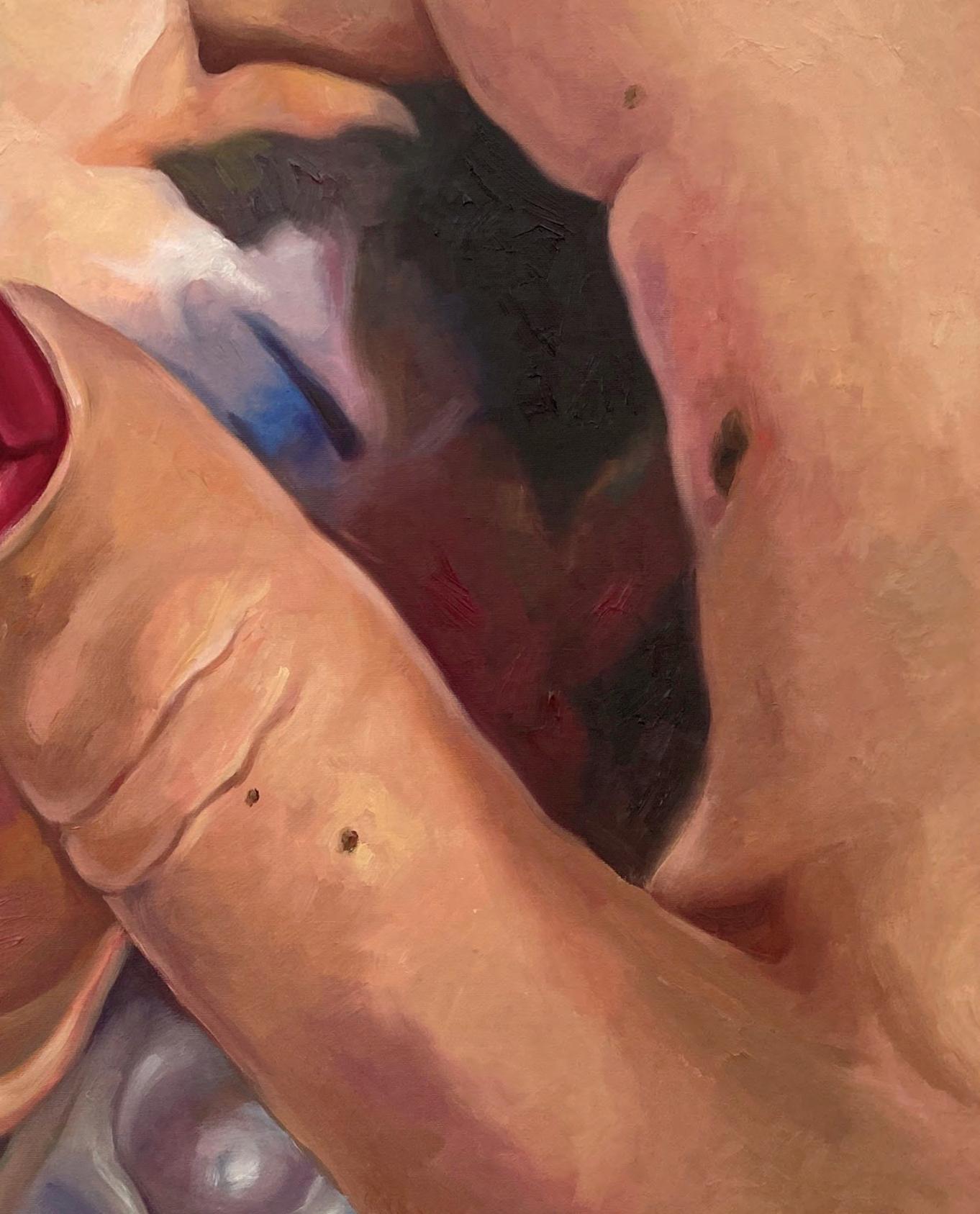
STORY OF “O”
The oyster’s association with desire stretches back centuries. As legend goes, Giacomo Casanova, the 18th-century Venetian whose surname has become synonymous with seduction, would start each morning by slurping 50 raw oysters to, quite literally, gird his loins for a day of sexual encounters. In Greek mythology, Aphrodite, the goddess of love, beauty and pleasure, is said to have been born of the sky god Uranus after his testicles fell into the sea, and she then emerged from the foam of the frothy waters perched on an oyster shell. In the richly rendered paintings depicting domestic settings by 17th-century Dutch Masters like Jan Steen (in 1658’s The Oyster Eater) or Frans van Mieris the Elder (in 1661’s The Oyster Meal ) oysters were positioned as devices of flirtation. Something that has continued into this century in films like Tampopo (1985) and Tom Jones (1963), where slurping their moist, briny flesh is a vehicle of temptation.
Beyond their chemical composition, there is also their placebo effect:
Simply believing that a briny bivalve can boost your libido is effective enough.
tain more per serving than any type of food; a half dozen oysters has almost five times the daily recommended amount for adults—a mineral that boosts fertility and testosterone levels, which impacts sex drive for men and women. A 2013 study conducted on male mice found that giving them oyster extract increased their mounting behavior (which needs no further explanation). Zinc has also been found to boost dopamine, aka the feel-good hormone, which helps us experience pleasure and has been linked to sexual response. Beyond their chemical composition, there is also their placebo effect: Simply believing that a briny bivalve can boost your libido is effective enough. Because, as Dr. Jennifer Evans, a medical historian and reader in early modern history at the University of Hertfordshire, points out, there are few foods that haven’t been considered aphrodisiacs at some point in time.
There are theories about what exactly it is about the oyster that gets our proverbial juices flowing. Scientists point to its high zinc content—they con-
“In the 16th and 17th centuries, people were living in a world where they believed the body was very much permeable to its environment, and could also be managed and manipulated, and that included both their fertility and their sexual drive,” says Evans. Food was medicine, and there were many foods believed to heighten one’s sexual desire, some more appealing than others. Evans points to one 17th-century theory that for men to sustain an erection, they needed to consume vast quantities of beans and peas to have windiness in their body. A gut swollen with gas would, in turn, also inflate the penis, an idea that, says Evans, was thankfully short-lived. Evans also highlights the writings of Swiss naturalist and philosopher Charles Bonnet who wrote that salinity qualifies something as an aphrodisiac, sea salt sti-
mulating because Aphrodite was born of the sea. Then there is the notion of an aphrodisiac by association: If something is rare or expensive, and therefore more unattainable, that can add to its appeal. In the 17th century, says Evans, oysters were bountiful and relatively cheap (not so nowadays, of course) but something like chocolate was harder to come by and, therefore, desirable. Both back then and now, the context of where you are enjoying an oyster impacts its potential to titillate too: shucking and slurping at a roadside oyster stall hits quite differently than doing the same in a dimly lit dining room. In Consider the Oyster, legendary food writer M.F.K. Fisher’s 1941 book devoted to contemplating their appeal, she writes: “Often the place and the time help make a certain food what it becomes, even more than the food itself.” But context also plays a role in how an oyster actually tastes. In the world of wine, we have terroir, a word that speaks to how the soil and climate and topography of one region versus another is expressed in what you’re drinking; in the oyster world, there’s merroir, which means “of the sea” and abides by the same principle, but with water as the ever-evolving landscape. “Oysters soak up the flavor of their home waters—the tides, the seaweed, the silt, the minerals, even the moon’s pull,”says Sims McCormick, co-founder of
Real Oyster Cult, a farm-to-your-table oyster delivery service. “But salinity? That’s the loudest voice in the room. It tells you an oyster’s origin story.” Crisp and salty, that’s likely East Coast, says McCormick. Mellow brine with cucumber and melon, you’re in West Coast territory, and balanced with a minerally bite, it’s pure Canada, she adds. Deriving a particular pleasure from an oyster that is literally close to home is common. For the oyster afficionado, it’s their Sailor’s Valentine from Duxbury Bay in Massachusetts. “Eating a Sailor’s Valentine is like sipping the bay I grew up swimming in and sailing on,” says McCormick. “A deliciously fresh and salty sense memory that connects you to the essence of the sea.”
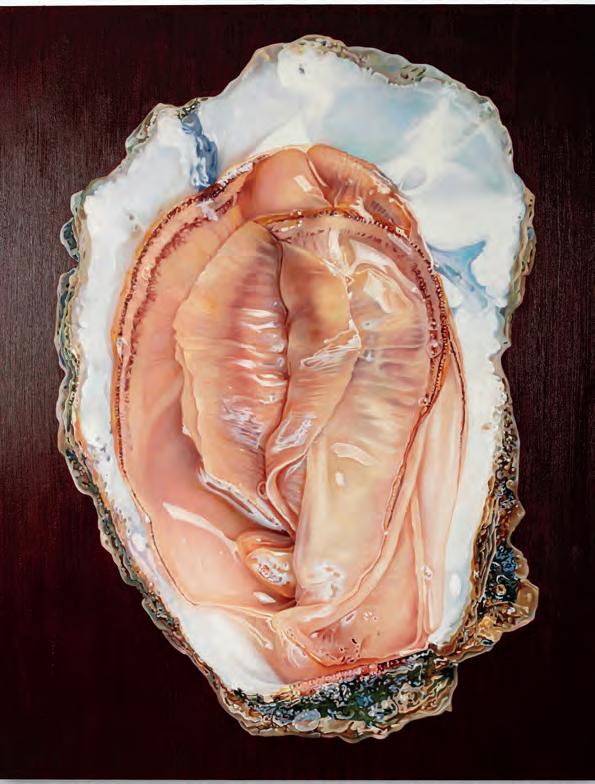
French filmmaker Agnes Varda was famously fixated on the ocean, beaches showing up again and again in her work. In Varda by Agnes, a 2019 documentary about her, the camera follows along as she strolls across the sand. “If we opened people, we’d find landscapes,” she quips. “If we opened me, we’d find beaches.” It’s hard not to see the oyster’s particular allure as one that is deeply rooted in the earth from which they spring forth. And at a time when so many people feel increasingly disconnected from nature, the oyster’s not-so-subtle invitation to taste the ocean offers a powerful and primal kind of pleasure that’s unmatched.
Forget Pornhub,
en Z women
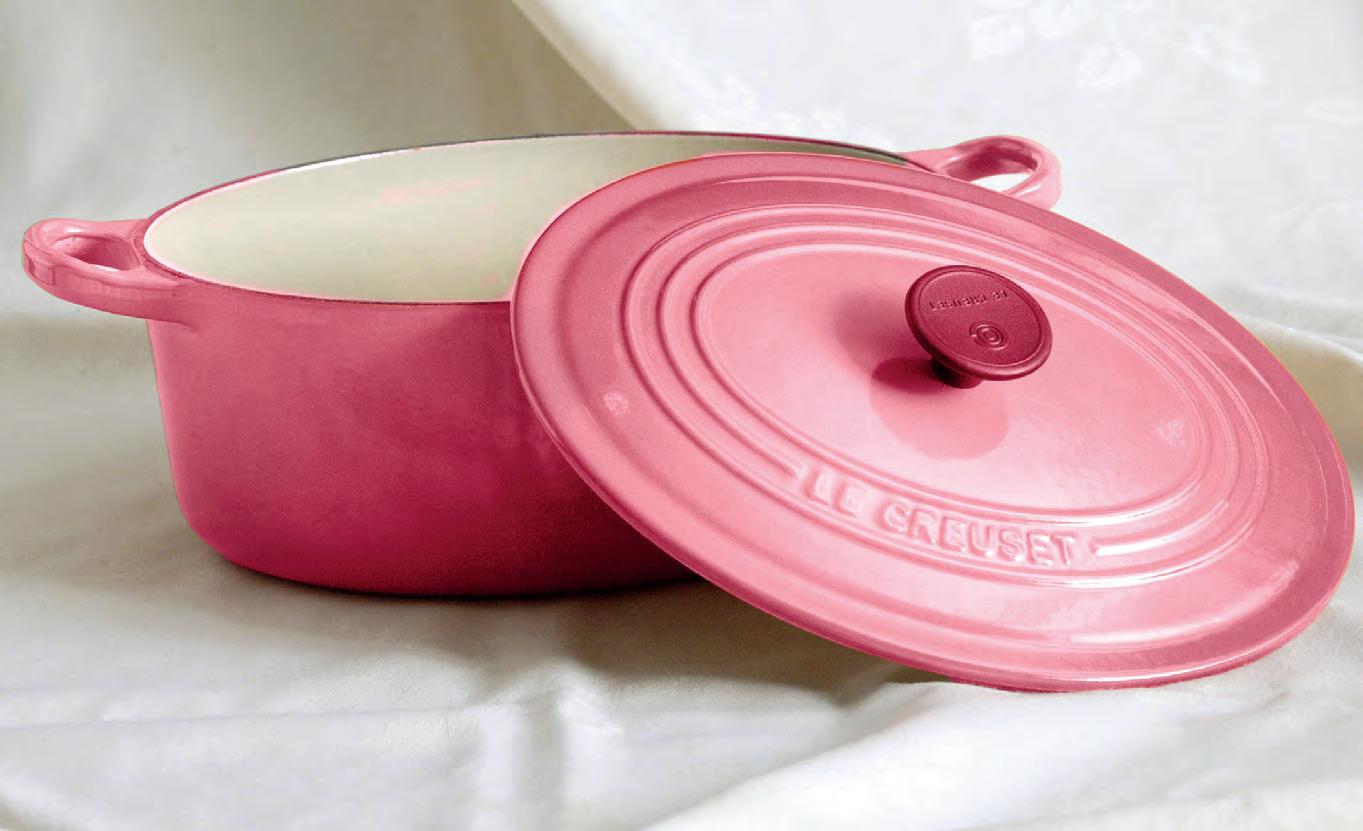
KITCHEN PORN
Twenty-Somethings are finding kitchen wares and gadgets the new objects of desire. Recently, Emily Canham posted a video where she opened her drawers for her 1.38 million followers. The popular online personality wasn’t giving her audience a salacious look into her underwear à la OnlyFans. Instead, the YouTuber was showing off the intimate parts of her new kitchen renovation down to the organization of her cookware— including cupboards full of her signature pink Le Creuset collection—for her audience to salivate over. The British lifestyle mogul is among several online media personalities who fuel Gen Z’s odd fascination with stylish culinary tools and accoutrements that borders on fetishizing. Previous generations delayed this desire until their more settled 30s. Then again, the generation currently aged 13 to 28 is unique and not only for their love of a Dutch oven. According to “Zillennial” accountant-turned-pastry-chef and influencer Dana King, Gen Z home design is equal to the styles they wear, reflecting their values,
sophistication, and priorities. The colorful and durable French cookware brand fits right in.
“Le Creuset is an iconic brand symbolizing intentional living, refined taste, and achieving stability in your life. Influencers featuring this aesthetic and lifestyle make owning it aspirational. We’re not just buying cookware but a vision of who we want to be in our kitchens,” said the Brooklyn-based baking whiz who recently partnered with the French cookware brand after they discovered her Russian honey cake recipe on Instagram and TikTok. It’s also practical for city living. “In New York’s cramped apartments, every purchase should be both functional and aesthetically pleasing,” she added. Typically, women in their 20s are more concerned with wardrobe building than curating kitchen gear. Dianne Pogoda, a journalist in the kitchen, bath, and interiors space, attributes a lot to the way the COVID-19 changed lives.
“This generation has money because a lot of people lived at home during the pandemic and saved money. Their commuting and work wardrobe costs
are down due to WFH and ‘casual Fridays’ culture,” Pogoda said.
Thus, investment pieces have transformed from a wardrobe to the home. “They have elevated tastes and recognize the value of creating a nice nest with things that will last and crave the finer things because they weren’t going out,” Pogoda added, noting brands like Fellow and Breville’s appeal. “Is it a status thing? Yes, but it’s also wanting the thing that lasts for years.”
King concurred, recalling investing in a Cuisinart Pure Indulgence ice cream maker for the occasional dessert accompaniment. “Comparing that to investing in a dress I’d only wear to a few events, the appliance wins for use cases. I can either pull the dress from what I already have, borrow one from my sister, or find a secondhand one. It’s easier to work around fashion needs and still get great results than it is to substitute specialized kitchen equipment,” she said.
Influencer and entrepreneur Paige Lorenze aims to offer a curated lifestyle that hopefully doesn’t require choosing between great clothing style and aesthetically pleasing kitchen gear. Her brand, Dairy Boy—founded as an inside joke rebuking the oat milk trend—offers clothing for less than $150 on average, and the offshoot housewares line, American Charm, offers a Dutch oven at $130 and sheets that start at $88 for a twin set.
charm,” Lorenze said via Zoom. Think a touch of cottage core mixed with Daylesford Organic, the Cotswolds-based modern country living emporium founded by English businesswoman and sustainability advocate Lady Bamford.
“This is the perfect vision I have for my brand. I spend a lot of time in stores like this,” Lorenze added. To wit, she just did a pop-up with a popular Connecticut farmstand in need of a promotional boost to fuel its existence.
Like an older sister guiding her followers, Lorenze aims to help them create spaces that look and feel good, instilling a cozy, welcoming mood. “I want to curate that life which references the feeling you get walking into an older home created by what’s inside,” she said.

The Connecticut-based older Gen Z social media darling said her obsession with older homes materialized at age seven while visiting a friend’s house in coastal Old Lyme.
“My aesthetic reflects a desire for nostalgia, Americana, for sportier clothes that go from Connecticut garden to Manhattan. It’s a longing for simpler times, for genuine, real things that have a certain
“My generation is interested in aesthetics, influenced by online living during the pandemic. It’s almost scary how much I know about how someone in Alaska or Scandinavia lives,” Lorenze continued, adding, “Martha Stewart believes you don’t need money to have class. Maybe this younger customer starts with my Dutch oven but upgrades to Le Creuset in their 30s. Or not, because the quality of mine is really good,” she offered. Following the sky-blue launch model, hunter green with matching oven mitts will drop this fall. Still, like fashion one aspires to, having fantasy purchases is also key. Recent Elon University graduate Acadia Schimmel admits she “wants to own the entire Williams Sonoma store”, dreams about the SMEG x Dolce & Gabbana toaster, and pines after a retro Frigidaire refrigerator.
“Having a beautiful kitchen with nice gadgets feels like a luxury and status thing. My parents were big cooks so it’s a mix of nostalgia, wanting nice things, and creating that ‘ideal’ version of home life I see online.”
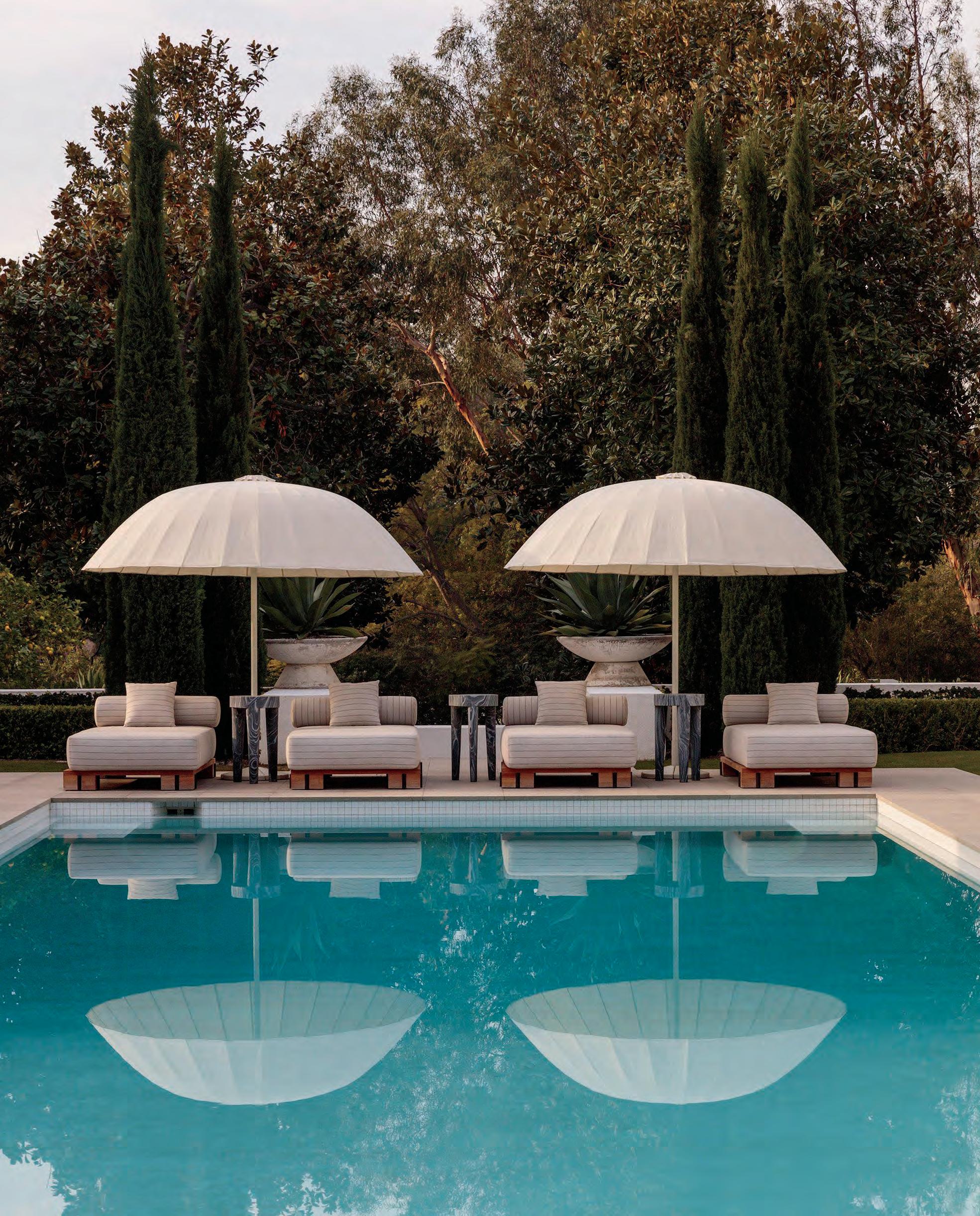
Kelly Wearstler
has designed hip
hot els and the
houses of A-list ers.
But how does she approach her own space?
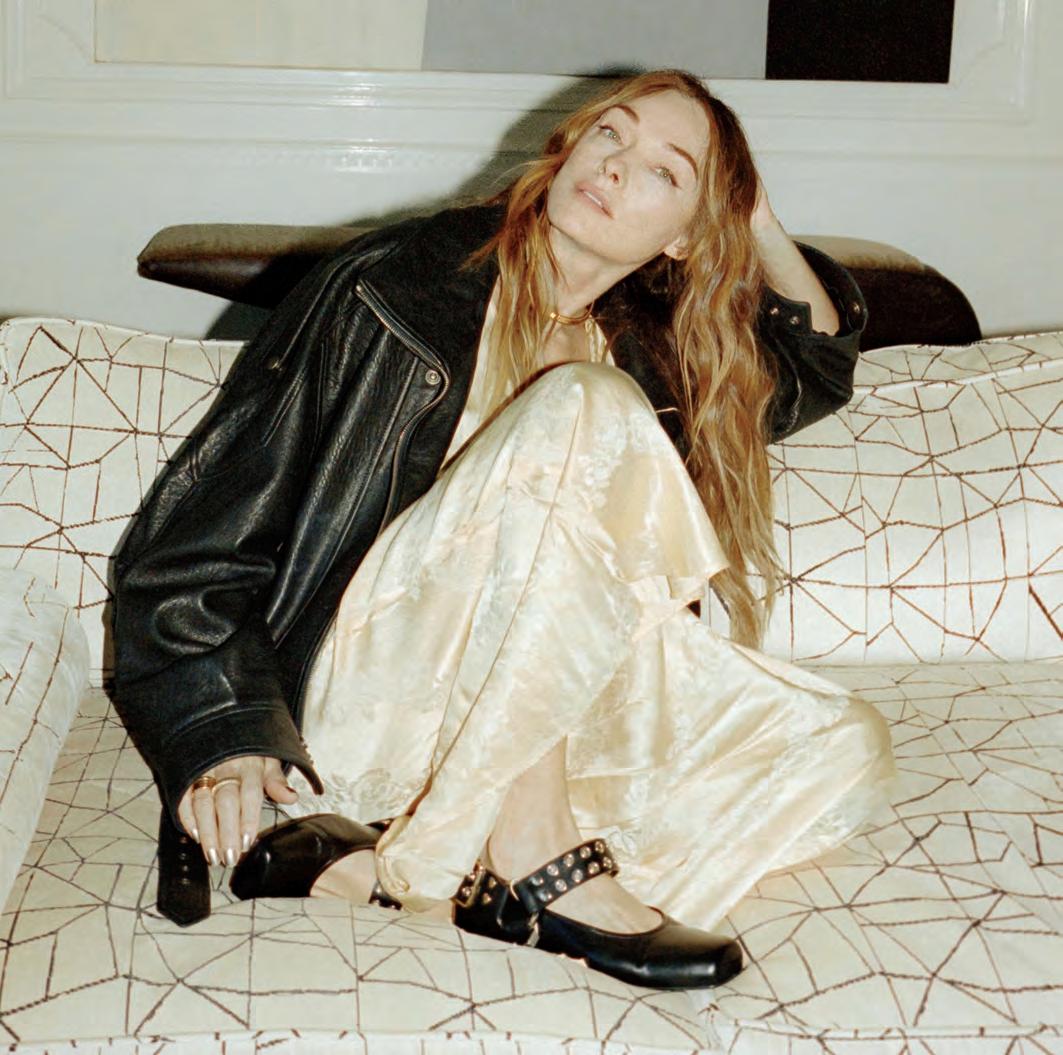
Not that long ago, considering yourself a “homebody” wasn’t something to shout out. But the design powerhouse that is Kelly Wearstler is proud to be in the staying-in club.
“I love being at home. Our gym is here, we’re a sporty family and so we’ll have friends over. We go to bed early and get up early – we lead a super-healthy lifestyle,” Wearstler explains.
That’s not to say that Wearstler spends all her time holed-up in LA, though. When we speak, the mother-of-three is invigorated from a sojourn to Paris, where, along with her toddler Crosby, she took in flea markets and galleries and this season’s fashion shows. Fashion week feeds in to her funnel of creativity just as much as the former. “For me it’s art: the presentation, the art direction,
creative direction… it’s just such an exciting time.” Winging its way over from that trip is a floorlamp she found at a market, although not for her Beverly Hills mansion but the next iteration of her Malibu beach house. Her family’s beloved retreat for 20 years was destroyed by the wildfires that devastated parts of Southern California in January. “The house held lots of memories so that was hard. But I’m an optimist. Nobody was hurt, our family is safe, our friends are safe. It’s a material thing, so I am looking at that in a positive light,” she says.
Creating and innovating is in Wearstler’s blood, afterall. Her trajectory from schoolgirl honing her eye at thrift stores with her mother to interior designer and head of a global design empire is a path that has surprised the girl who grew up in South Carolina “without much money at all”. “I thought I would just do interior design and have residential projects. I never imagined I would do a hotel or design product or any of this stuff,” she says humbly.
She continues to shape the hospitality landscape more intimately, most recently designing Kappo Kappo, a new restaurant concept soon to open at Austin Proper.
Hospitality has struck a chord. “There’s nothing better than designing a hotel that so many people are going to come and experience and enjoy. My first job was working in a little diner making smoothies, so I’ve always kind of been in the service business, making people happy.”
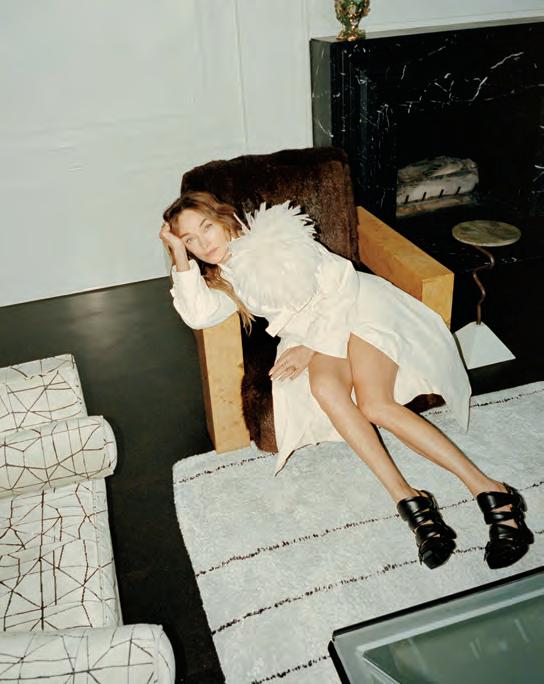
Hotels are arguably what put Wearstler, who launched her eponymous studio 30 years ago, on the map. After decorating his home, she was hired by her future husband, the real-estate developer Brad Korzen, to design parts of the Avalon Hotel in Beverly Hills. In shaping what became one of the West Coast’s hippest destinations, Wearstler’s idiosyncratic influence on the sector reverberated globally. Recent additions to her portfolio include the Properchain’s outposts in Santa Monica, Downtown LA, San Francisco and Austin, Texas.
Her inimitable style, which she describes as ‘free-spirited’, plays on scale, materiality and provenance. Unapologetically glamorous, she blends a variety of design references with assurance. And then there’s the fact that she looks the part: her uniform of oversize leather jackets and deconstructed tailoring distinguish her from her peers. There have been clothing lines, collaborations, TV appearances, awards, half a dozen books and an online Master Class teaching interior design. Marking a
major milestone in her career, Wearstler recently launched a new curatorial platform, Side Hustlea space for exclusive collaborations with emerging and established artists across disciplines.
Wearstler has also created homes for the super-rich (many of which have never been shared
Opposite page clockwise from top: Dramatic black sculptural forms punctuate the crisp white rooms; artwork by Isidre Enrich over the vintage cream ceramic table; mirror by French artist Louis Durot; dining table and chairs from Wearstler’s own line, former composed of handfractured textured glass and edged in antique brass.
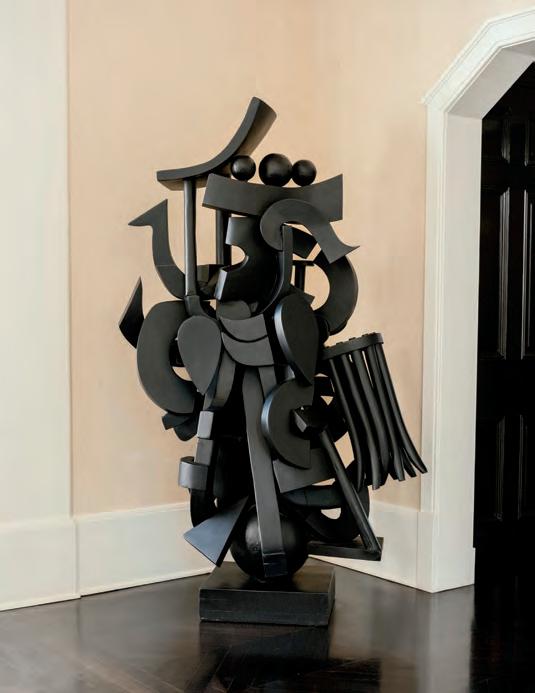
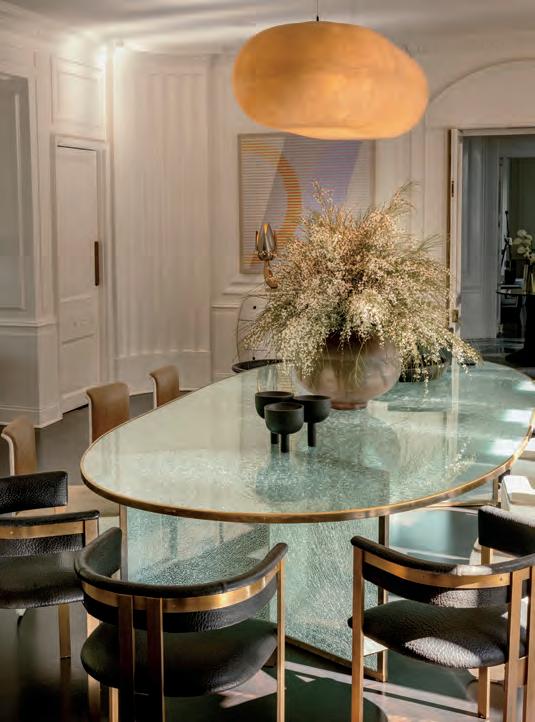
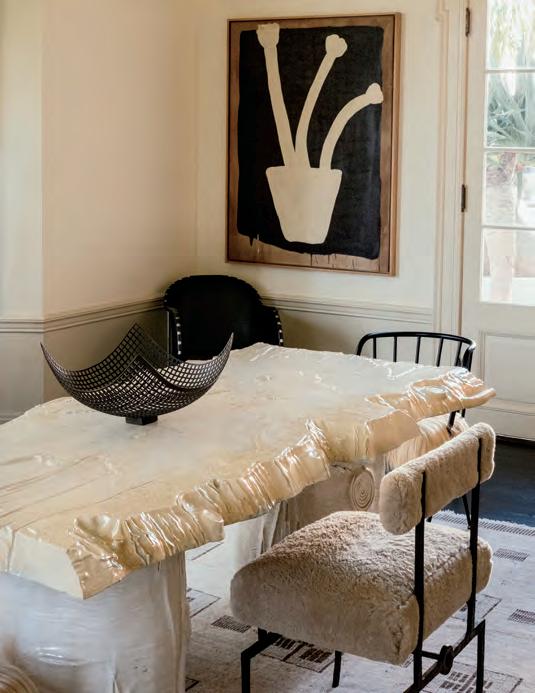
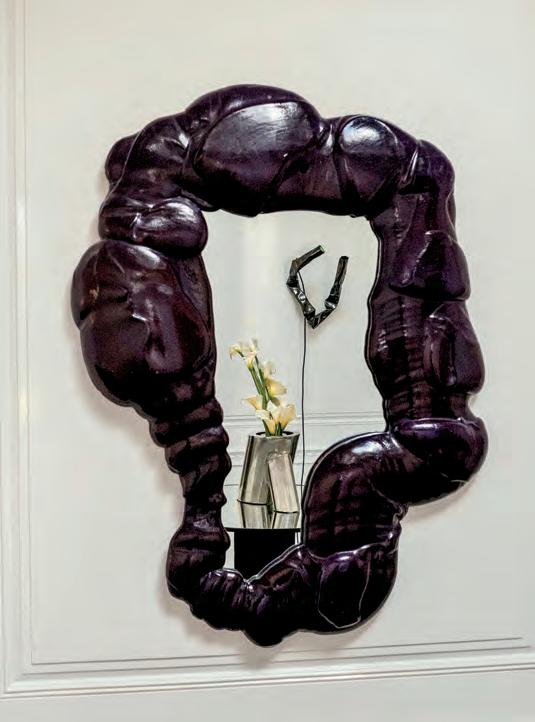
for reasons of privacy –”it’s like baking a cake that you can’t eat!” she laughs) and the very famous, including Gwen Stefani and Cameron Diaz. Her own home is just as remarkable as those of her A-list clients. The sprawling, neoclassical-style property looks as if it could have been wrapped in crisp, white icing and boasts a pool house so stately most Brits would confuse it for the actual house. Its impressive lineage of Hollywood owners includes actors William Powell, Hobart Bosworth and the late James Bond film producer Albert Broccoli. “You can just feel the energy, it’s amazing,” she says of the place. She and Korzen bought the property from the Broccoli family in 2005 and sensitively remodernised, while adding a studio for Wearstler. Surprisingly for a designer so rooted in bold color, the walls are predominantly white, though she is ruminating on an overhaul of sorts. “I’m still figuring it out, but I’m ready for a change.” Is she prone to switching things up on a whim? “I’ll bring in new things I find, like an artwork or a room that has a different purpose, so there is some light evolving that happens, but for the most part it has stayed the same.” Her current favourite place to hang out is the dark panelled room in the centre of the house, where she settles down to watch movies with Crosby, aged two. Also a mother to two boys in their early twenties, she has said how becoming a parent again is ‘the most beautiful part of my life’. Child-proofing, however, isn’t in her vocabulary. “We’re with him all the time and I did it with the [older] boys. I want them
to know, “Don’t pick up this ceramic bowl and play around with it,” and so they learn to appreciate things early on. It’s worked with all of them,” she says.
At this stage of life and with a toddler in the mix, it would be understandable if Wearstler were to gently wind things down. Instead, on top of the 5.30am daily workouts, she has added a Wearstler World Substack to her to-do list, where fangirls can stay abreast with what’s going on her face (Augustinus Bader) and on her feet (Louis Vuitton’s Legacy slingbacks being a most recent purchase).
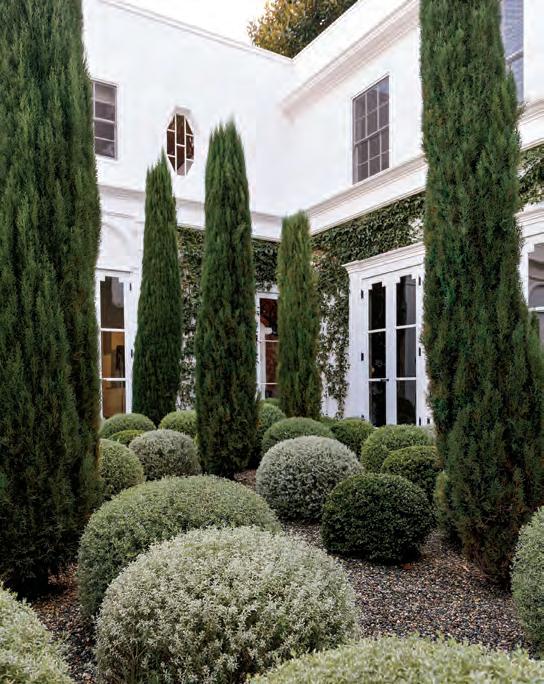
‘You know I have an amazing team in my studio – we’re 65 people,’ she caveats. ‘Substack is this fun outlet to share everything that I’m learning and how I’m evolving and anything lifestyle. It’s been really fun.’
She giggles when I call her a grafter; it’s not in the American lexicon and, besides, the American way is to call things out plainly. Having a strong work ethic, just like being a homebody, isn’t something to be ashamed of. “I have a passion and I’m so fortunate that I found my passion and I’ve always loved working hard,” she says. Curiosity drives her. “There’s always a sense of discovery and collaborative effort that I love about working with different clients. You continue to evolve and I’m always about evolving, both in my personal life and business.”
Opposite page: Juxtaposing forms, textures and materials in unexpected ways is Wearstler’s trademark – as seen in this room
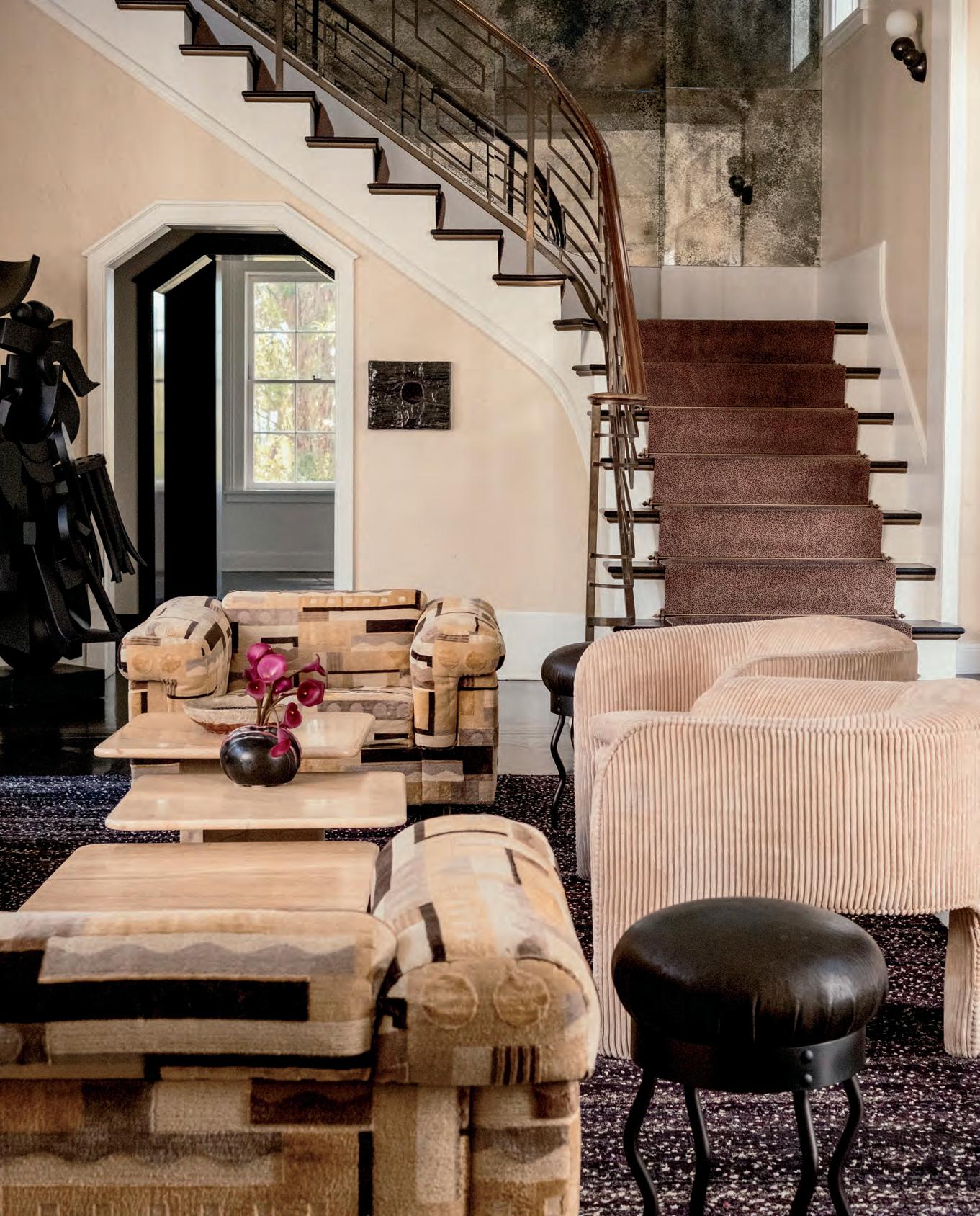
Bottega Veneta , the quiet virtuoso of Italian fashion, has once again woven the past into the present with the revival of an archival gem: meet the Campana. A generous tote with just the right amount of attitude, this supple masterpiece traces its DNA back to 2004—an era of minimalism, sleek silhouettes, and the first whispers of what would become a 21st-century icon.
At the heart of Campana lies a 50-year-old revolution: the Intrecciato weave, introduced by Bottega Veneta in 1975. What began as an artisanal necessity—woven leather strips (fettucce, if you’re fancy) reinforcing delicate skins—evolved into a visual signature as unmistakable as any monogram, minus the name-dropping. And when Lauren Hutton nonchalantly clutched hers in American Gigolo, fashion took note: subtle is the new statement.
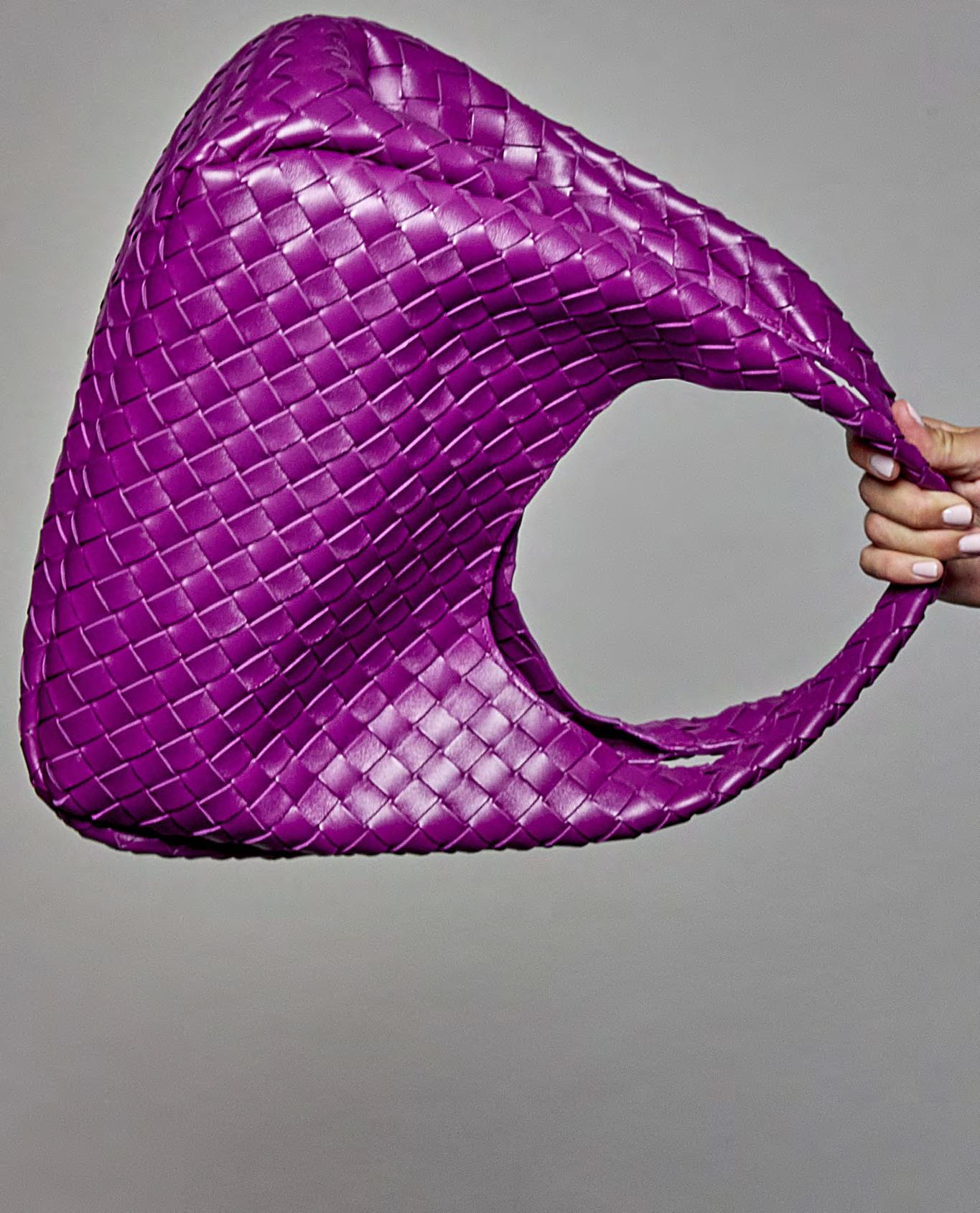
Now, Campana arrives not to shout, but to seduce. With 15mm fettucce—slightly wider, infinitely softer—the bag drapes like a whispered secret. The diagonal weave dances across premium nappa leather, offering an almost liquid tactility, while its unlined interior bares it all, celebrating the craftsmanship on both sides of the seams.
Two handles. Rounded form. Roomy enough for your life, chic enough to edit it. A flat zipped pocket in smooth leather offers a nod to modern utility, while a magnetic closure with leather straps keeps things as secure as they are stylish.
The Campana doesn’t just carry your essentials—it carries the weight of tradition, the elegance of restraint, and the unmistakable soul of a house that’s never needed a logo to speak volumes.
Photography Jeffrey Westbrook
Words Joseph Errico
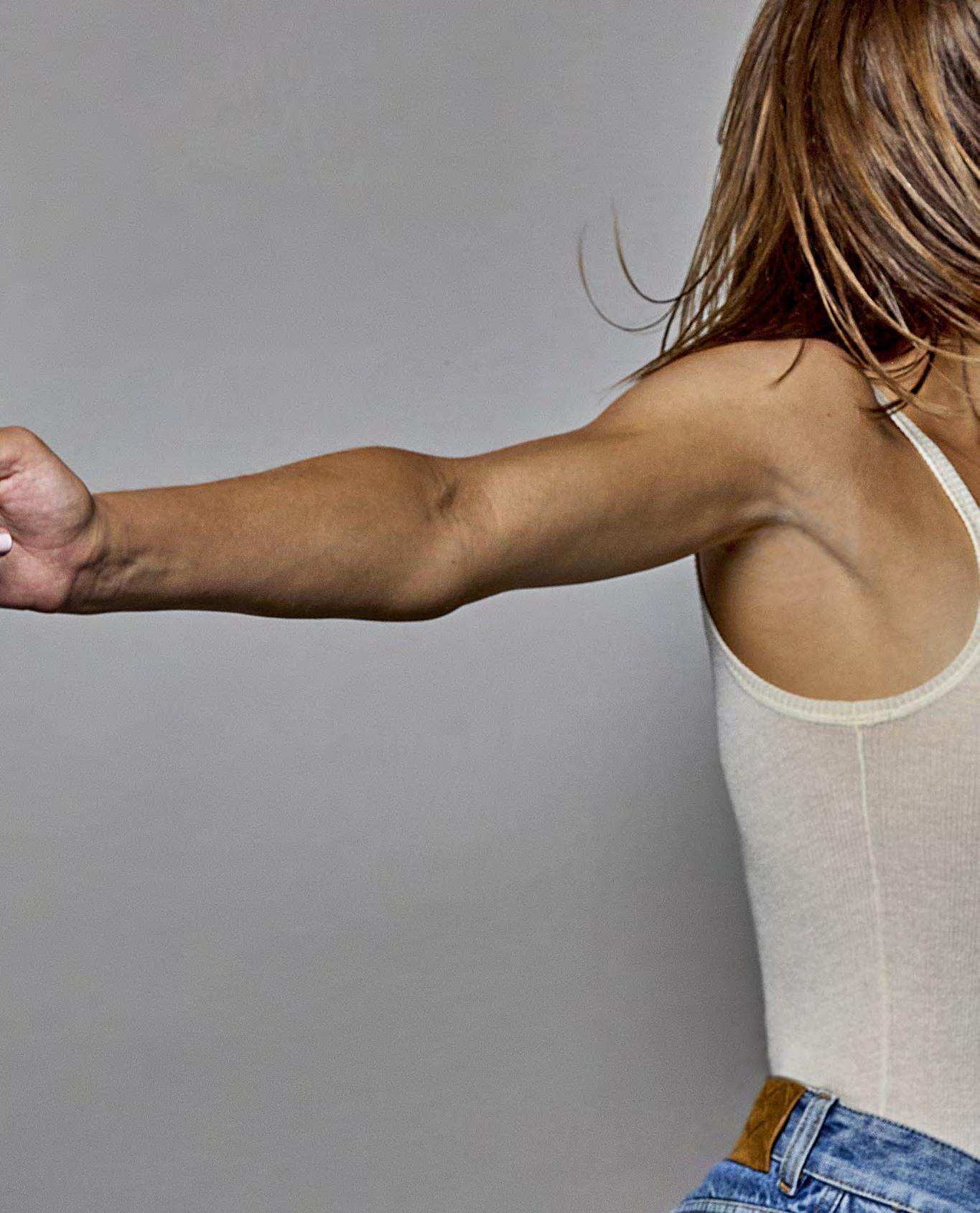
Campana bag, $4,700, and all clothing by Bottega Veneta, bottegaveneta.com.
Model: Anna Green @ Parts Models
